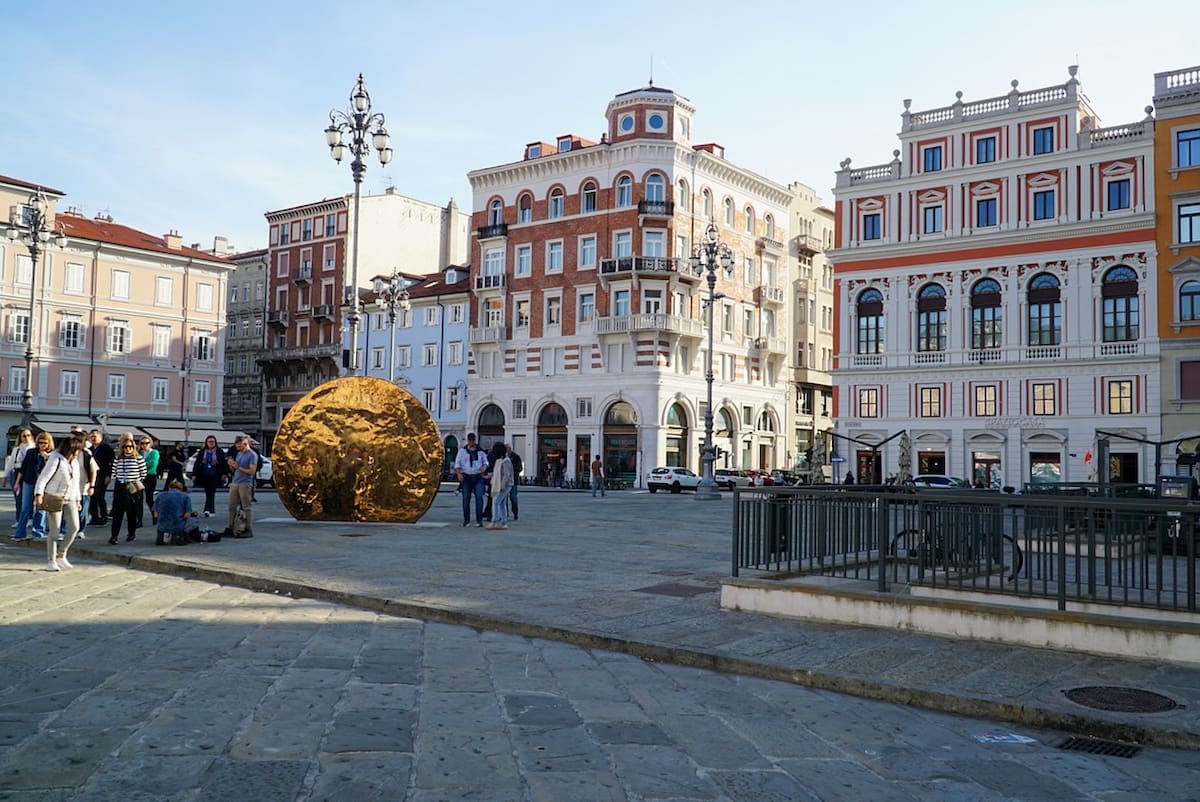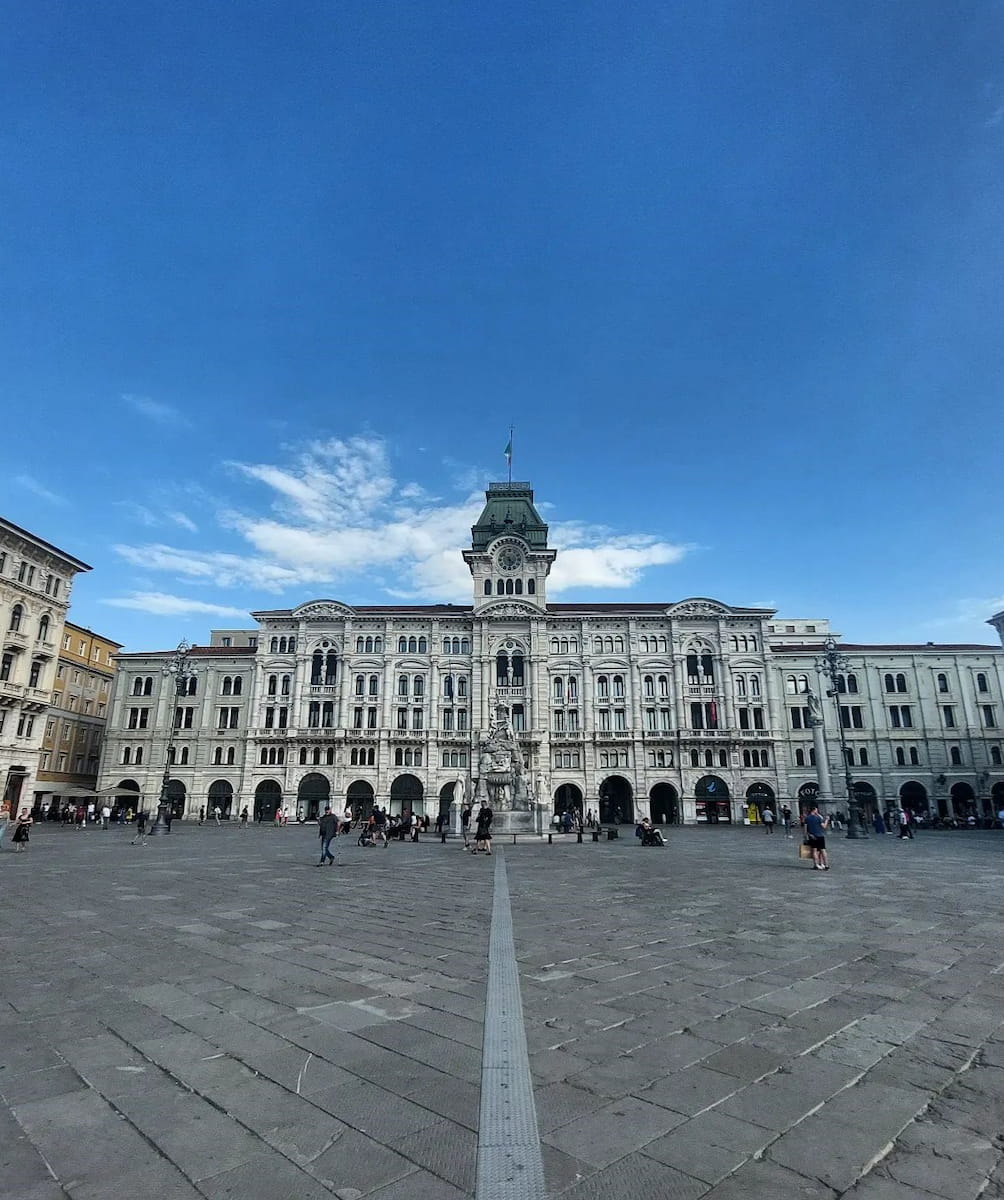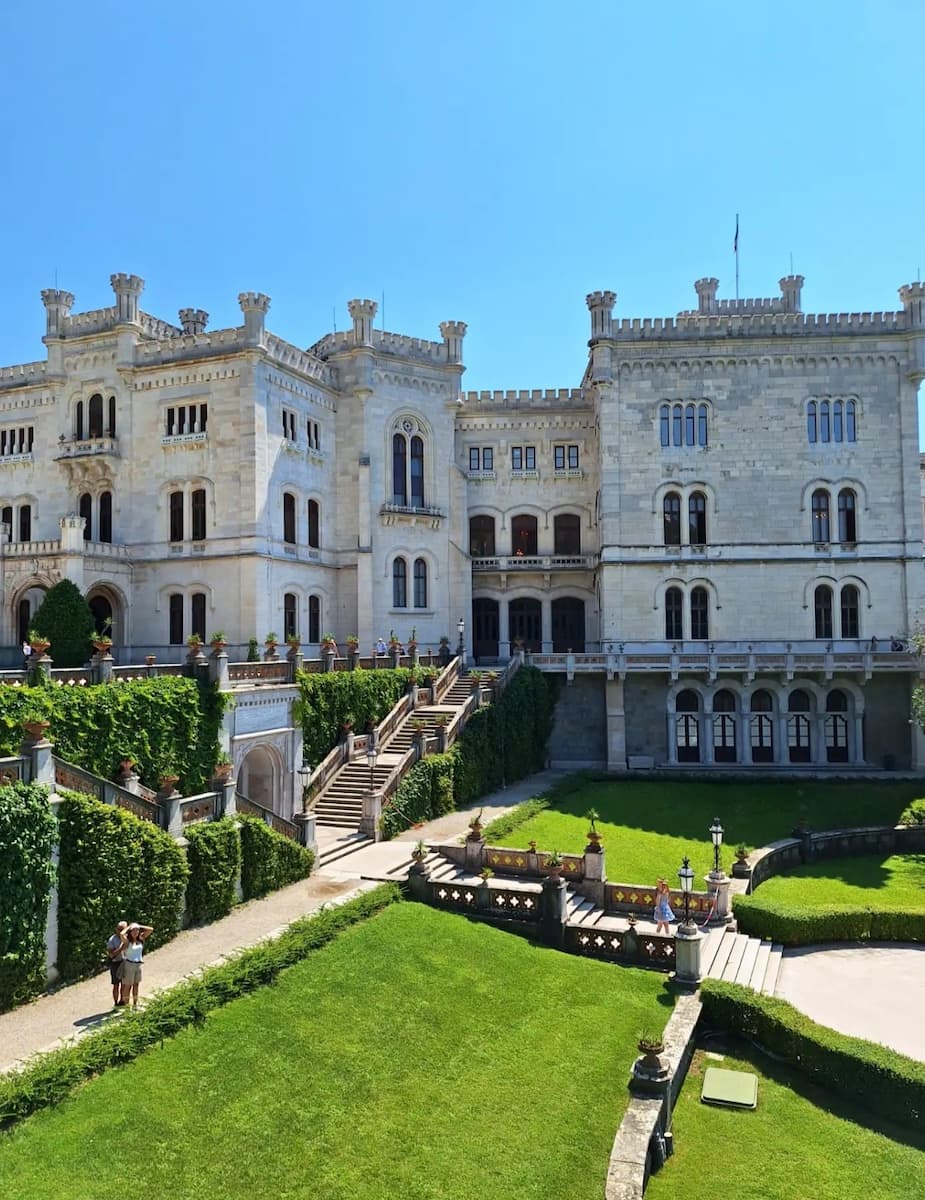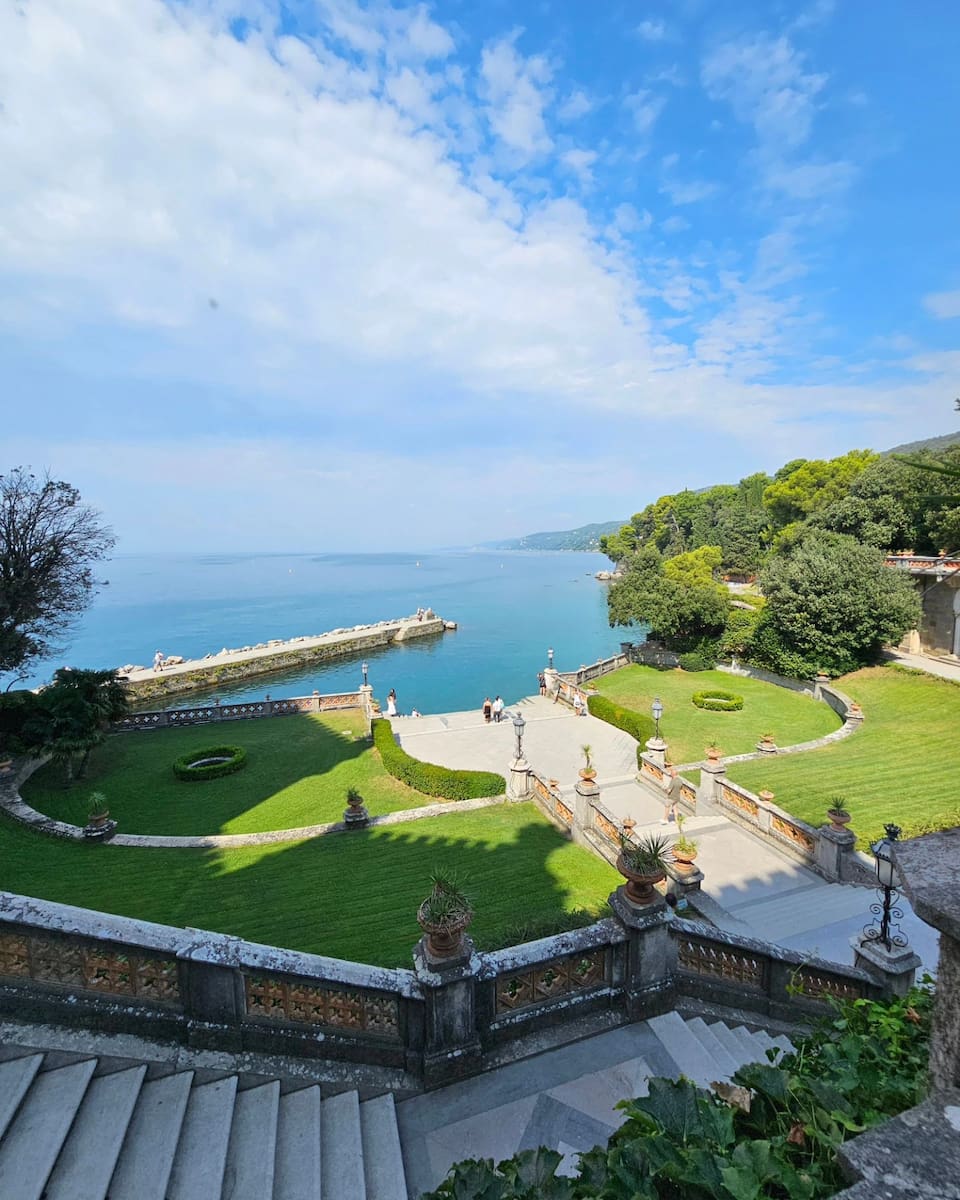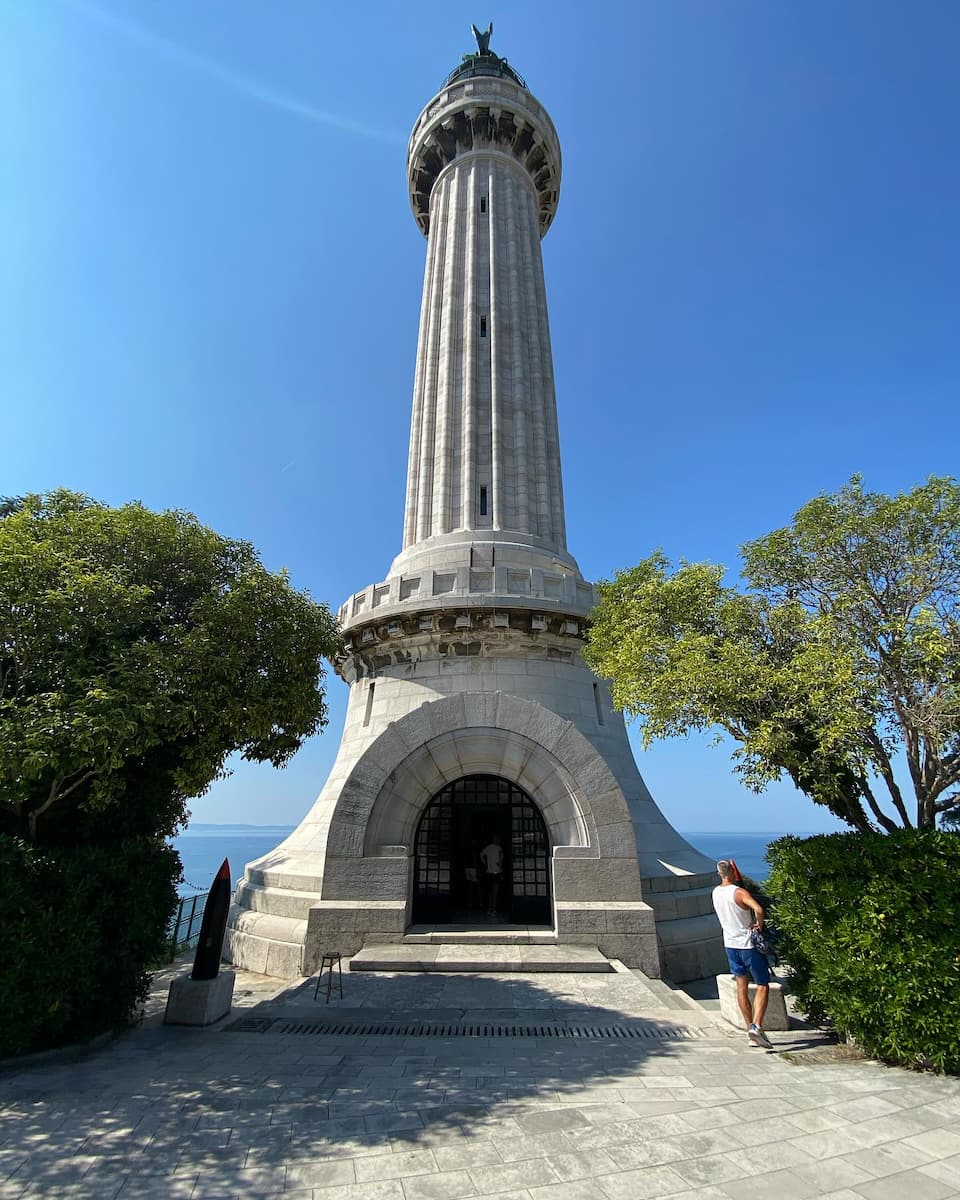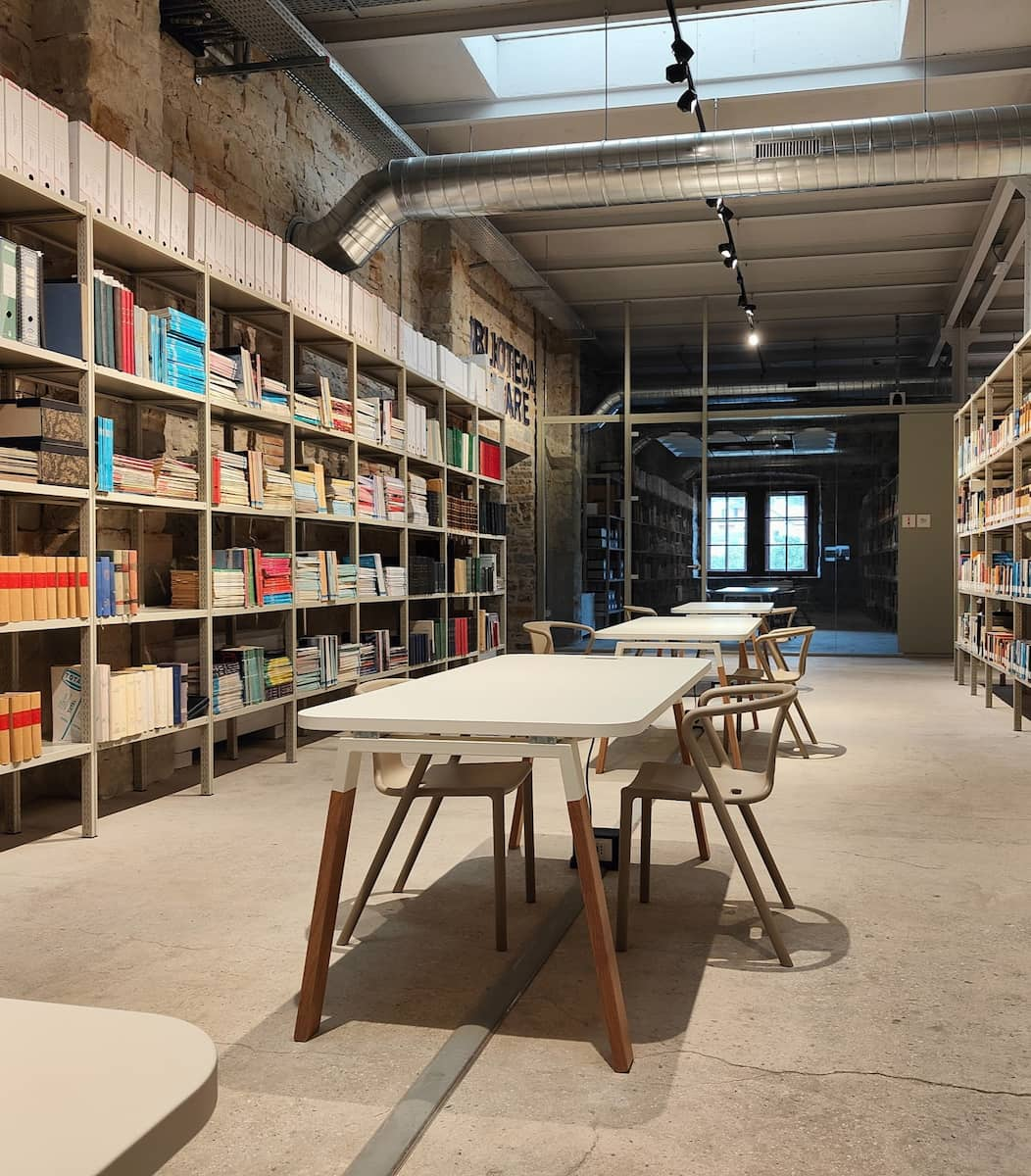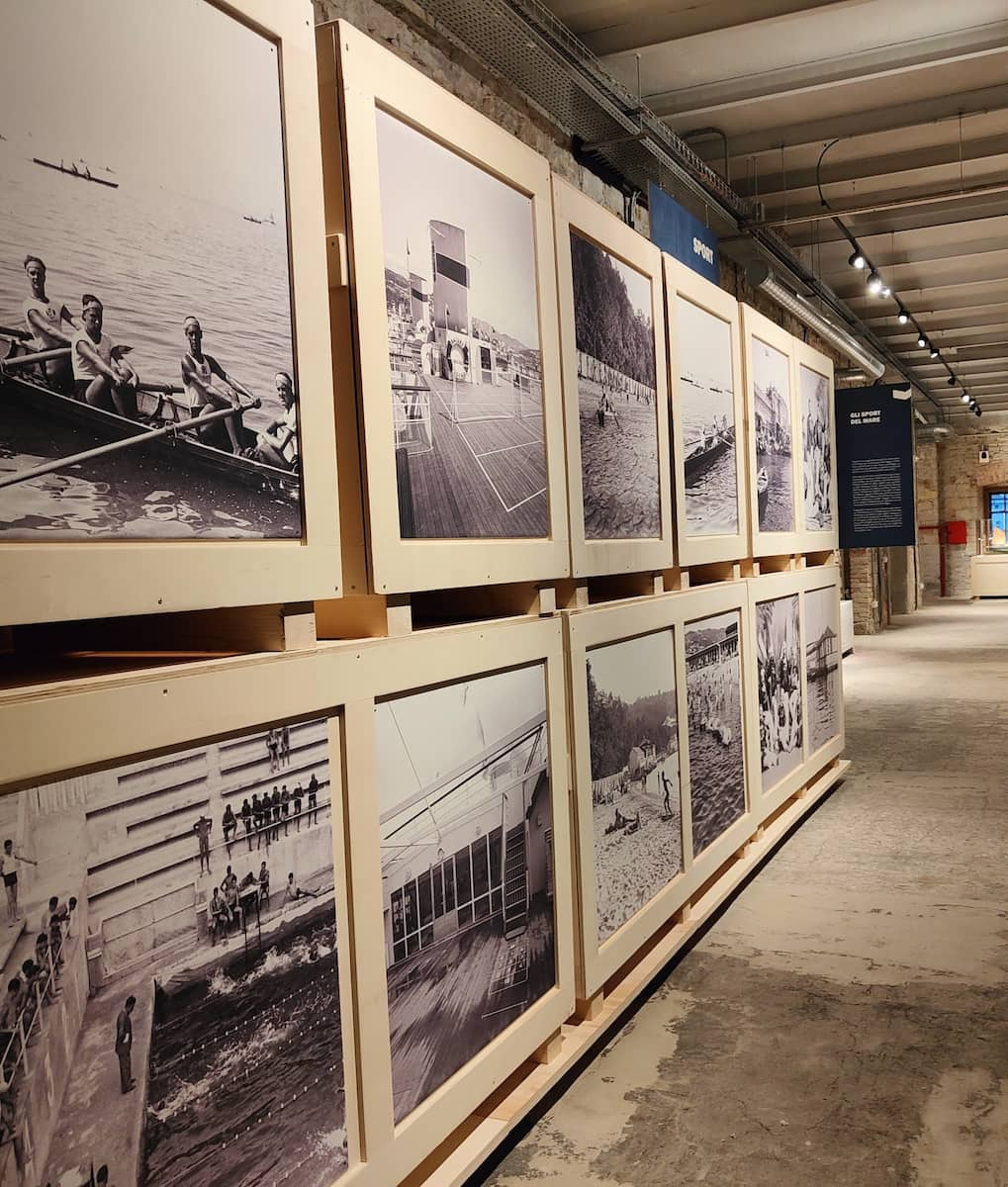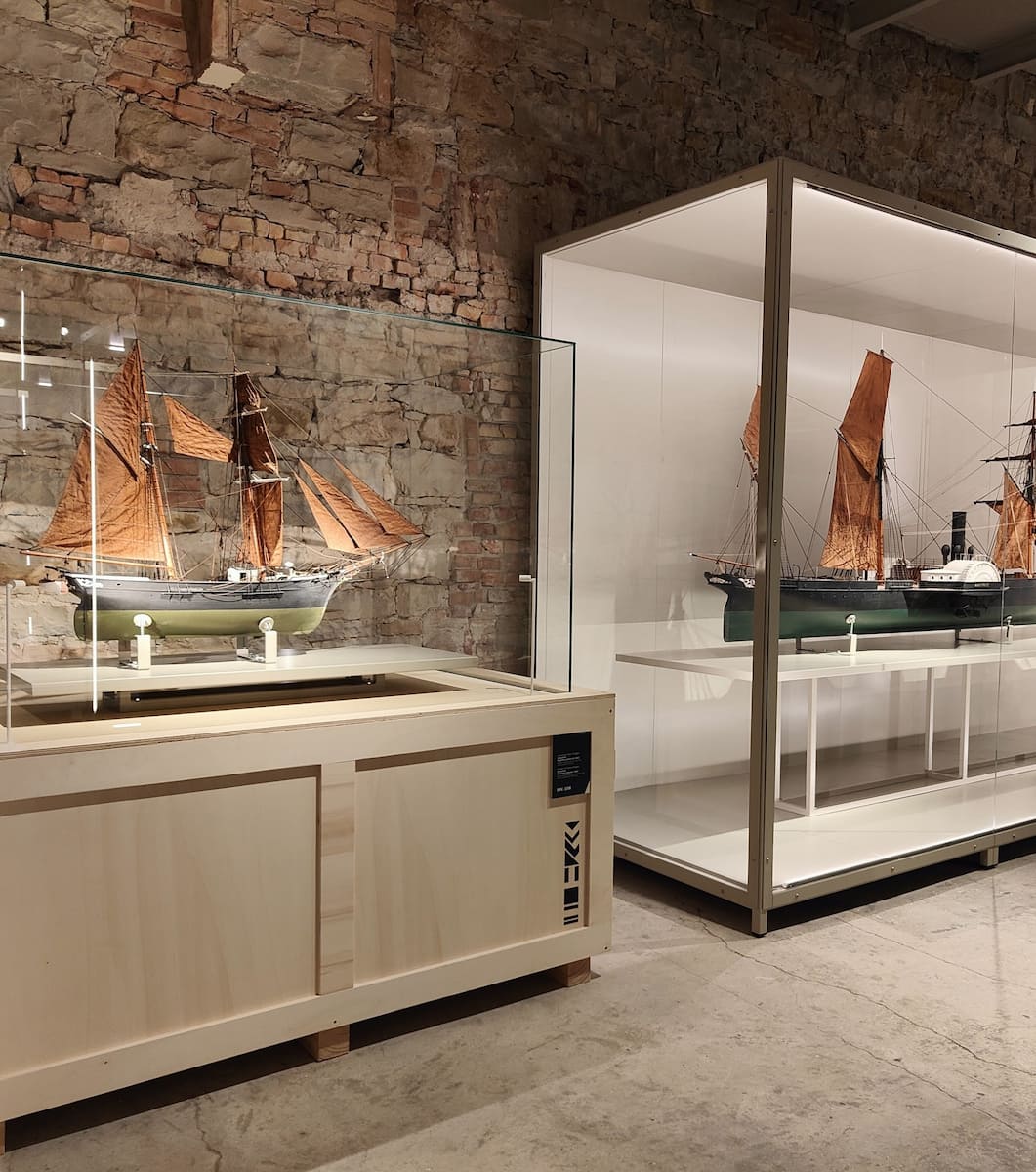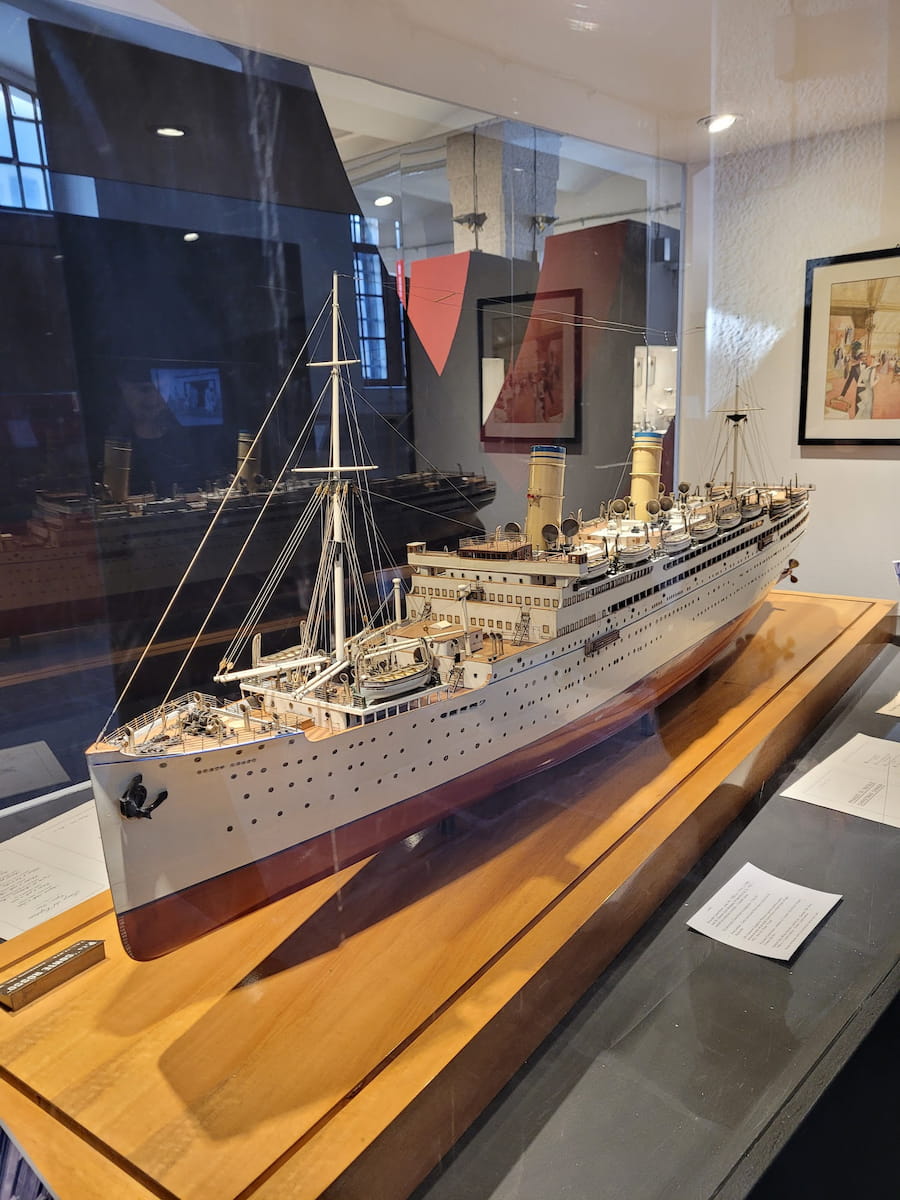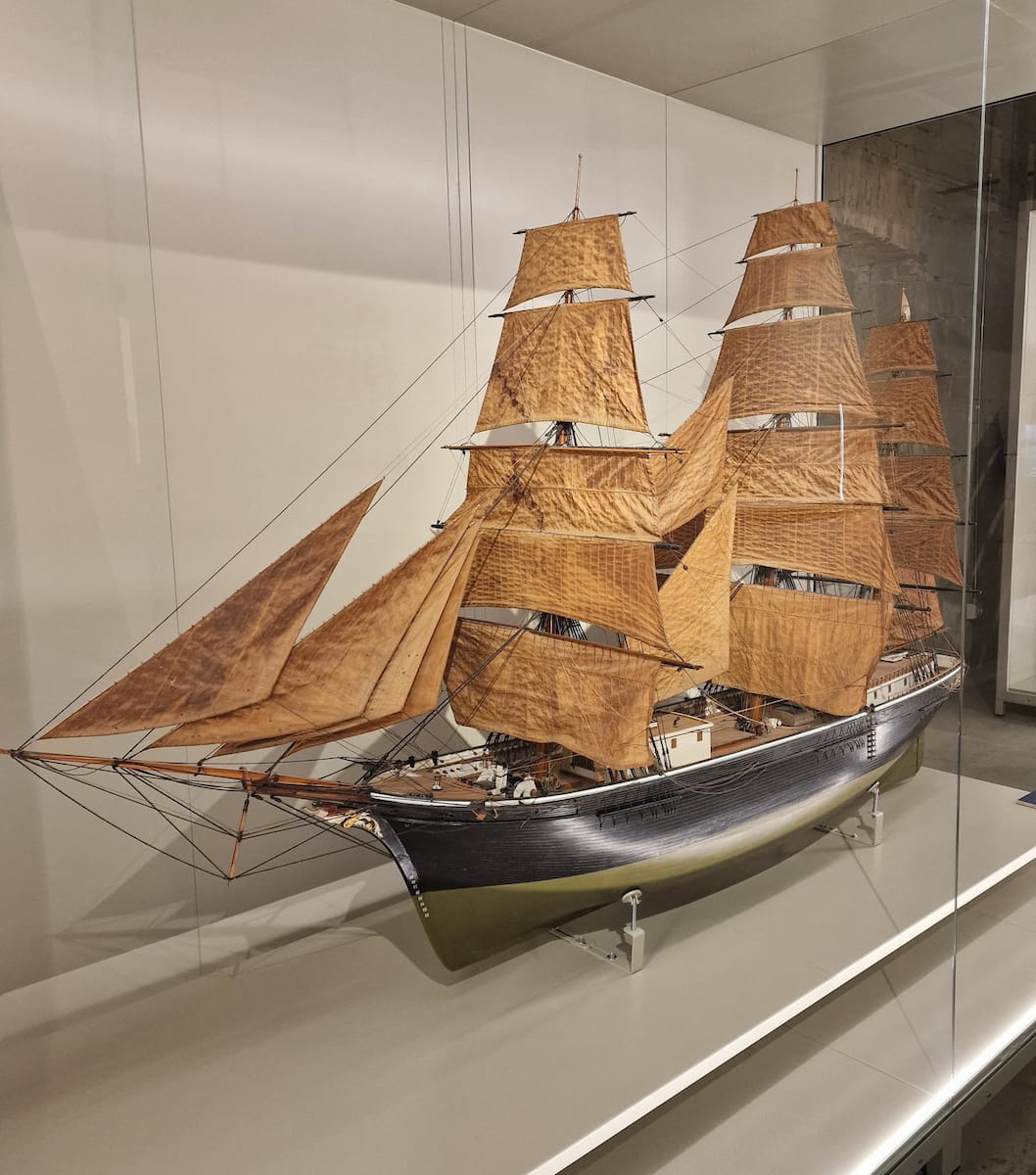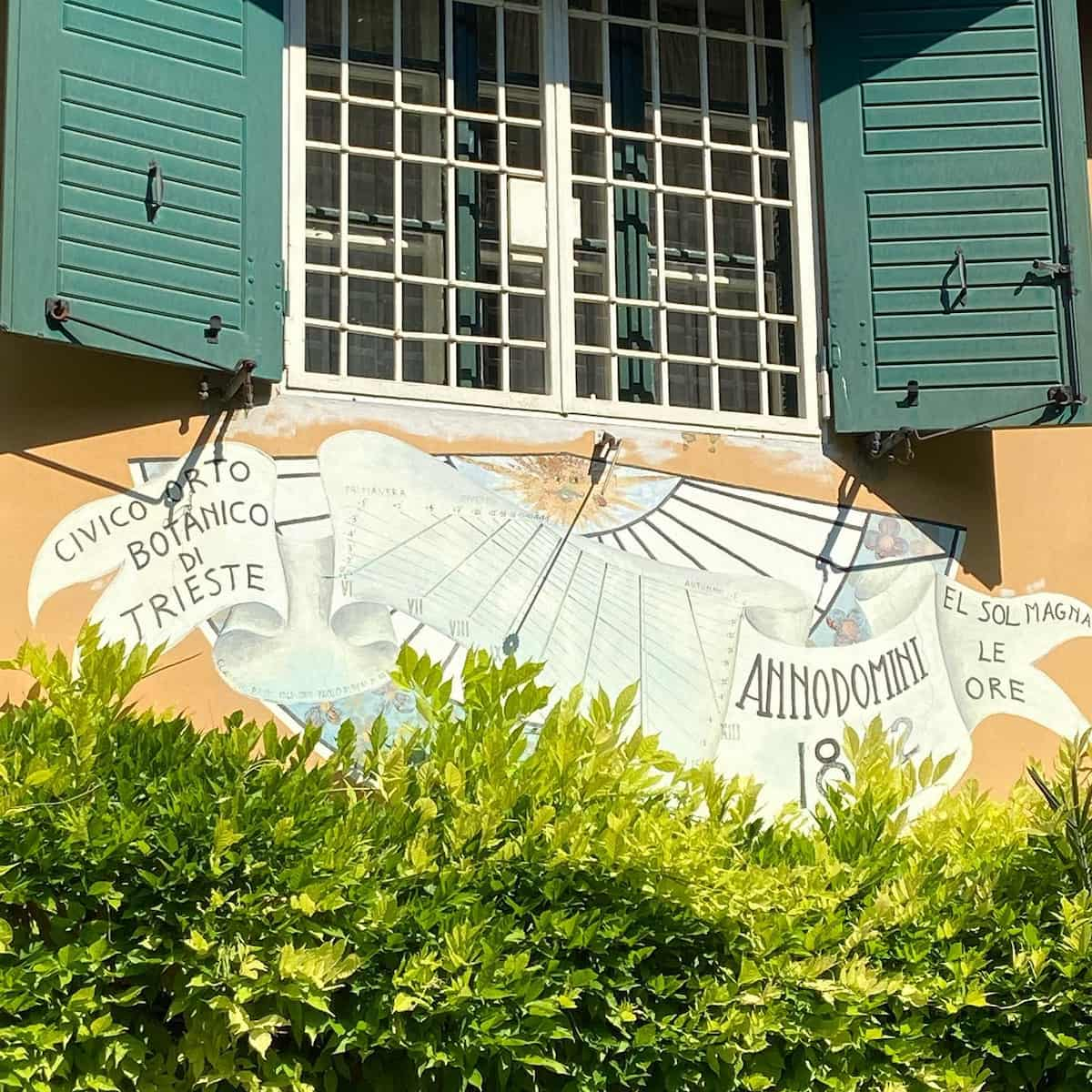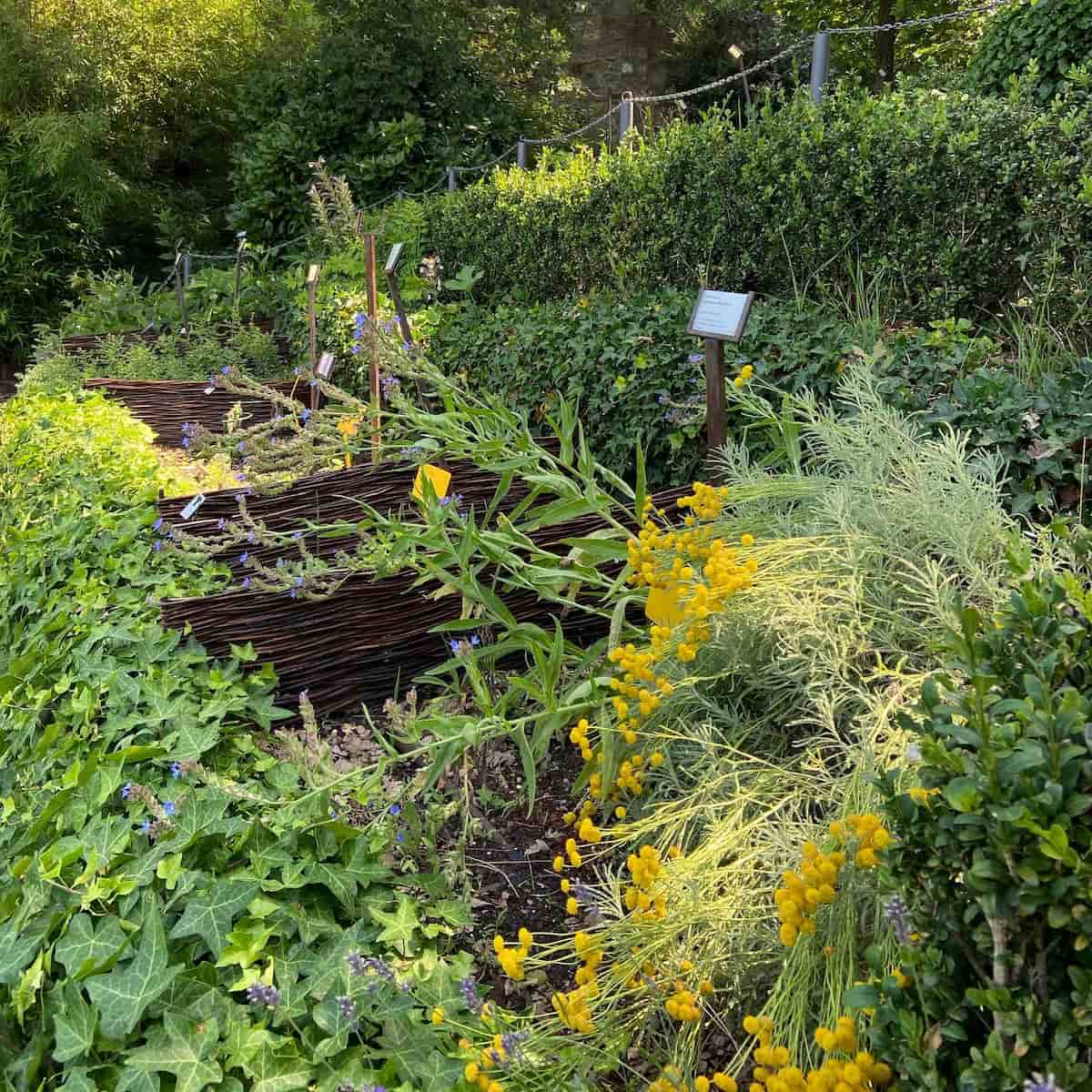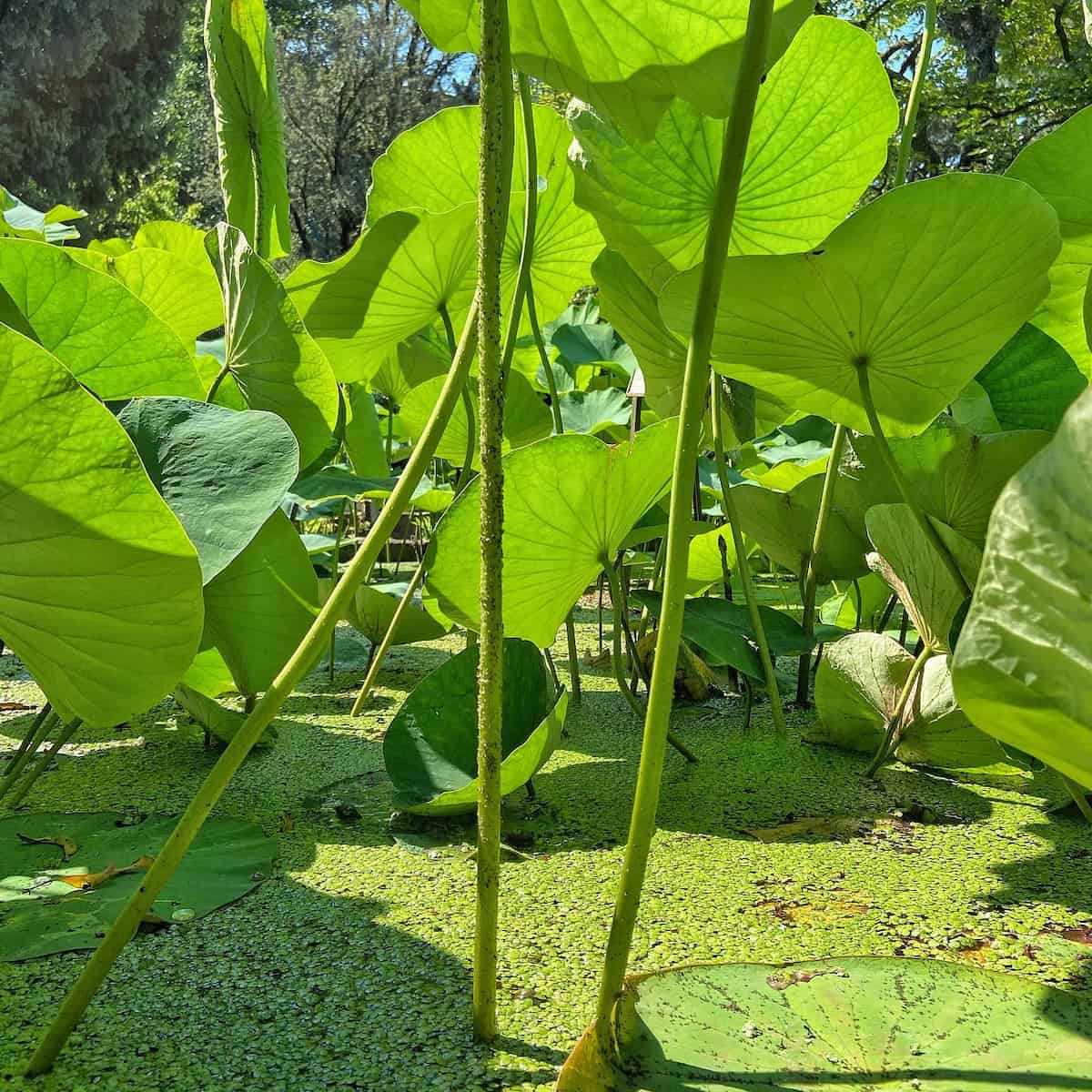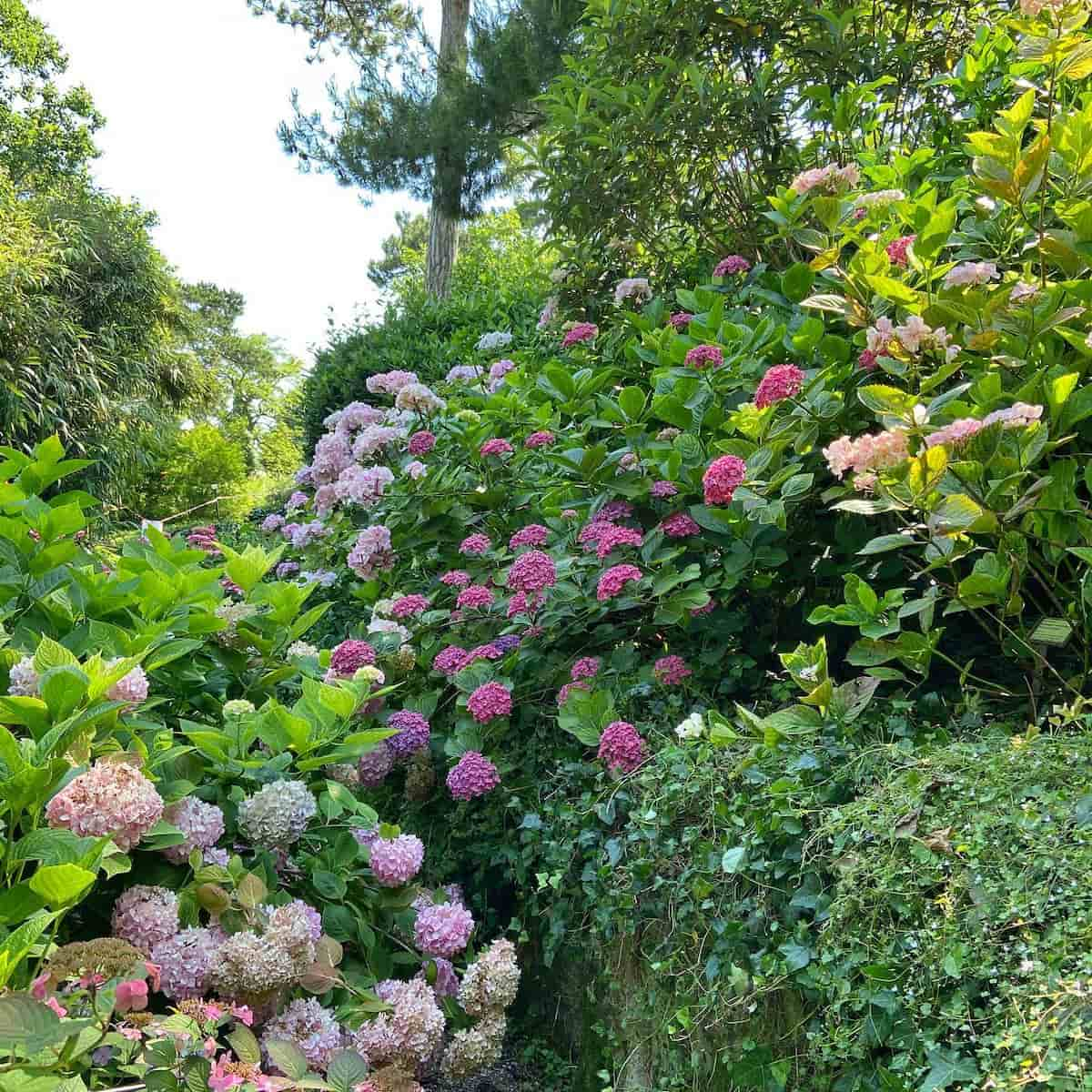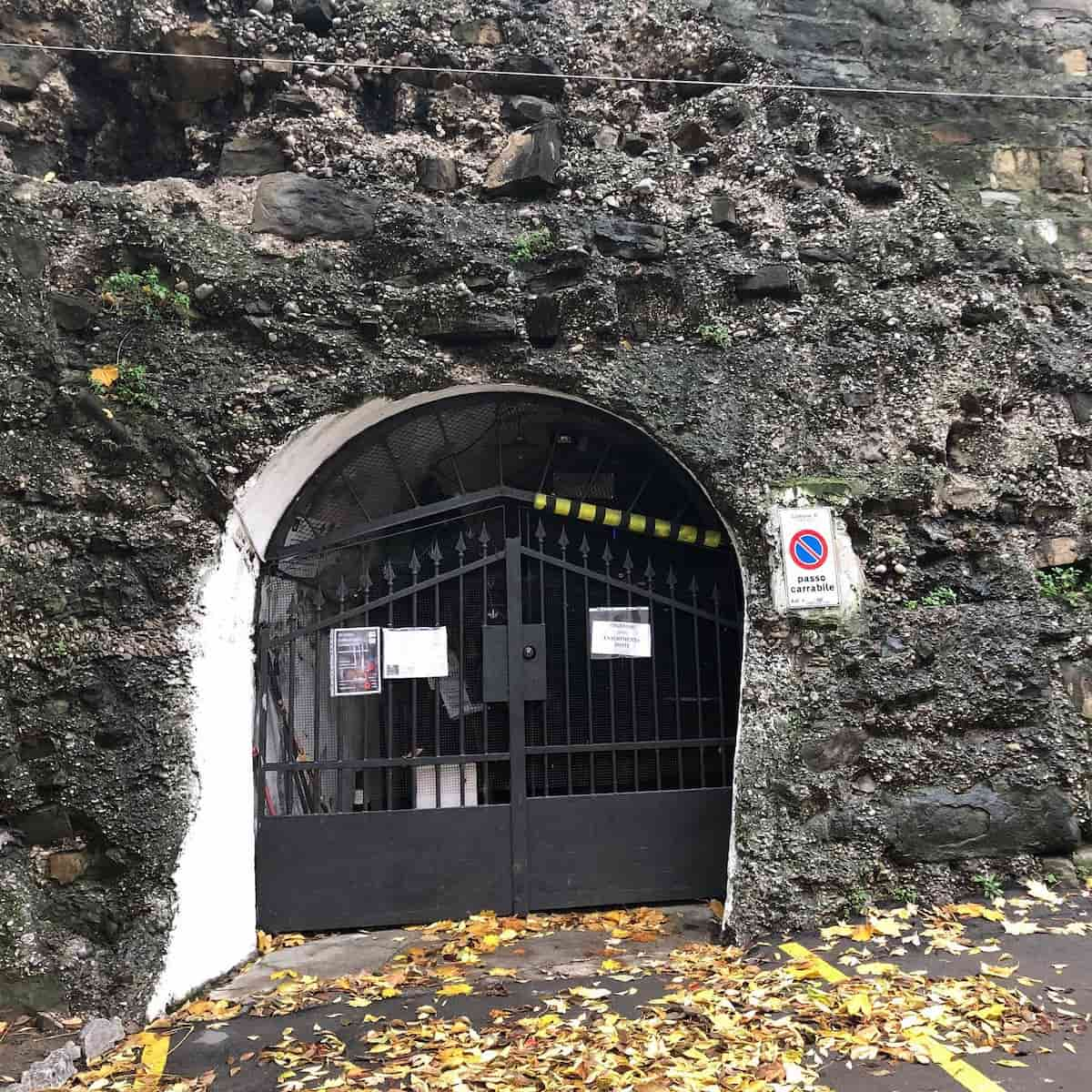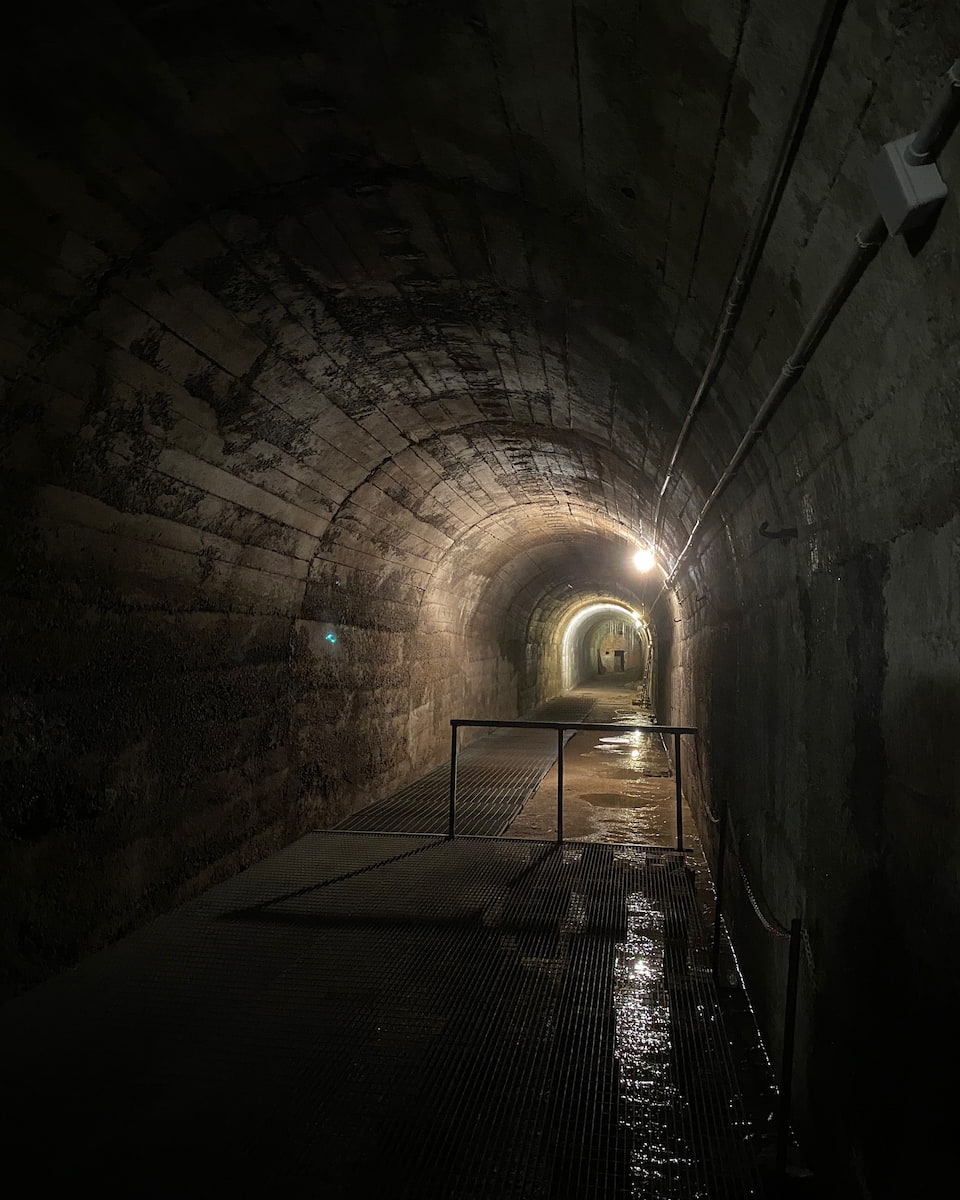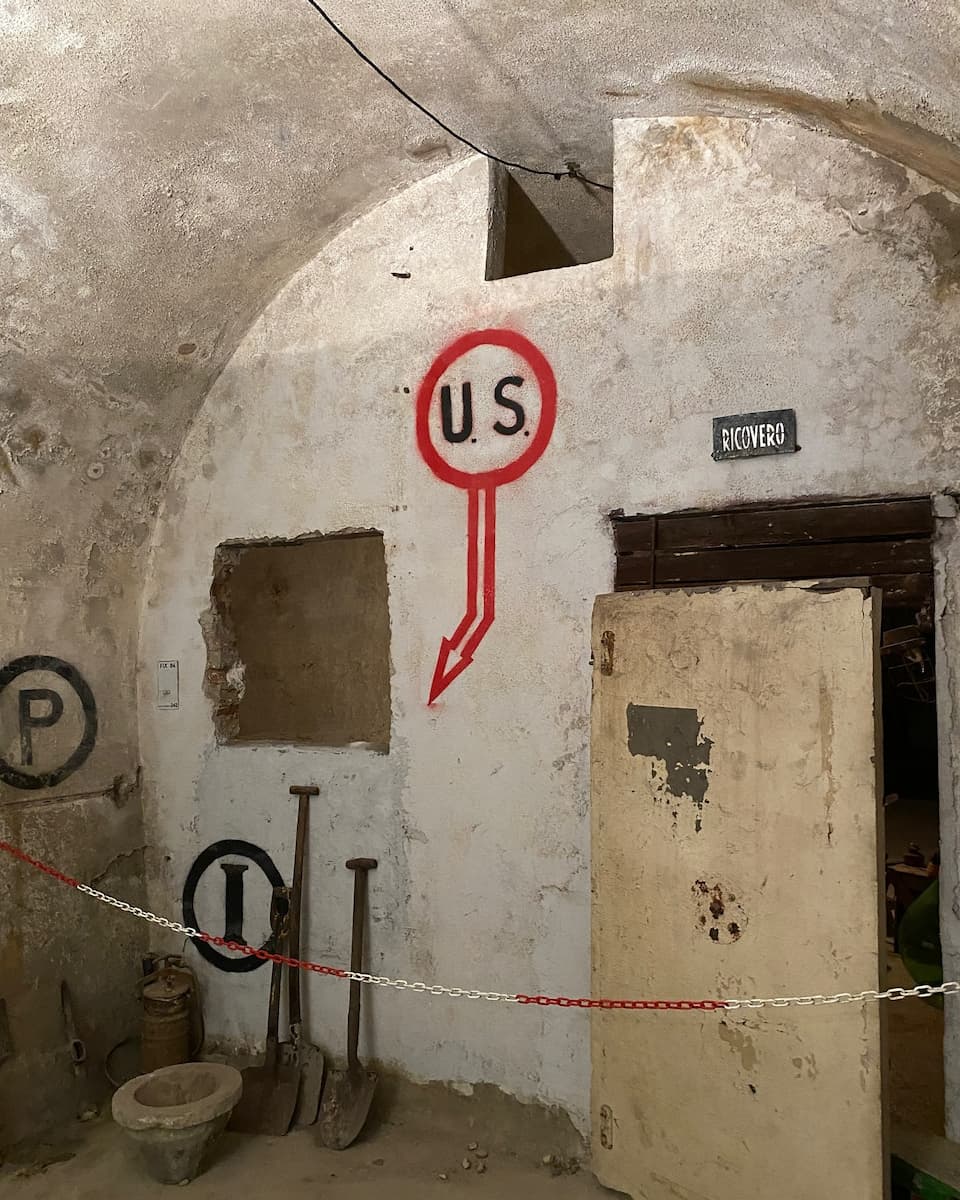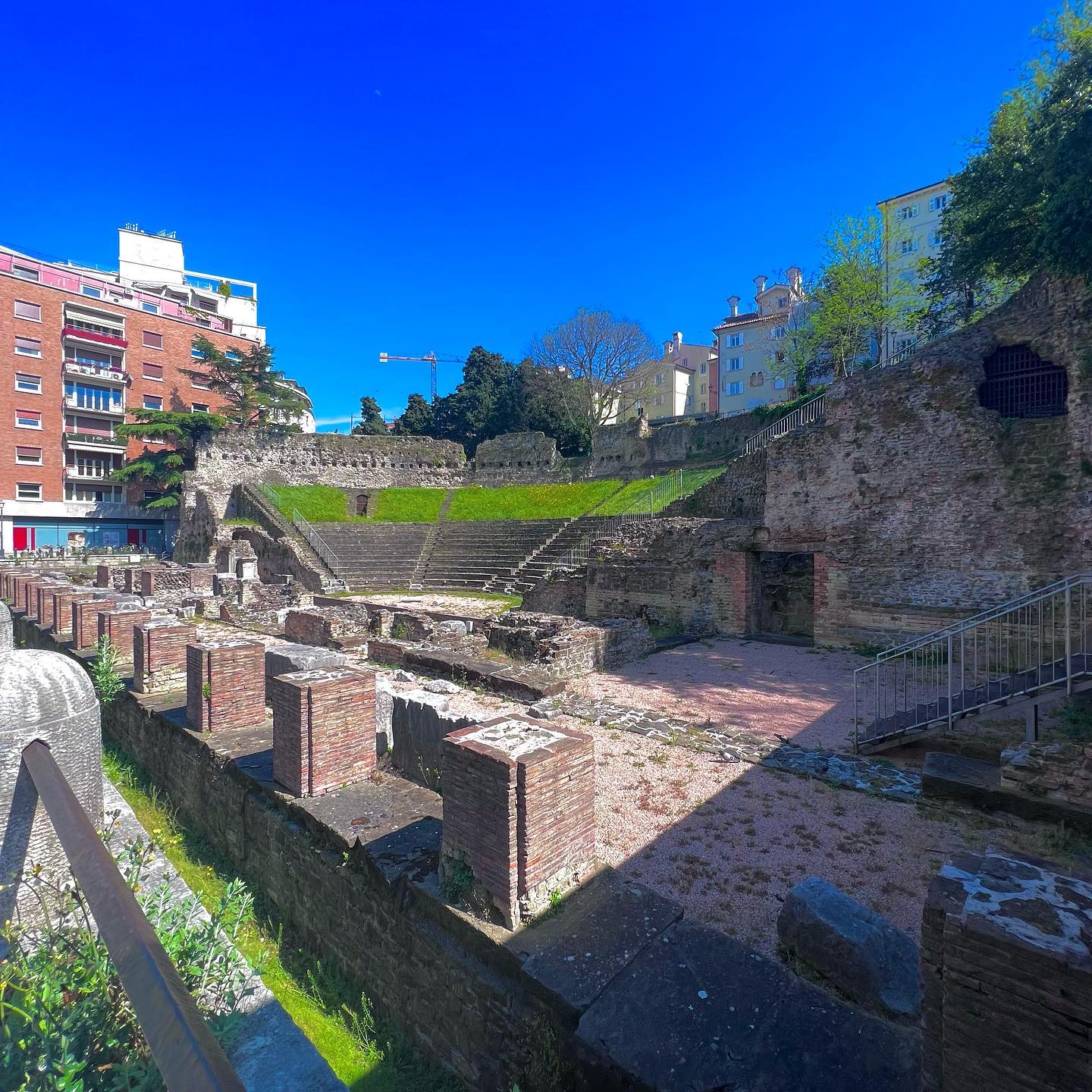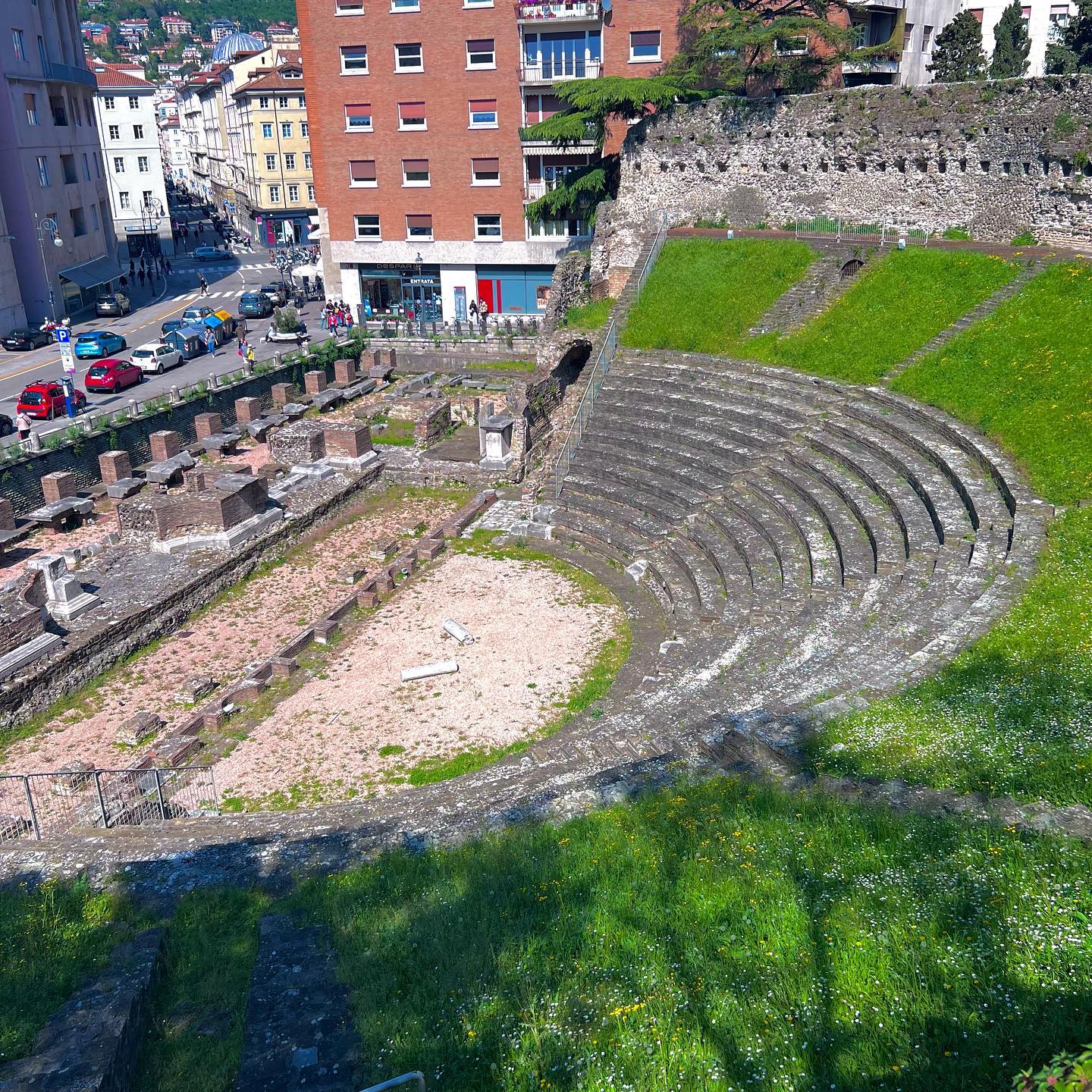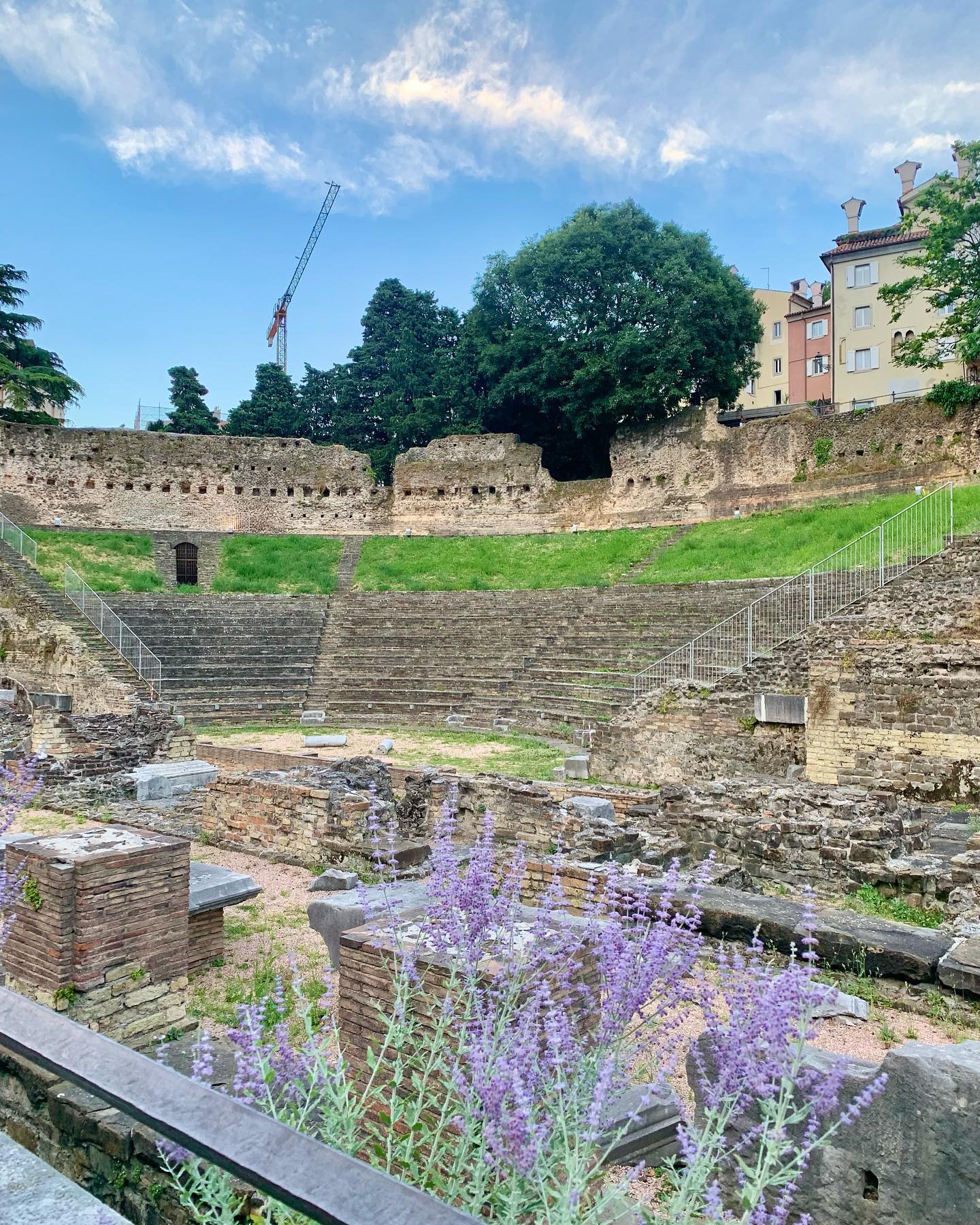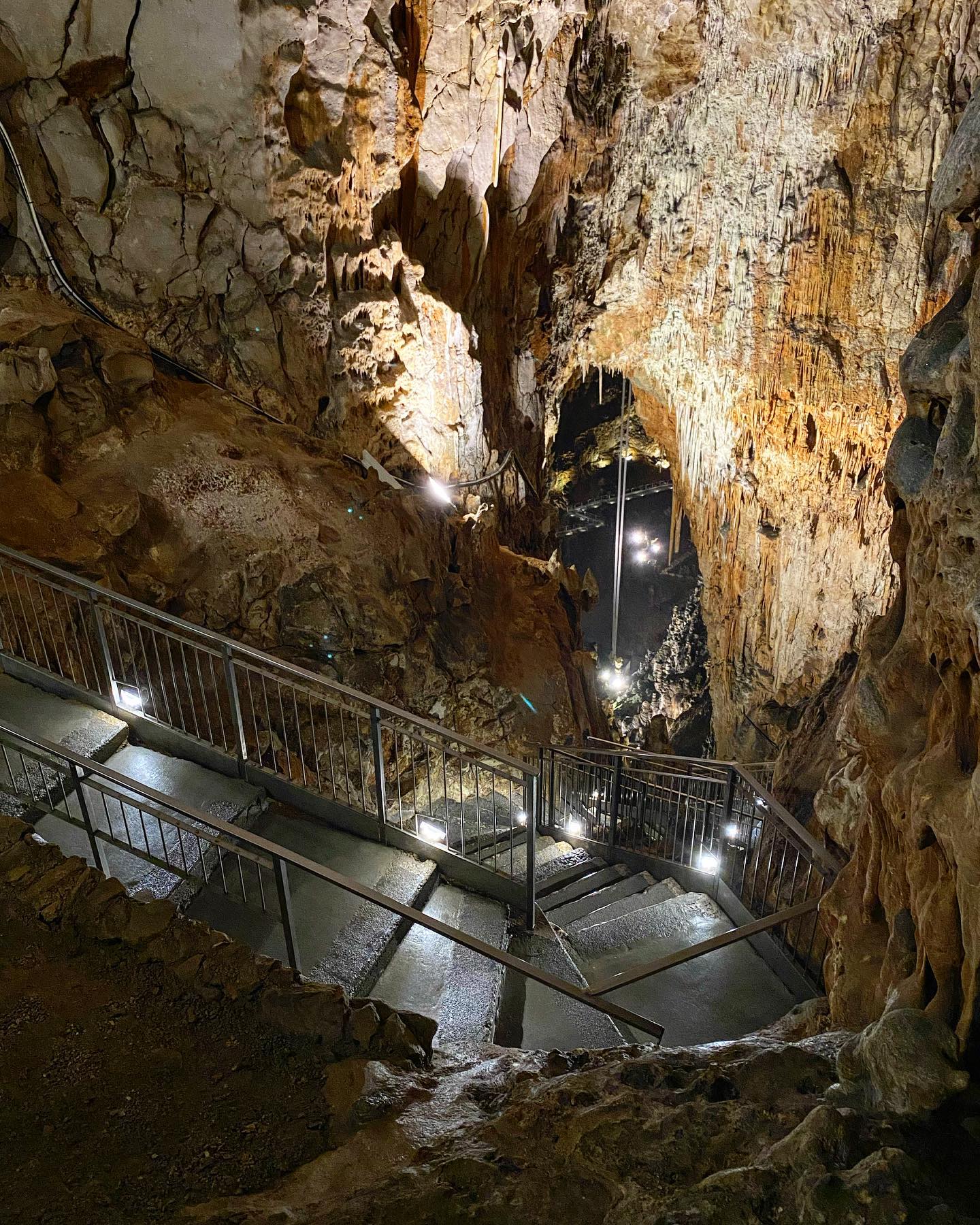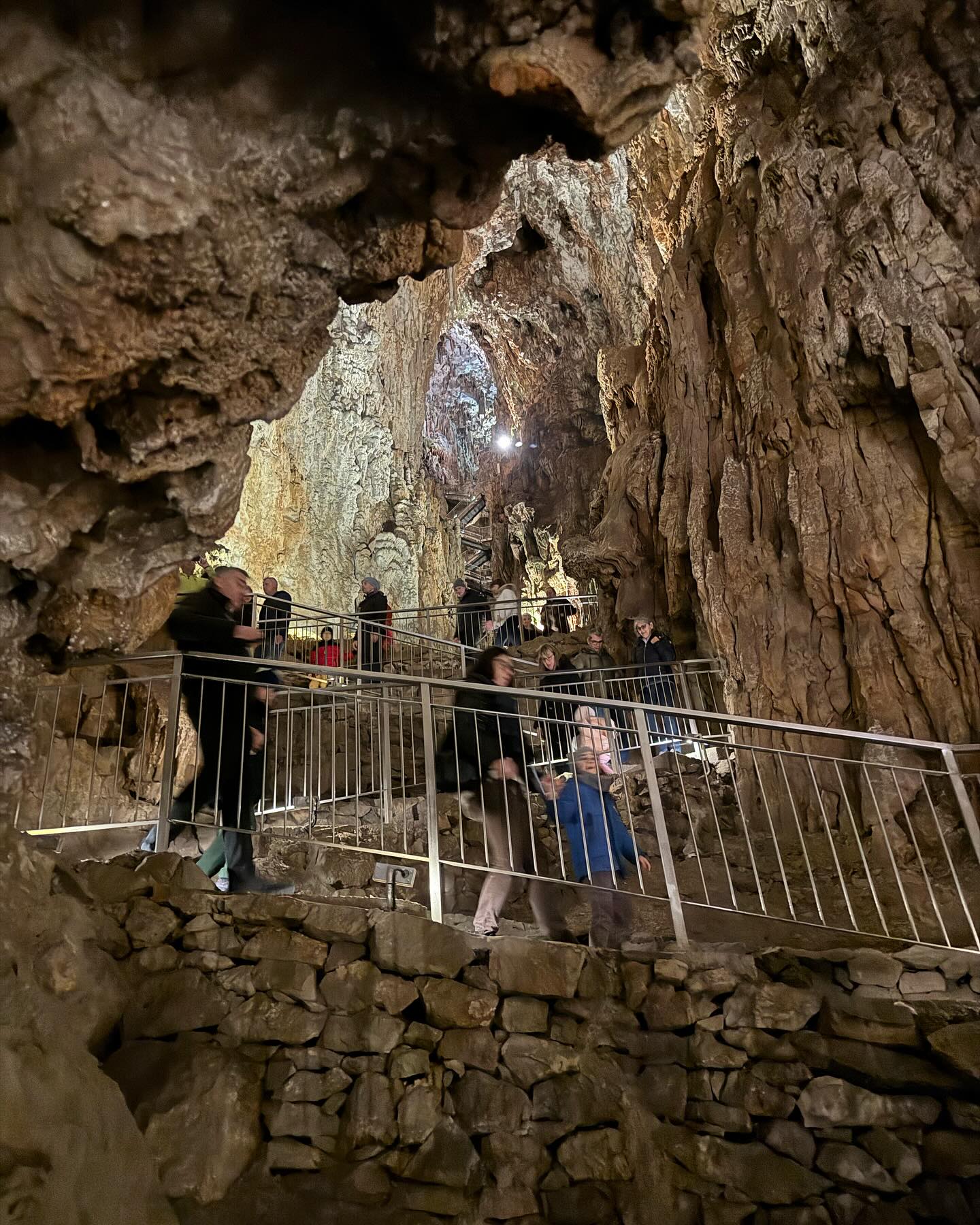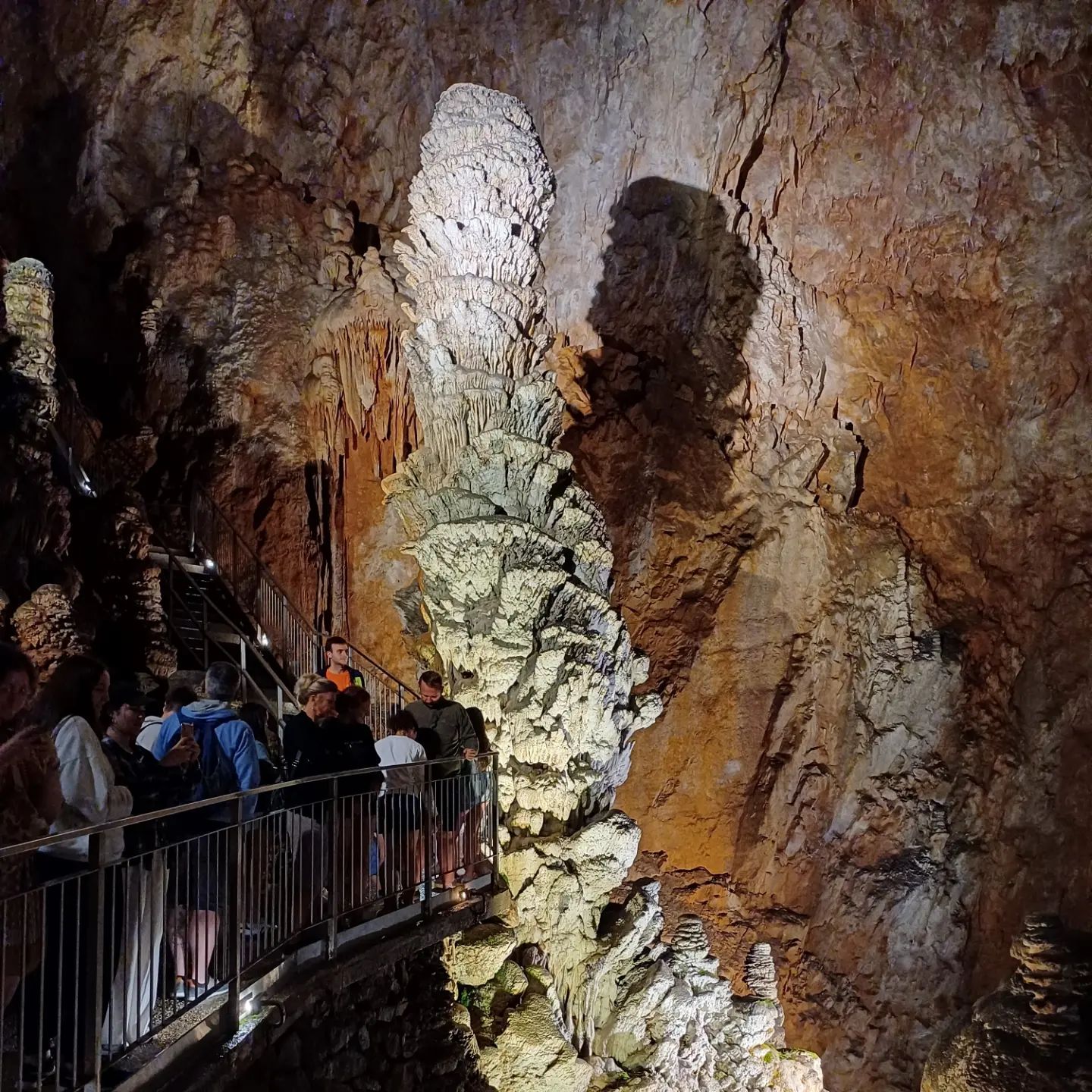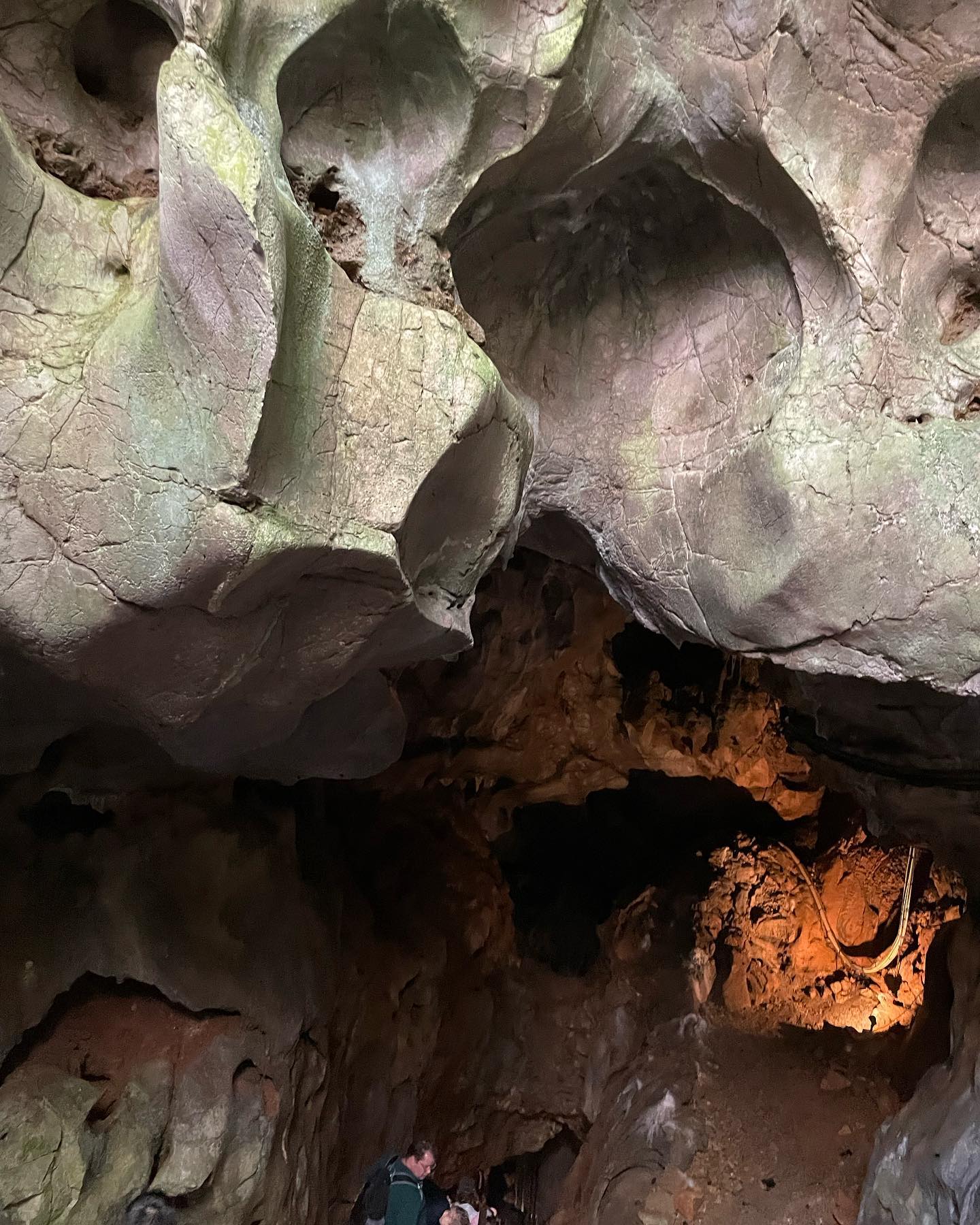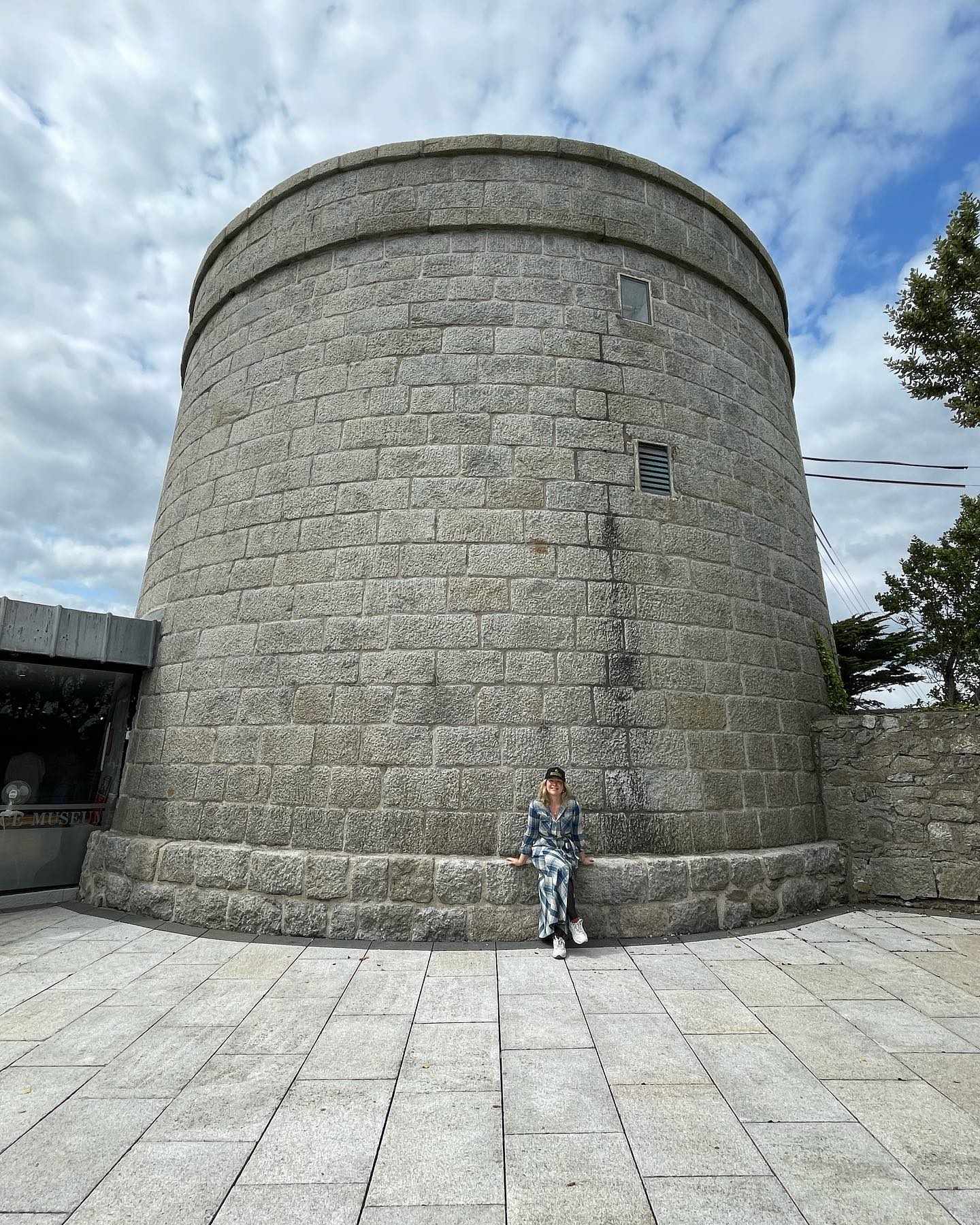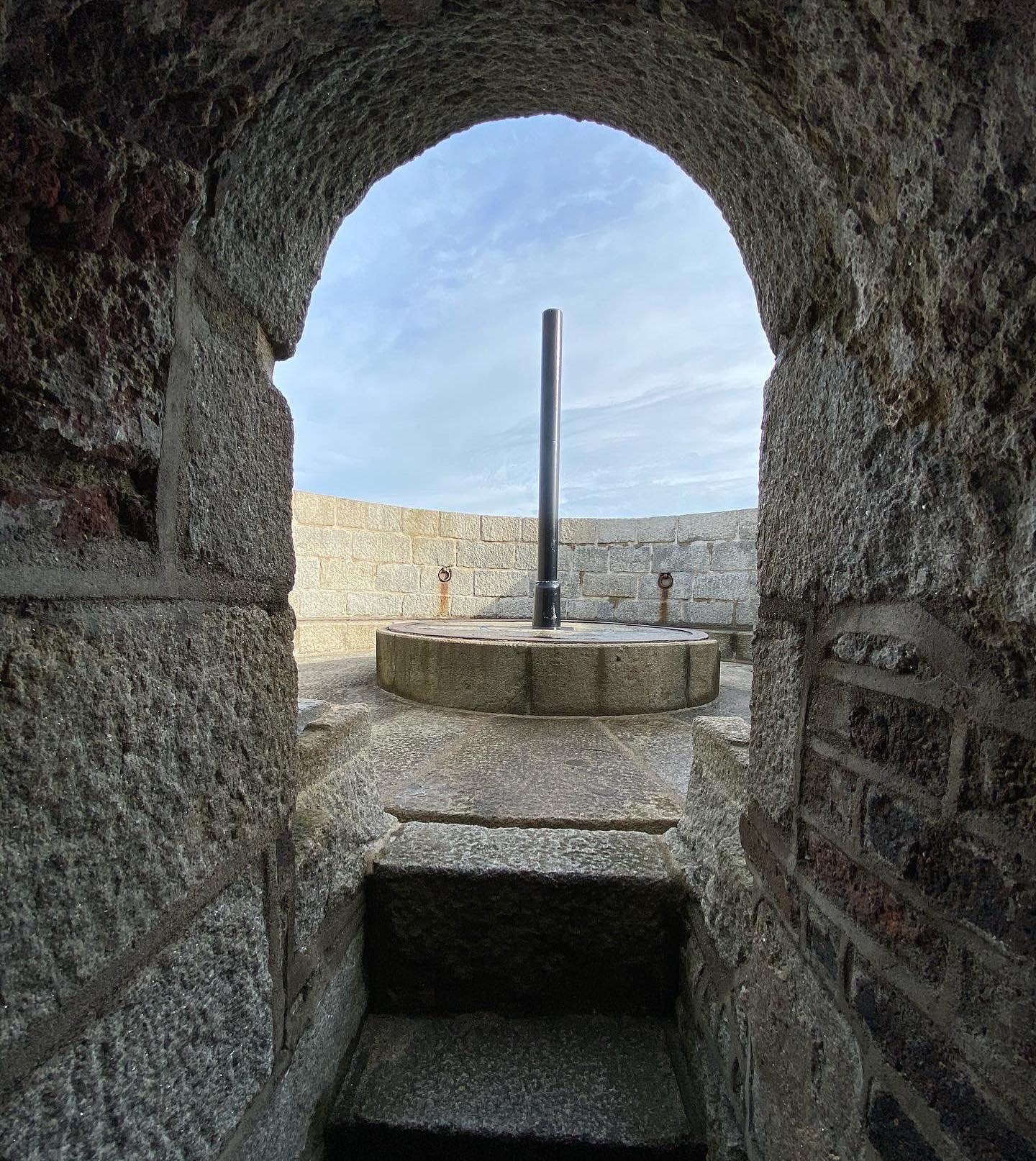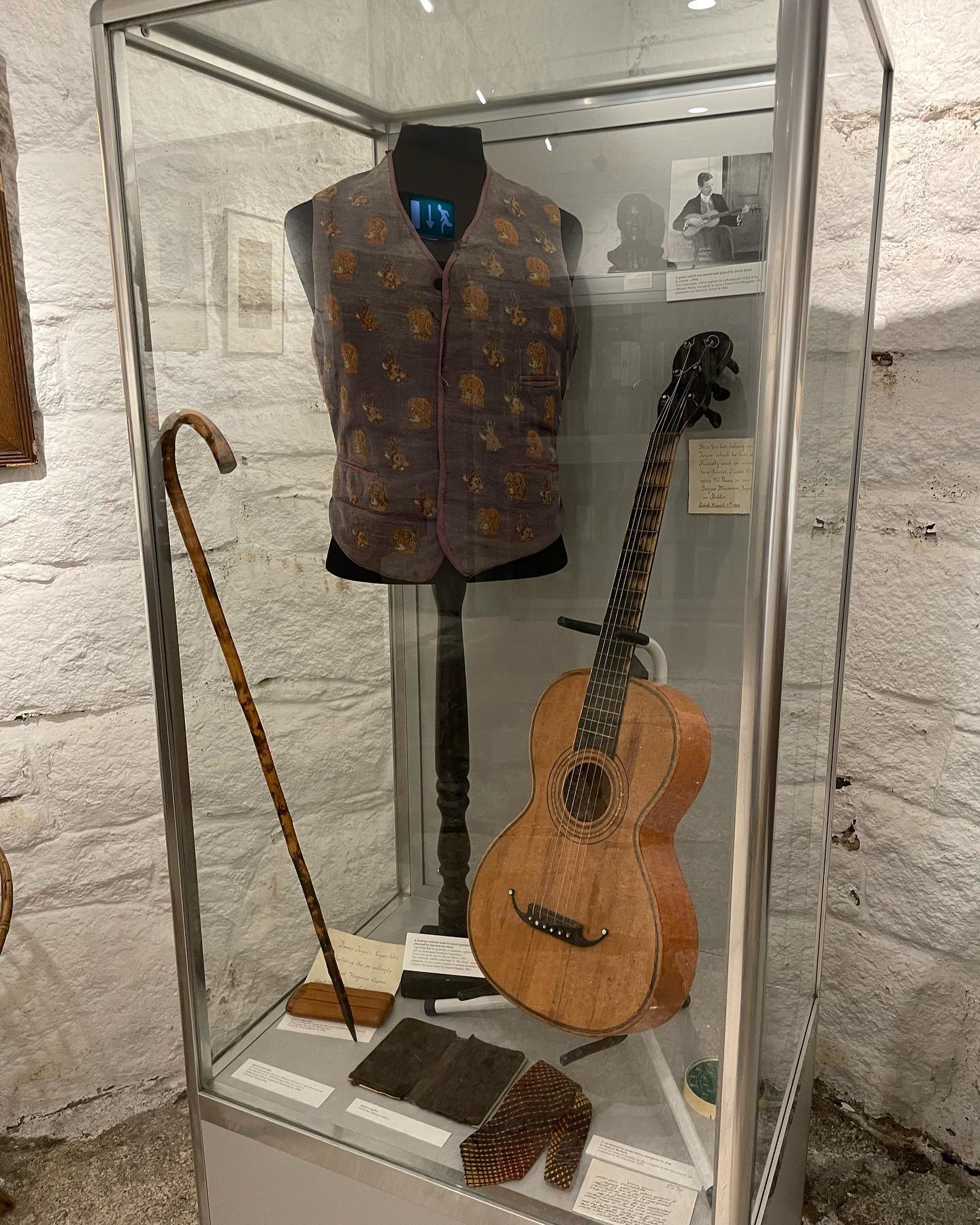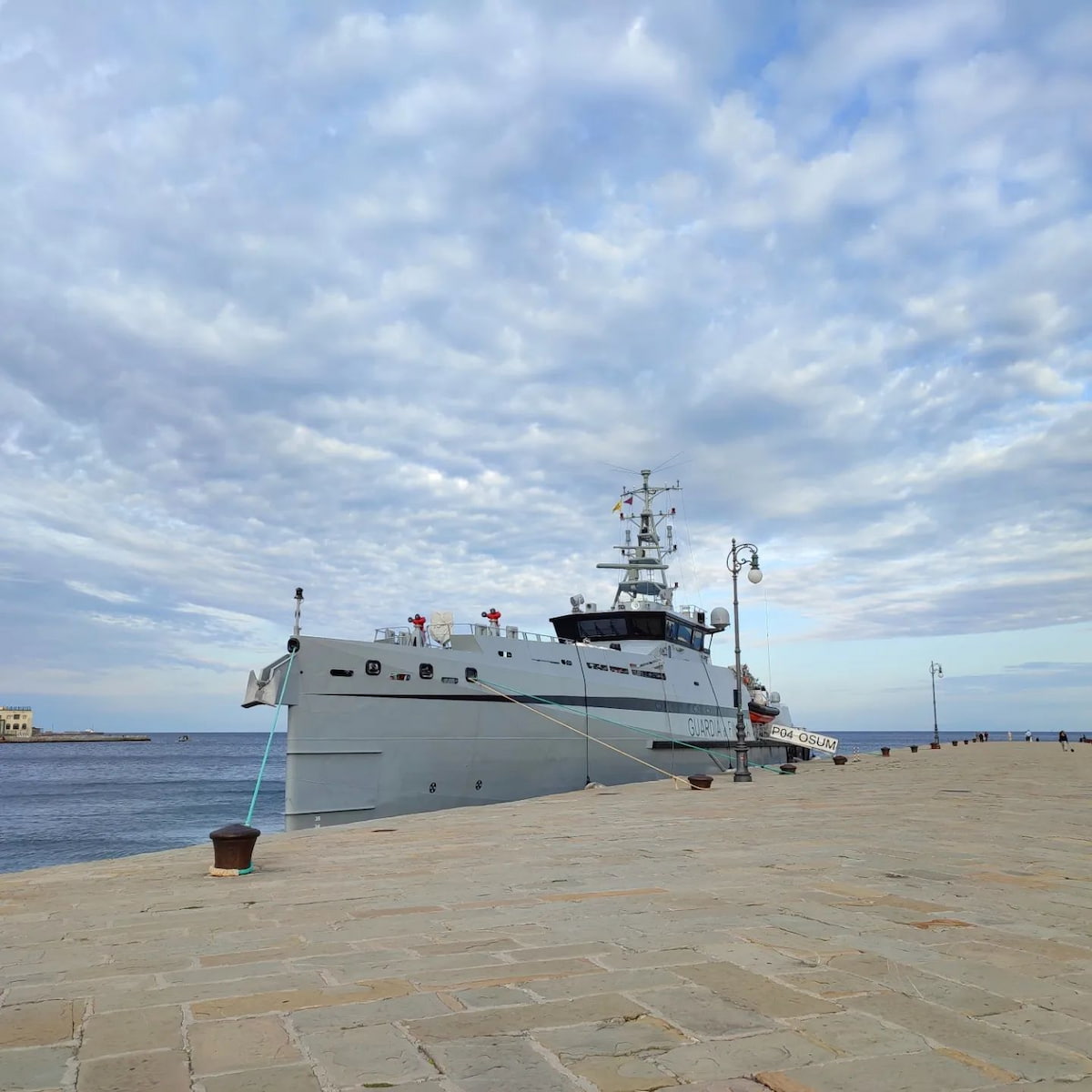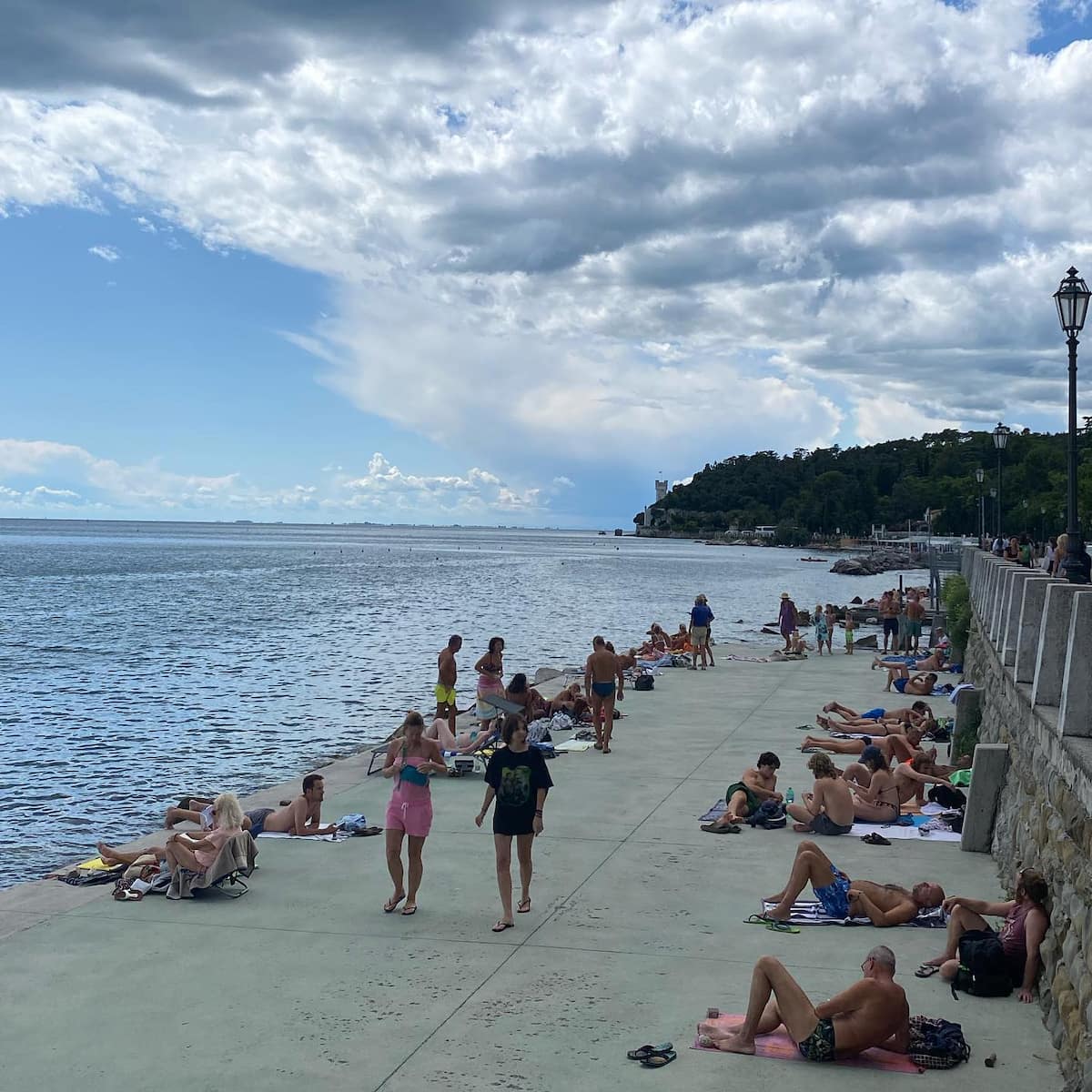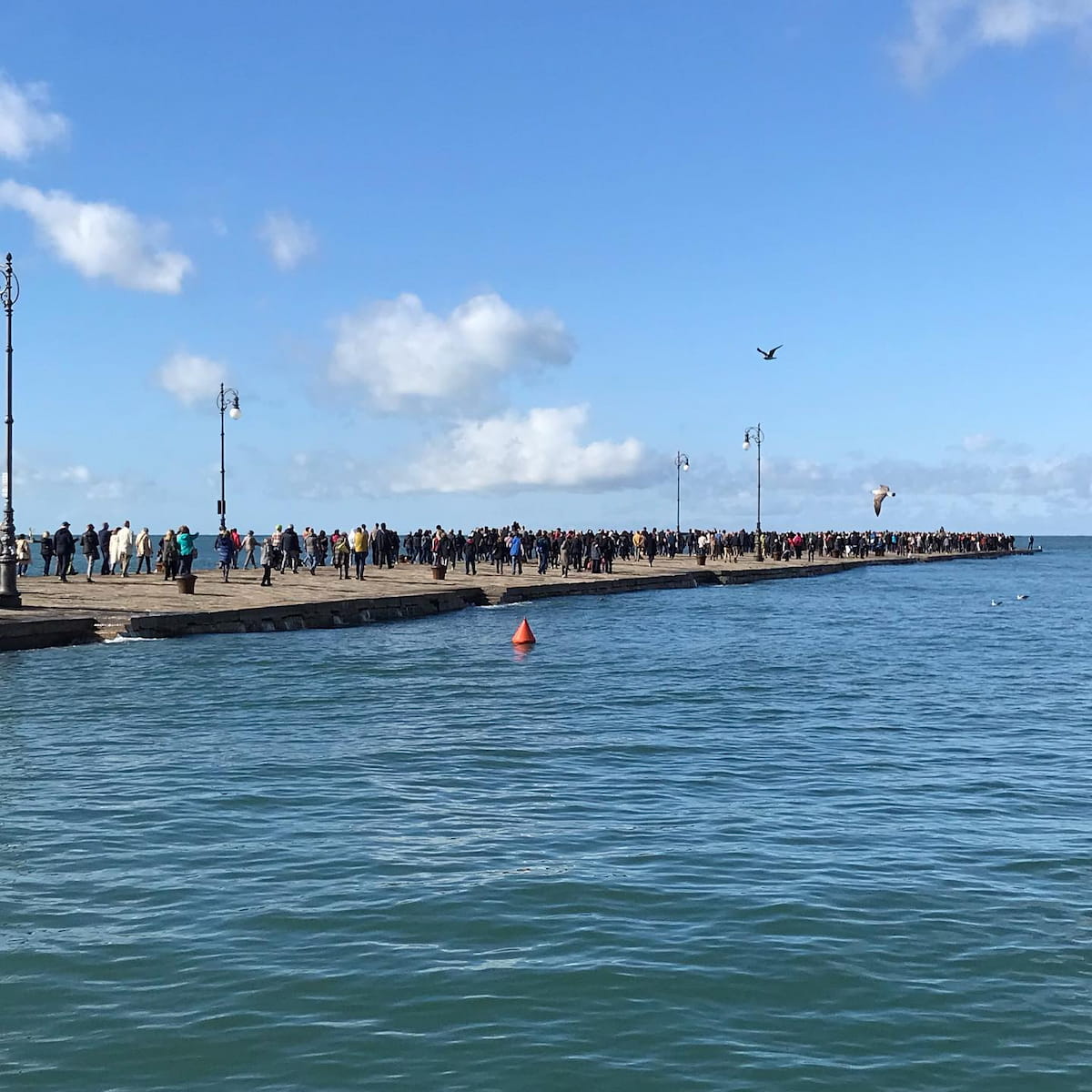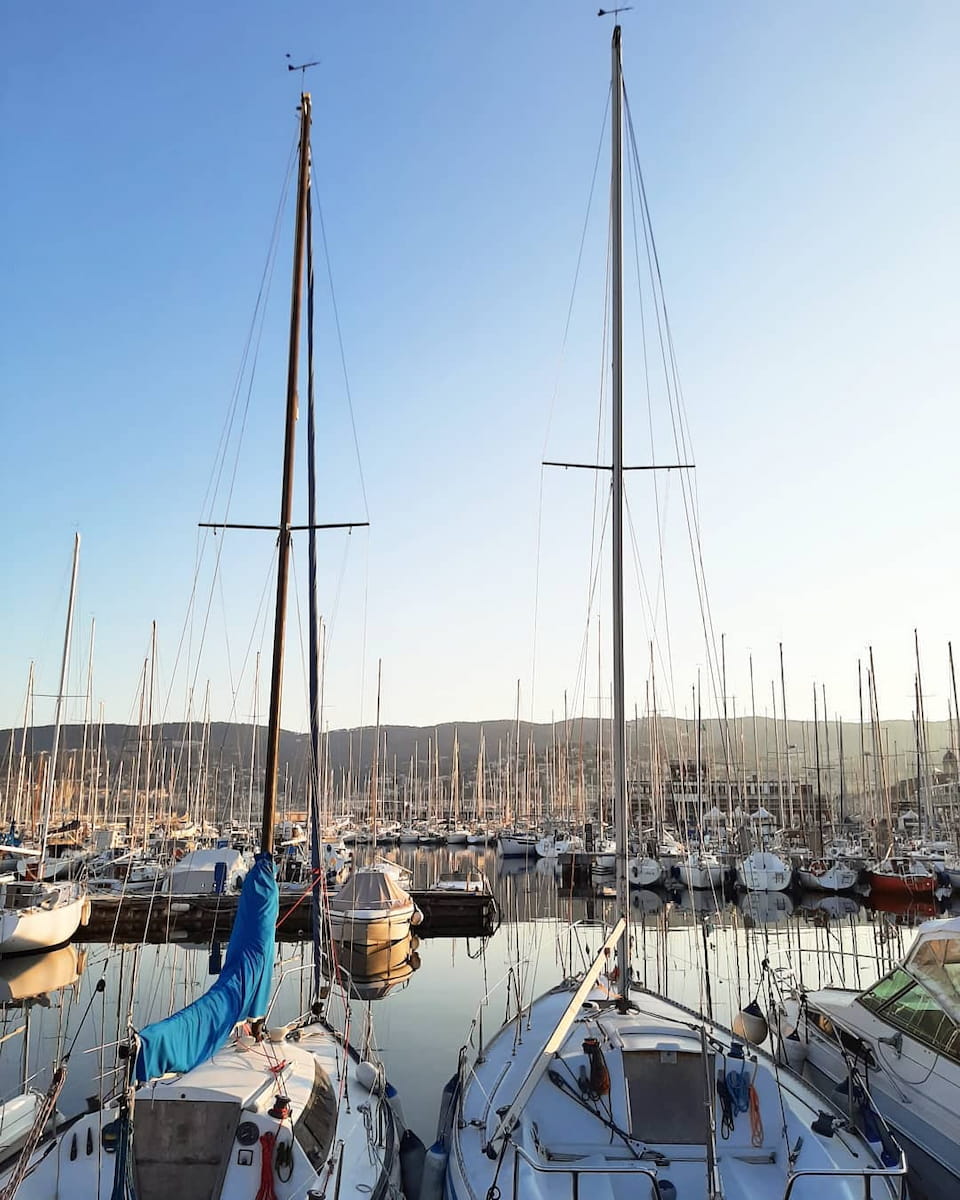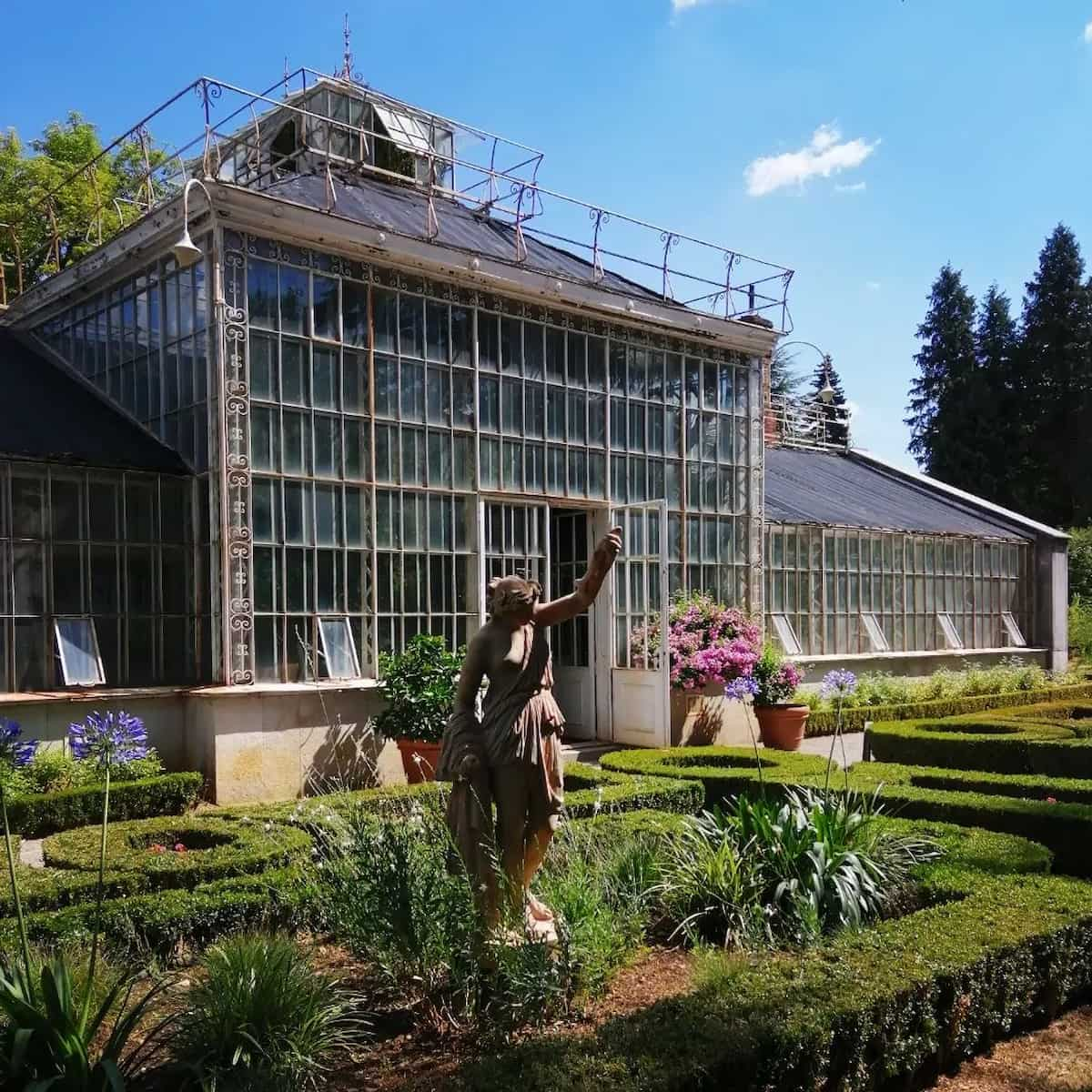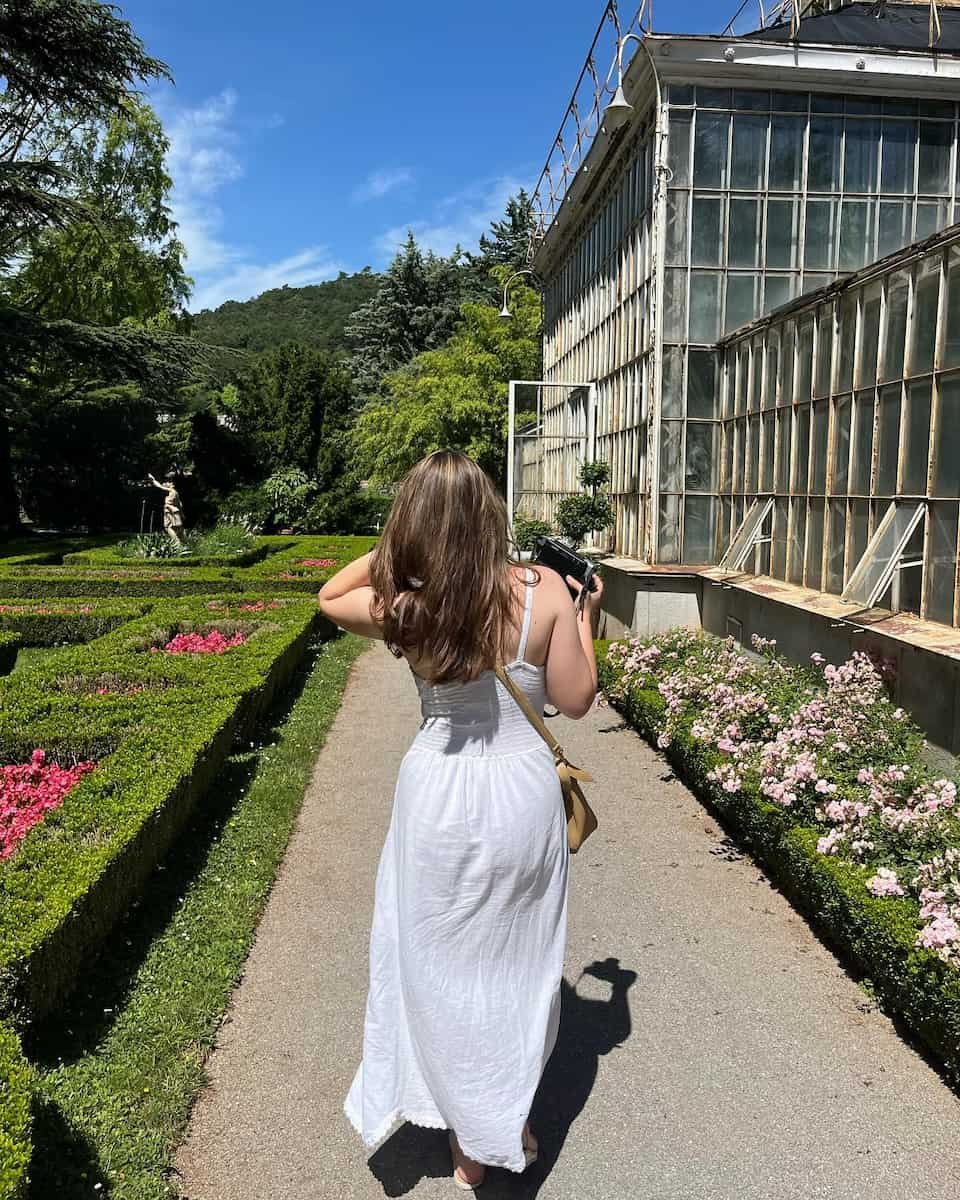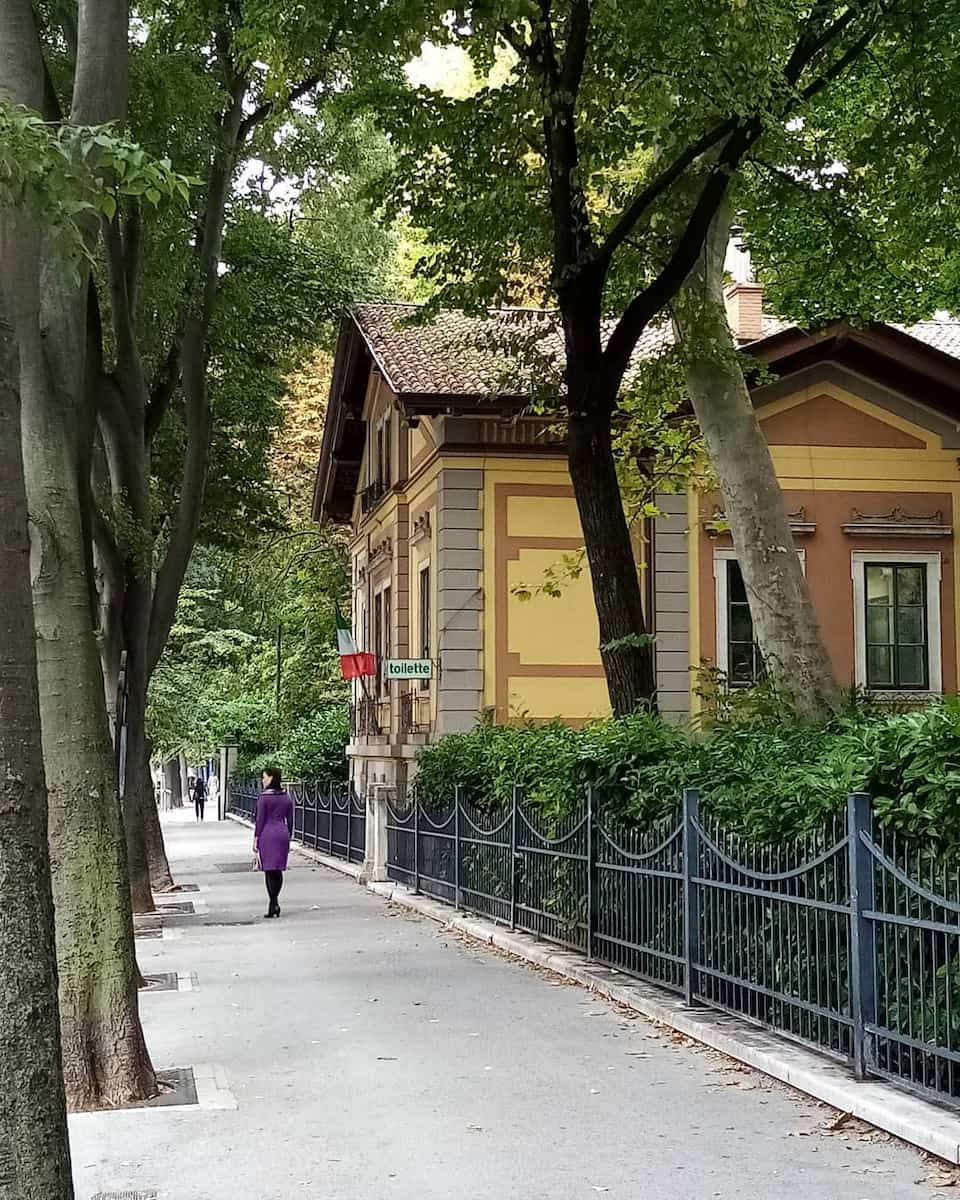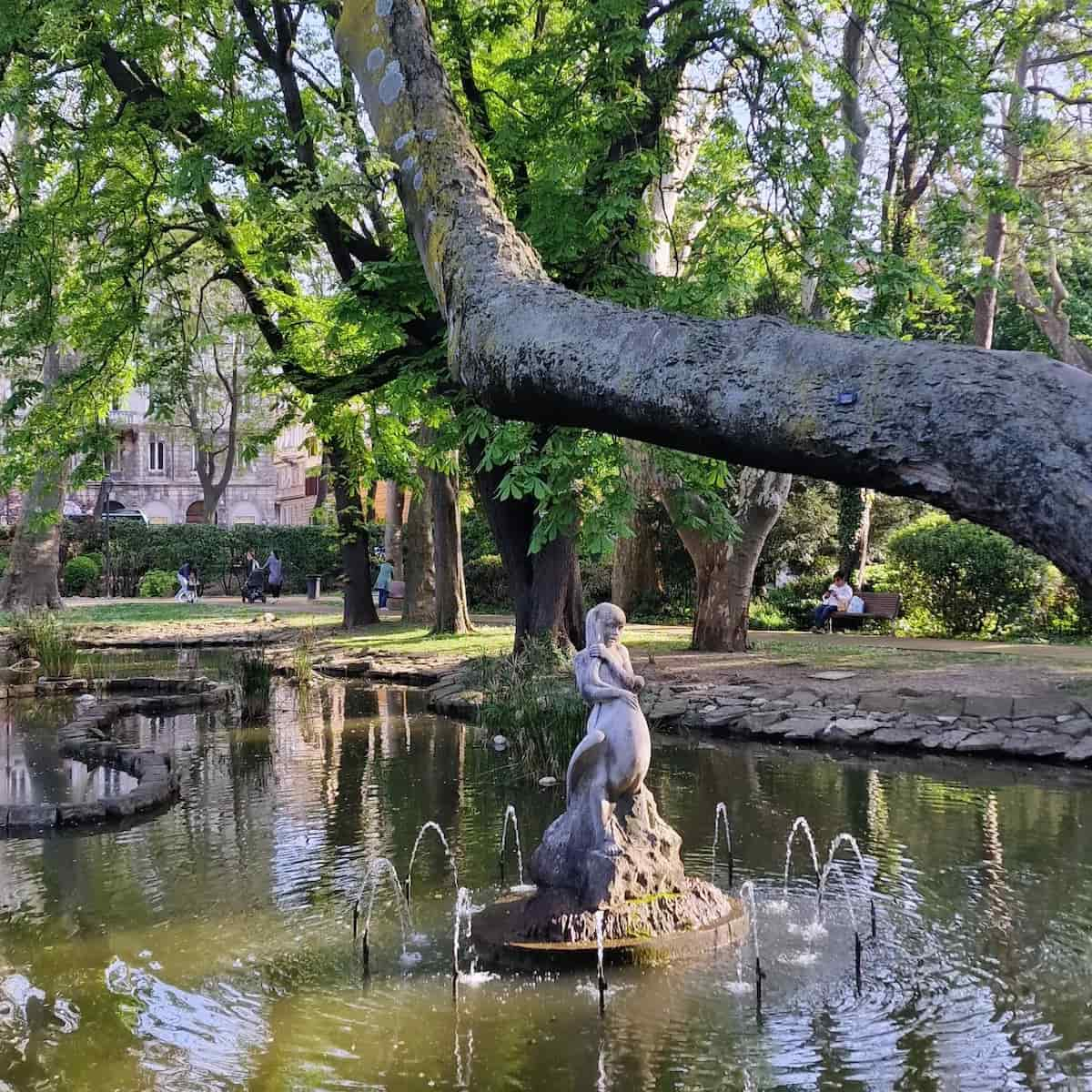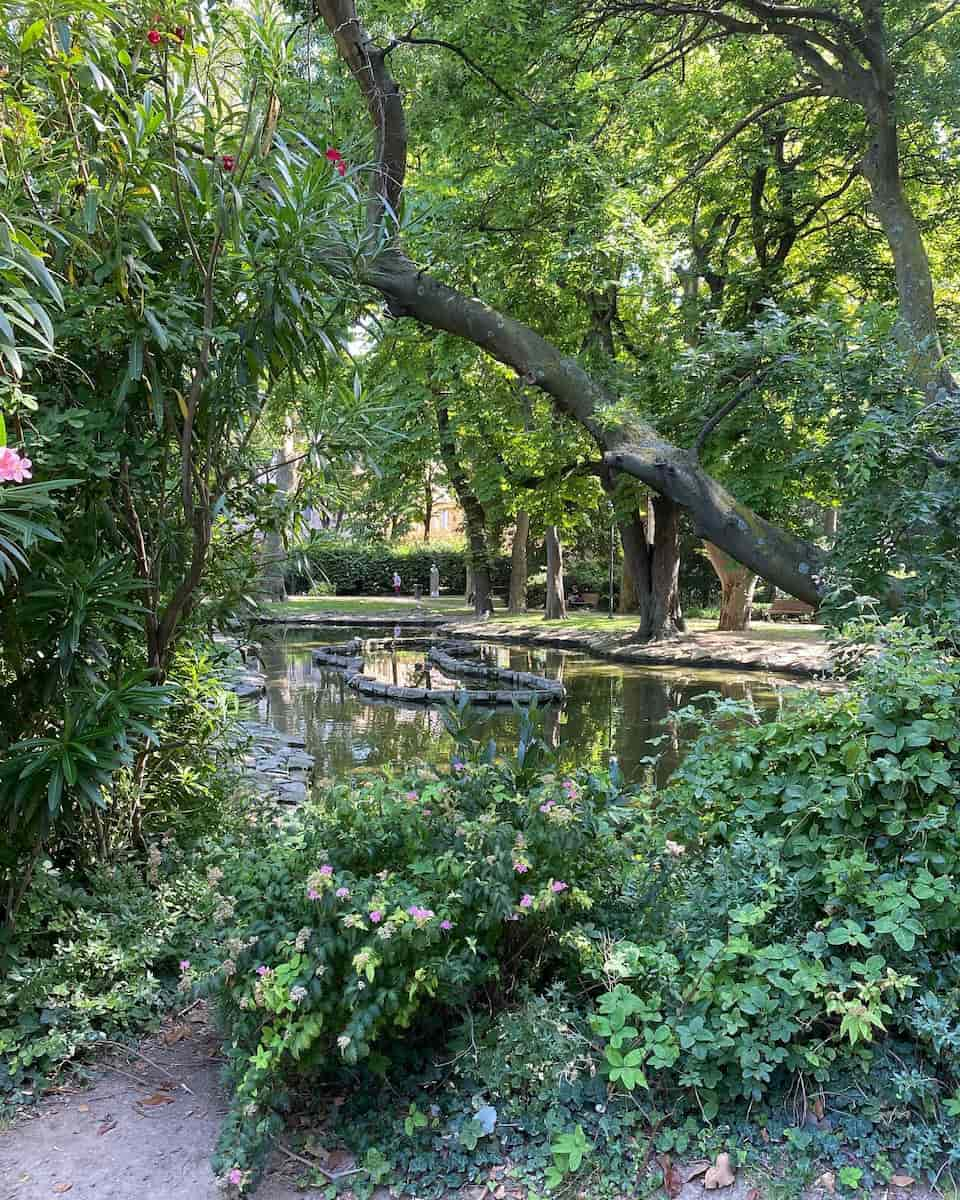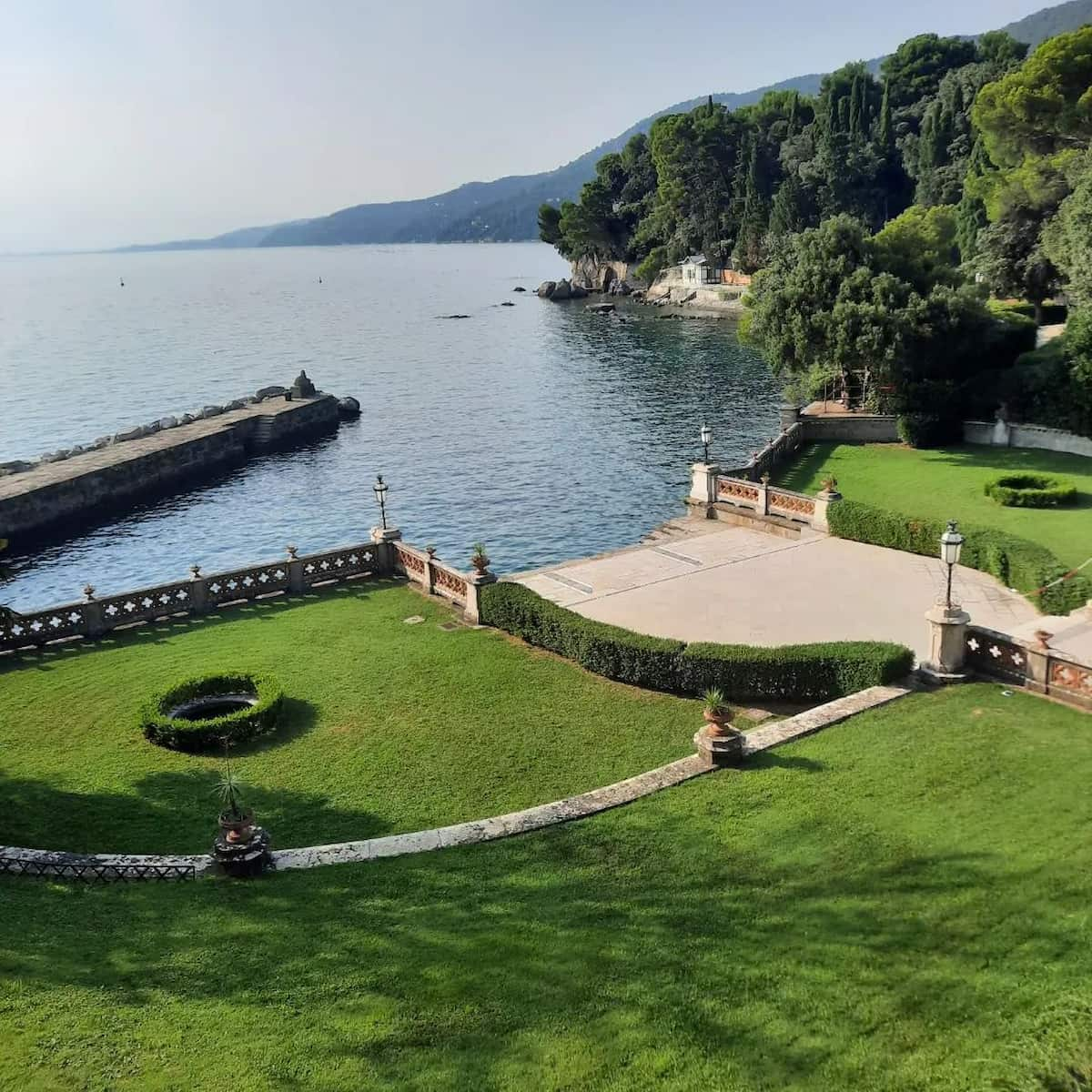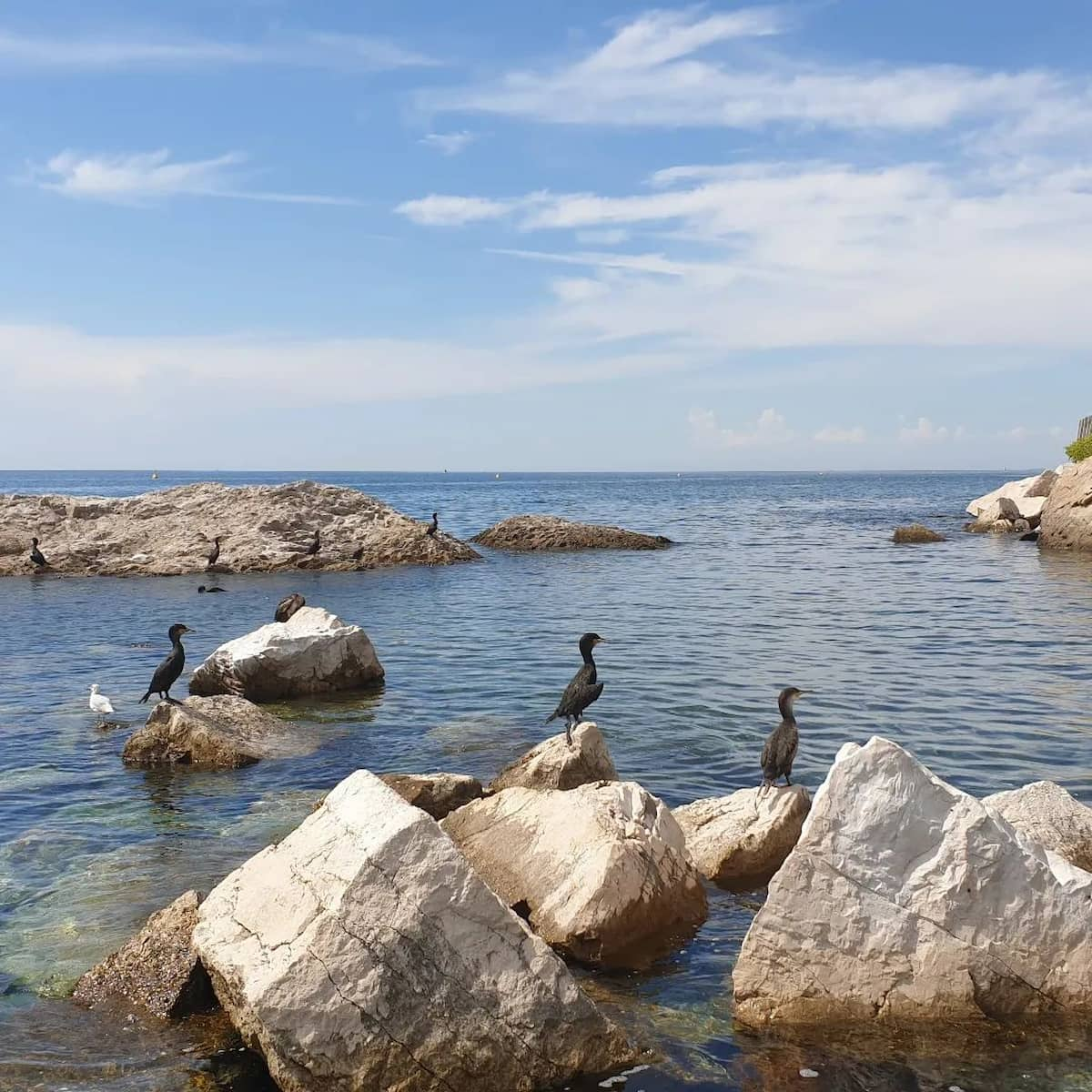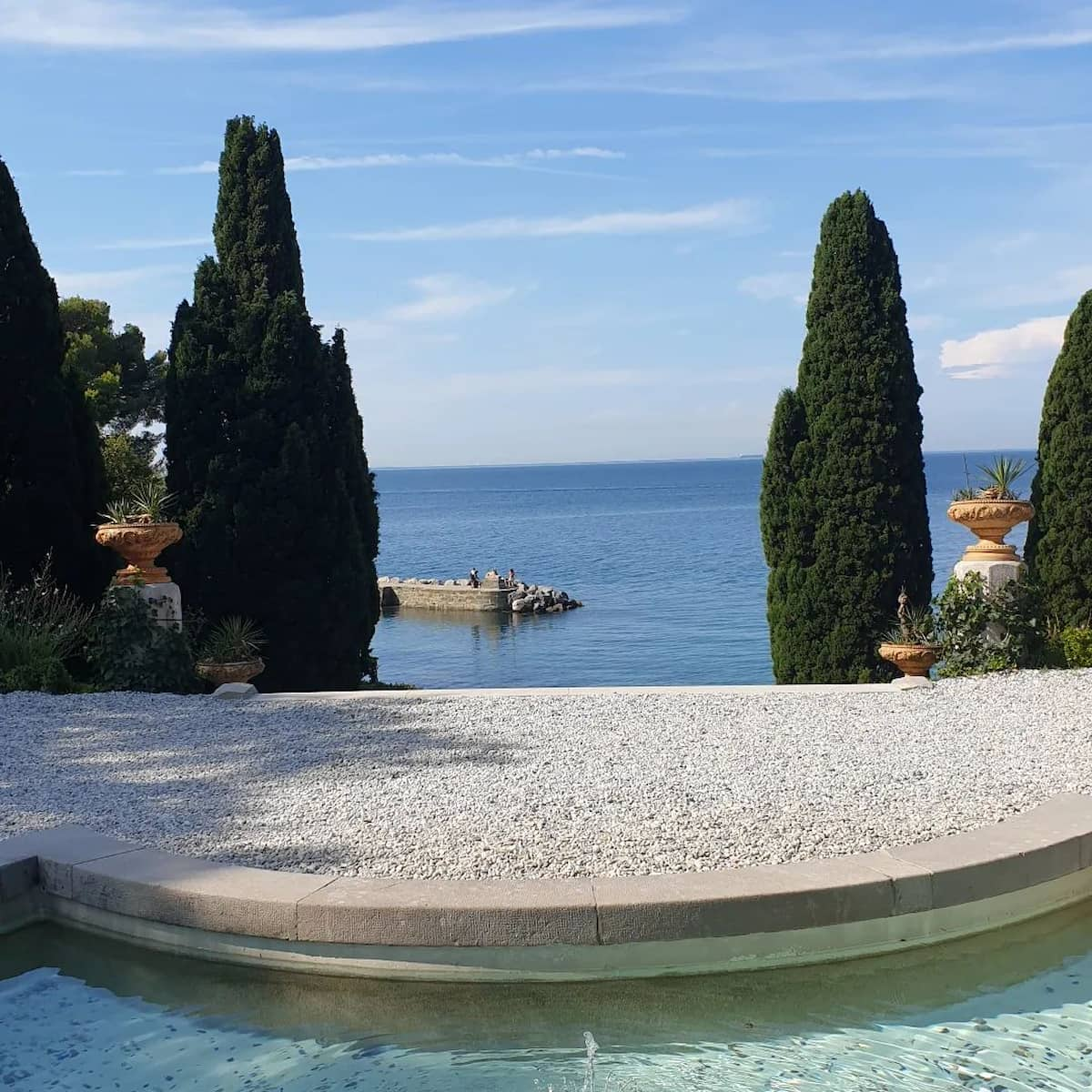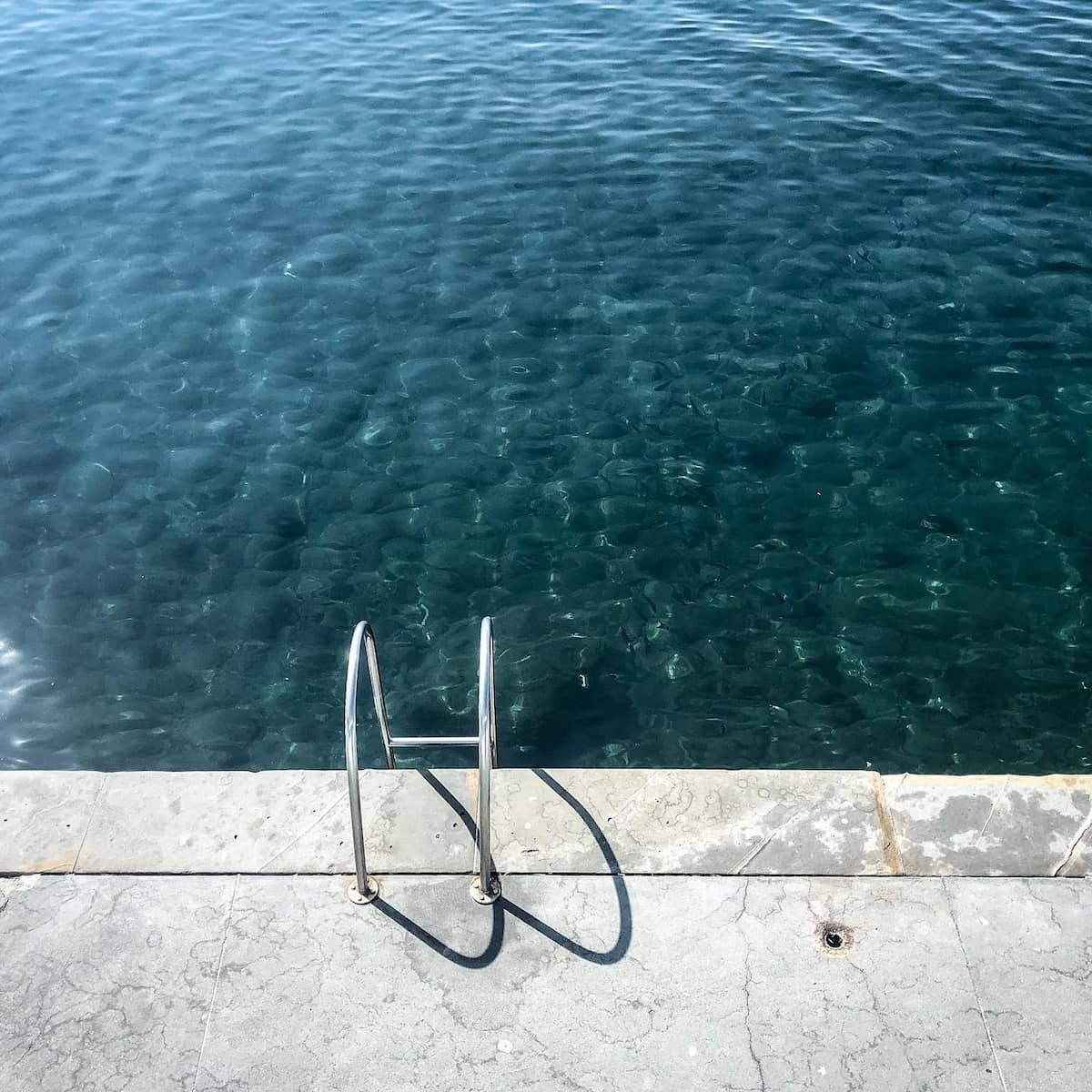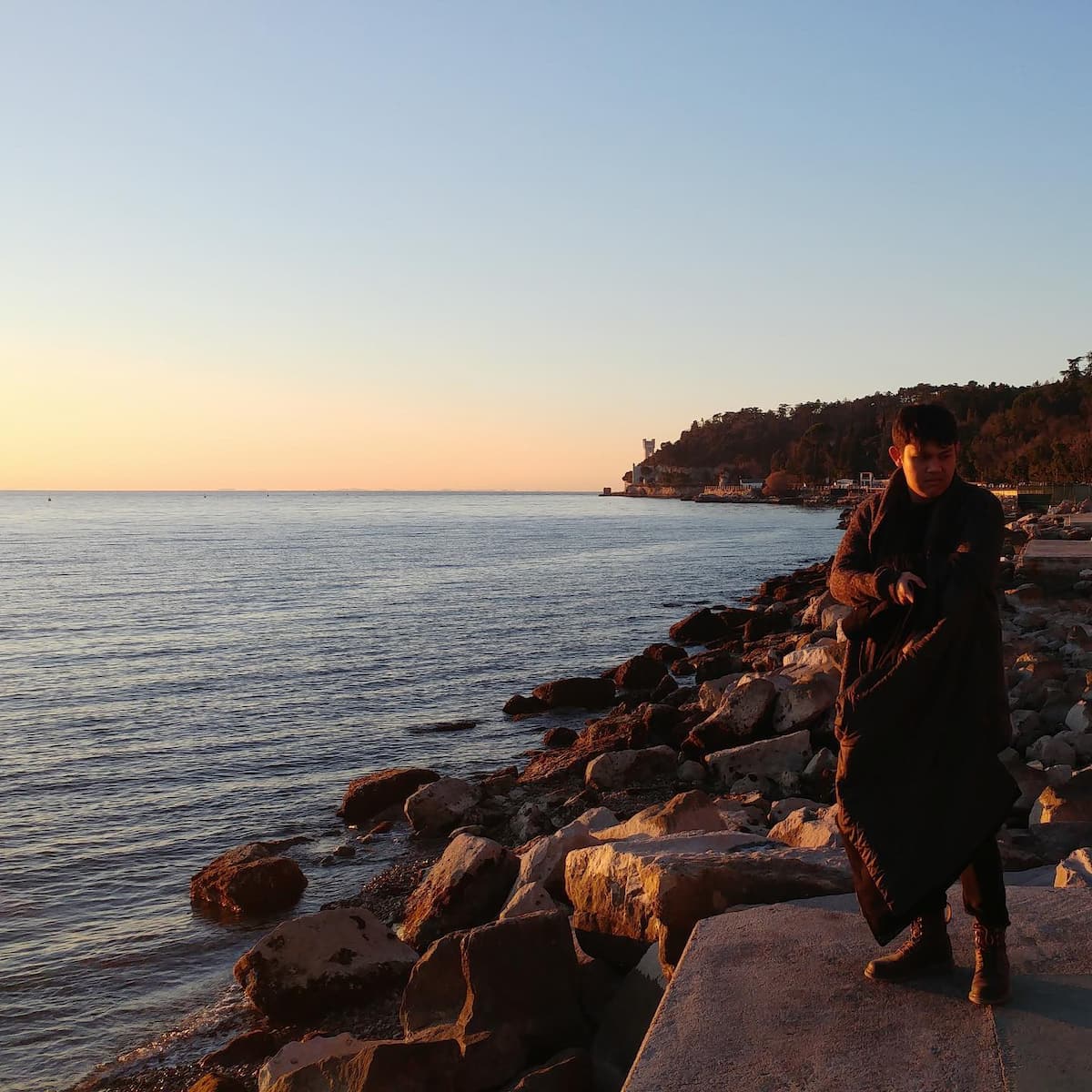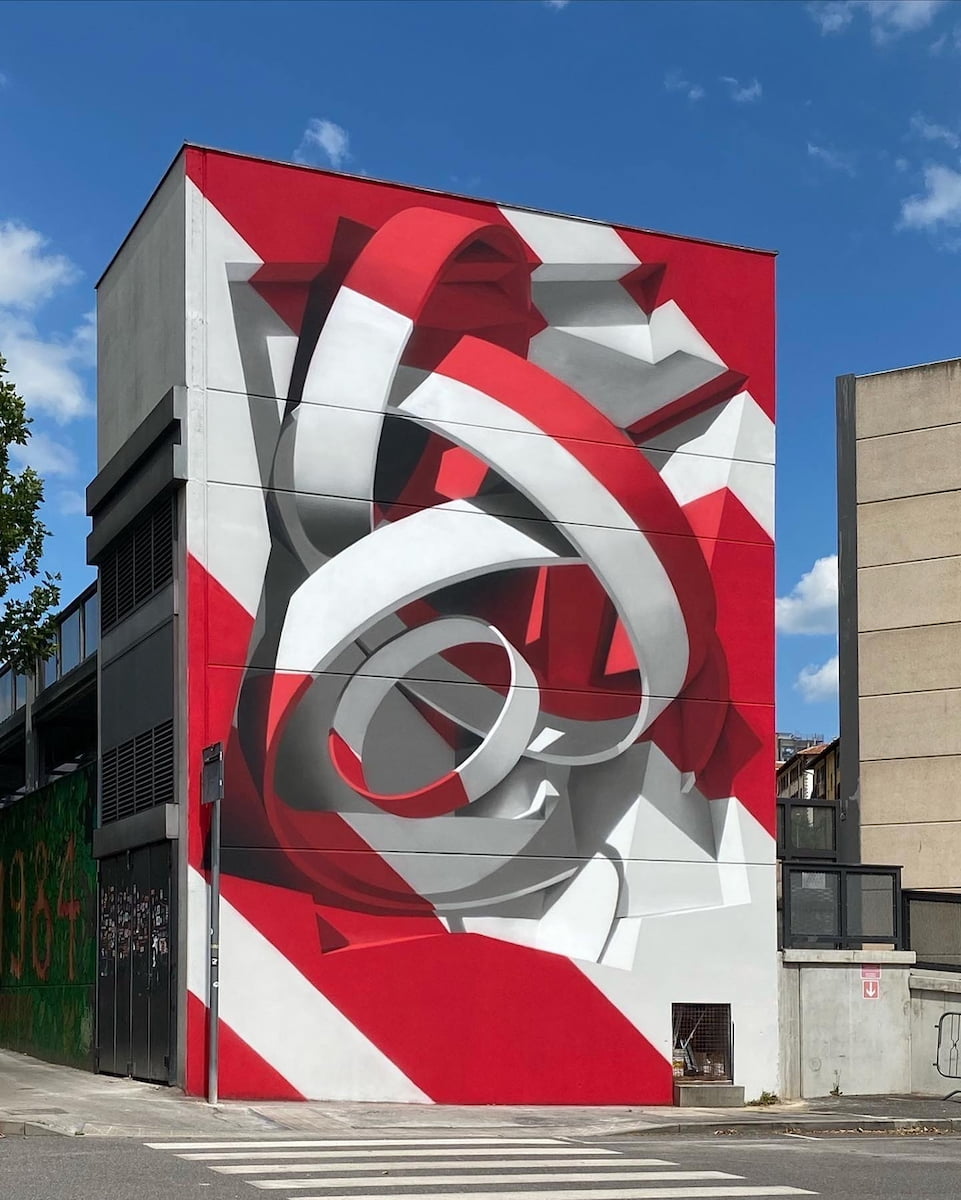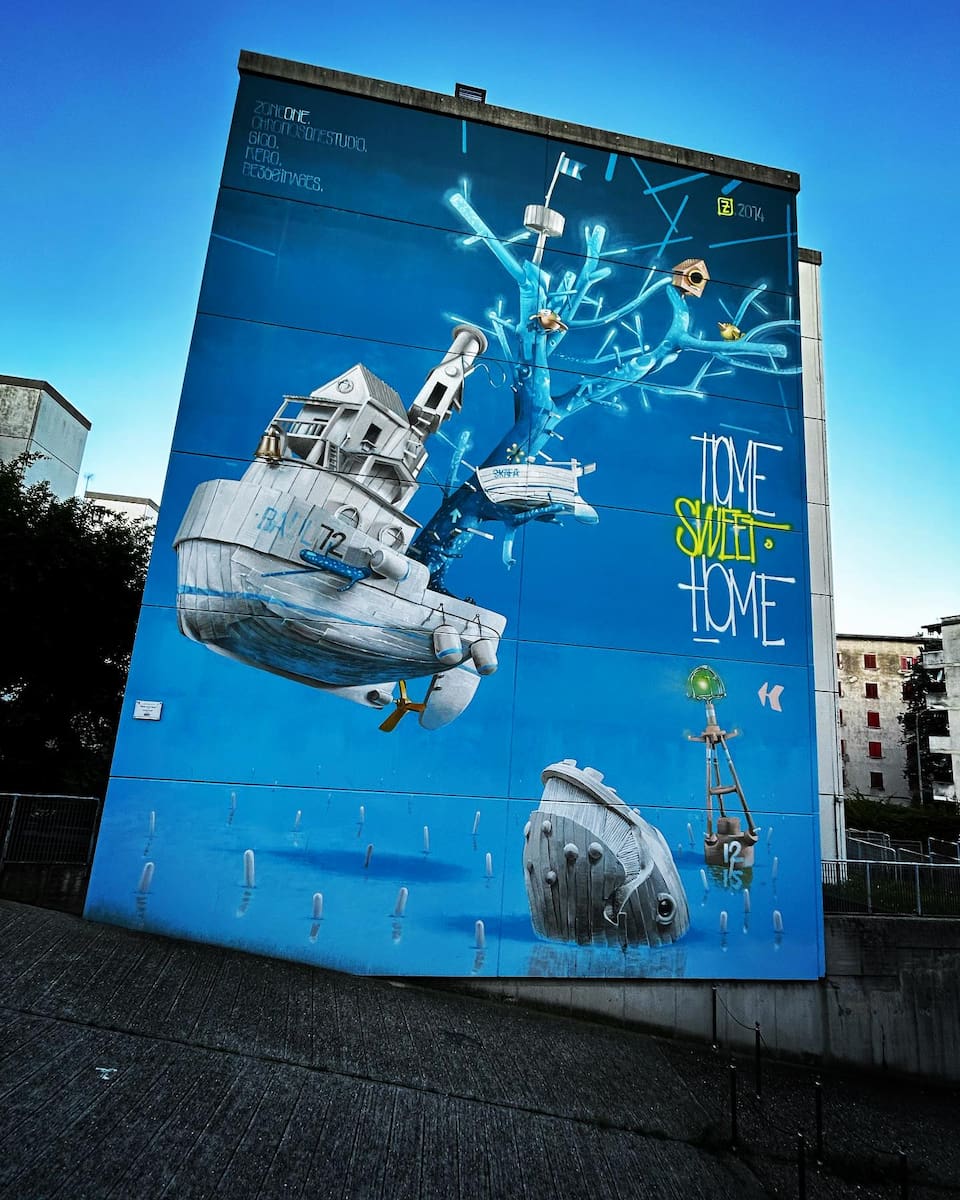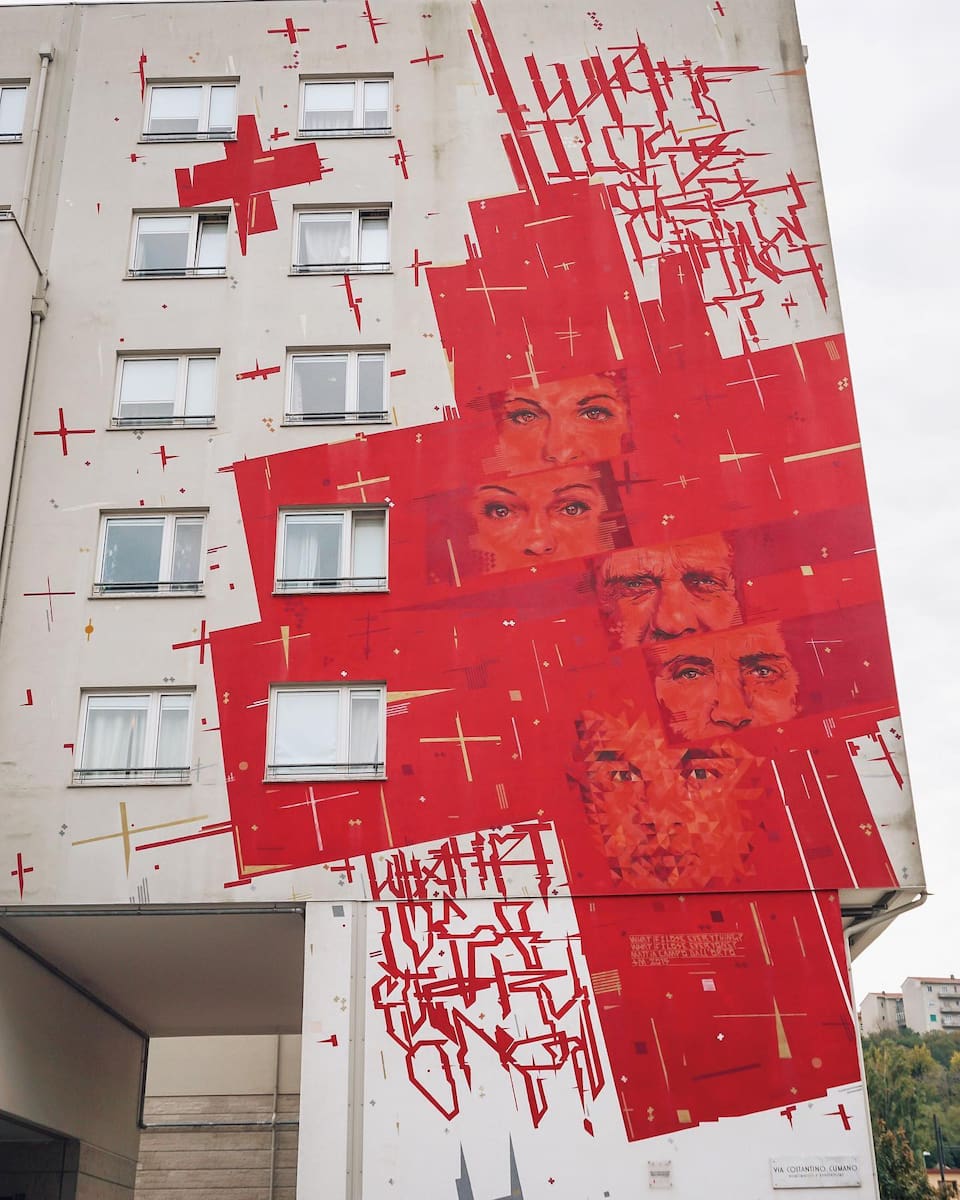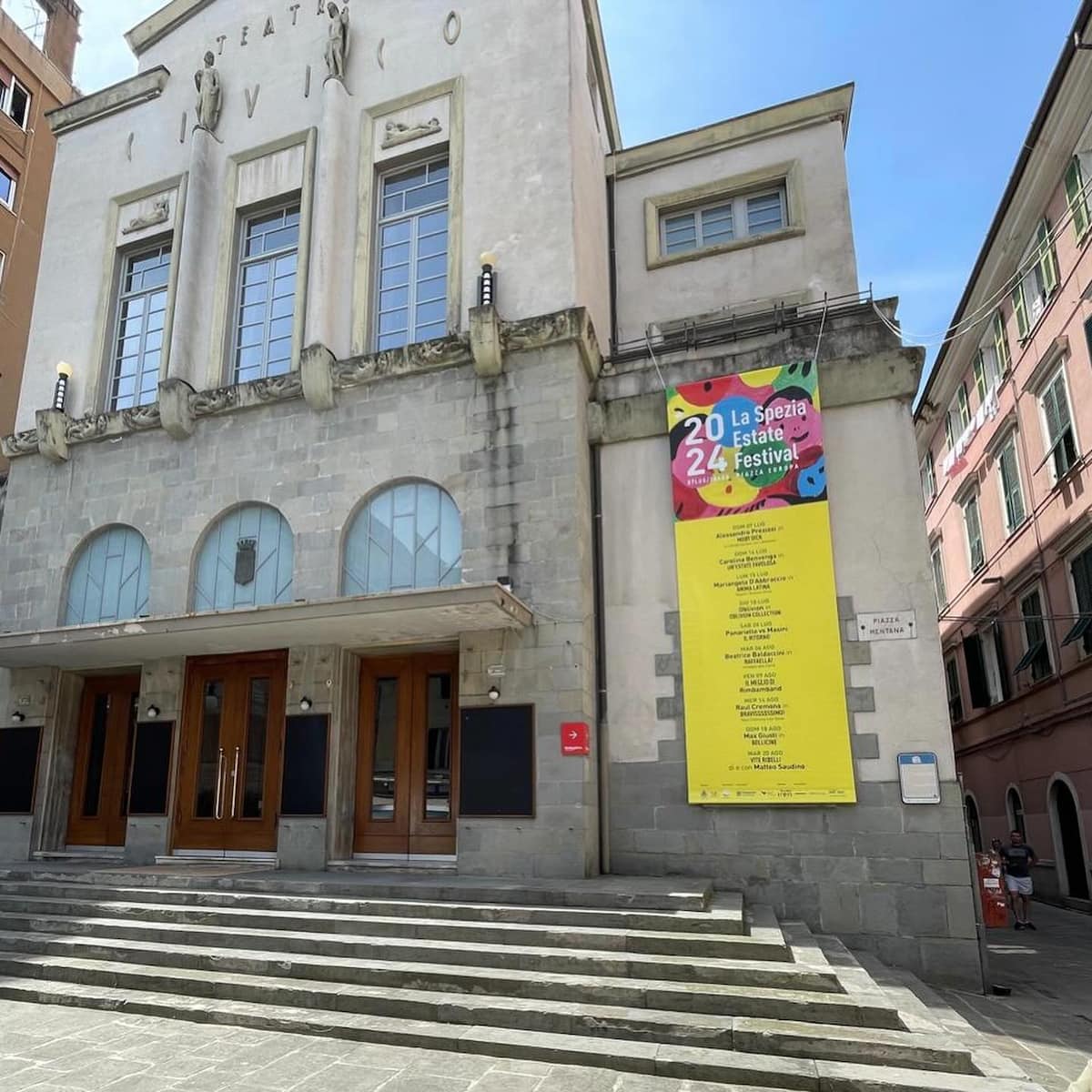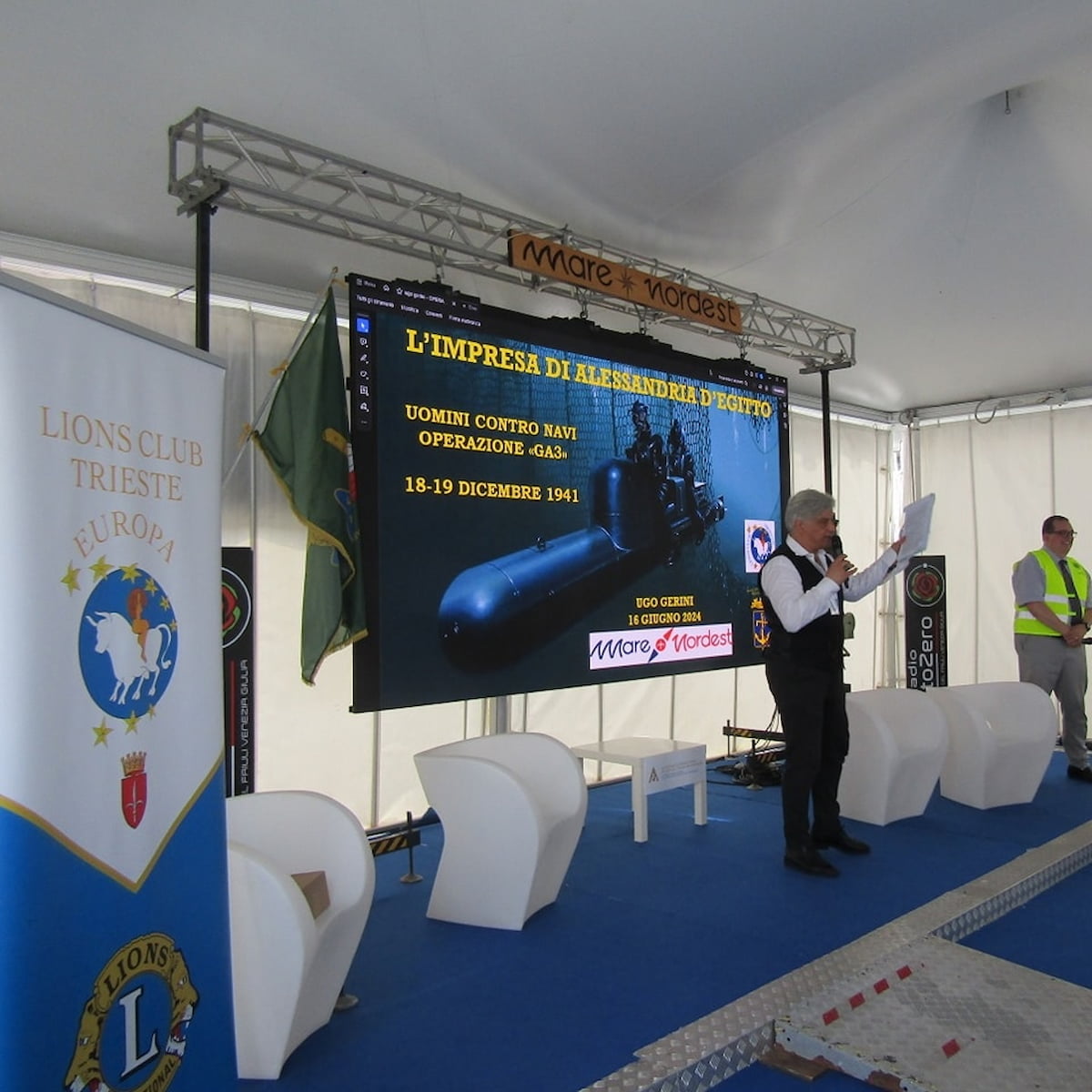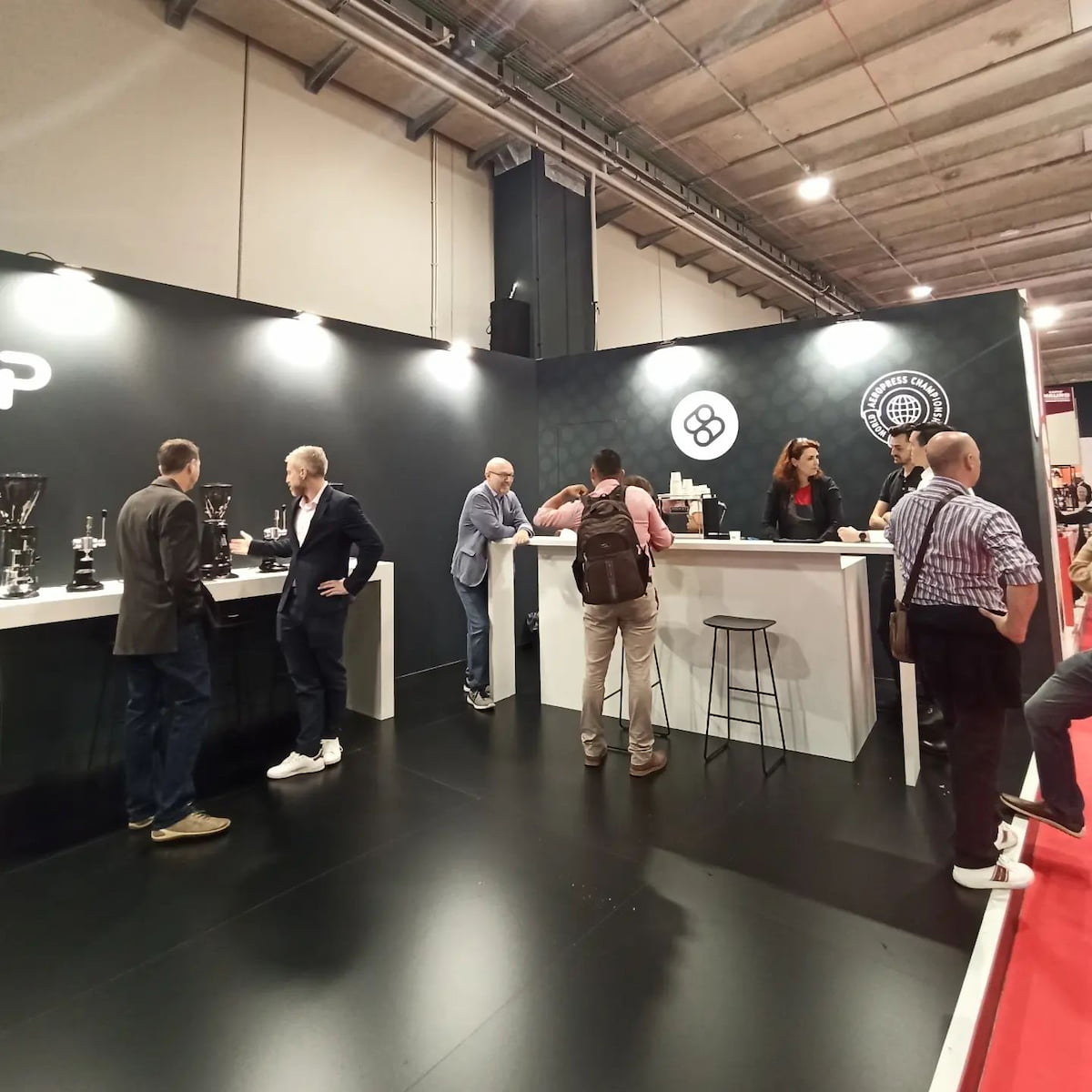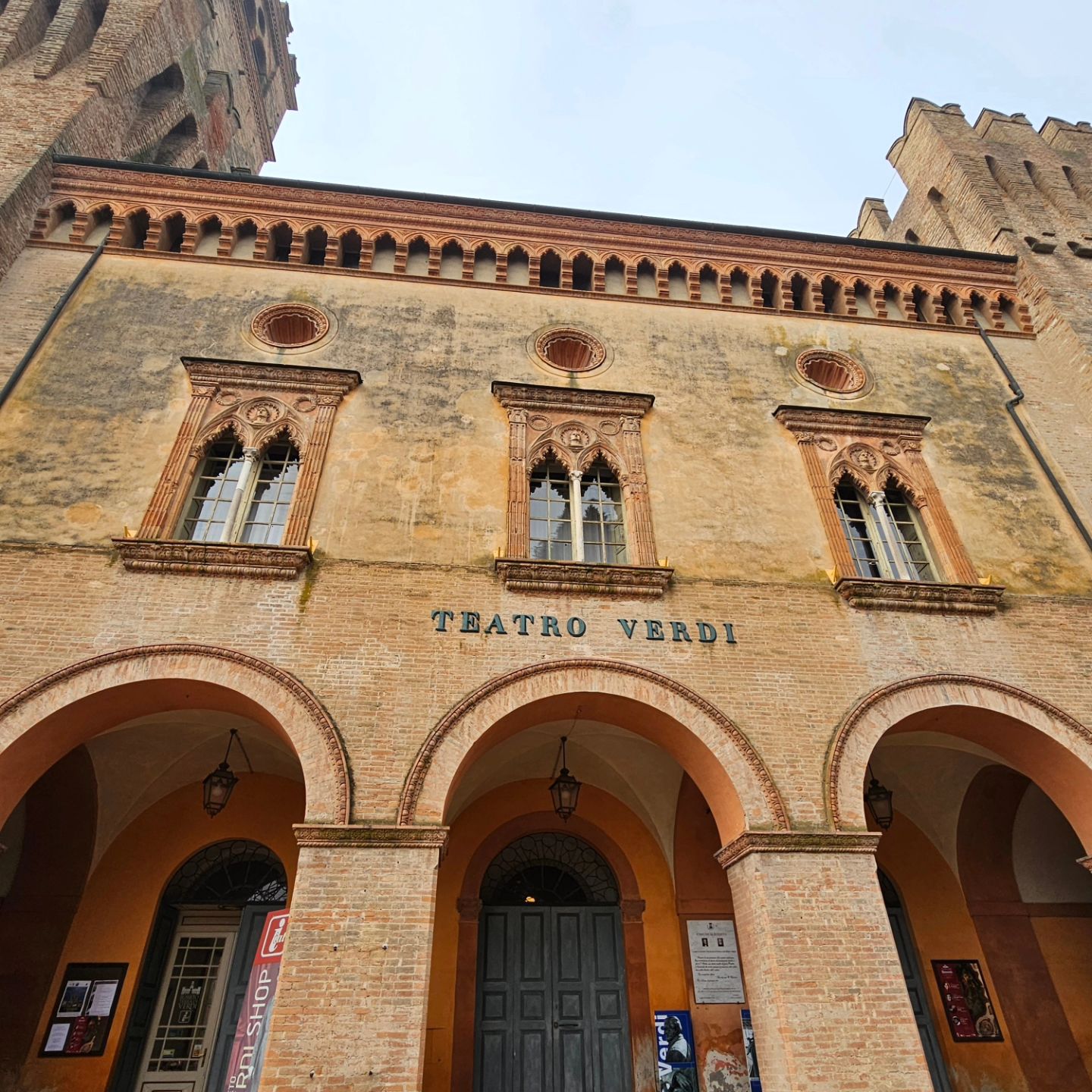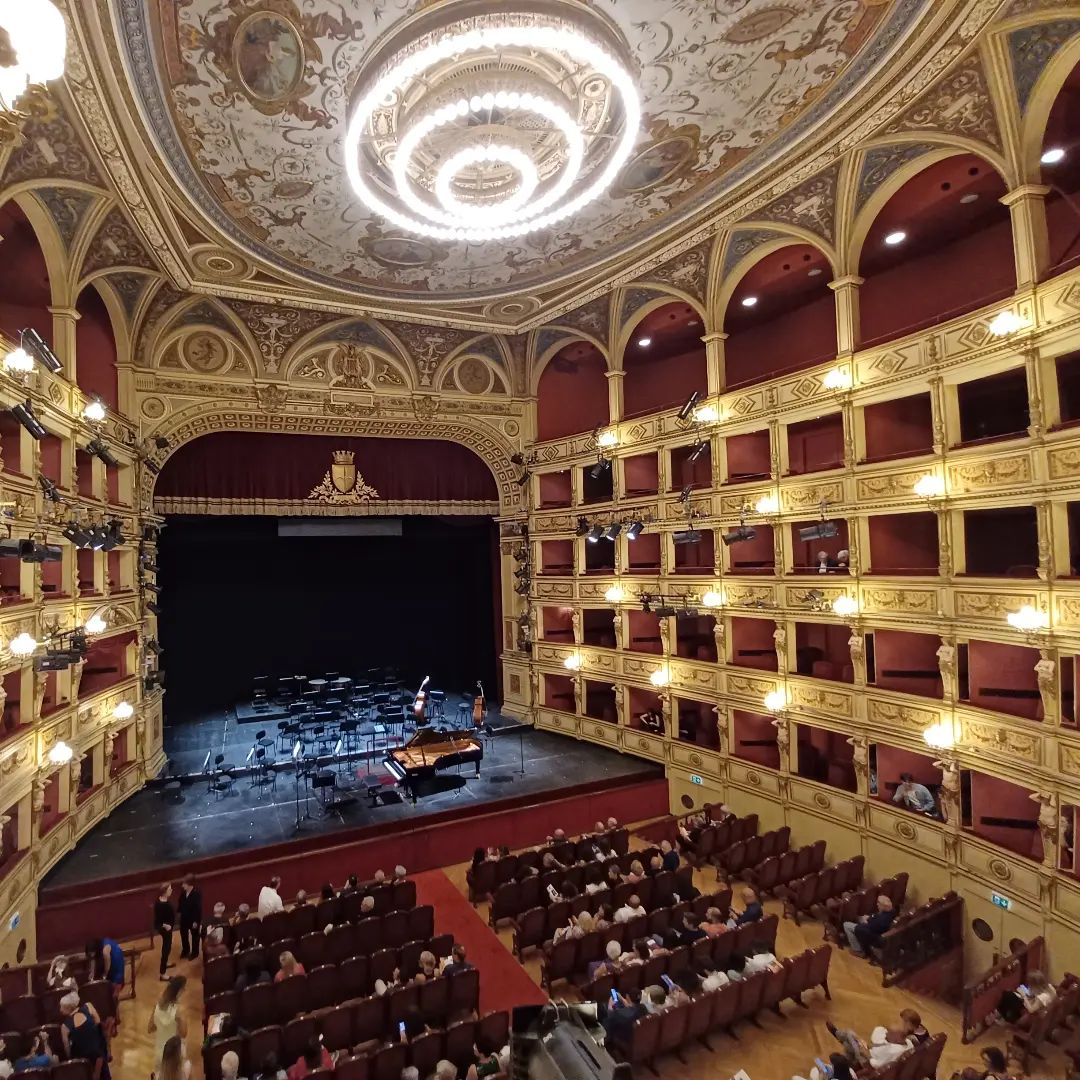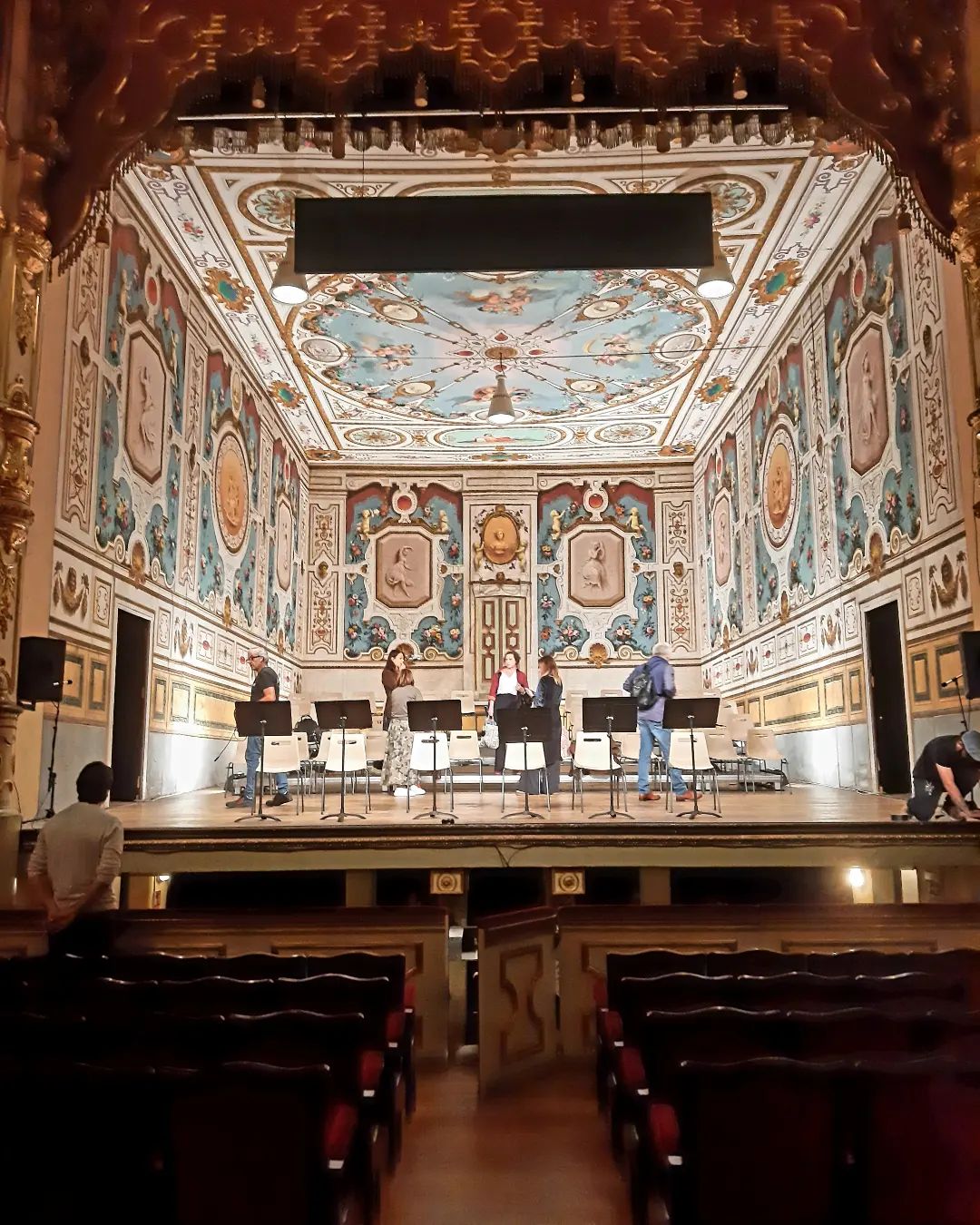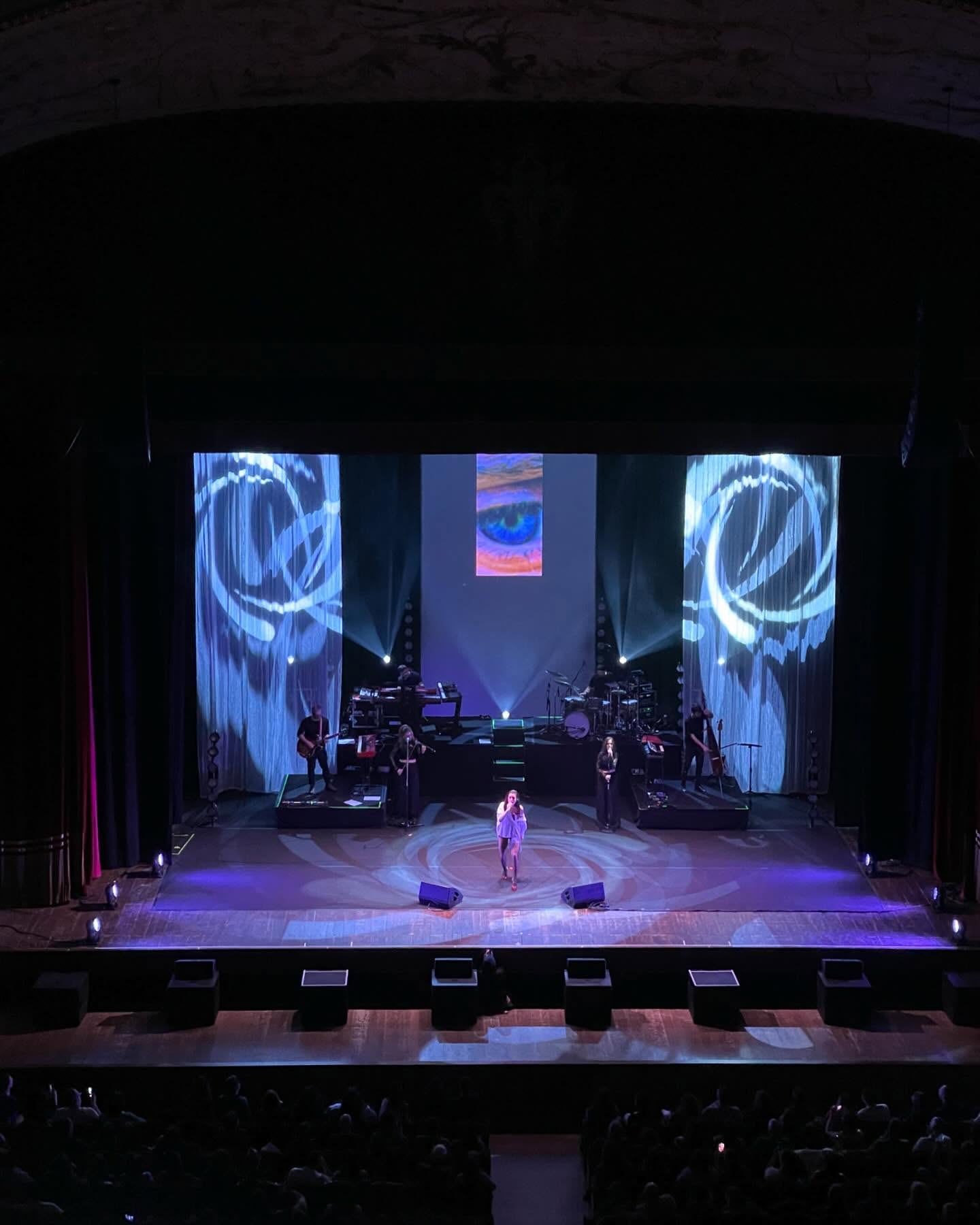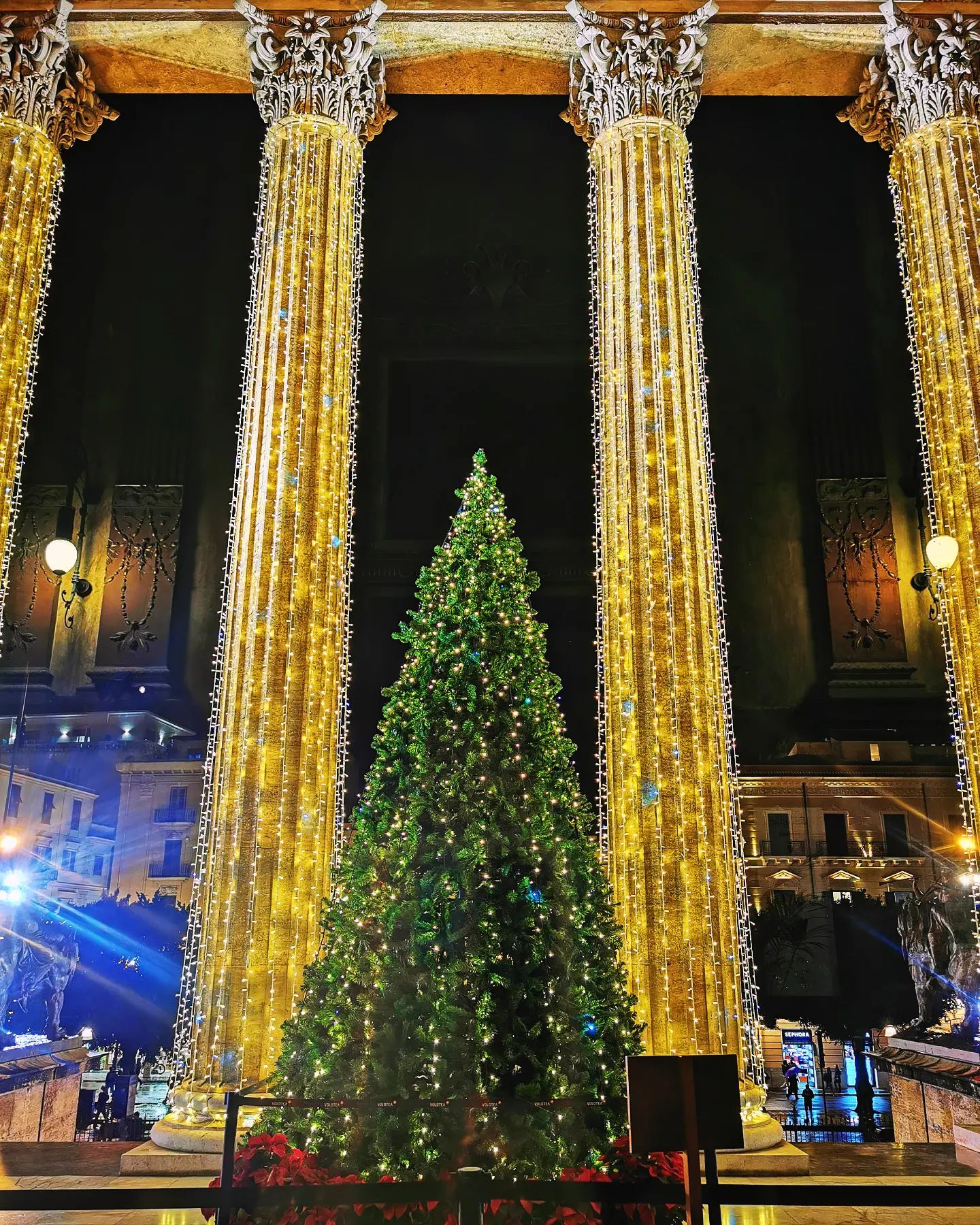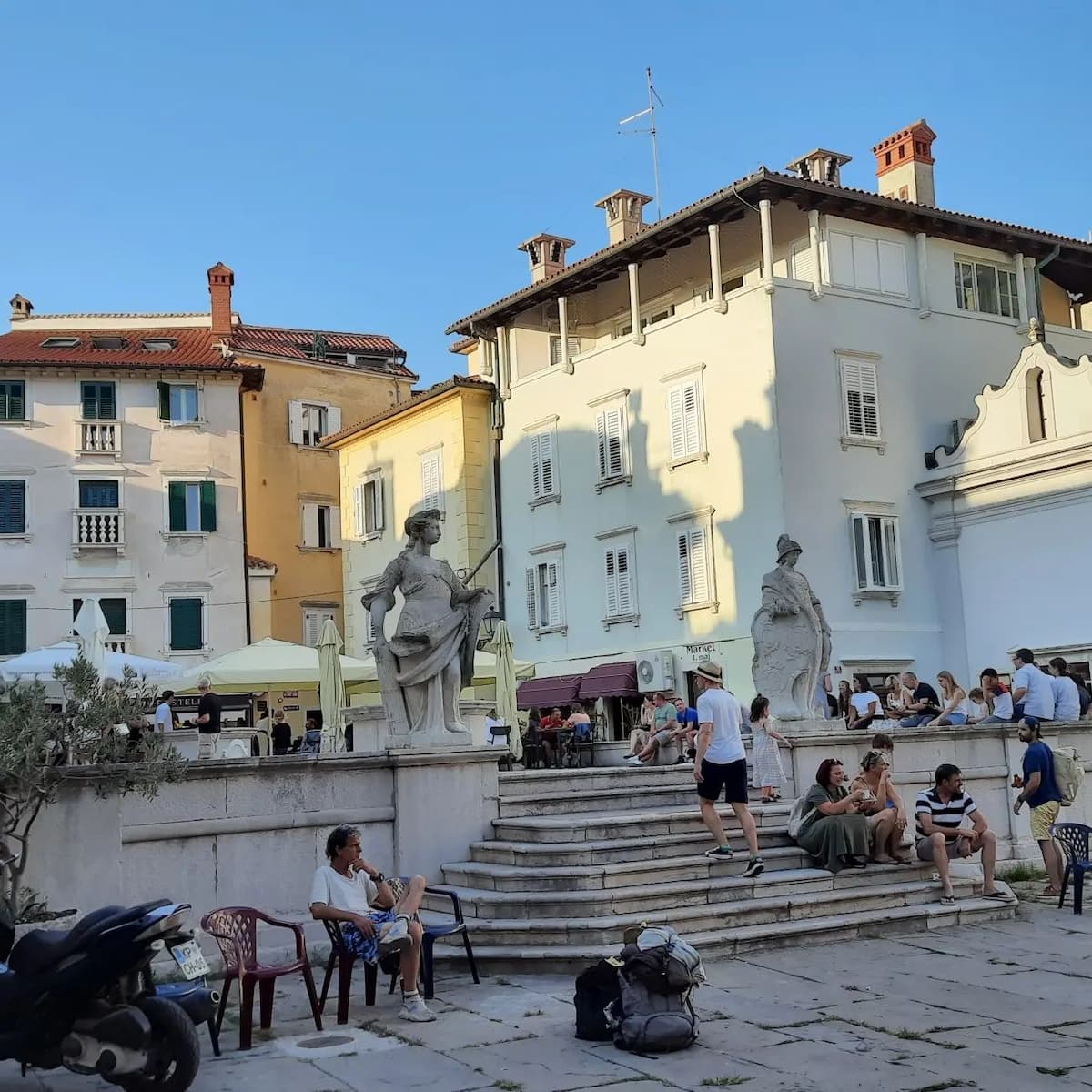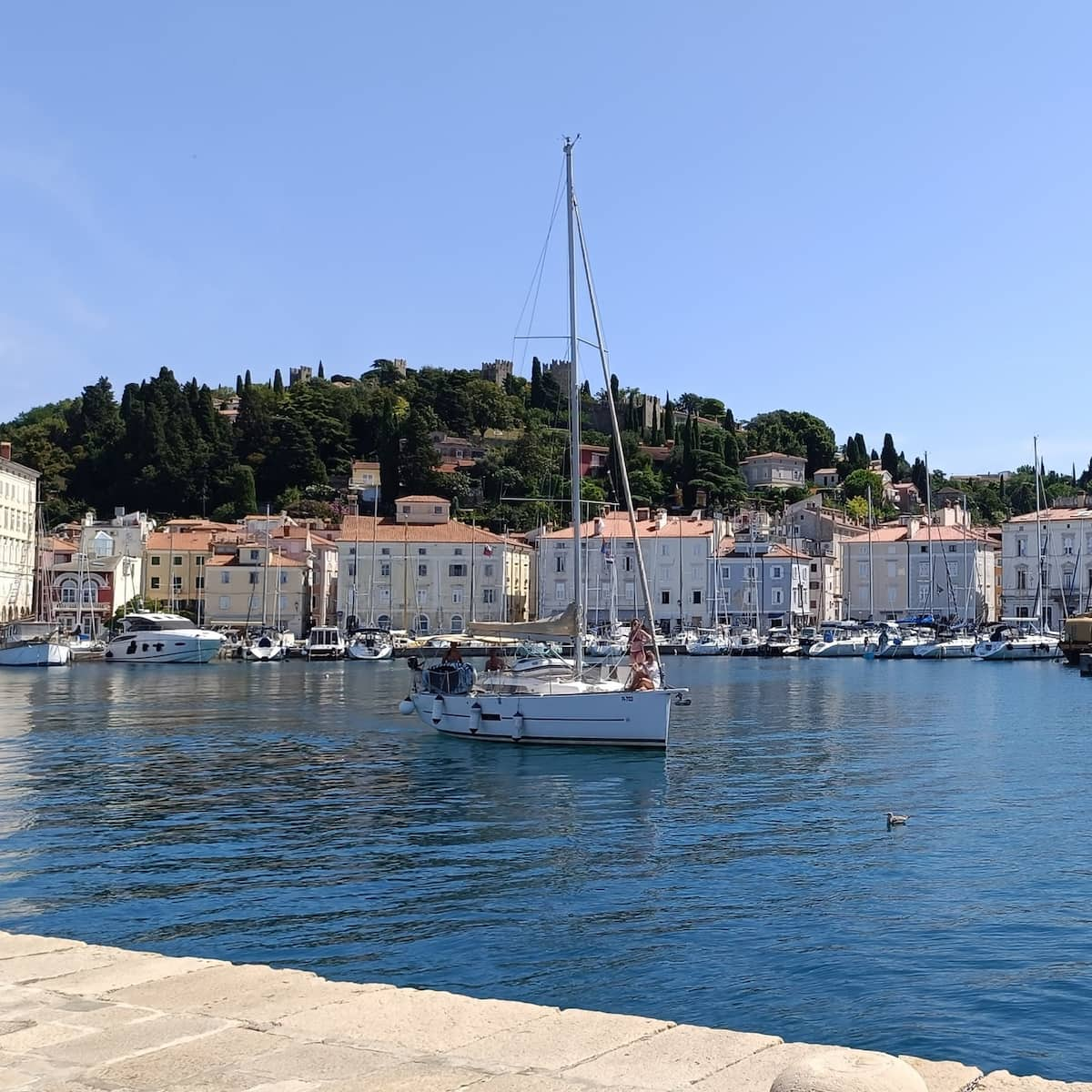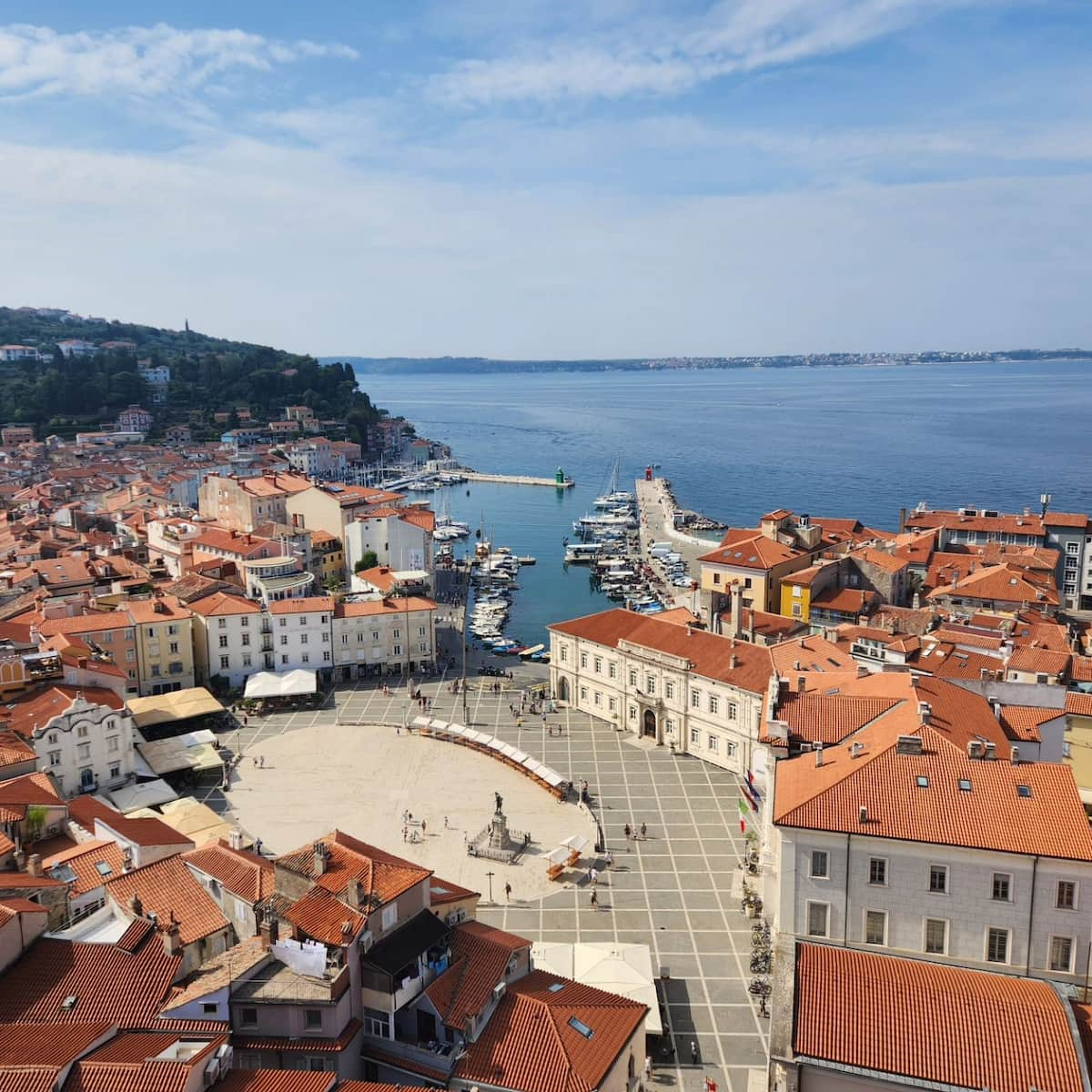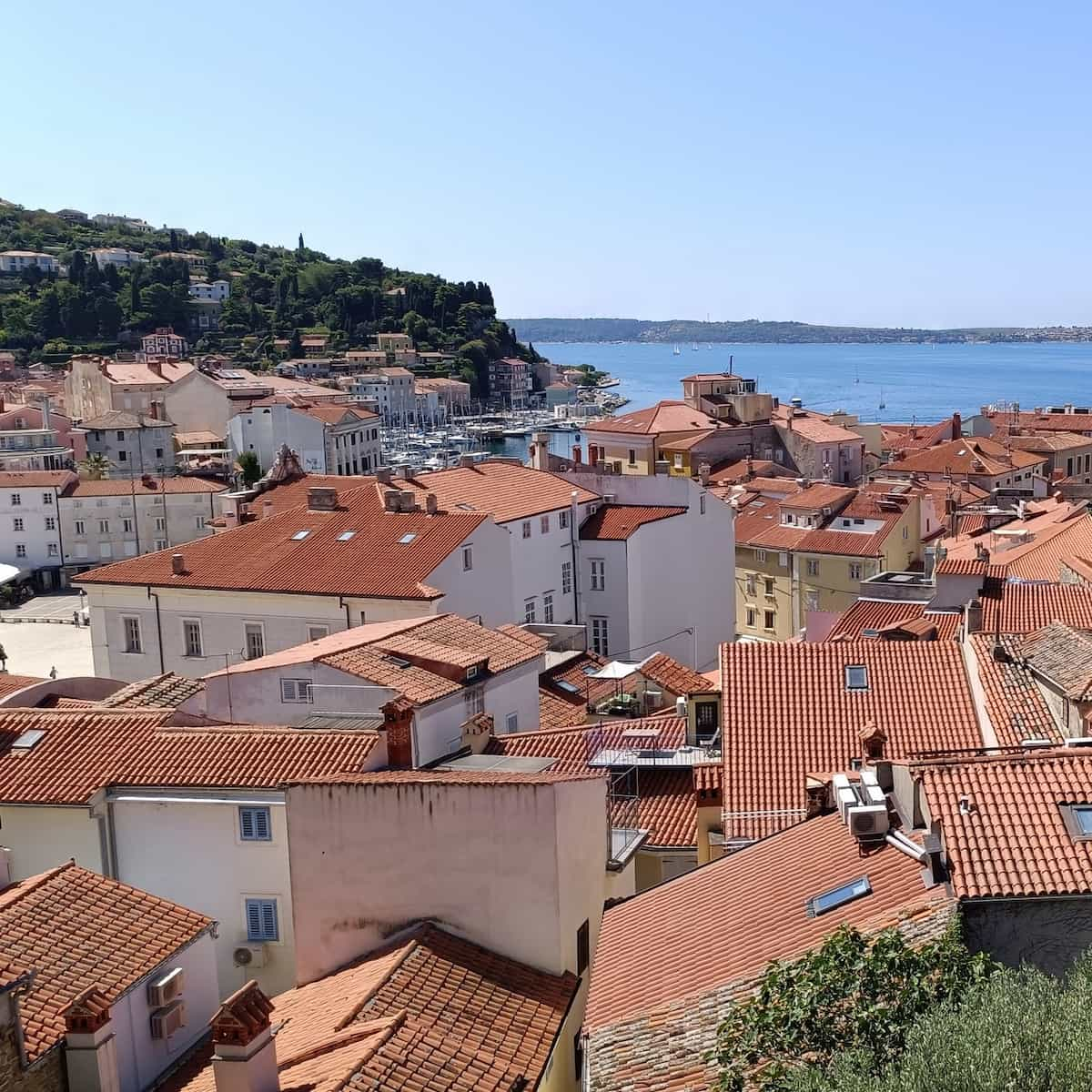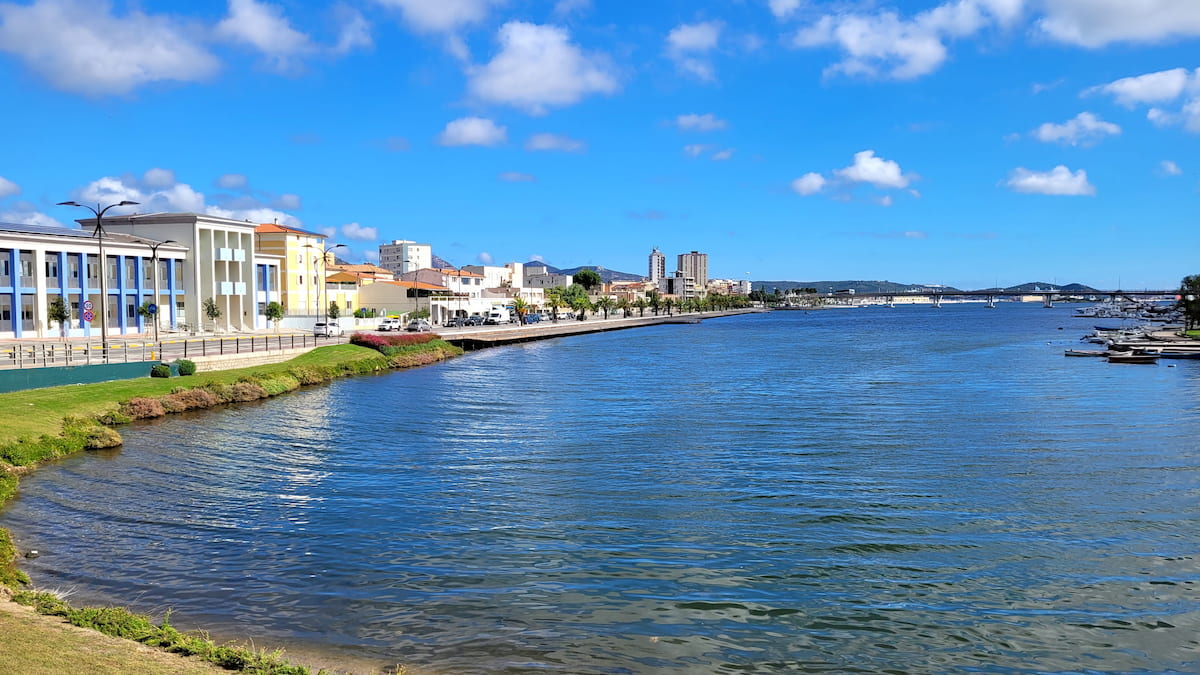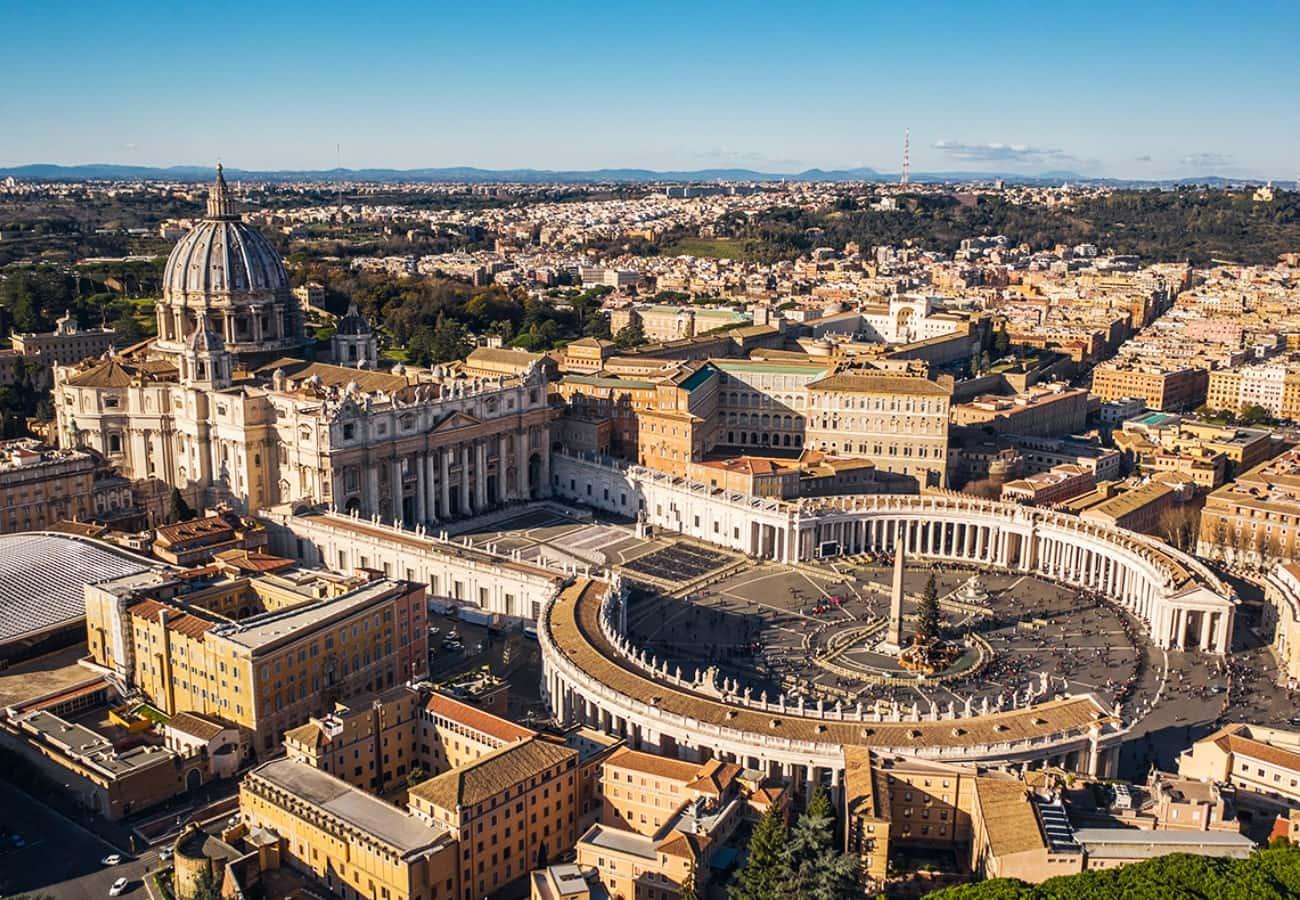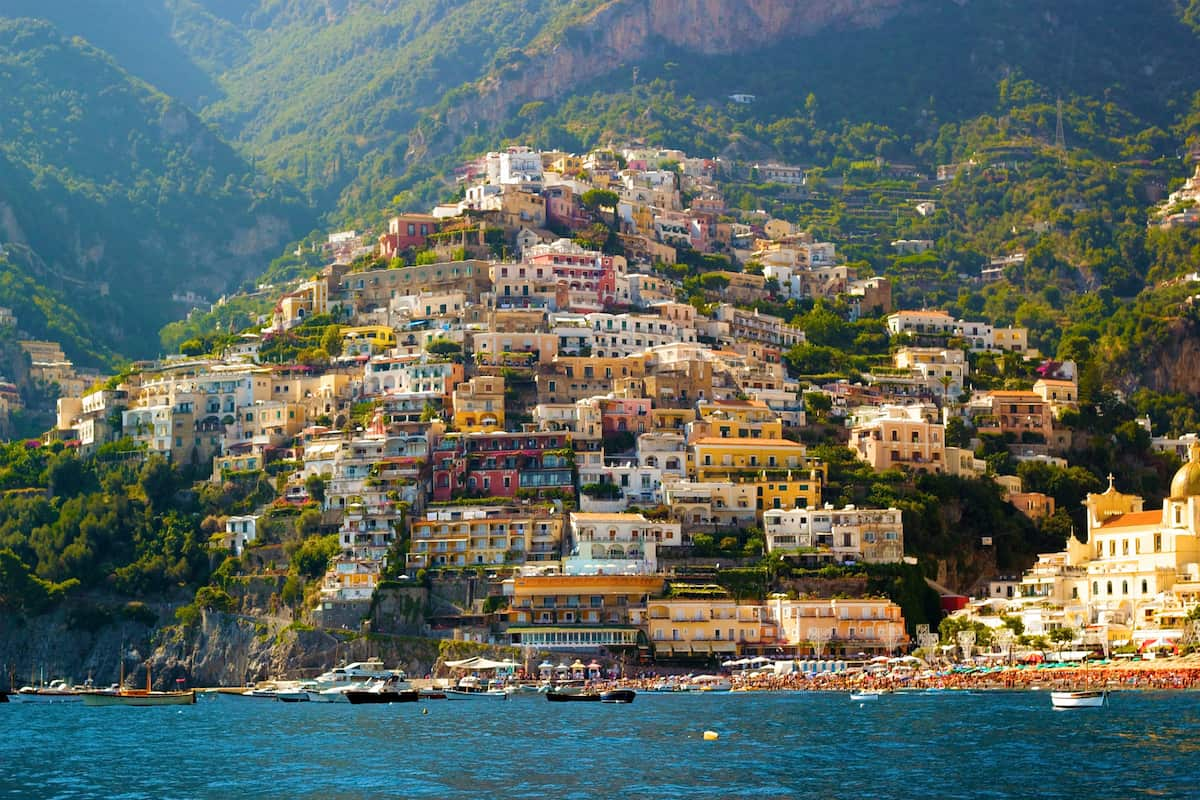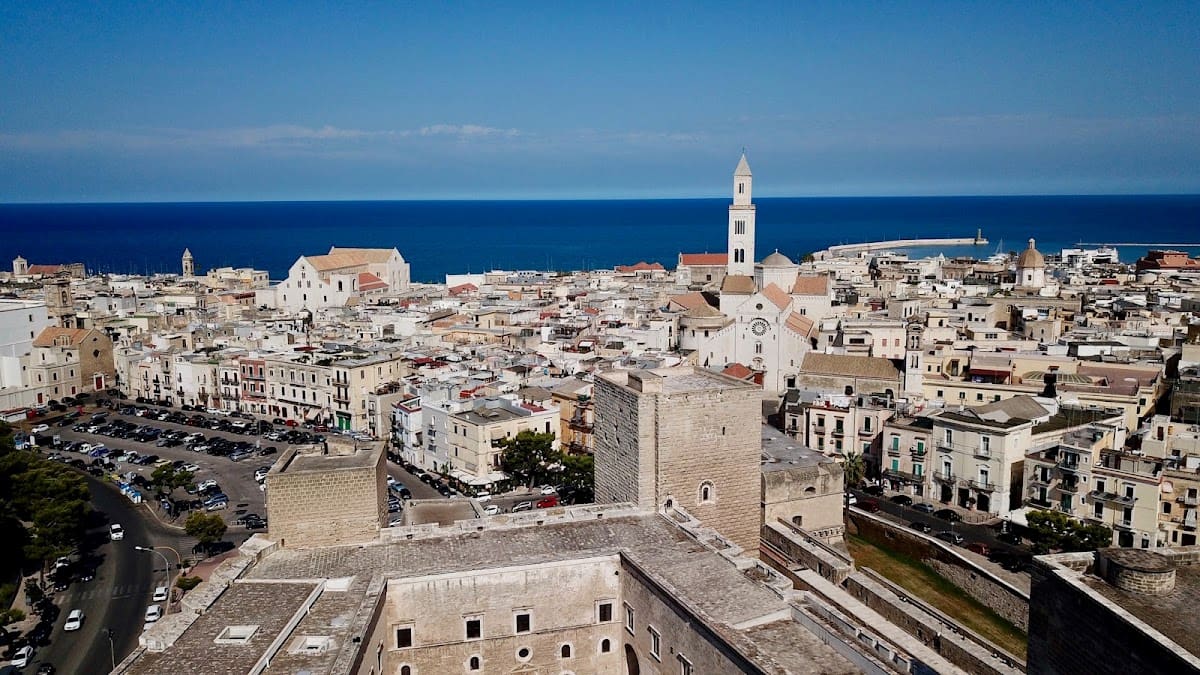Trieste, a stunning port city in northeastern Italy, offers a unique blend of Italian, Austrian, and Slovenian influences. From the magnificent Piazza Unità d’Italia, the largest sea-facing square in Europe, this city in Italy is filled with rich history and architectural wonders. Whether exploring the Roman ruins or strolling along the picturesque Canal Grande, there are plenty of things to do in Trieste.
🏠 Where to Stay in Trieste
- ✨ 5-Star: Grand Hotel Duchi d'Aosta
- 🏨 4-Star: Hotel Coppe
- 🛏️ 3-Star: Hotel Forvm Boutique
- 💸 Cheap: Residence Montanelli
- 🏢 Apartament: Residence Neverin Trieste
- 👨👩👧👦 For Families: Residence Liberty
- 🏩 For Couples: Palace Suite
The city center of Trieste offers an extraordinary mix of medieval architecture and grand palazzos, from the stunning Castello di San Giusto to the Serbian Orthodox Church and Roman ruins that tell tales of ancient civilizations. The Canal Grande cuts through the heart of this Italian city, while the surrounding buildings showcase a remarkable architectural legacy that reflects Trieste’s position at the border with Slovenia, making it an ideal base for trips exploring both the Friuli Venezia Giulia region and the Slovenian coast.
💁 Best Guided Tours
- Experience Trieste Private Tour from € 180 (⭐5/5)
- Miramare Castle Private Tour from € 85 (⭐5/5)
- Private Trieste Sightseeing Tour from € 100 (⭐5/5)
- Small-group Pasta and Tiramisu Class from € 145 (⭐4.5/5)
Best Things To Do in Trieste
1. 🏰 Miramare Castle (Castello di Miramare)
Historic Splendor: Among the top Trieste sights, Miramare Castle stands as the city’s most photographed landmark and essential Trieste must-see. This 19th-century architectural masterpiece, perched on the Gulf of Trieste, showcases Habsburg opulence through its meticulously preserved royal apartments and maritime-themed interiors.
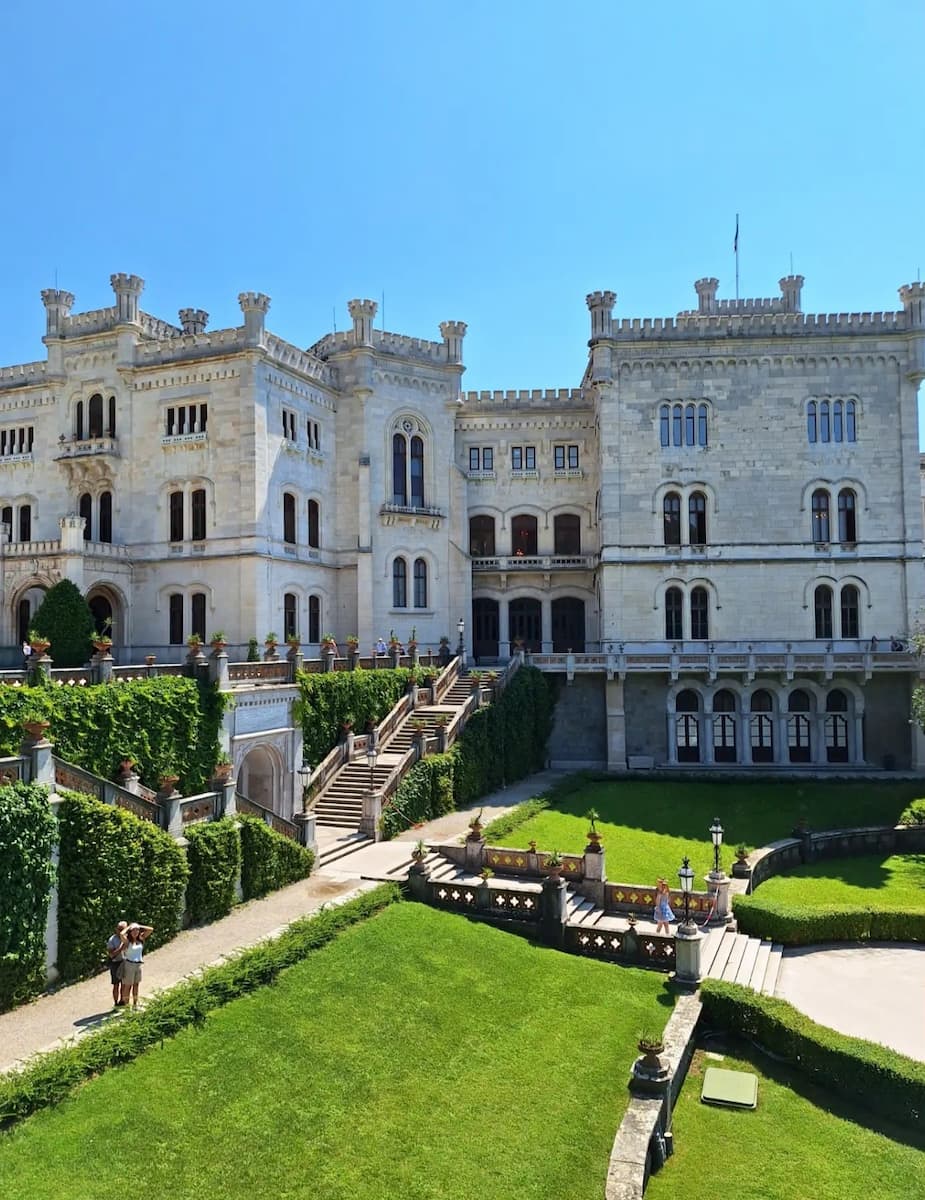
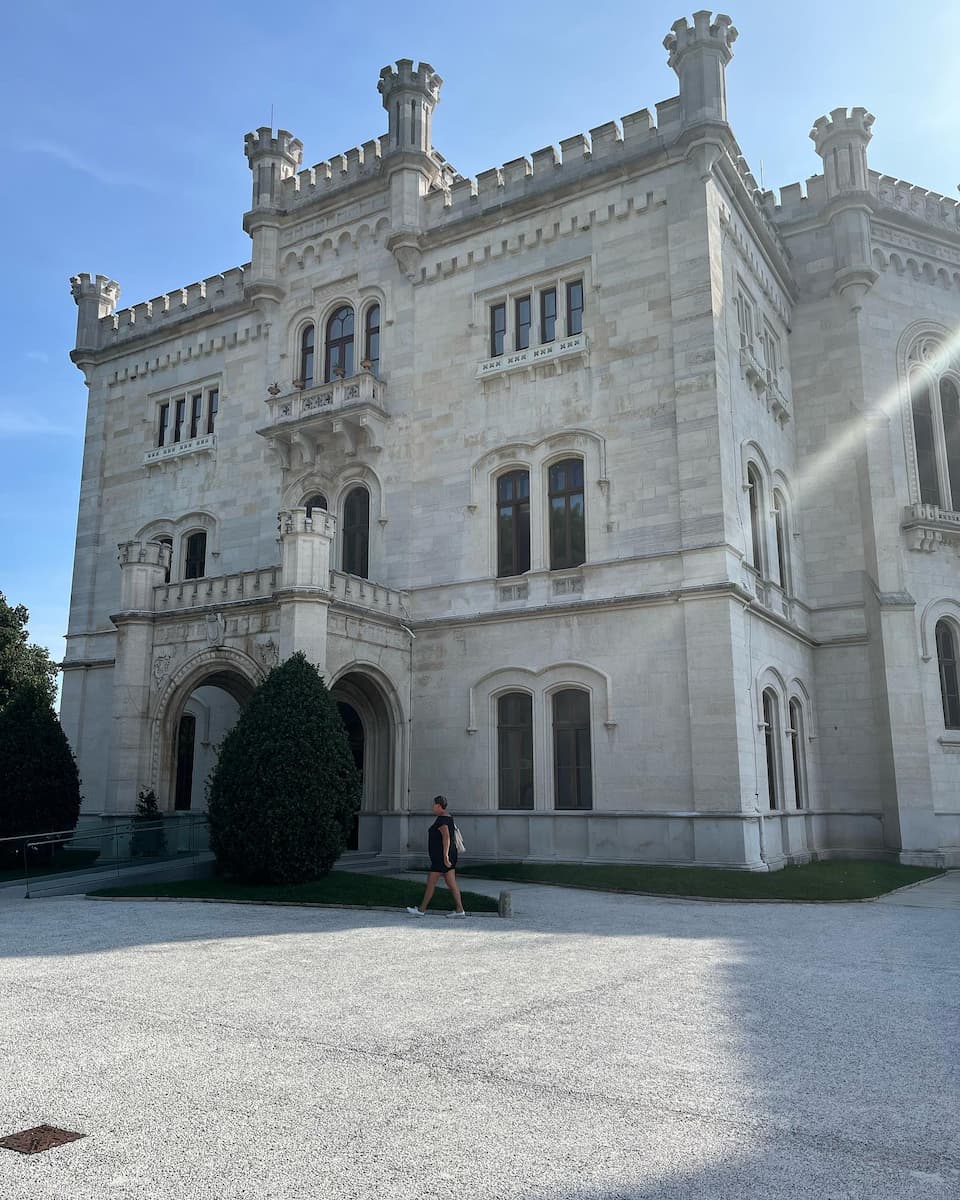
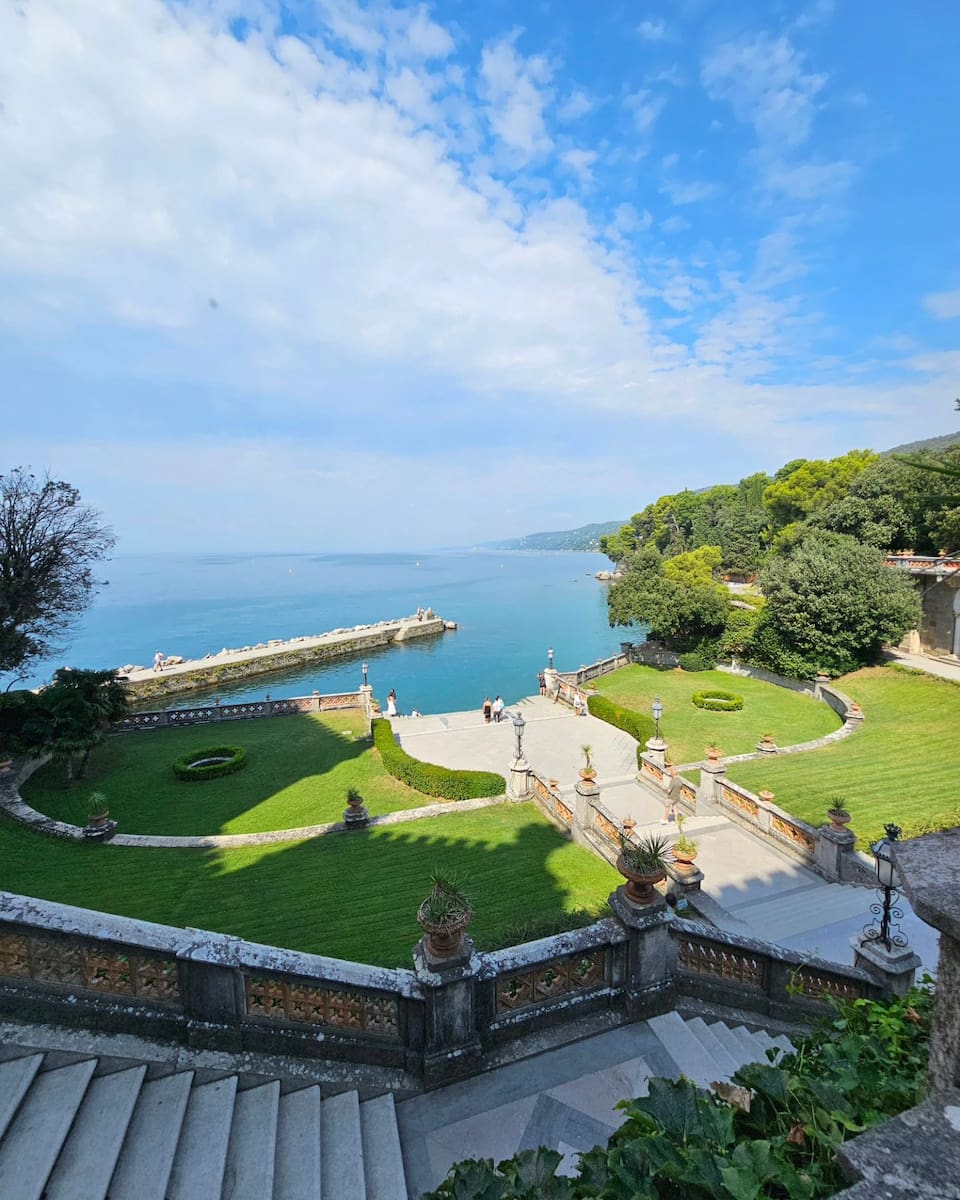
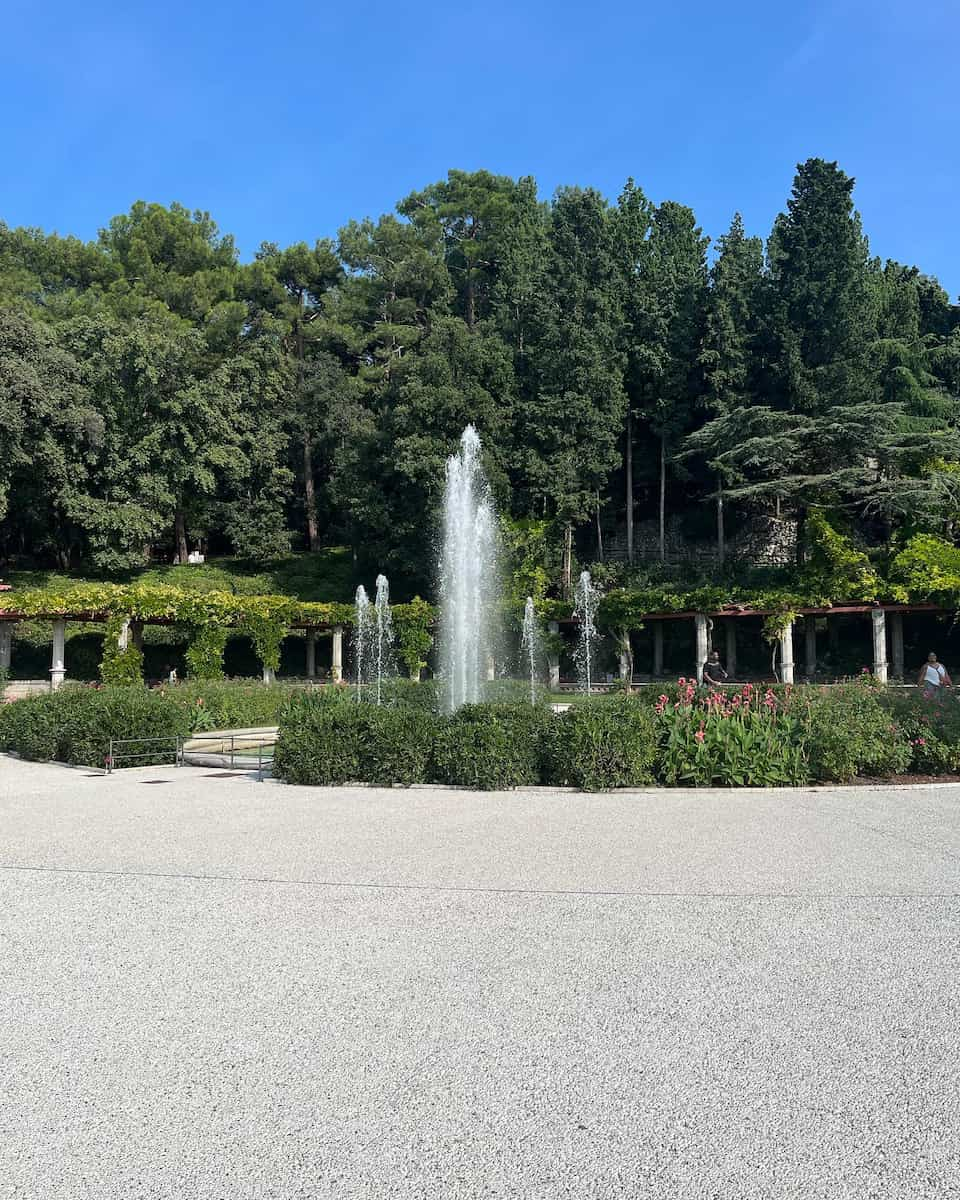
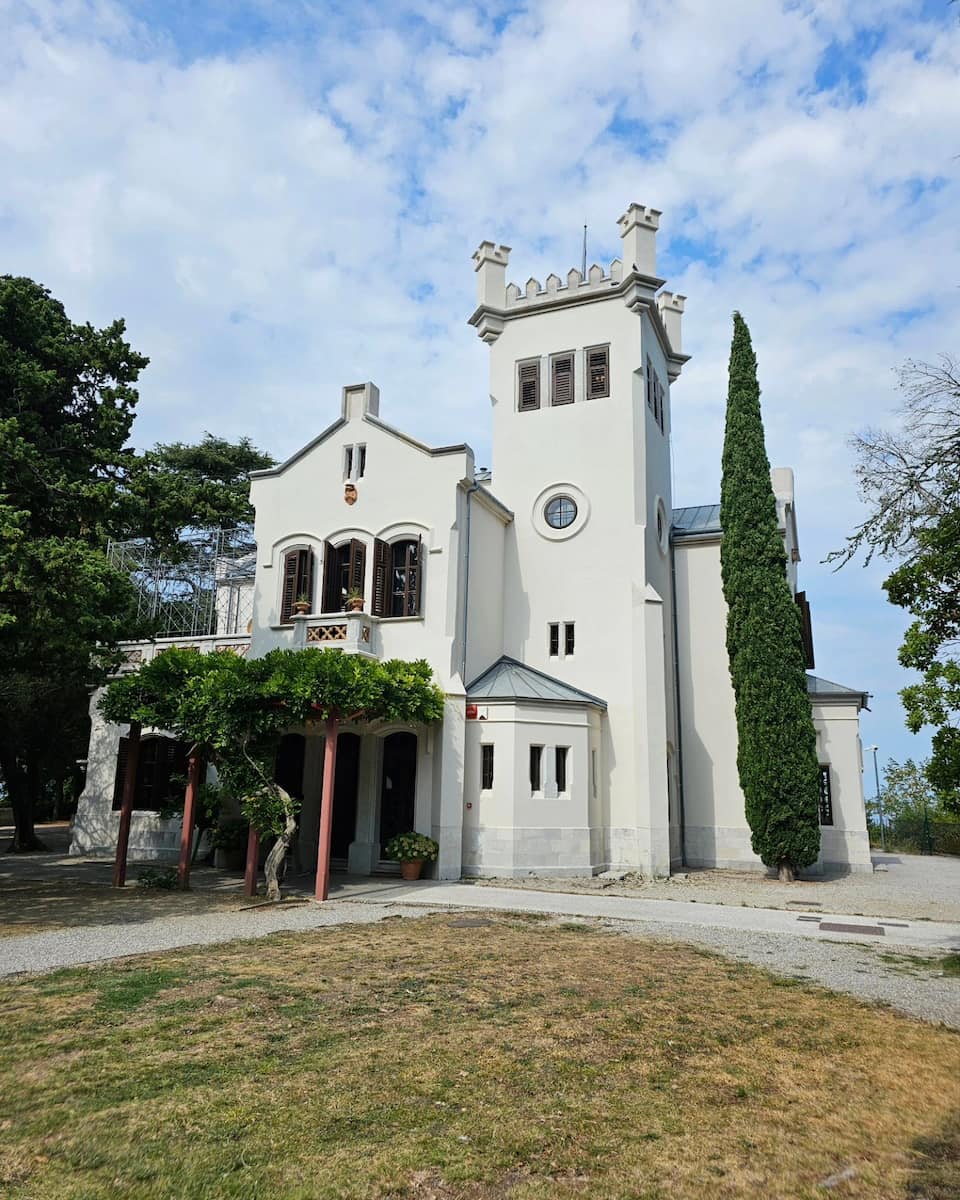
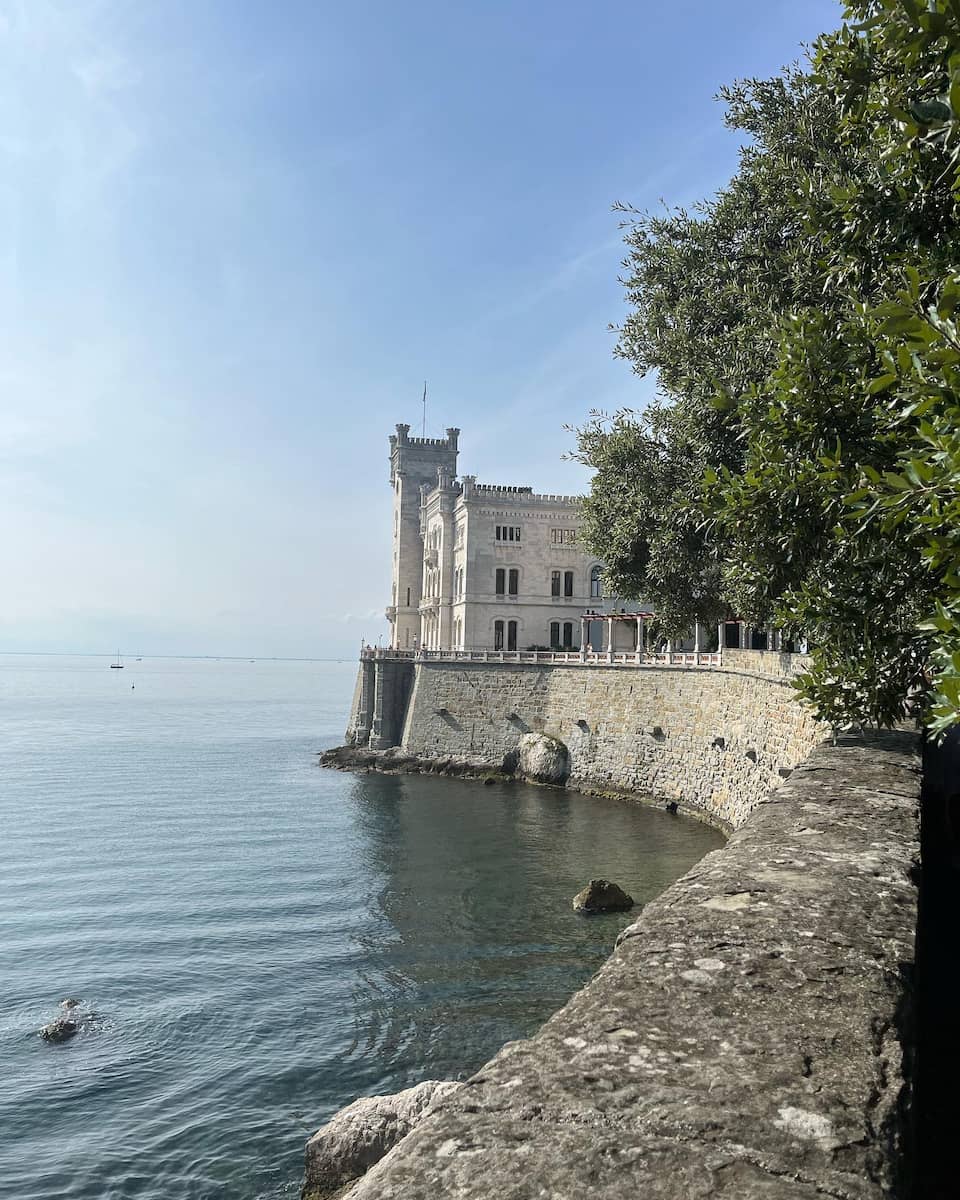
Coastal Heritage: The castle grounds feature among the best places to visit in Trieste, with botanical gardens, seaside terraces, and the intriguing Cave of Archduchess Charlotte. The Miramare Castle complex ranks consistently as one of Trieste’s top tourist attractions, offering Instagram-worthy views of the Adriatic Sea.
Time Saver: Book Miramare Castle skip-the-line tickets online; visit during weekday mornings for the best Trieste photography opportunities.
⭐ Best activities
- Tour: Panoramic Tour of Trieste and Miramare Castle – This comprehensive tour combines the best of Trieste’s city center attractions with a visit to the stunning Miramare Castle, offering spectacular views of the Adriatic Sea.
- Ticket online: Miramare Castle and Park: Entry Ticket – Explore a grand former royal residence near Trieste.
2. 👑 Castello di San Giusto
Medieval Legacy: Perched atop San Giusto hill since the 15th century, this emblematic fortress was commissioned by Emperor Frederick III in 1468 as a fortified residence for the Imperial Captain. The castle’s strategic location has been inhabited since the Bronze Age, making it one of Trieste’s most historically significant landmarks.
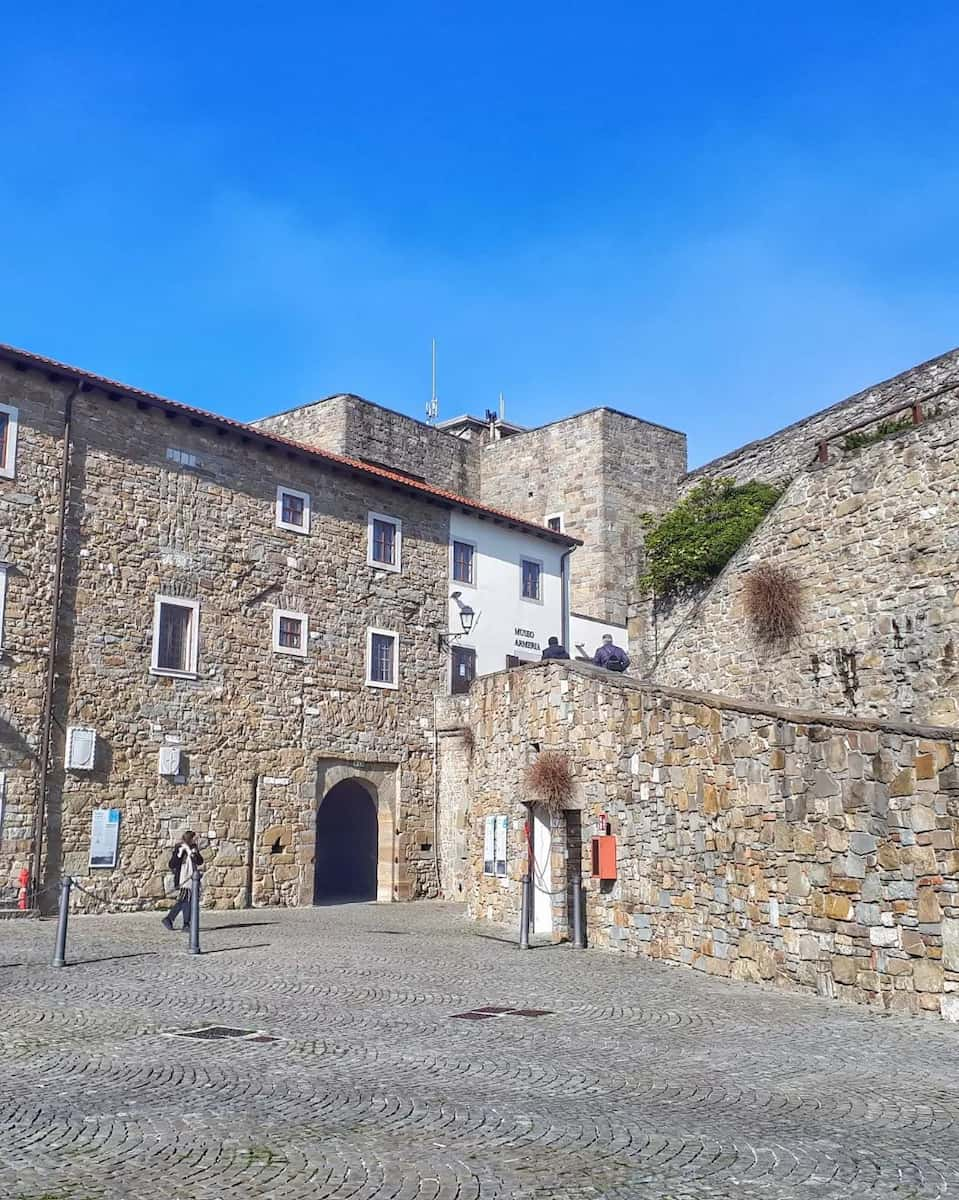
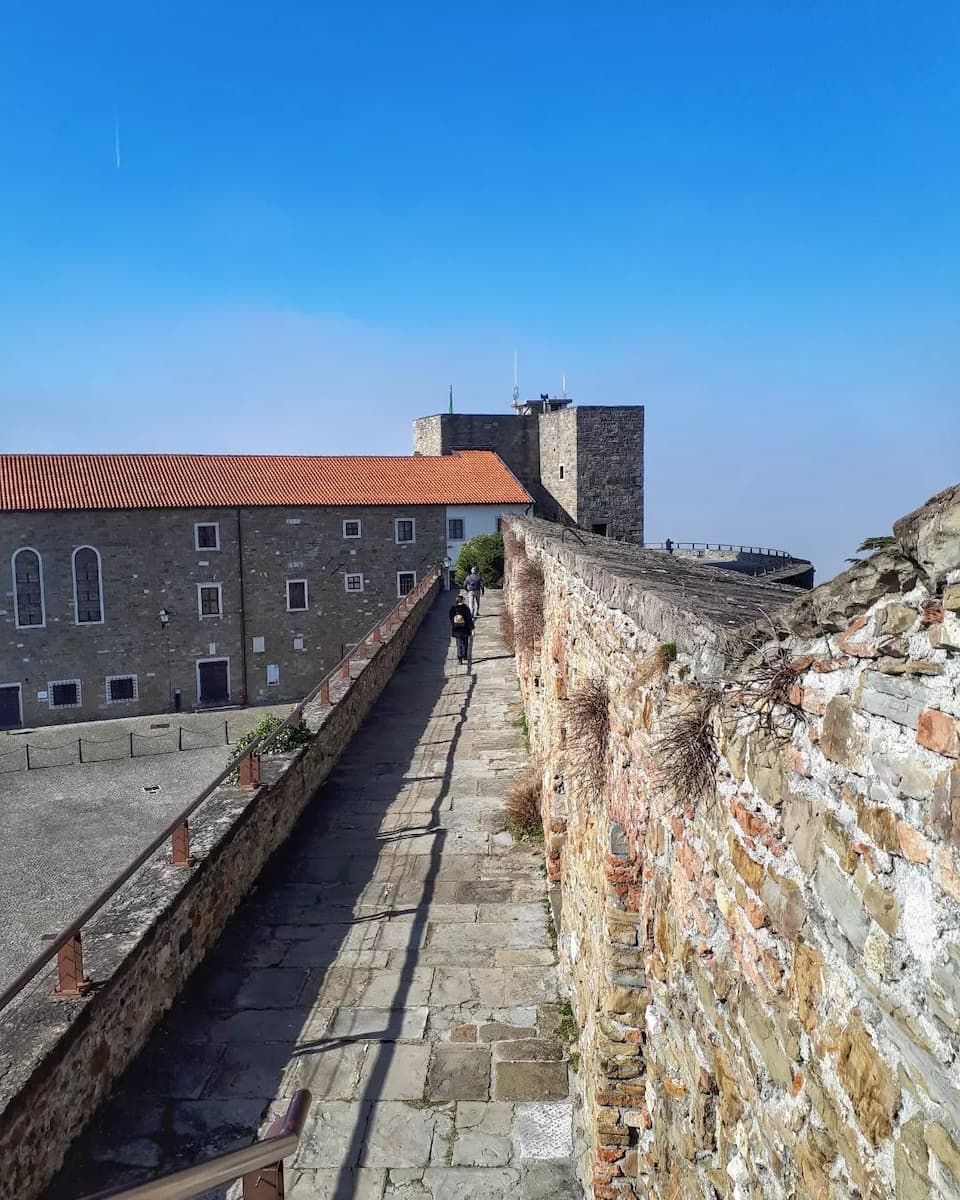
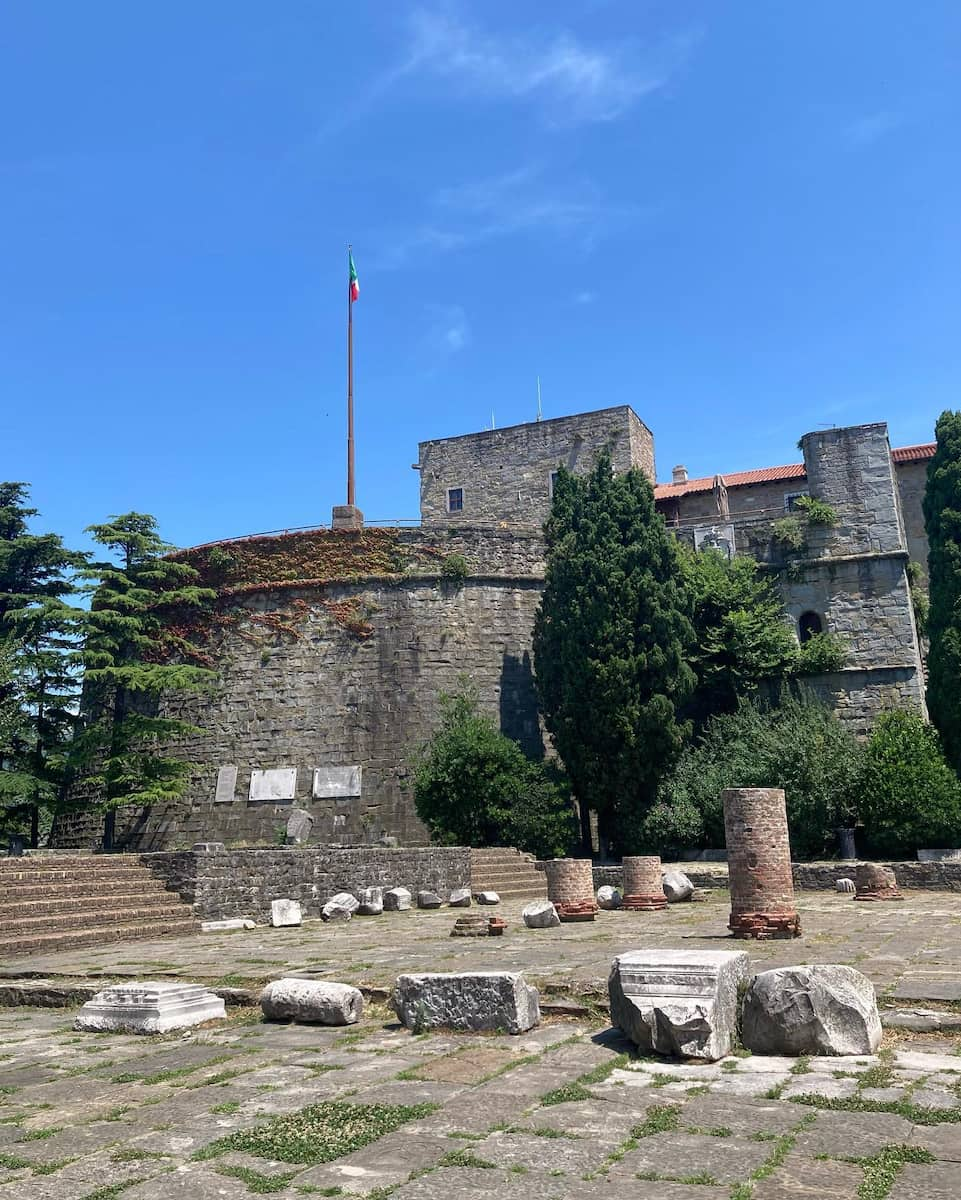
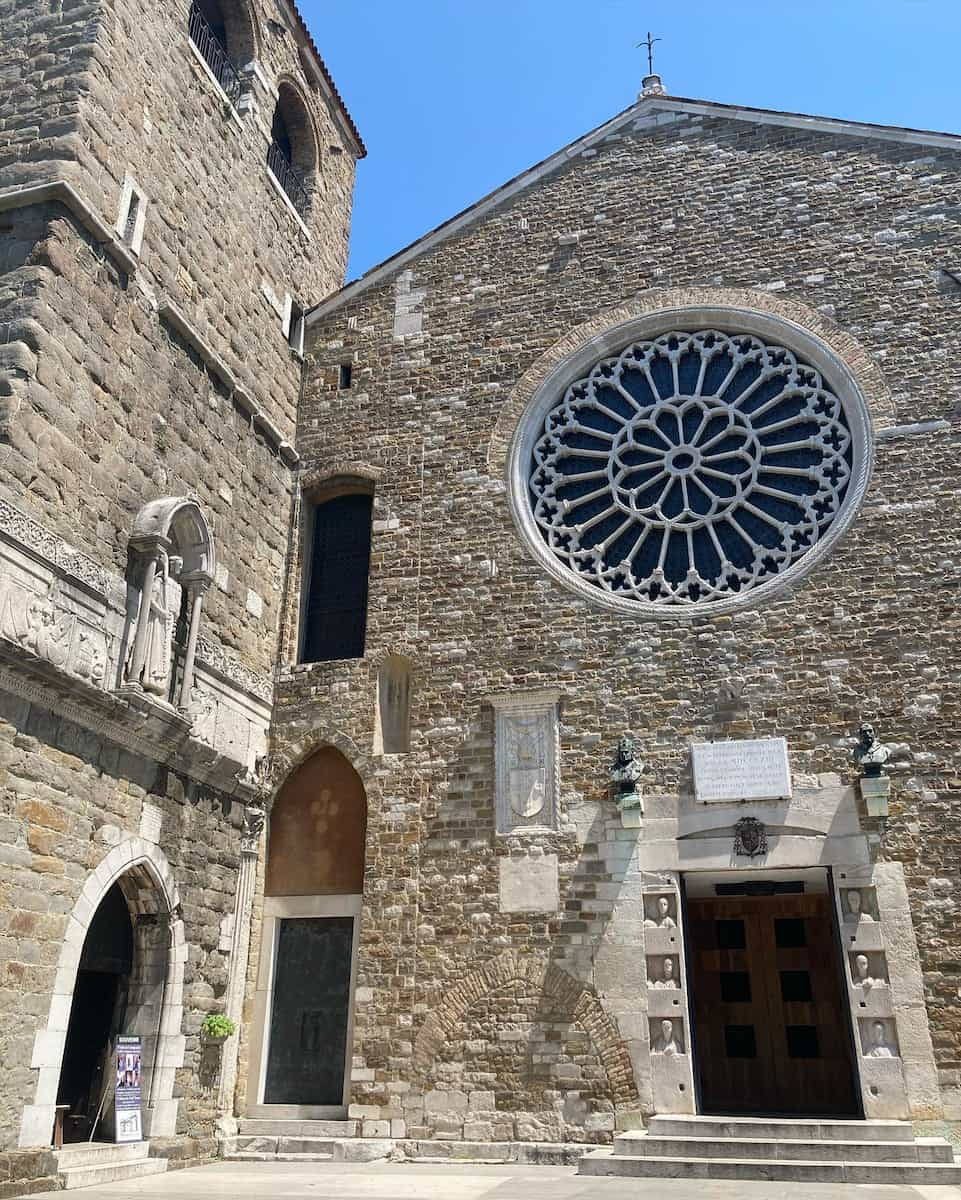
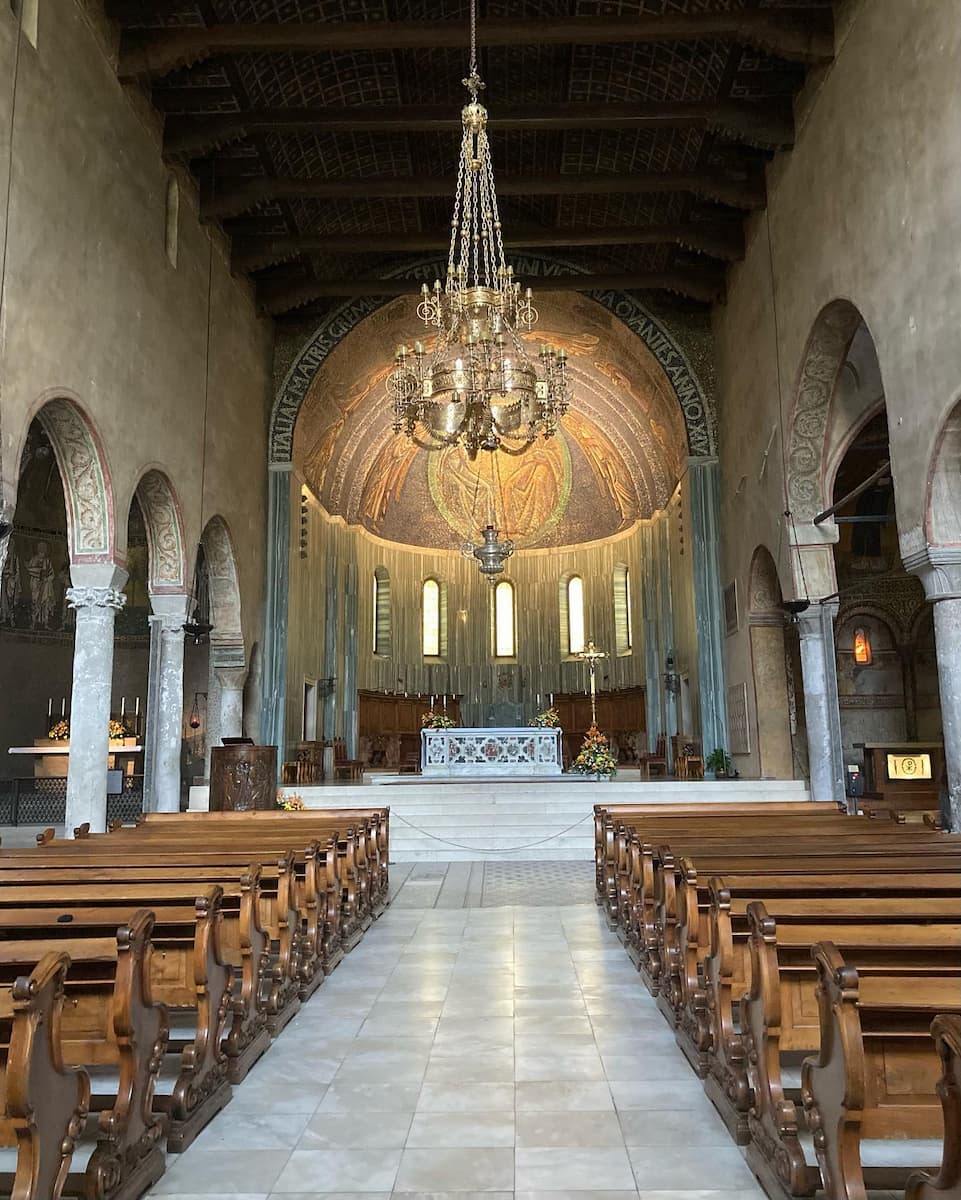
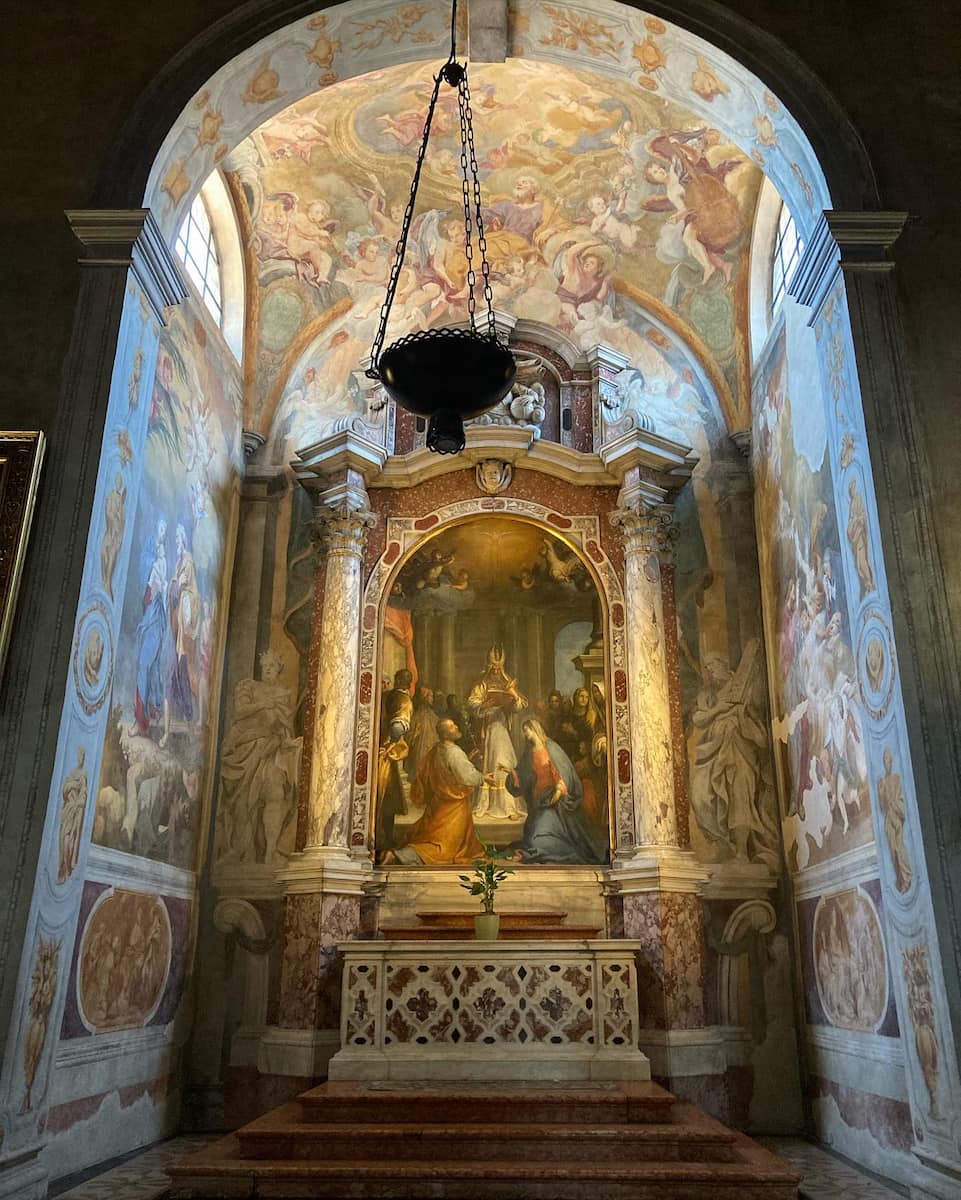
Architectural Evolution: The castle’s distinctive triangular structure evolved over centuries, featuring three remarkable bastions: the Bastione Rotondo (1508-09), built during brief Venetian occupation, the polygonal Bastione Lalio (1557), and the Bastione Fiorito (1636), which completed the fortress. Inside the Captain’s House, visitors can explore the Late Gothic San Giorgio Chapel and the sumptuous Sala Veneta with its stunning 16th and 17th-century Venetian furnishings.
Local Insight: Include this stop in your Trieste walking tour during late afternoon for optimal lighting and authentic Trieste food at the castle café.
⭐ Best tour
- Private Trieste Sightseeing Tour – This comprehensive 2.5-hour private tour takes visitors through Trieste’s city center, exploring the unique blend of Italian and Austro-Hungarian architecture.
3. 🏛️ Museo Revoltella
Cultural Heritage: Ranking high among Trieste’s art museums, the Revoltella Museum showcases premier European art collections in a historic Trieste palazzo. This cultural institution stands as one of the finest examples of Trieste’s museums, offering visitors a journey through 19th and 20th-century artistic masterpieces.
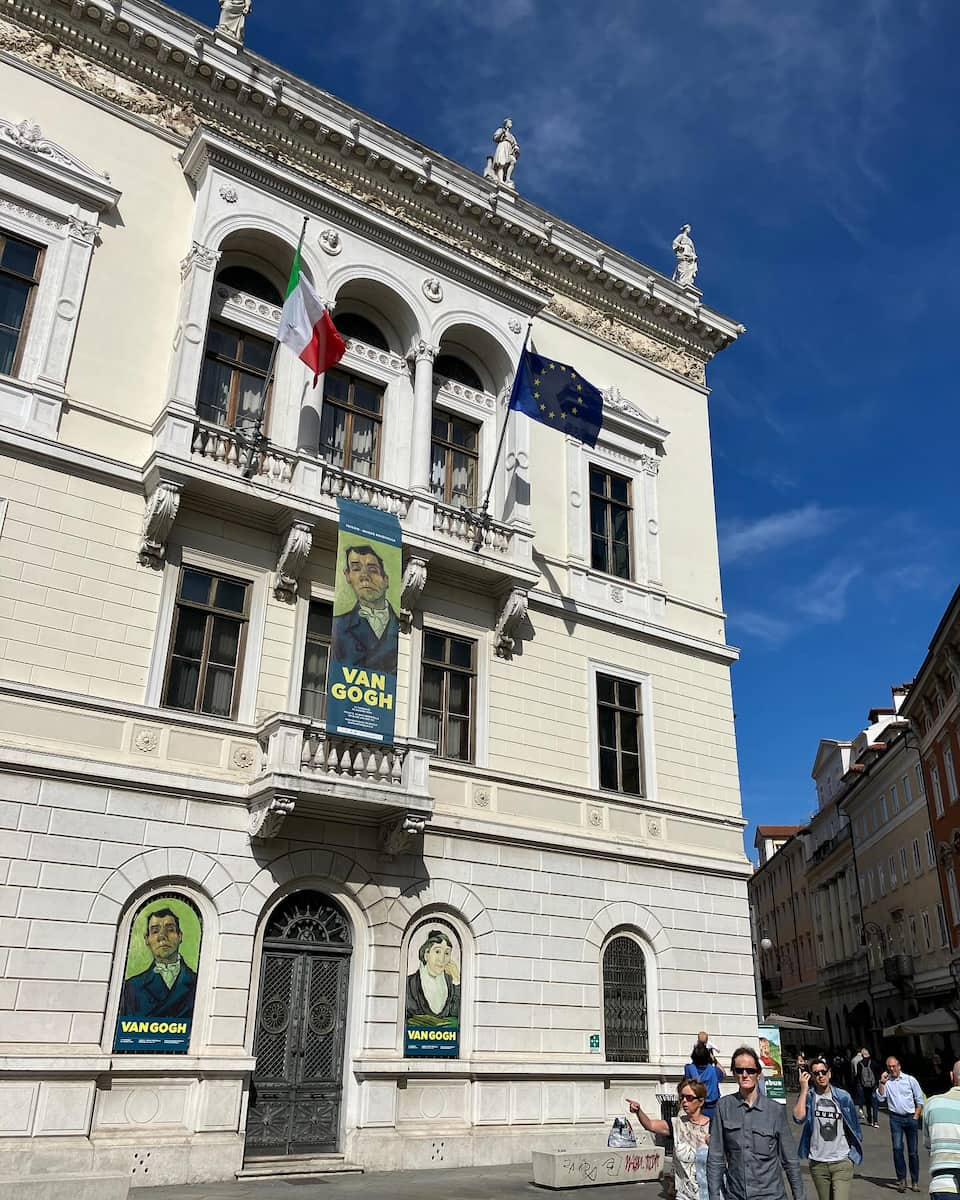
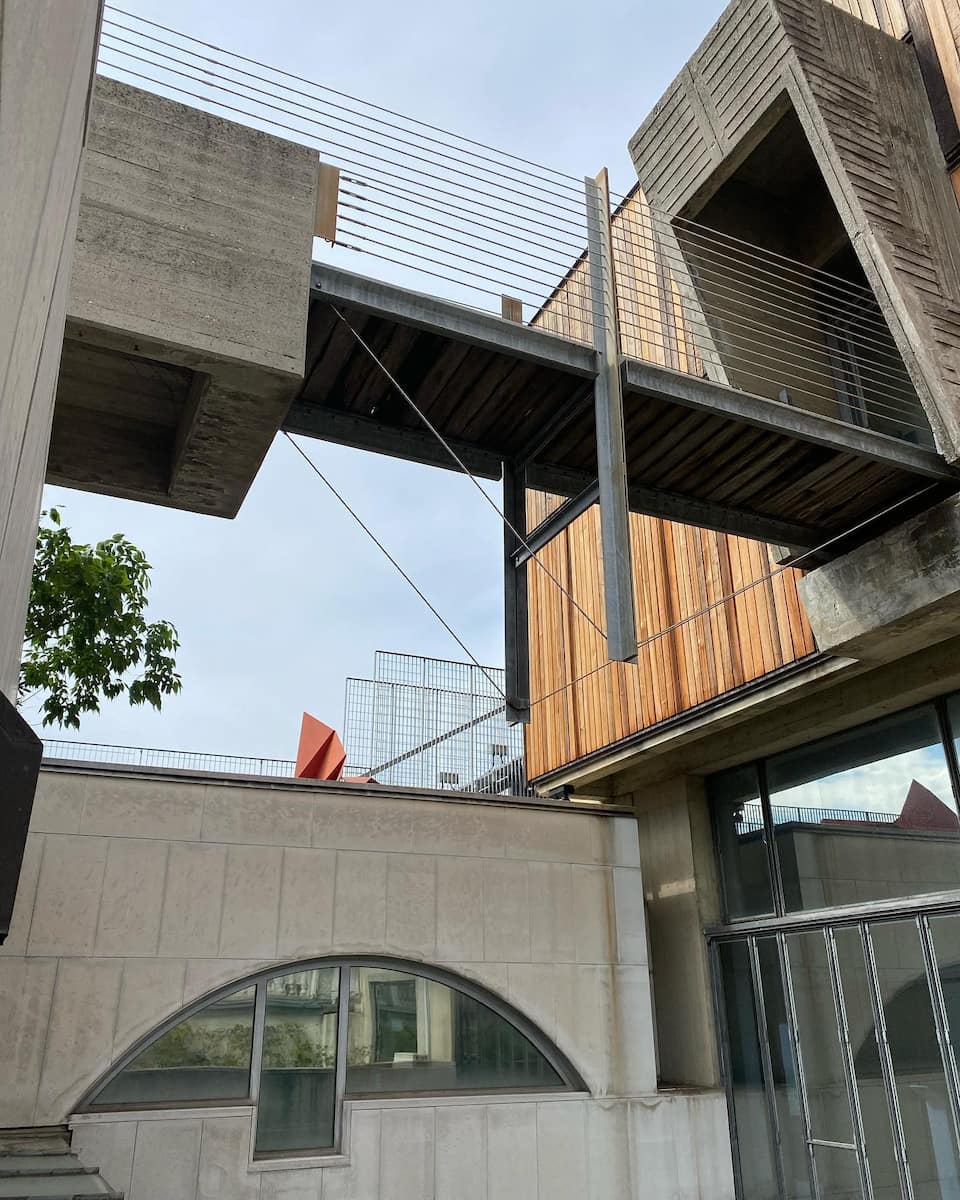
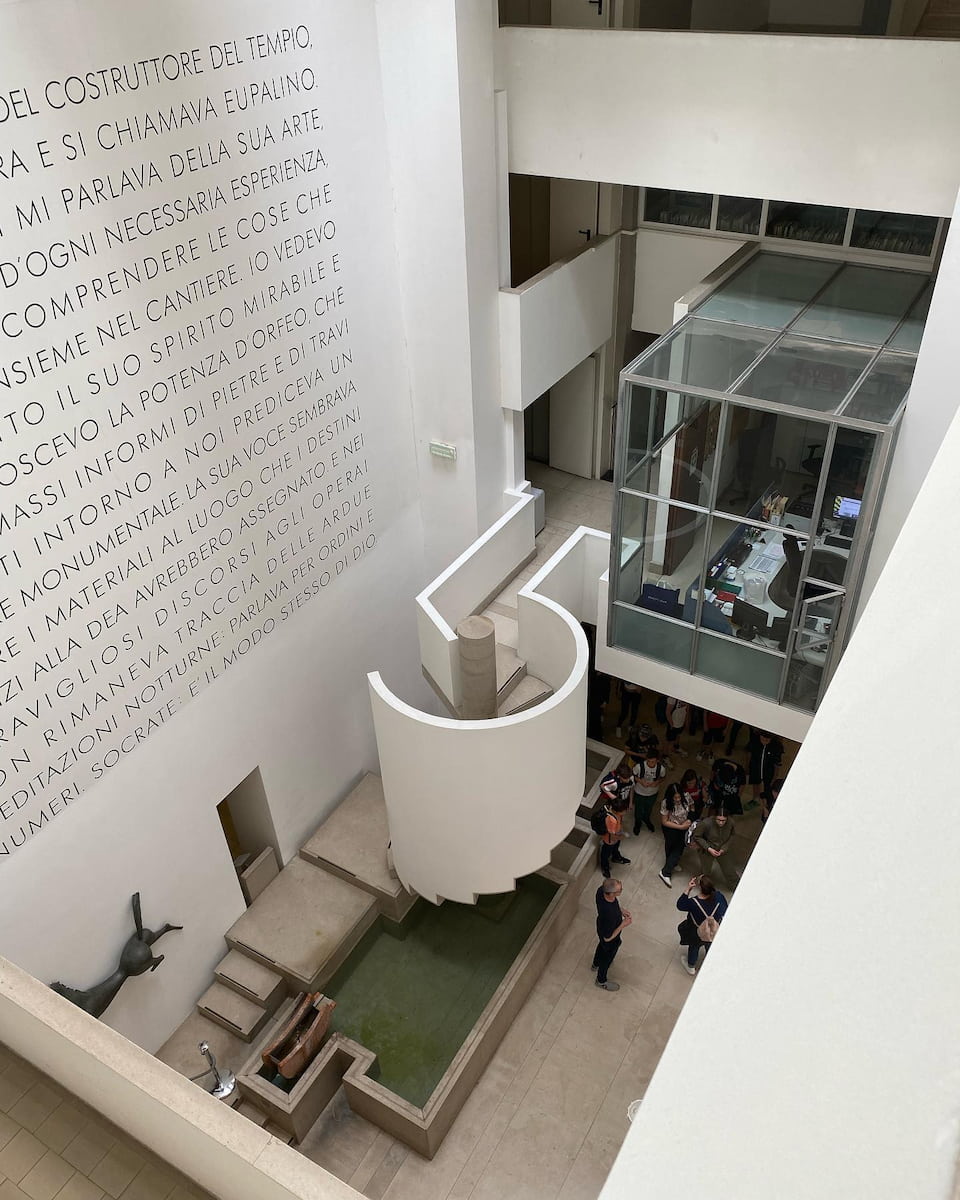
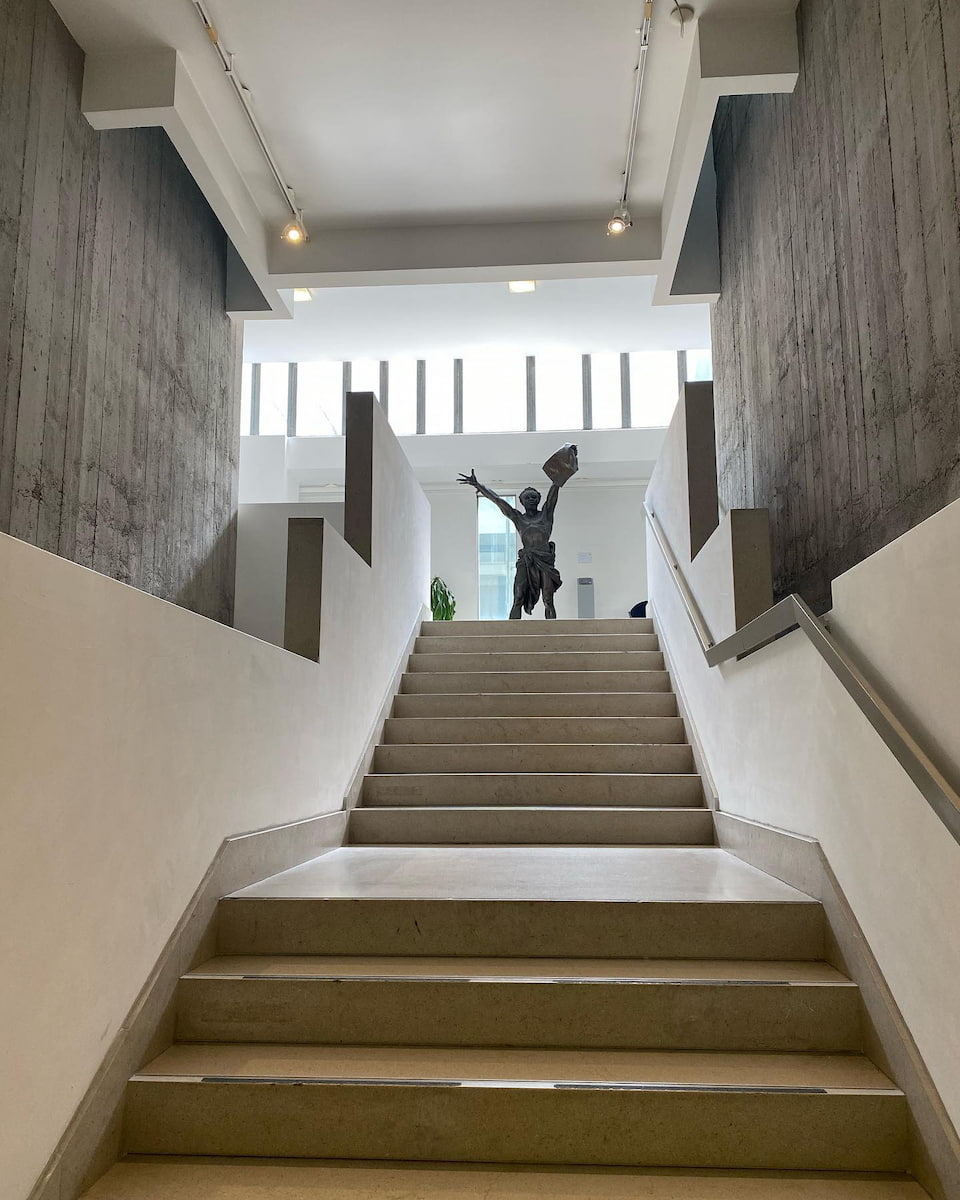
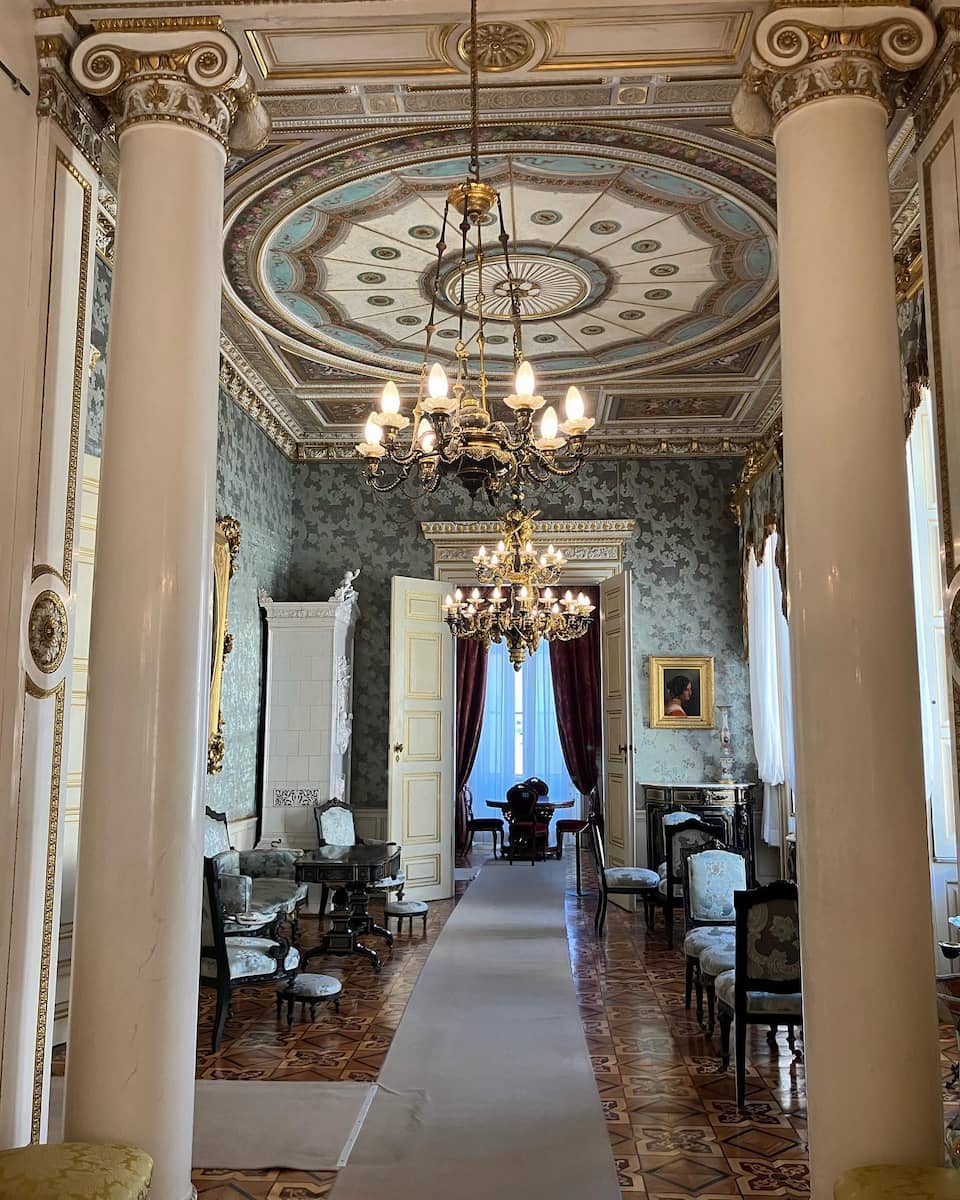
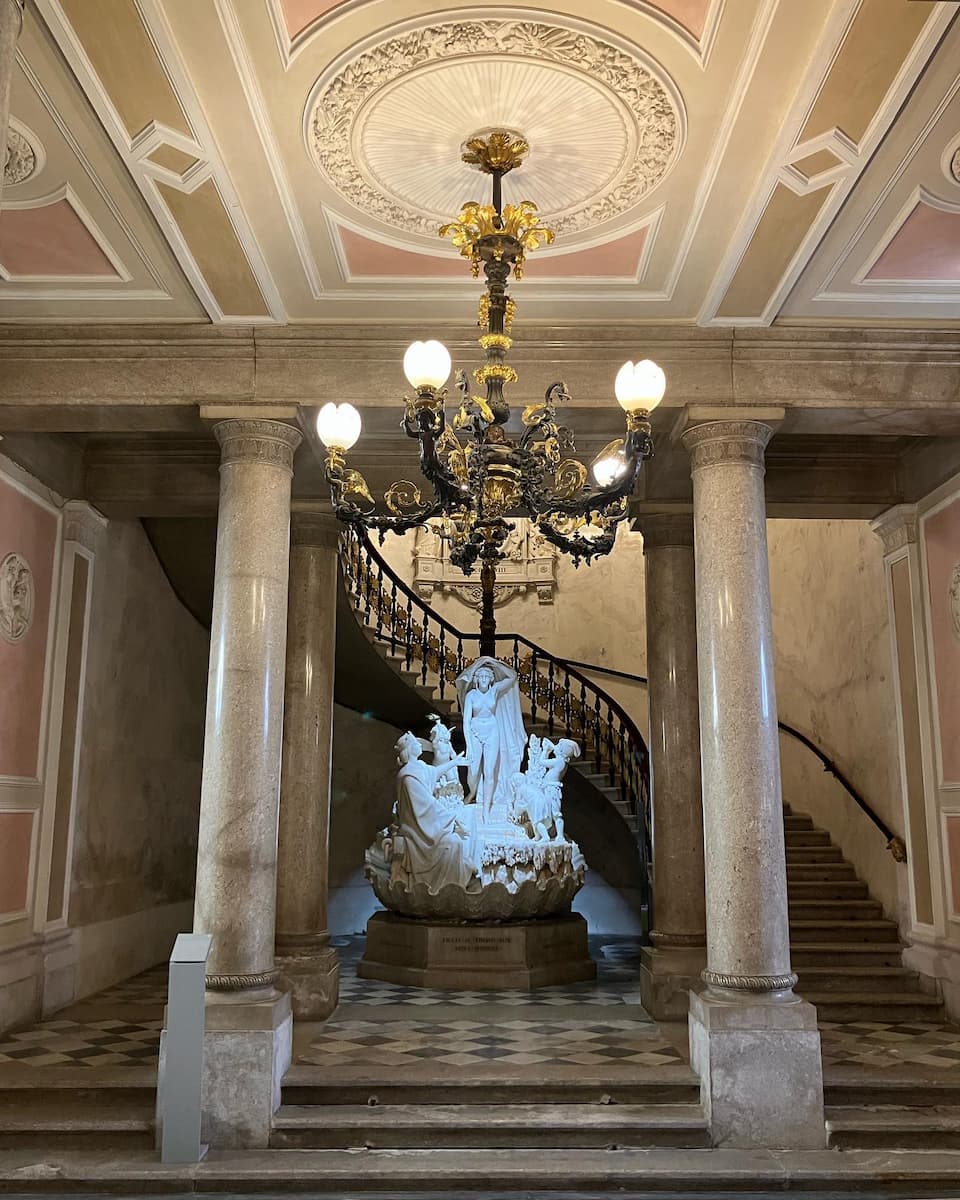
Artistic Legacy: Connected to Trieste’s museum network, including the Civic Museum Sartorio and Oriental Art Museum, this cultural complex represents one of the most enriching indoor activities in Trieste. The museum’s architecture itself serves as one of Trieste’s architectural highlights.
Visitor Guide: Check the Trieste events calendar for special exhibitions; Sunday mornings offer the best museum experience.
⭐ Best tour
- Trieste: City Hidden Gems Private Walking Tour – Explore Trieste’s hidden gems on a private walking tour with a local guide. Discover historic landmarks, vibrant squares, and stunning views while immersing yourself in the city’s charm.
4. 🏛️ San Sabba Rice Mill National Monument
Historical Significance: This sobering Trieste memorial site stands as one of Italy’s most important WWII monuments. Essential for understanding Trieste history, the former concentration camp now serves as an educational museum.
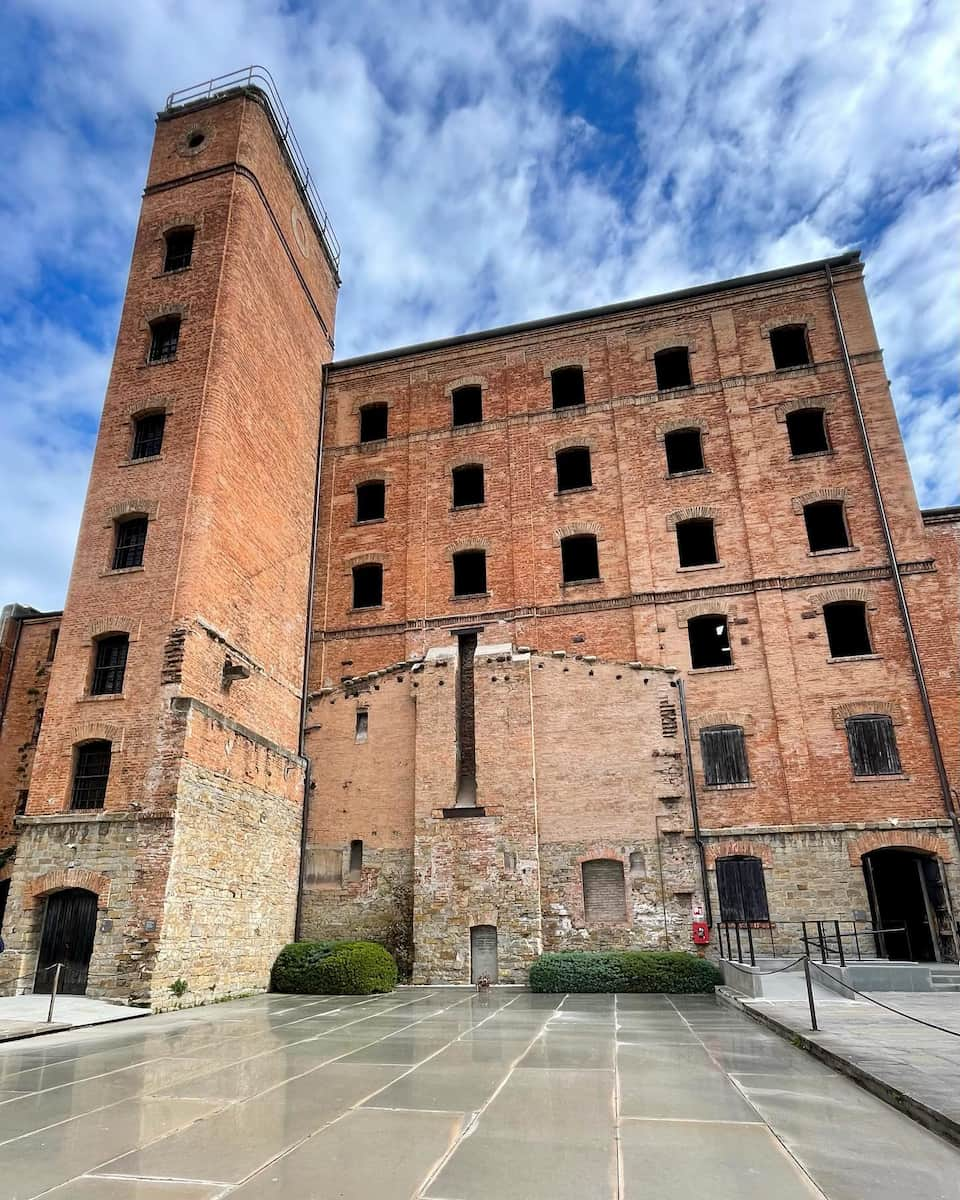
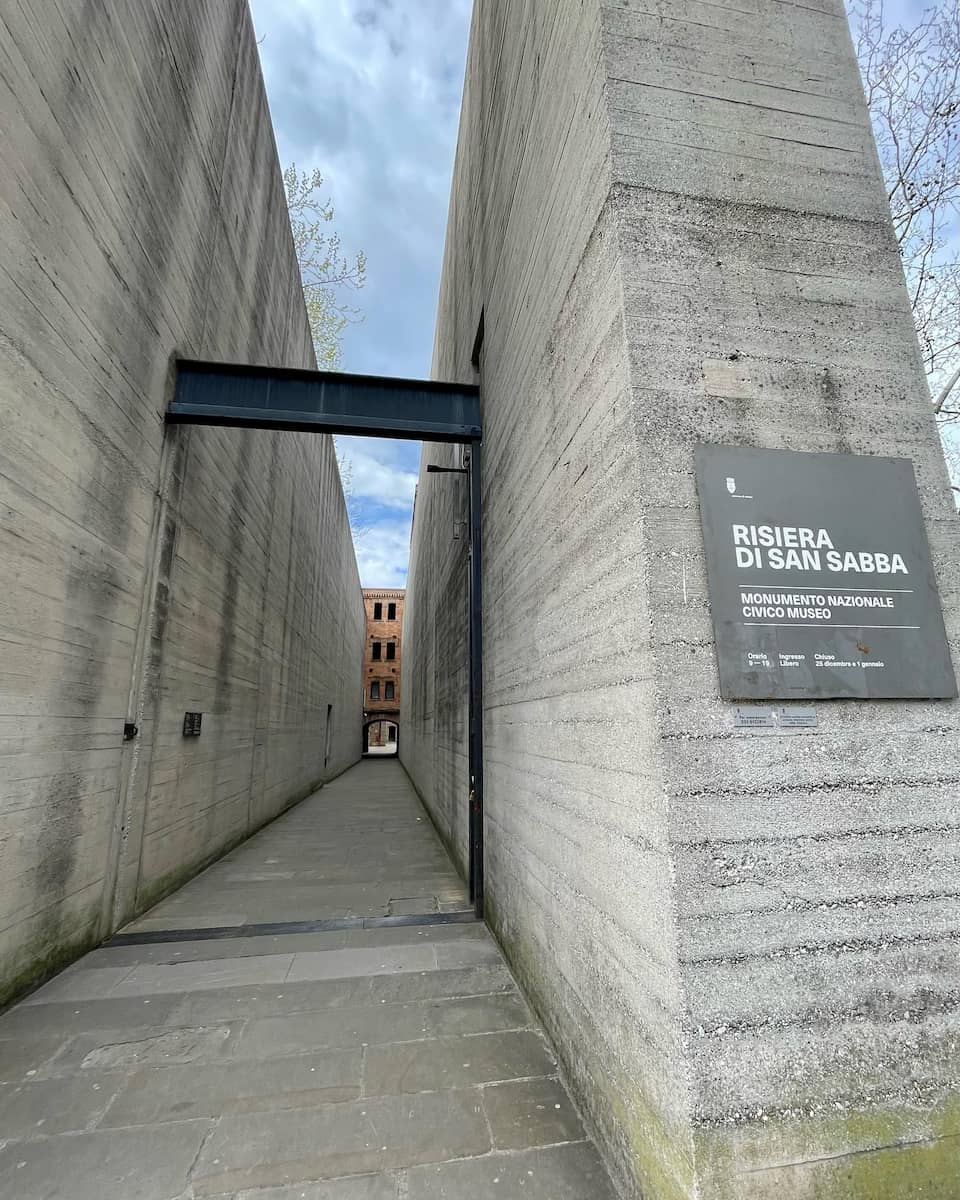
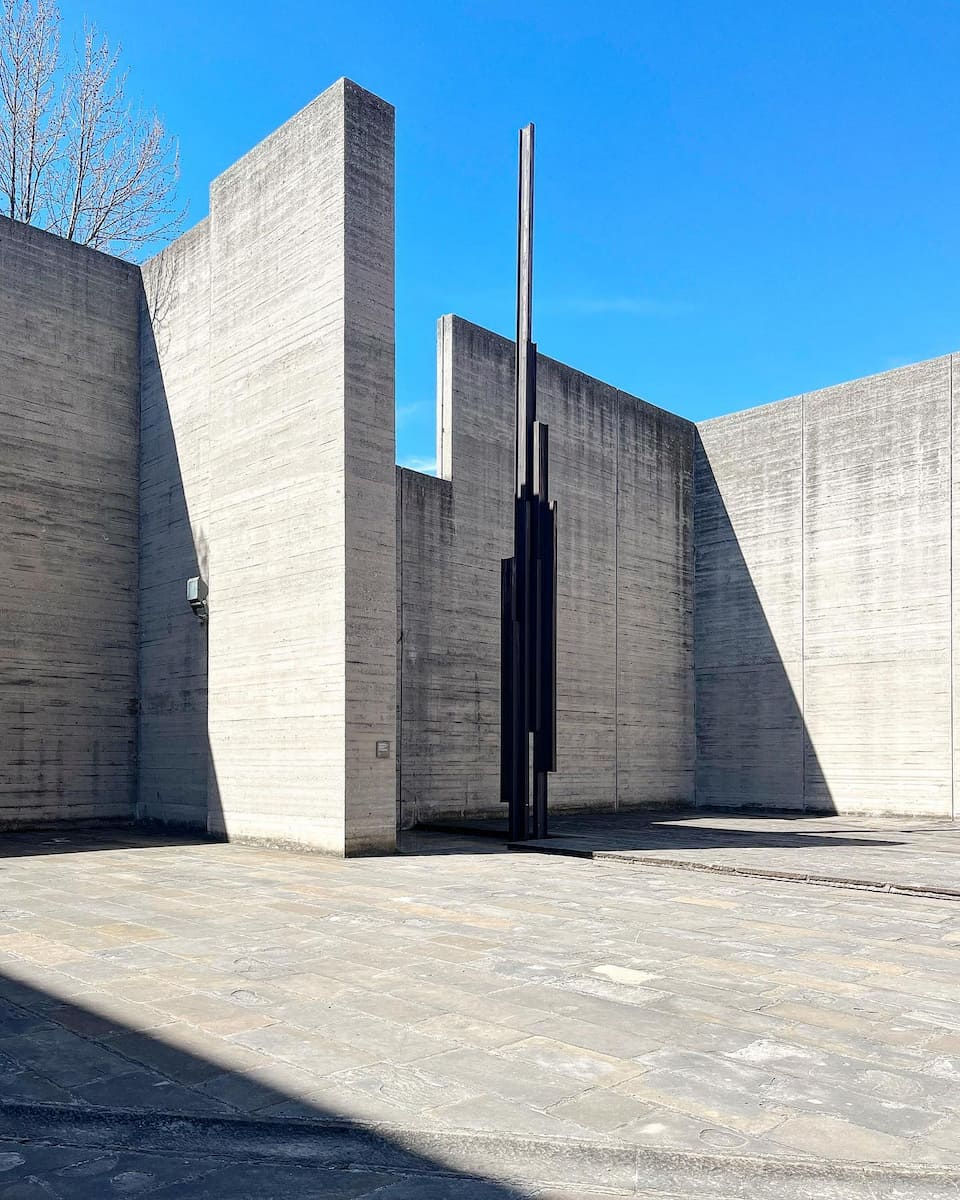
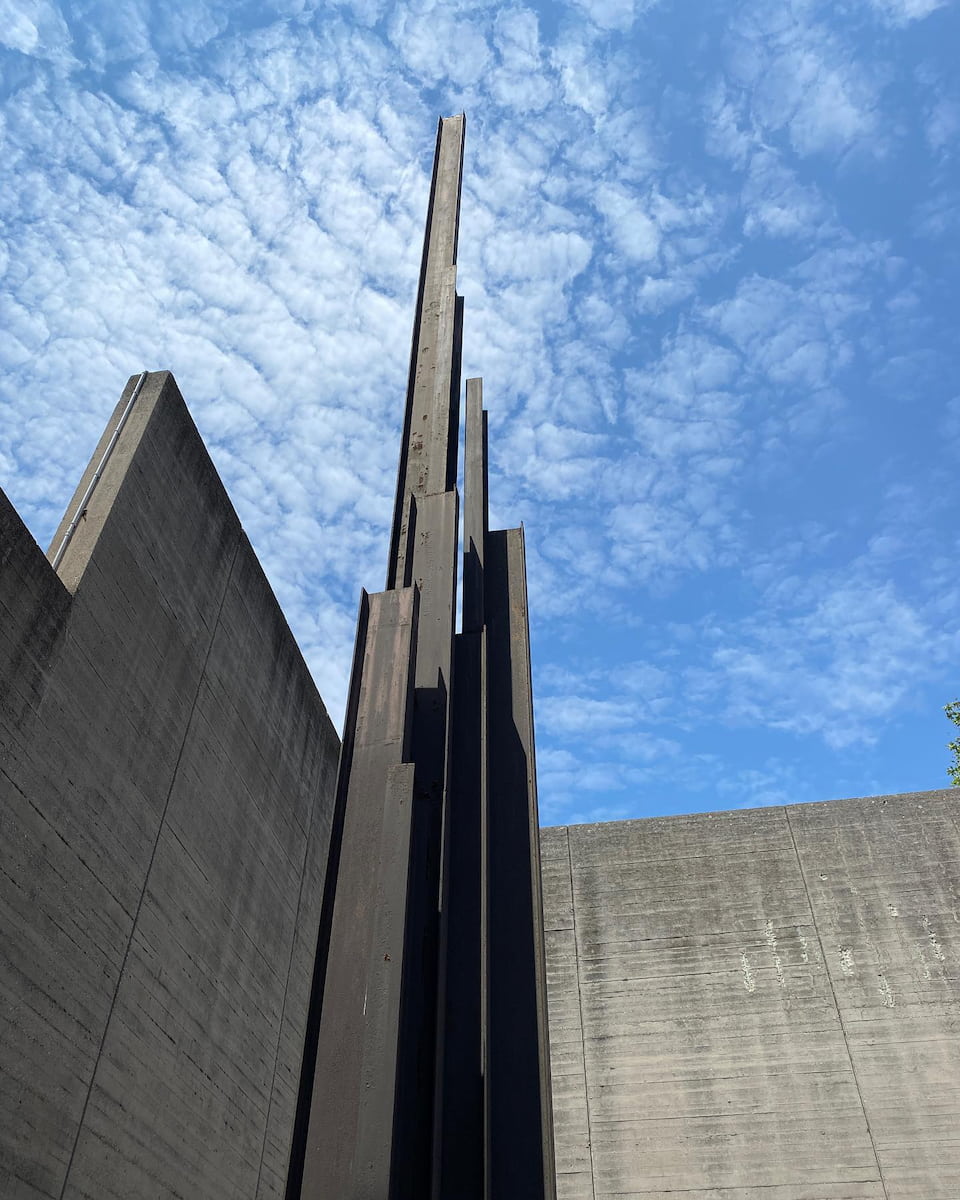

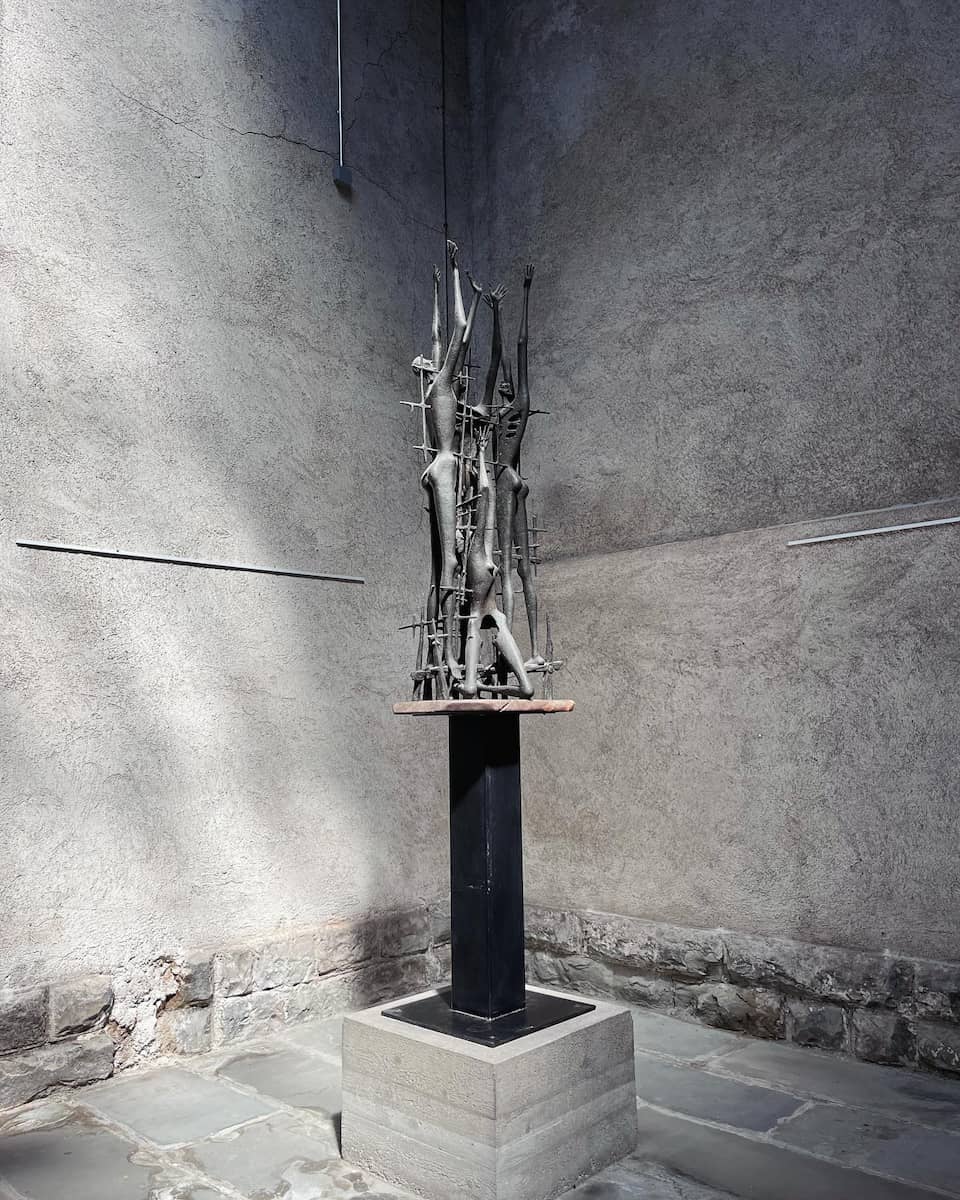
Cultural Preservation: Among the most significant historical places in Trieste, this site offers crucial insights into European history. The memorial ranks as one of the most moving Trieste attractions, providing important historical context.
Planning Tip: Include this site in your Trieste itinerary during morning hours; guided tours offer the most comprehensive experience.
5. ⚓ Trieste Maritime Museum
Maritime Heritage: Located in Trieste’s historic port area, this museum highlights the city’s seafaring legacy. As one of the top things to see in Trieste for maritime enthusiasts, it showcases the city’s crucial role in Mediterranean trade.
Port History: Situated in the Old Port of Trieste, this museum complex offers visitors insight into Trieste’s maritime culture. The location itself, among the best places to visit in Trieste, provides authentic harbor views.
Budget Tip: Look for combined Trieste museum tickets for the best value when exploring multiple attractions.
⭐ Best tour
- Trieste Bus Tour with Audio Guide – Be introduced to Trieste on this bus tour that includes an audio guide. See monuments such as the Molo Audace pier which was built on the wreck of an old ship and the waterfront Miramare Castle.
6. 🌸 Municipal Botanical Garden
Green Escape: Among the peaceful things to do in Trieste, this botanical garden offers a serene retreat from urban sightseeing. The garden showcases local and exotic flora, making it one of Trieste’s finest green spaces.
Educational Value: Popular with both Trieste locals and visitors, the garden provides educational opportunities and seasonal displays. It ranks among the top free activities in Trieste for nature lovers.
Local Tip: Visit during spring for the best Trieste garden experience; combine with nearby Trieste attractions for a full day of exploration.
⭐ Best tour
- Trieste Like a Local: Customized Private Tour – Walking tours are a great way to get oriented in a new city, but usually follow rigid itineraries and stick close to the beaten path.
7. 🚇 Kleines Berlin
Underground Mystery: This network of WWII air-raid shelters offers a fascinating glimpse into wartime Trieste. The tunnels, extending under the city center, tell stories of civilian survival and military strategy during the darkest days of the war.
Historical Time Capsule: The well-preserved bunkers contain original artifacts and installations, creating an authentic atmosphere that transports visitors back to the 1940s. The network connects German, Italian, and civilian shelters, showcasing different construction techniques.
Visitor Tip: Bring a light jacket as temperatures remain cool year-round; guided tours provide the most comprehensive experience.
8. 🏛️ Victory Lighthouse (Faro della Vittoria)
Historical Monument: Built between 1923-1927, this impressive 67.85-meter lighthouse commemorates those who fell at sea during World War I. The structure features a 7.20-meter Winged Victory statue and an 8.60-meter Unknown Seaman statue, both created by sculptor Giovanni Mayer.
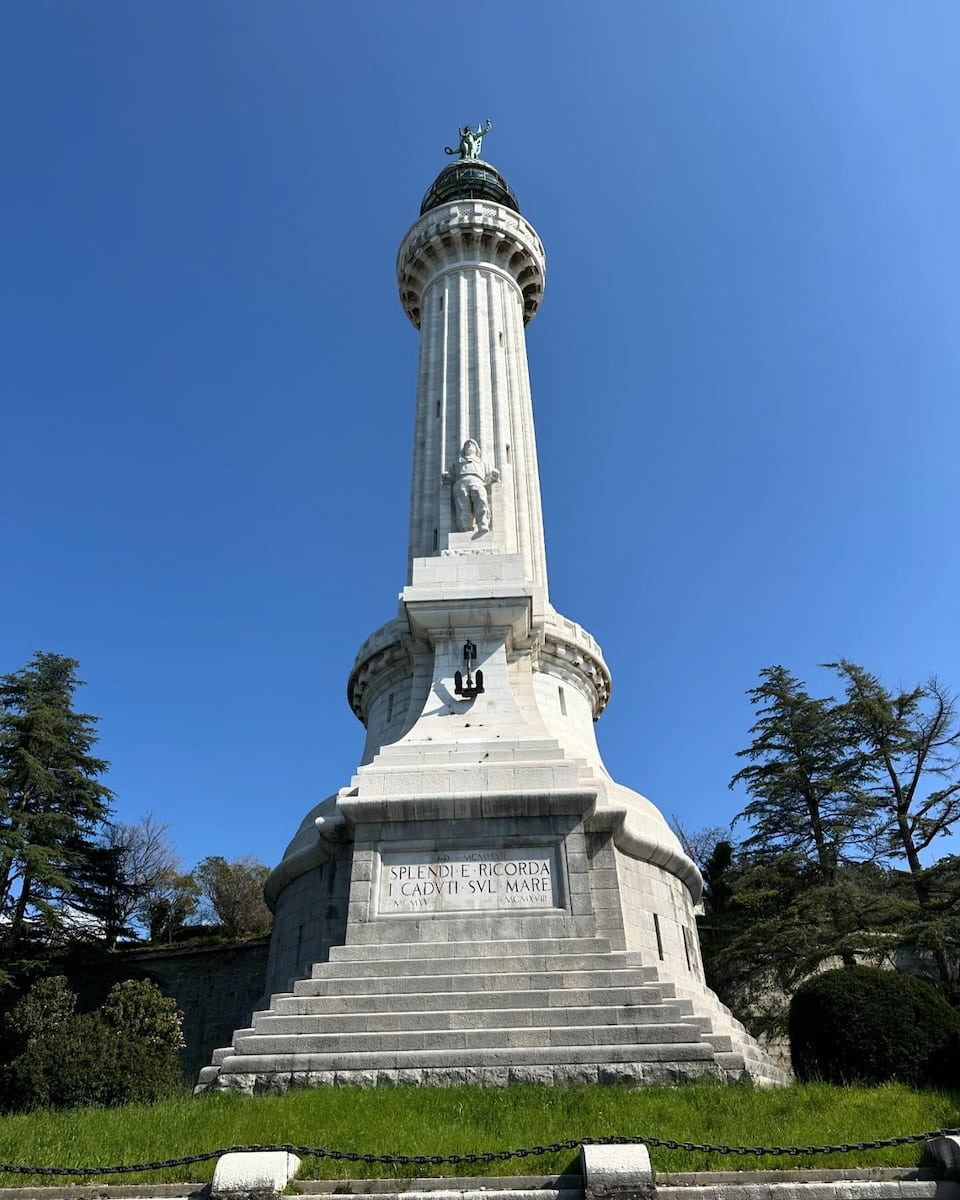
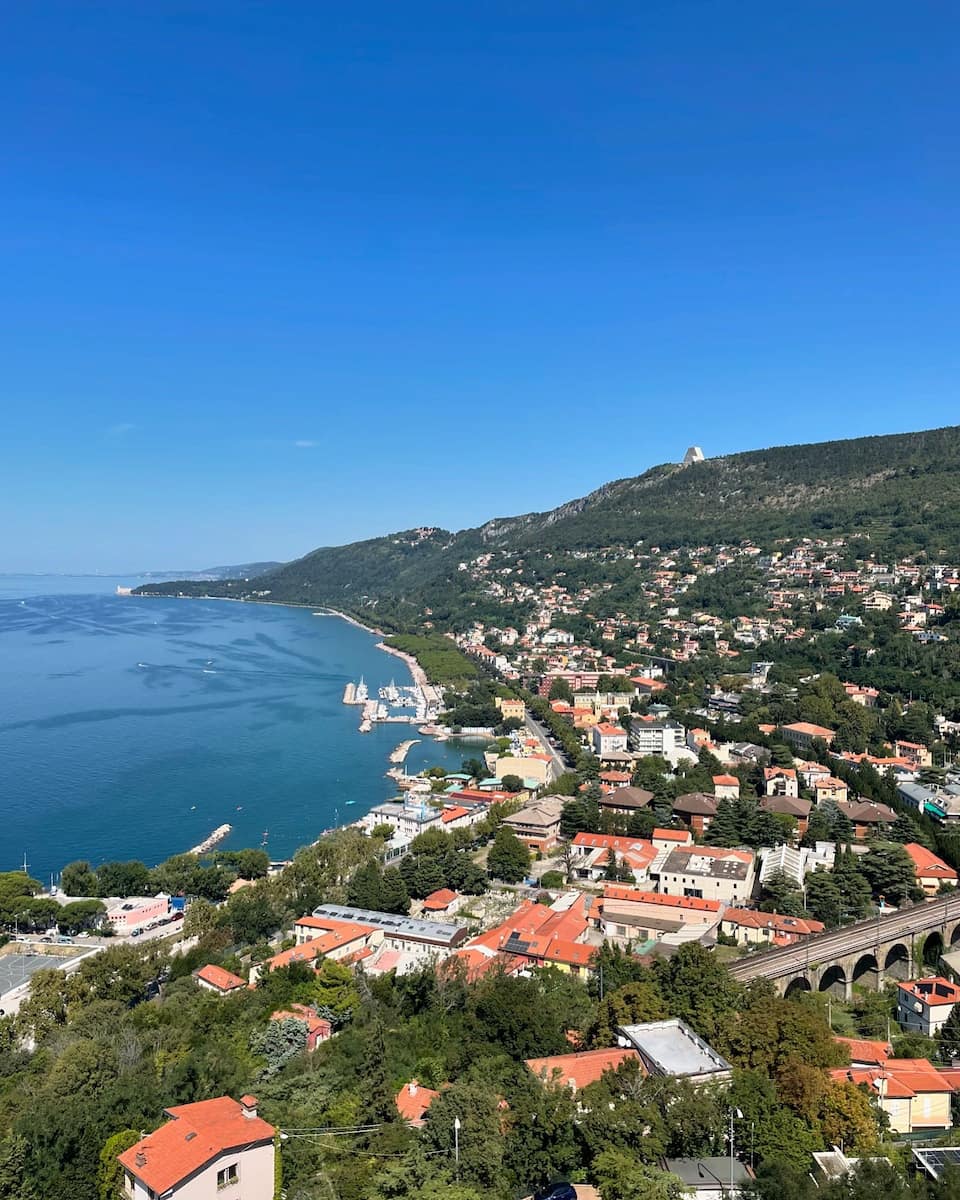
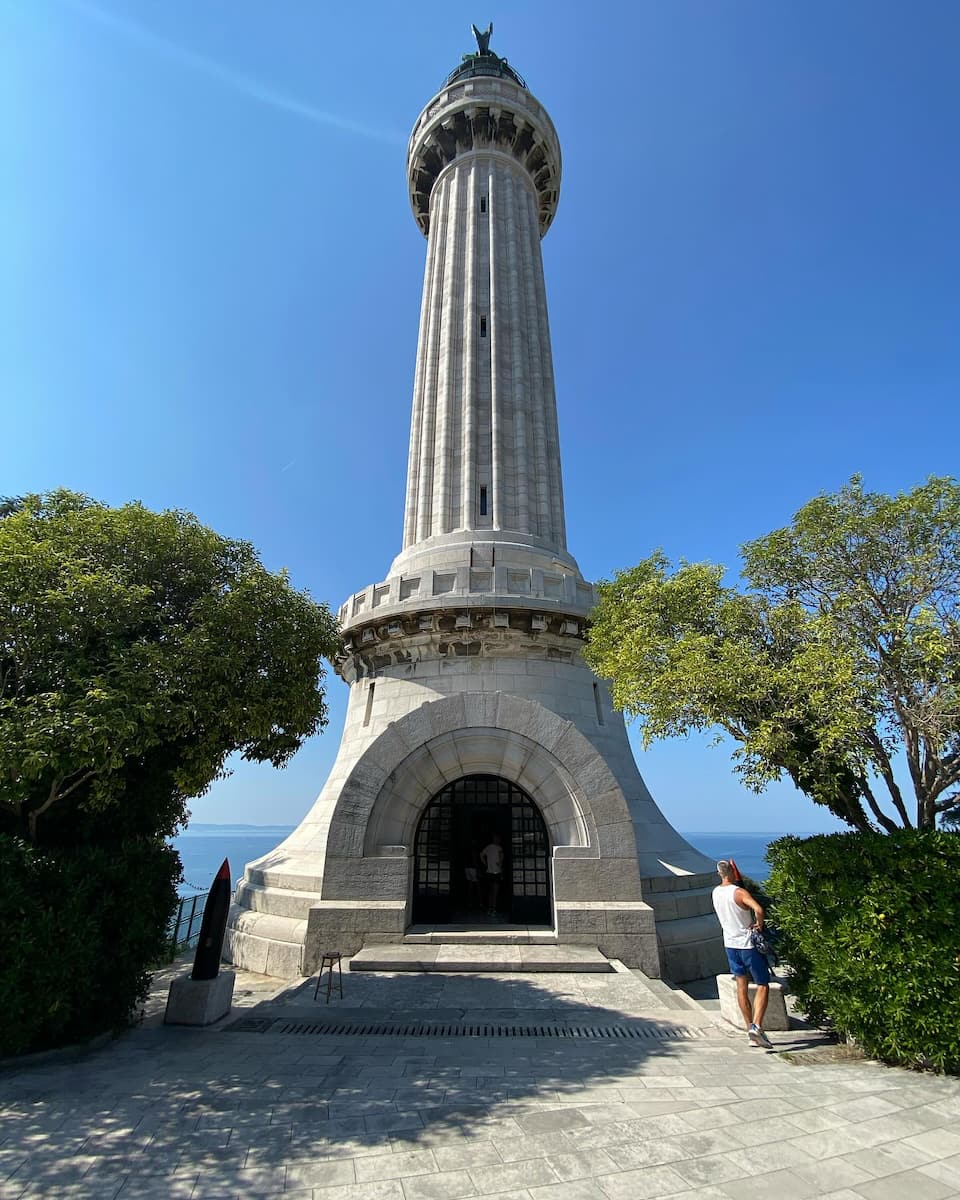

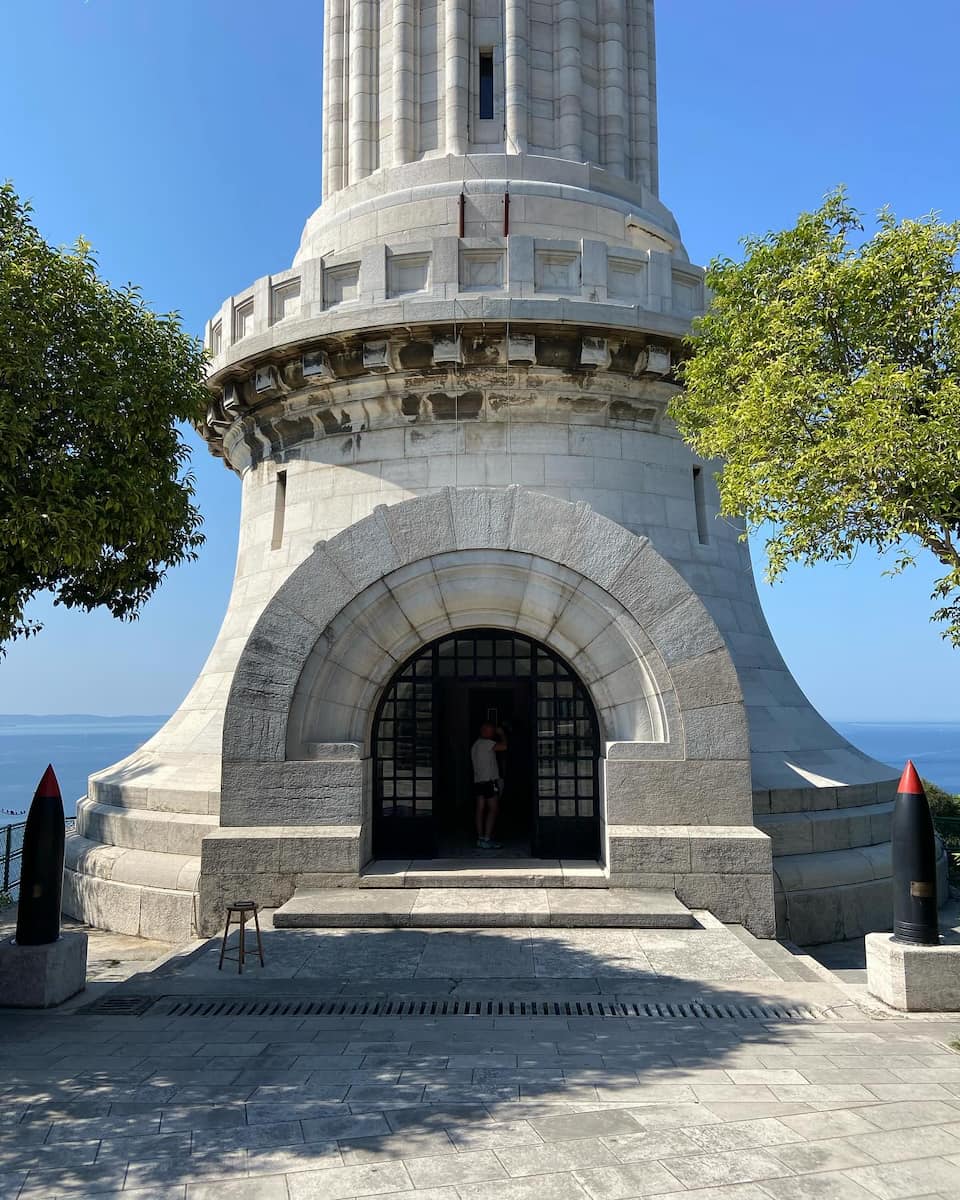
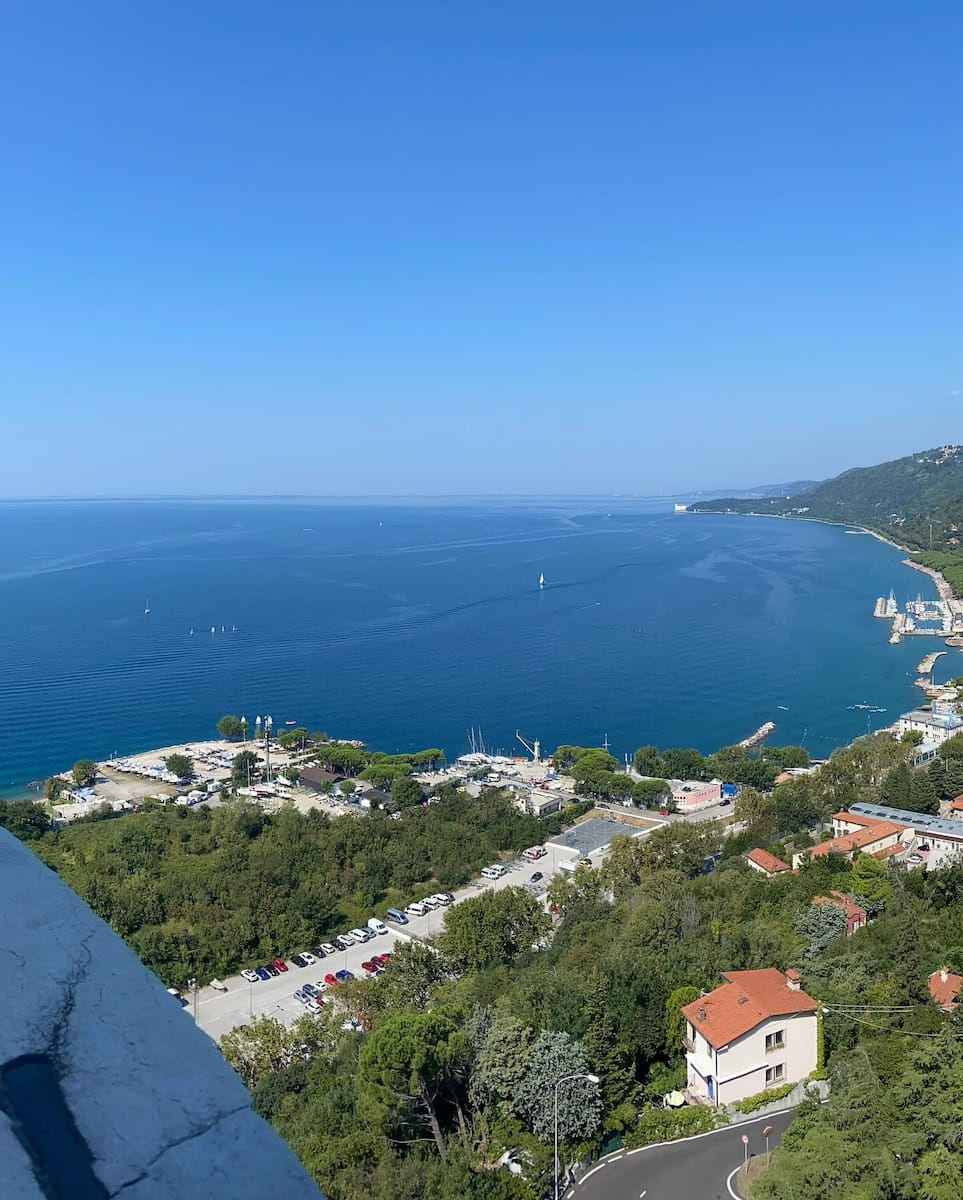
Architectural Wonder: Weighing 8,000 tons, the lighthouse incorporates symbolic elements including the anchor of the destroyer Audace and the chain of the Austro-Hungarian battleship Viribus Unitis. Its strategic position offers panoramic views of the city and Gulf of Trieste.
Time Saver: Visit during clear weather for the best views; morning hours offer optimal photography conditions.
9. ✨ Roman Theatre
Ancient Engineering: Built between the 1st and 2nd centuries AD, this remarkably preserved theatre could seat 3,500 spectators in its heyday. The structure’s original marble decorations and architectural elements reveal sophisticated Roman engineering, with perfectly designed acoustics that still impress today.
Historical Layers: The theatre’s discovery in the 1930s unveiled crucial details about Roman Tergeste (ancient Trieste). Three distinct seating sections reflect the social hierarchy of Roman society, while the nearby Arco di Riccardo, a Roman gate from 33 BC, completes the ancient urban landscape.
Visitor Strategy: Explore early morning to avoid tour groups; combine with the nearby archaeological museum for a complete Roman Trieste experience.
⭐ Best tour
- Trieste: 2-Hour Private Walking Tour – Explore the city of Trieste on a private 2-hour walking tour. Admire the diverse architectural styles, and learn why it’s called Vienna by the Sea.
10. ⛲️ Unity of Italy Square (Piazza Unità d’Italia)
Architectural Marvel: Europe’s largest seaside square spans an impressive 12,280 square meters and stands as Trieste’s most magnificent public space. Six stunning palaces frame the plaza, including the Government Palace with its iconic clock tower and the Lloyd Triestino Palace, each telling stories of the Habsburg Empire’s maritime power.

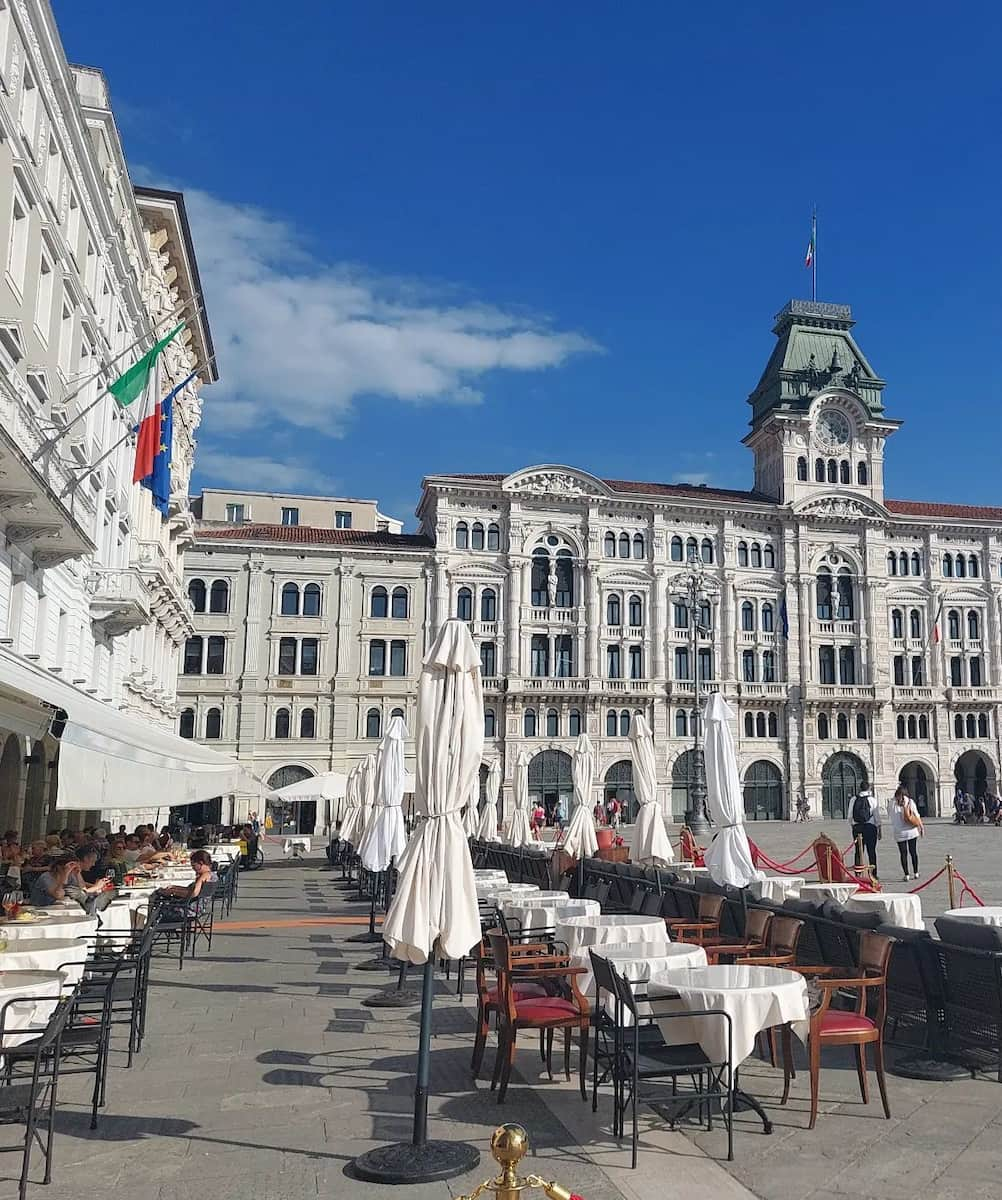
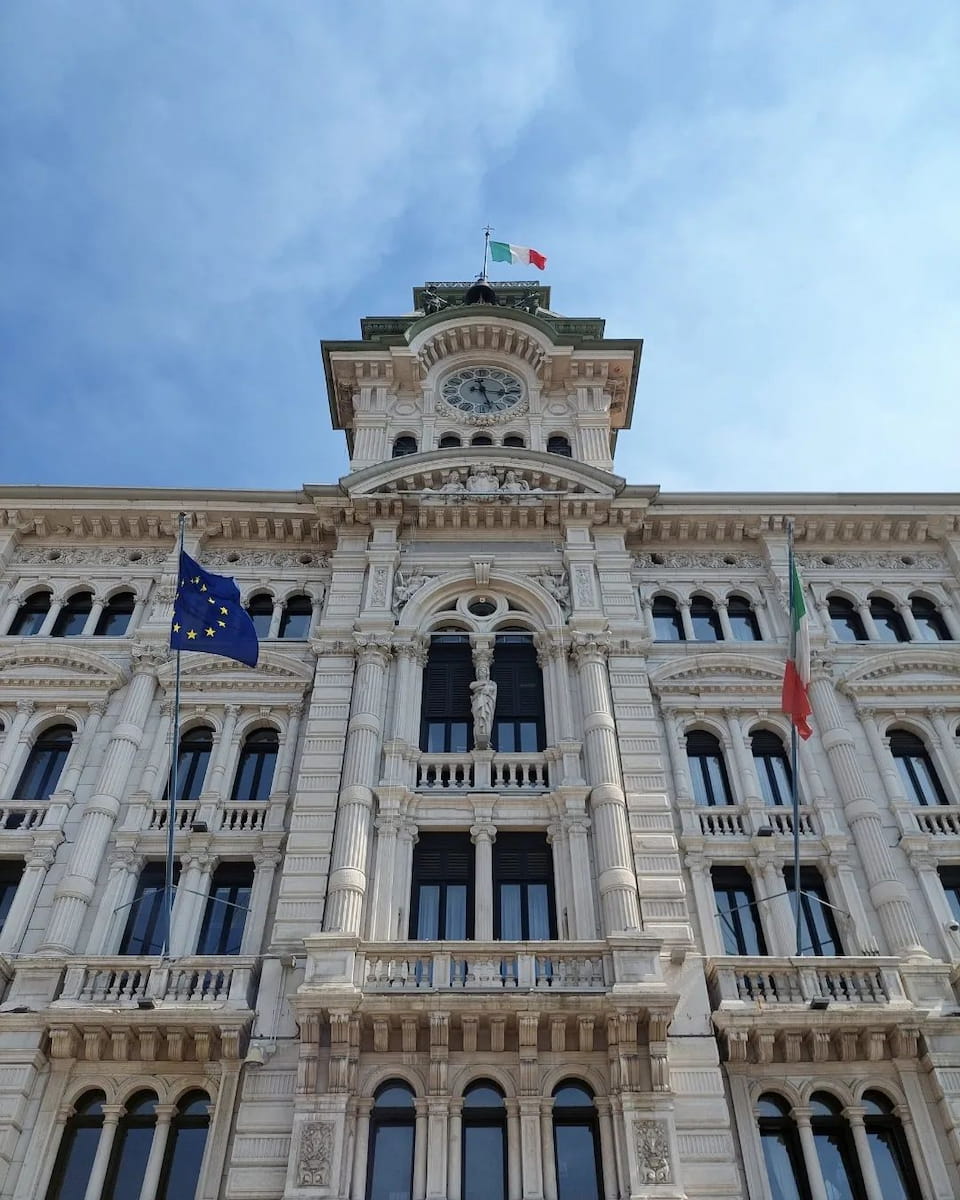
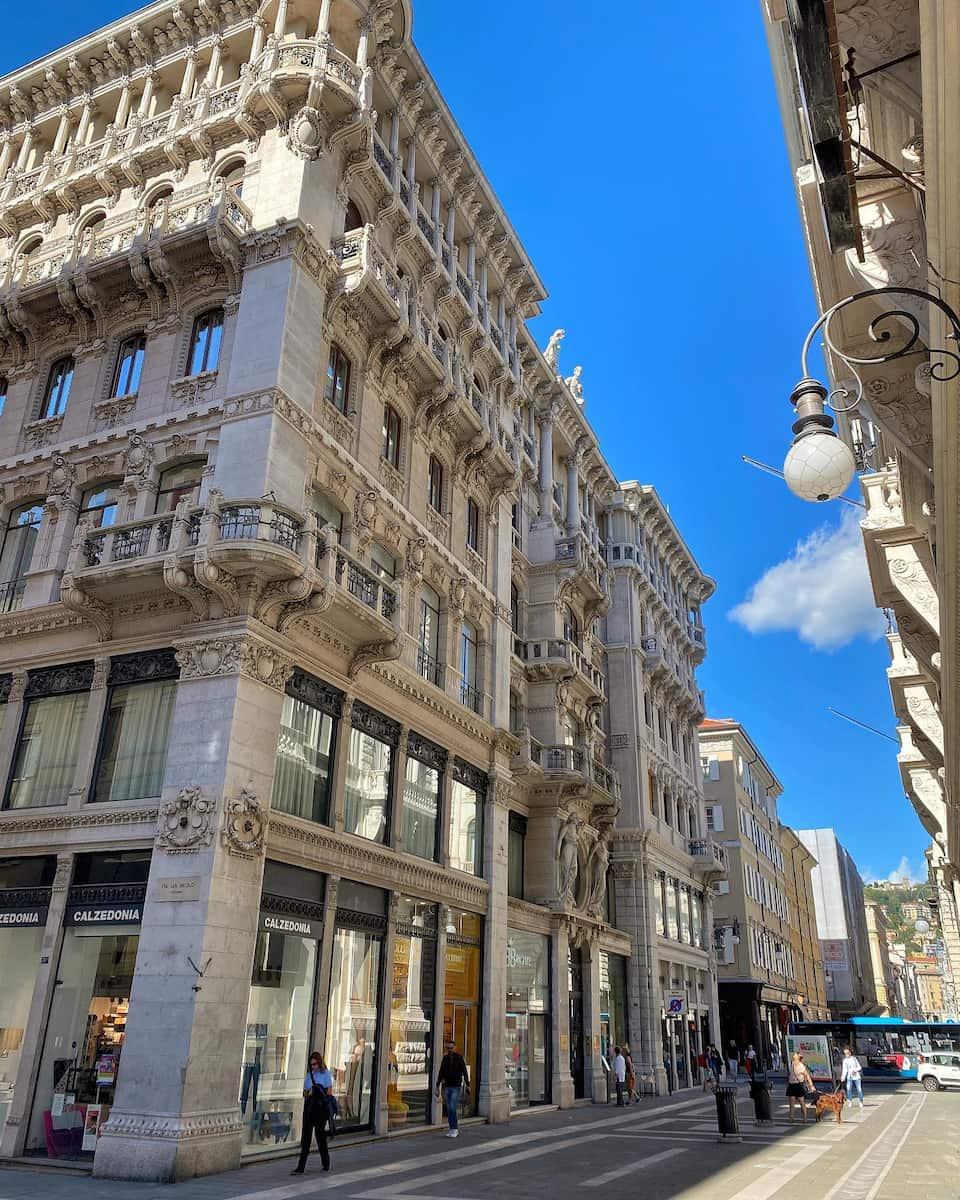

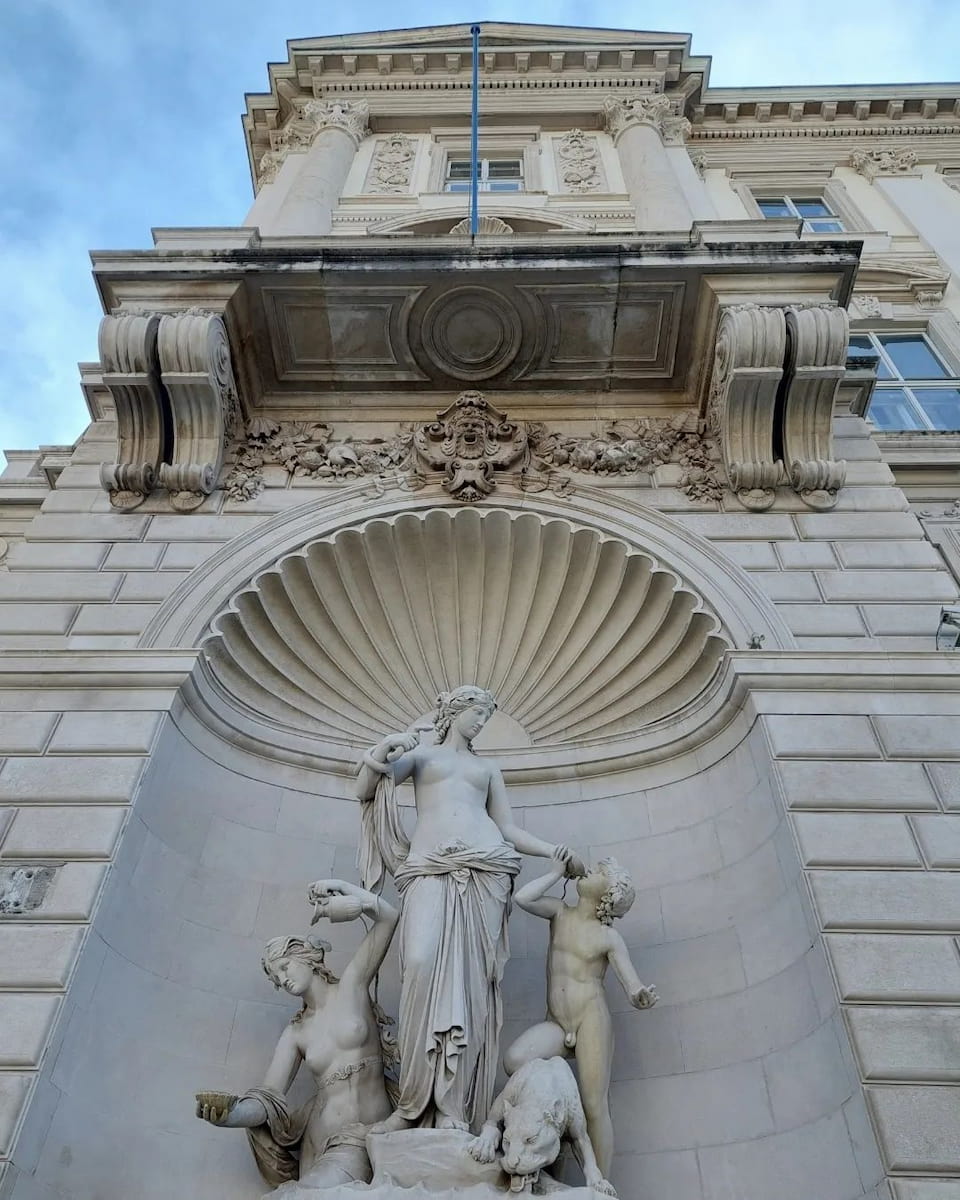
Cultural Crossroads: The Piazza Unità d’Italia transforms throughout the day, from a bustling administrative center to an enchanting evening gathering spot. The famous Fountain of the Four Continents (1751) represents Trieste’s historical role in global trade, while the square’s distinctive lighting system, known as “Stars of Trieste,” creates a magical atmosphere after sunset.
Photography Guide: Capture the square at 7:30 AM for empty views and perfect lighting; return at dusk when 40 historic lanterns illuminate the buildings’ facades in a spectacular display.
⭐ Best tour
- Trieste Bus Tour with Audio Guide – This comprehensive 1.5-hour bus tour offers an ideal introduction to Trieste’s city center, Adriatic Sea views, and historic cafes, with stops at major attractions including Piazza Unità d’Italia and the Canal Grande.
Things to Do in Trieste with Kids
1. 🦕 Natural History Museum Adventures
Prehistoric Journey: Housing over 2 million specimens, the museum’s dinosaur hall features Antonio, a complete Hadrosaurid skeleton discovered in 1994, alongside Bruno, a rare Tethyshadros insularis. The paleontology section includes interactive dig sites where children can experience fossil excavation.
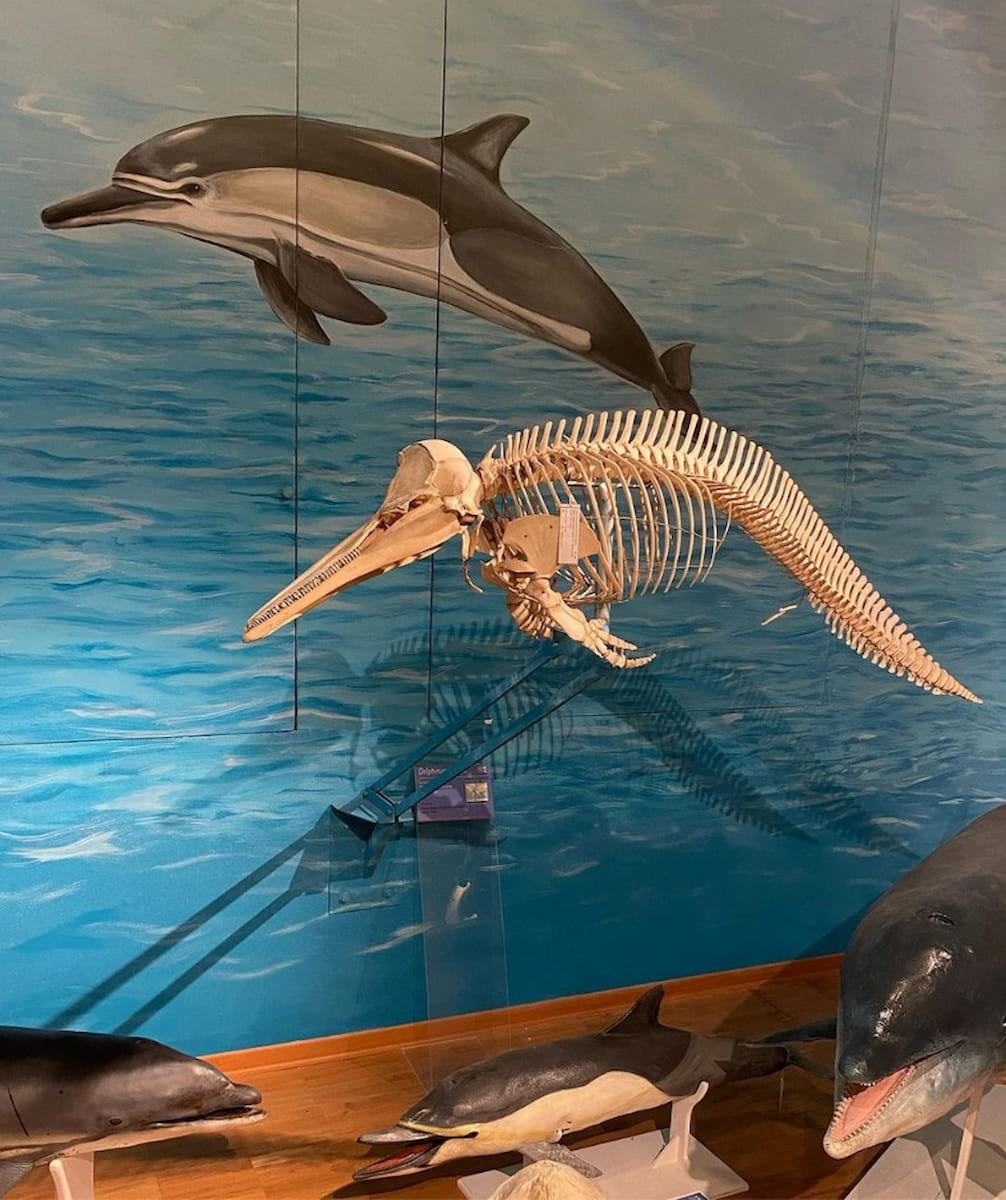
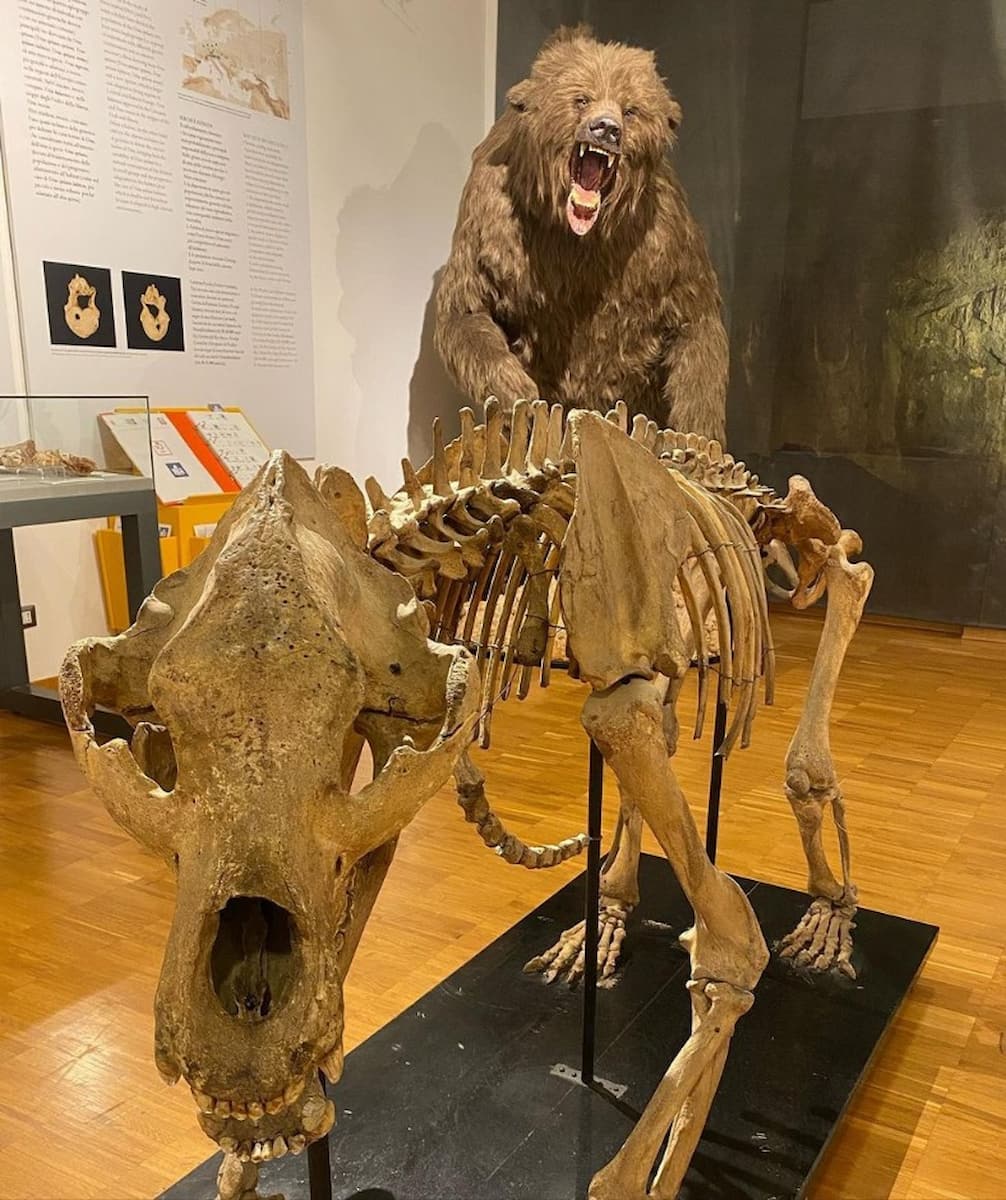
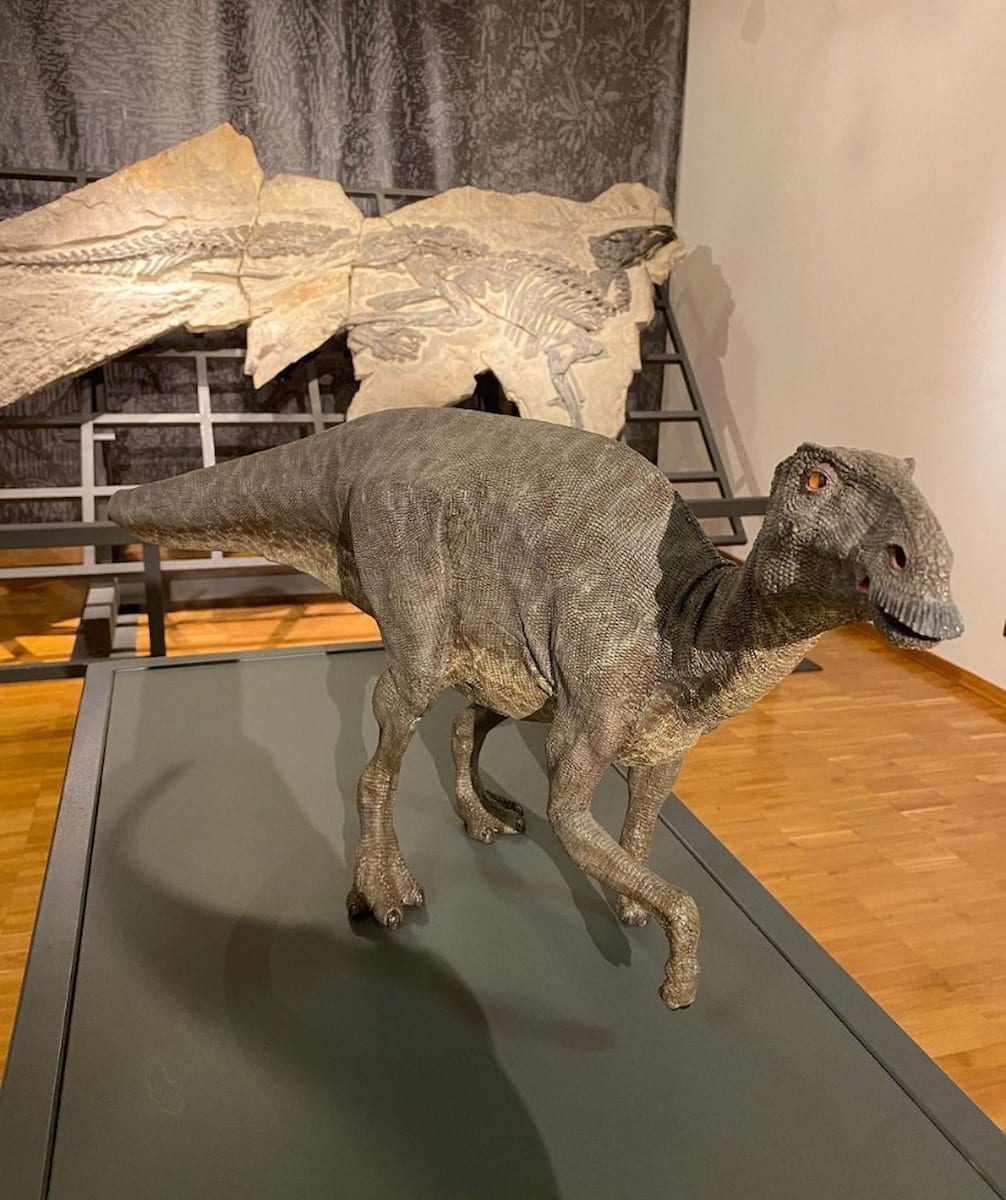
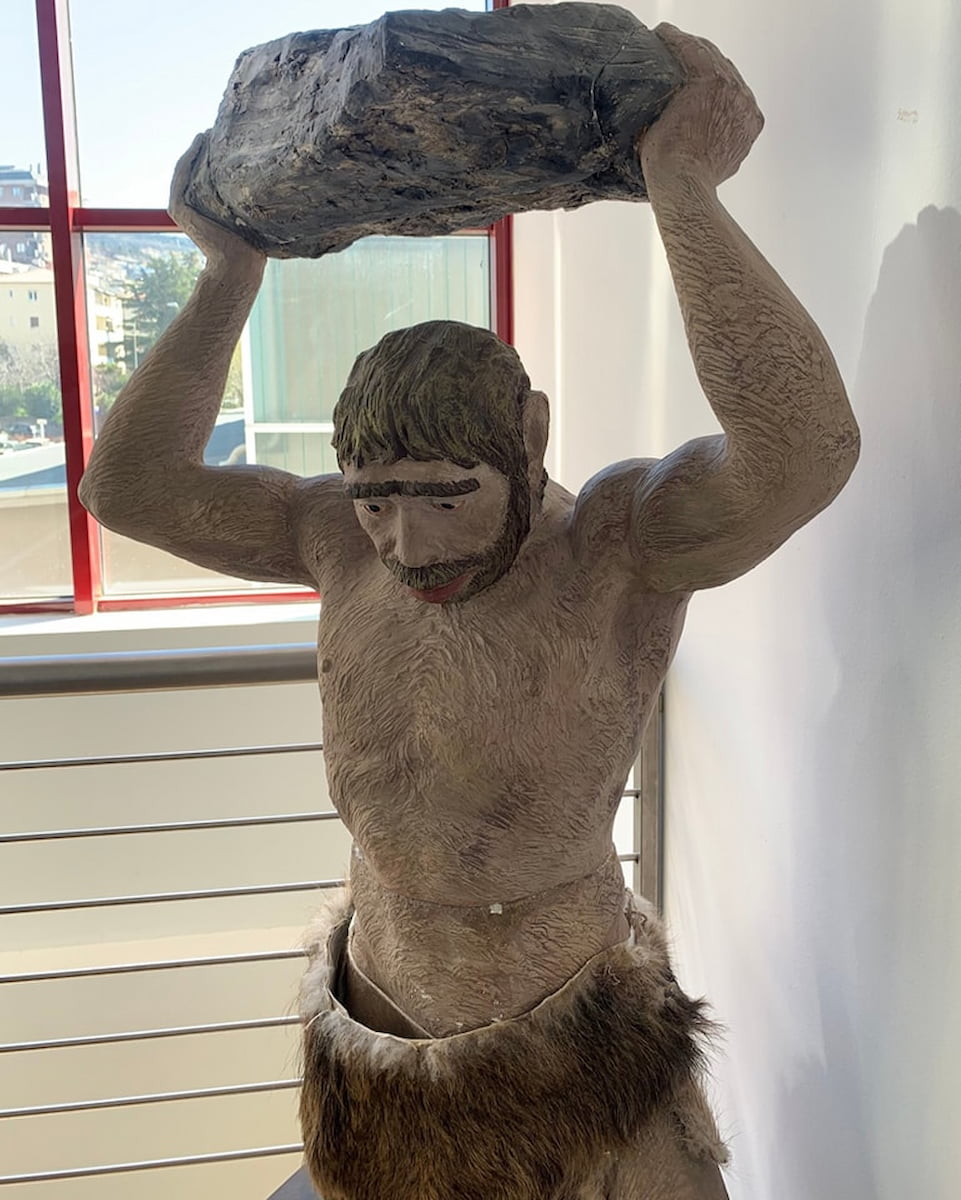
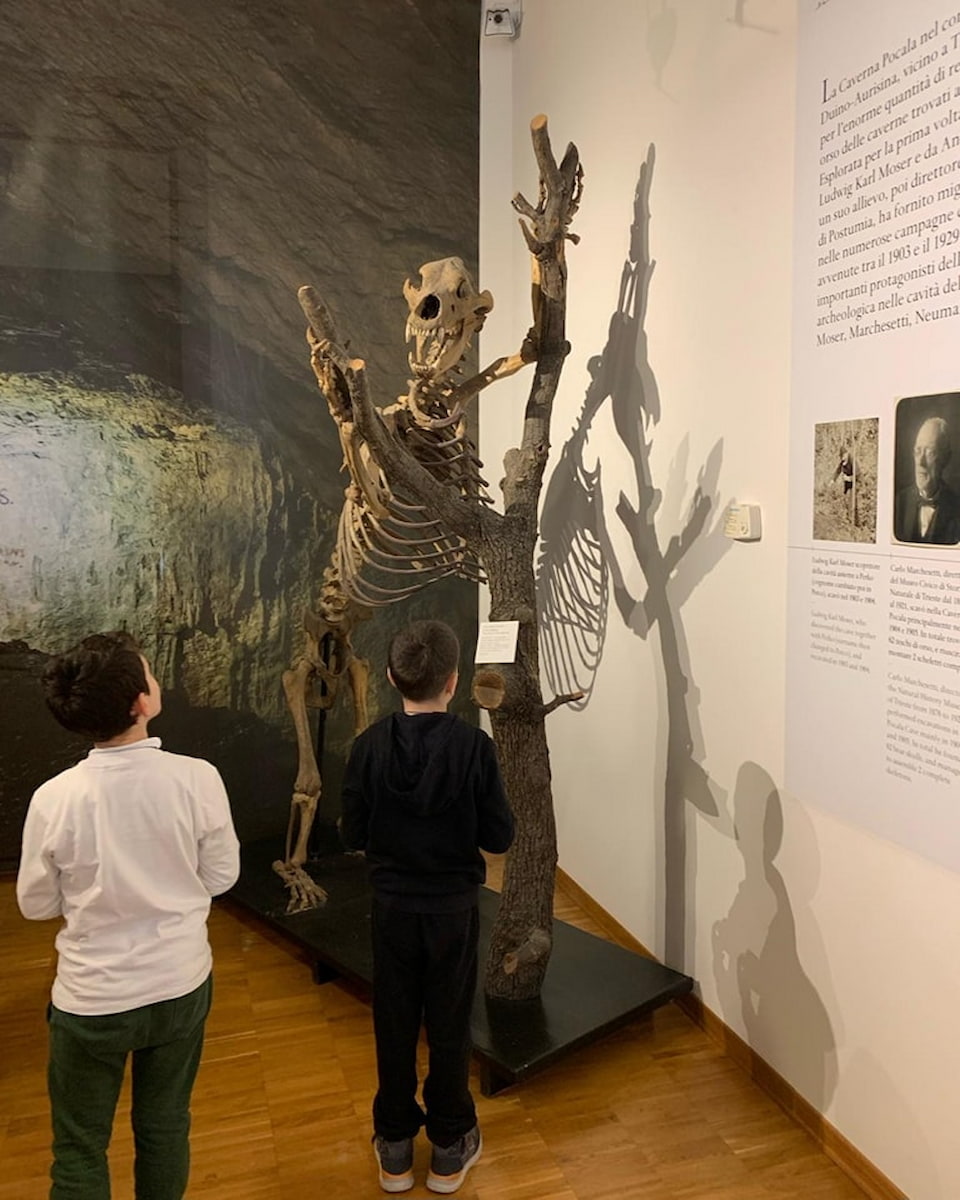
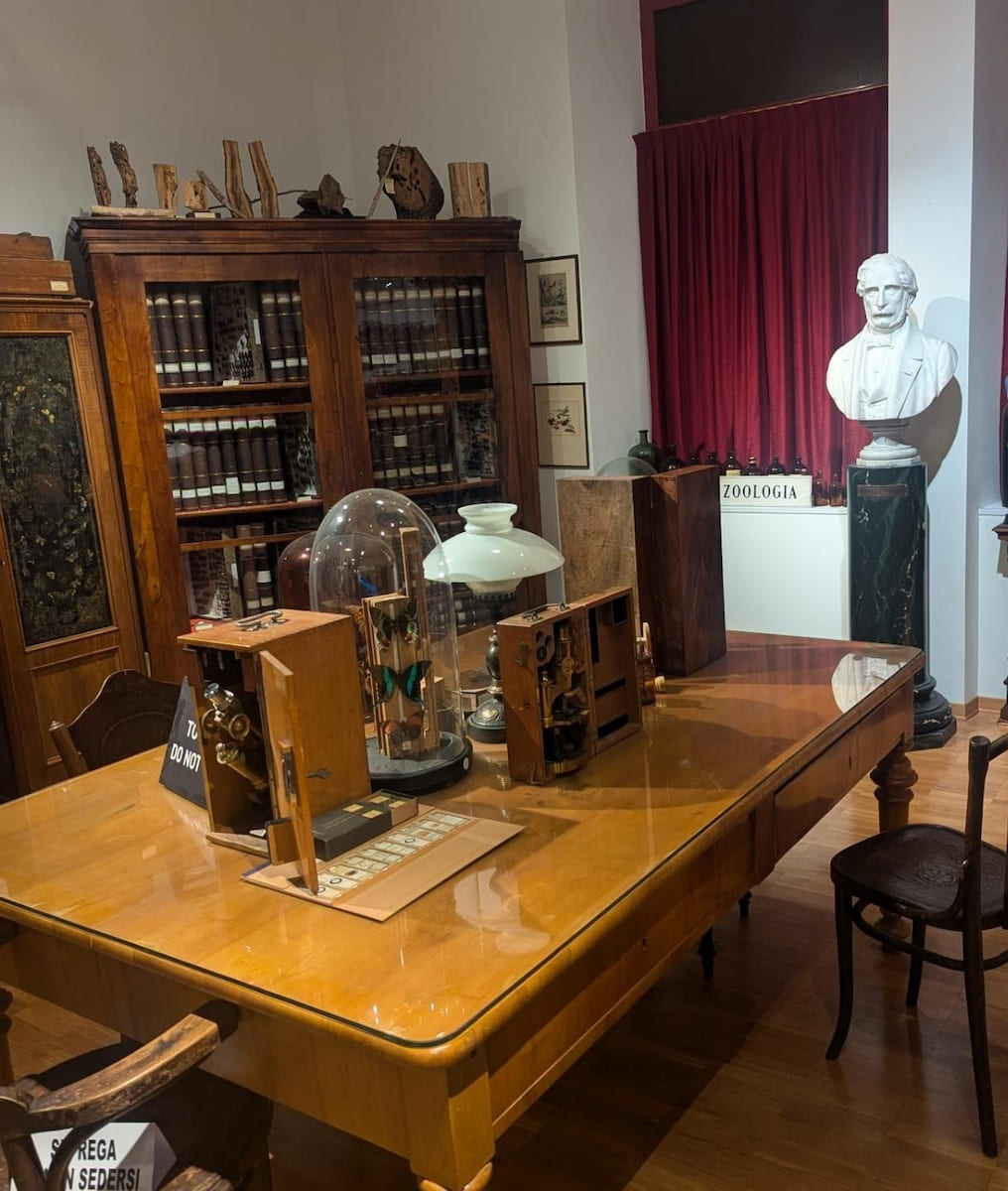
World Exploration: Four floors of exhibits include a complete Egyptian mummy with CT scan displays, a mineral cave with fluorescent rocks, and the largest butterfly collection in Italy featuring 17,000 specimens. The museum’s “Touch and Learn” corners allow hands-on exploration of fossils, minerals, and animal specimens.
Scientific Discovery: Regular workshops include “Junior Paleontologist” sessions where kids learn fossil preparation techniques, “Bug Detective” programs exploring entomology, and “Marine Explorer” activities focusing on Adriatic Sea life.
2. 🔬 Immaginario Scientifico Science Center
Interactive Zones: Five themed areas cover physics, chemistry, biology, astronomy, and technology through over 100 hands-on exhibits. The “Little Scientists Lab” caters to ages 3-6 with age-appropriate experiments and sensory activities.
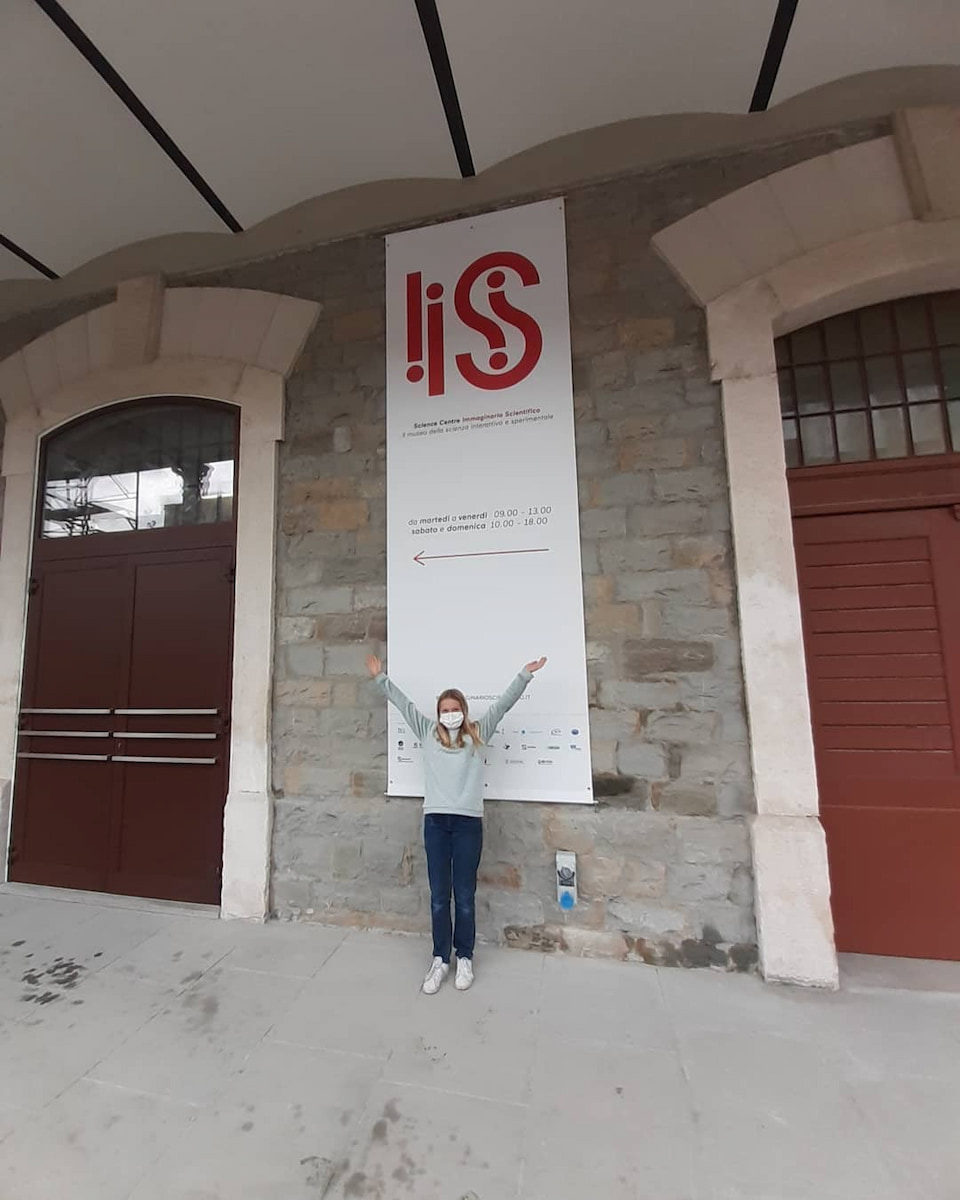
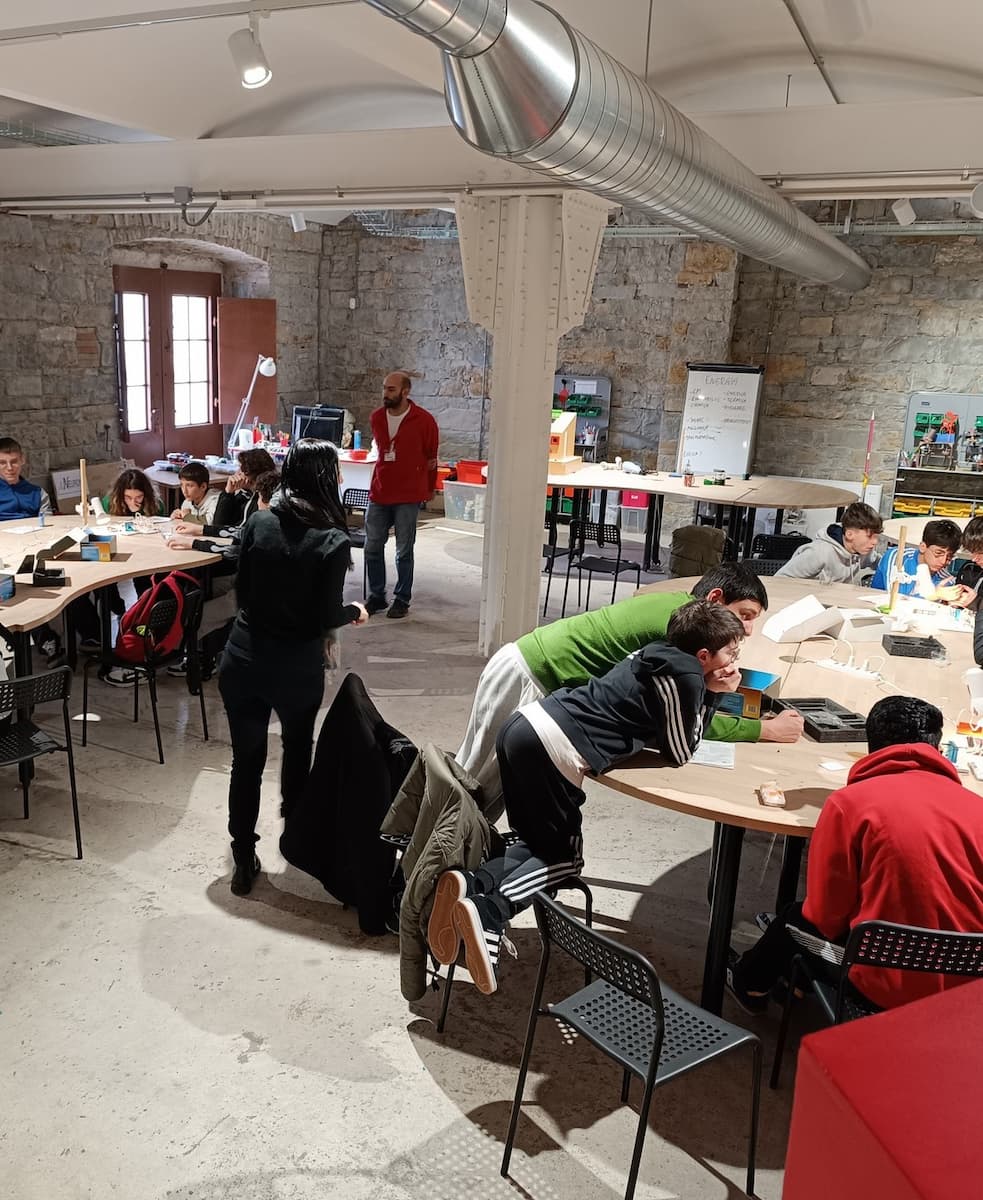
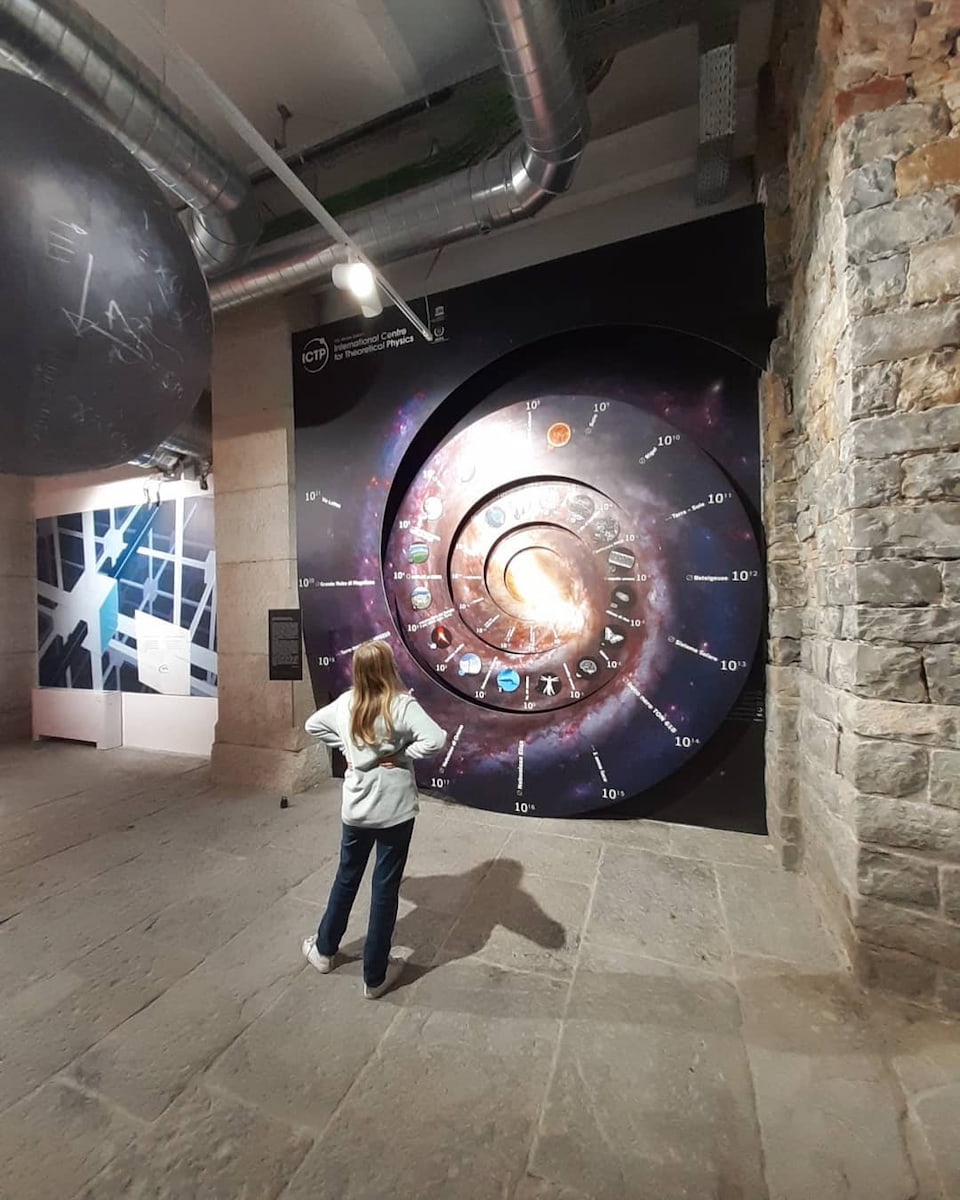
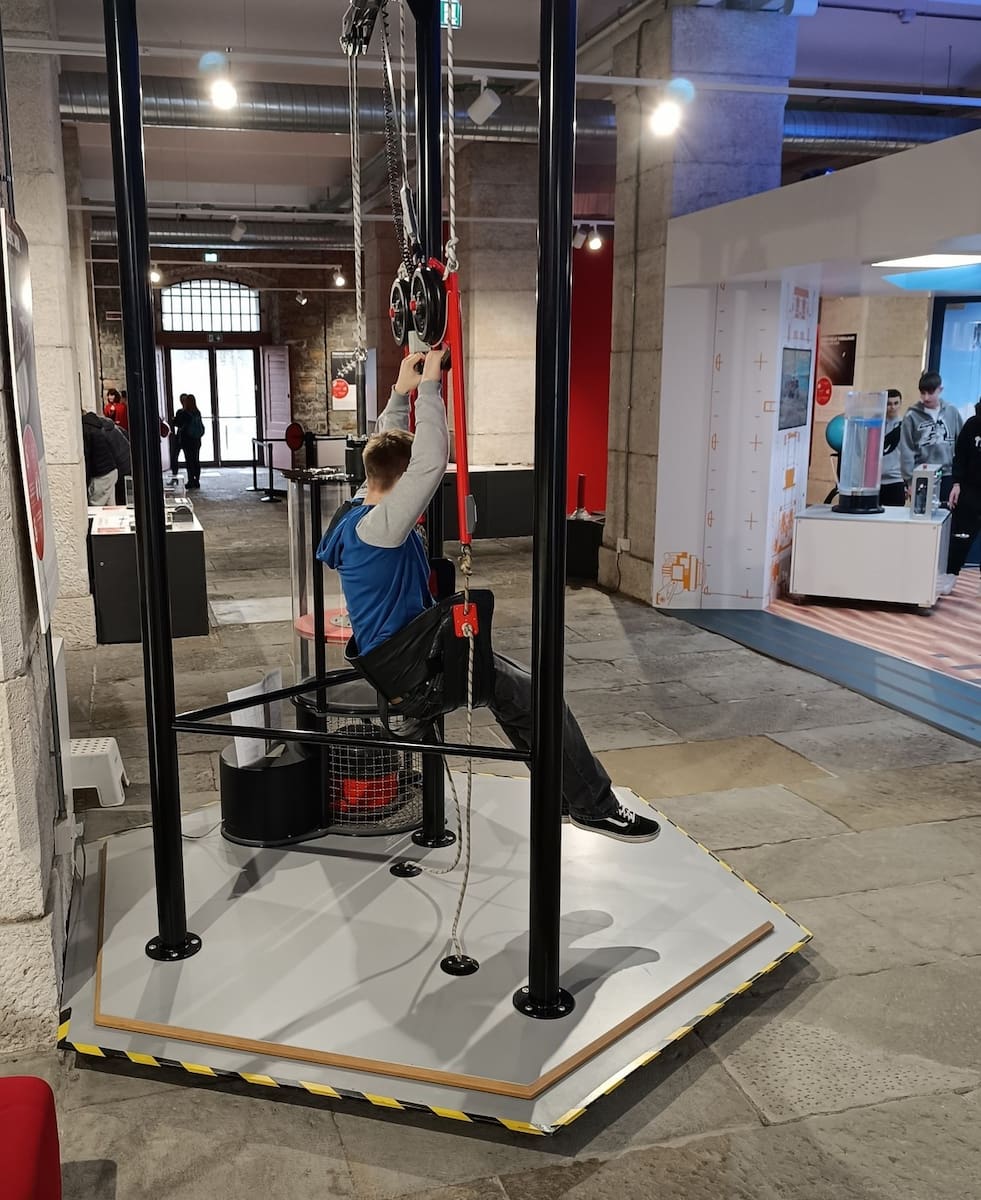
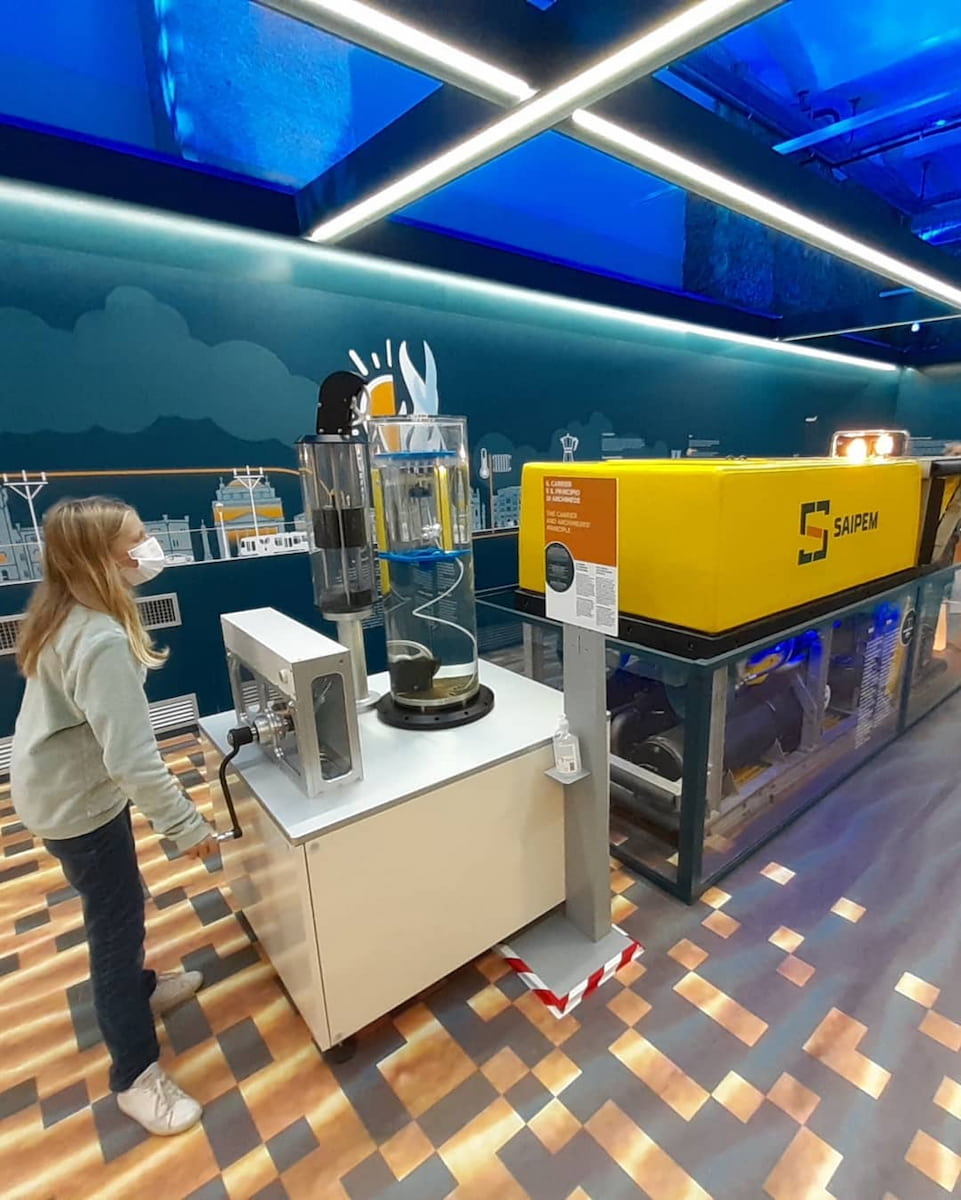
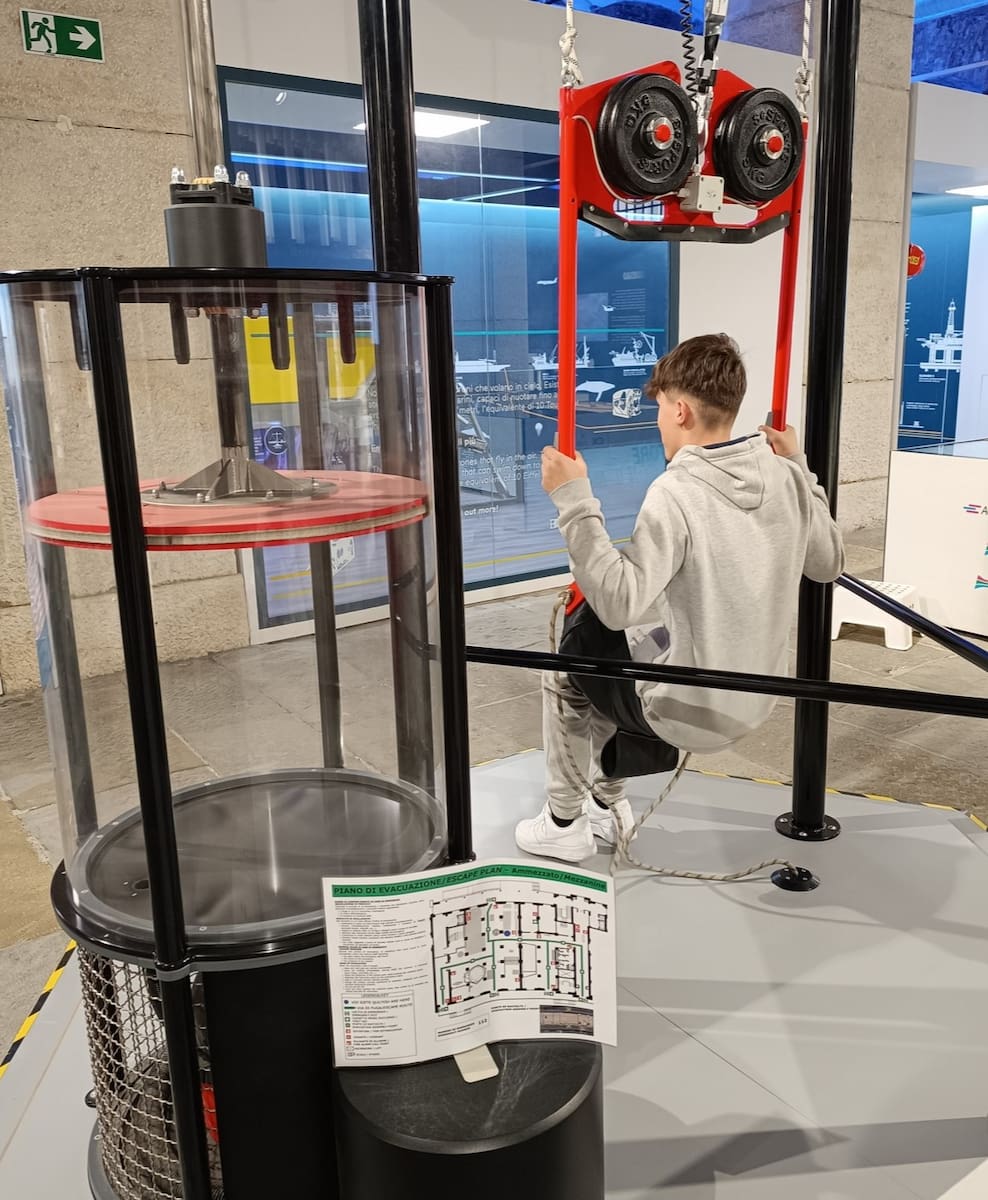
Innovation Space: The center’s FabLab allows children aged 8+ to experiment with 3D printing, robotics, and basic coding. Regular workshops cover themes from renewable energy to space exploration, using state-of-the-art equipment.
Special Programs: Monthly “Science Sleepover” events let families spend the night in the museum, participating in nocturnal experiments and astronomical observations. The “Young Inventors Club” meets weekly for extended STEM learning projects.
3. ⛰️ Grotta Gigante Cave Experience
Underground Marvel: Certified by Guinness World Records, the cave’s main chamber could fit St. Peter’s Basilica inside. The 500-step journey takes families through chambers featuring formations up to 12 meters tall and stalactites over 200,000 years old.
Scientific Wonder: Home to the world’s most sensitive pendulums measuring earth movements, the cave serves as a natural laboratory. Children can learn about seismology through interactive displays and real-time earthquake monitoring equipment.
Educational Features: The cave’s museum includes 3D cave mapping technology, speleological equipment demonstrations, and a collection of cave-dwelling creatures. Special “Junior Speleologist” programs let kids experience cave exploration techniques.
⭐ Best tour
- Postojna Cave & Predjama Castle Tour – Marvel at Slovenia’s Postojna Cave and Predjama Castle without the hassle of driving or making bus and train connections with this hassle-free driving tour.
Free Things To Do in Trieste
1. 🌊 Canal Grande
Venetian Heritage: Constructed in 1754-1756, this 200-meter waterway served as the main artery for merchant ships during Trieste’s free port era. The grand canal is home to the iconic Church of Sant’Antonio Nuovo, whose neoclassical white facade reflects beautifully in the water, and the historic Serbian Orthodox Church of San Spiridione with its striking blue domes.
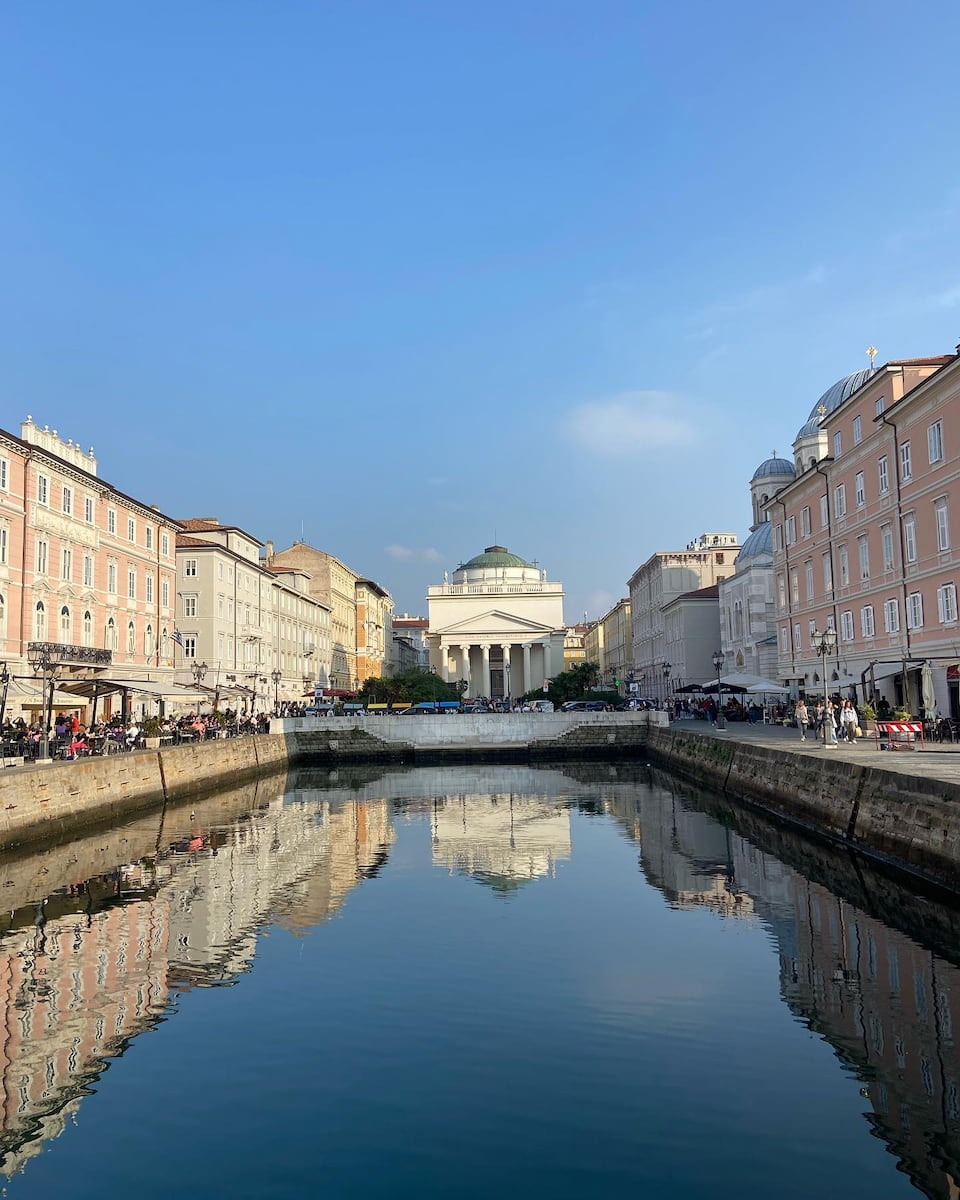
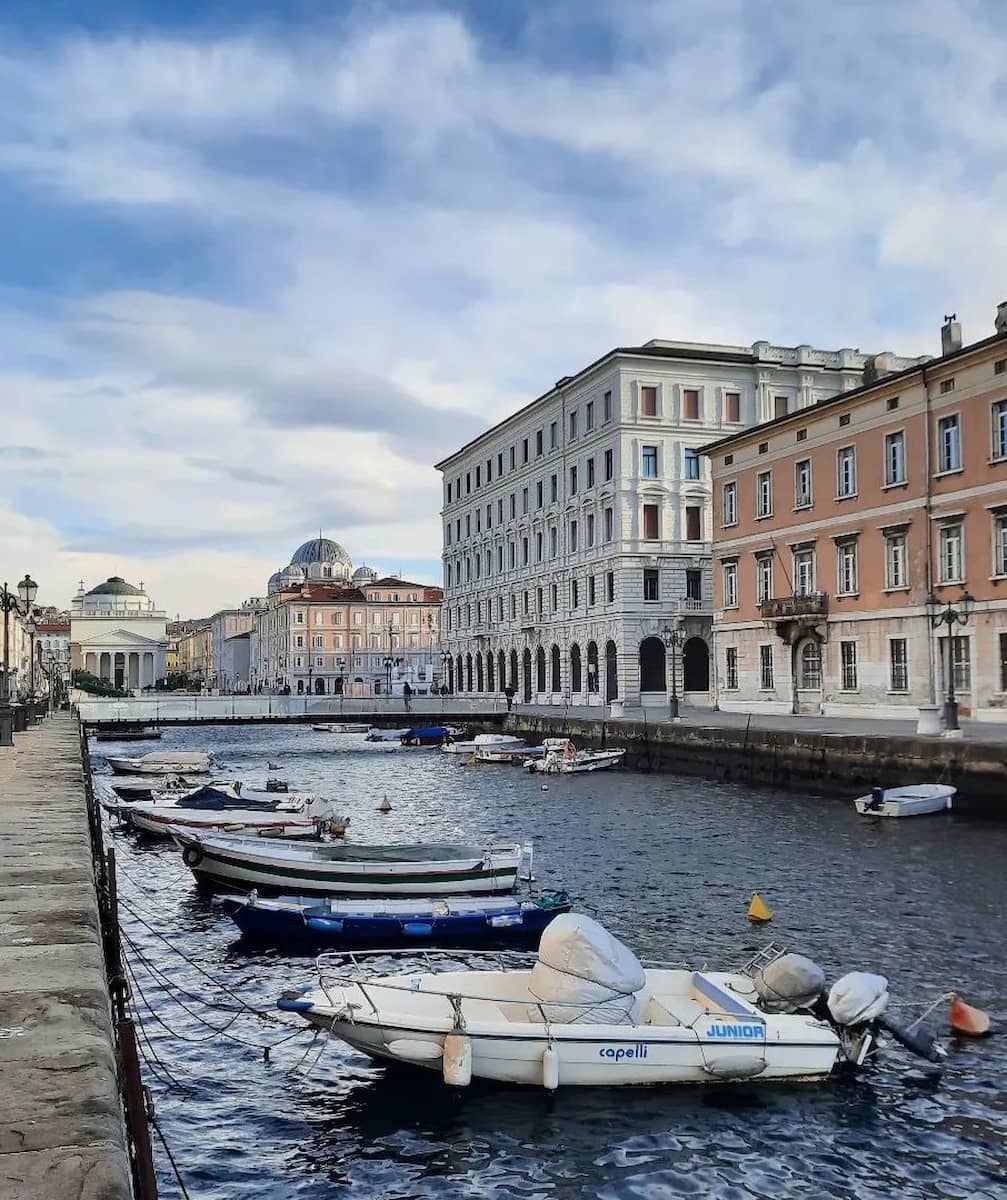
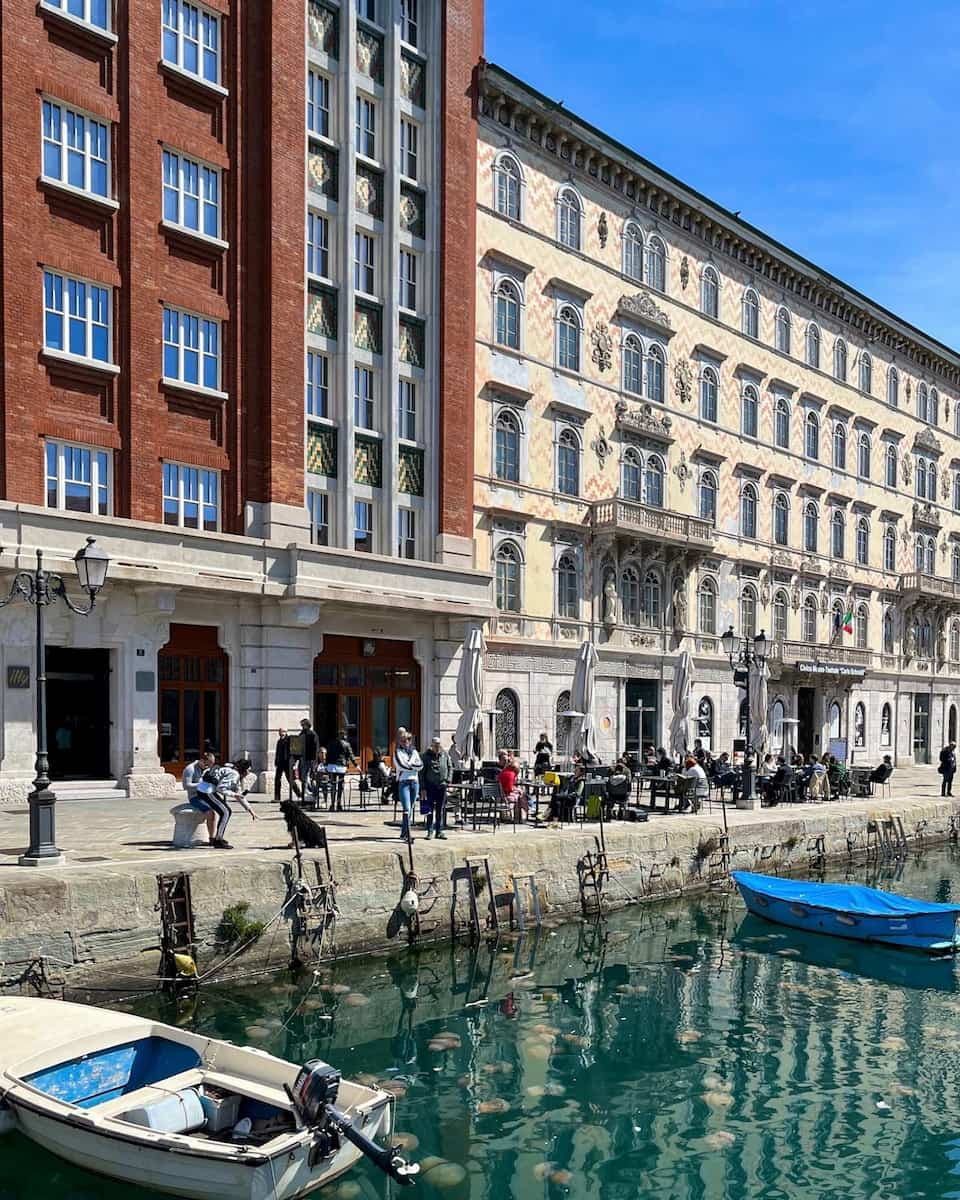
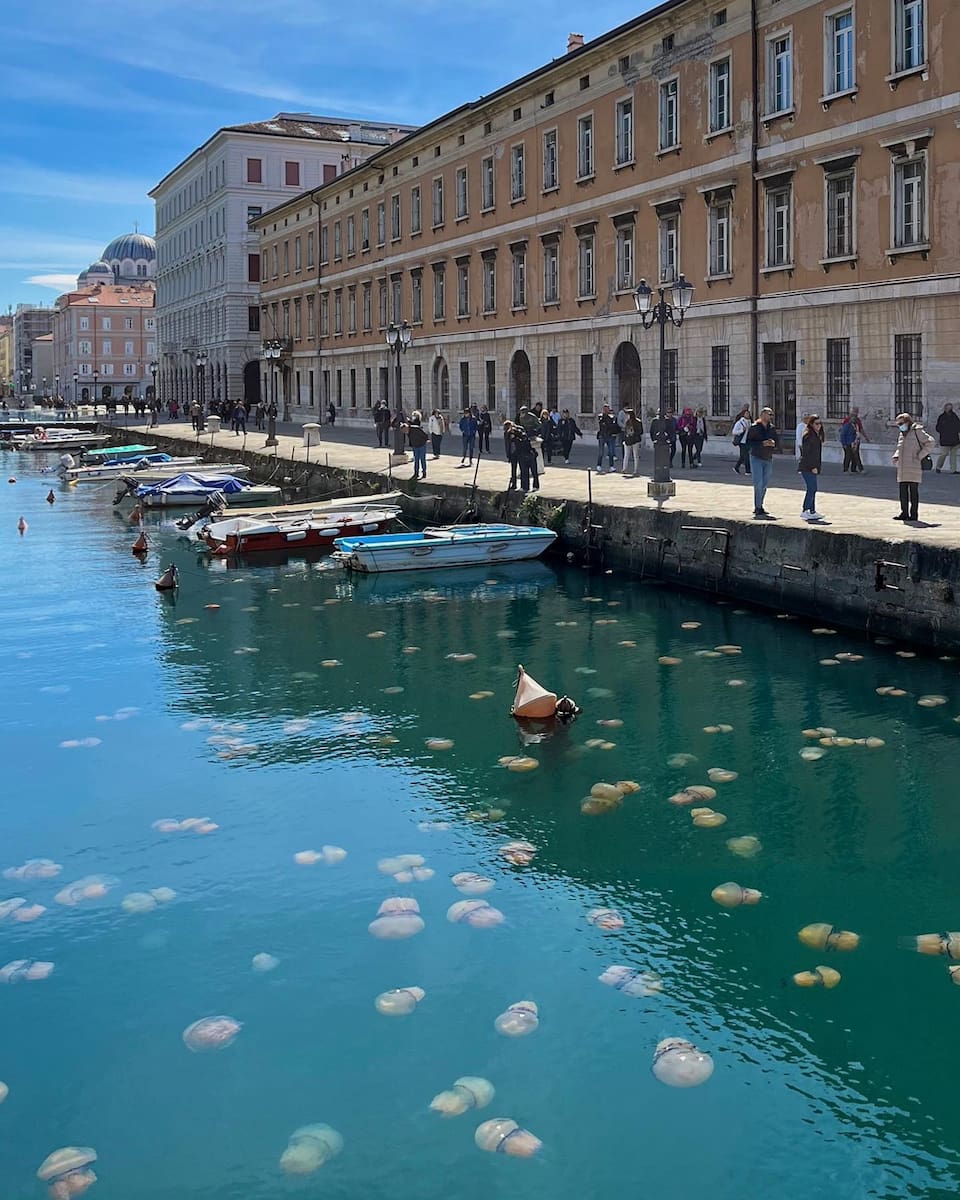
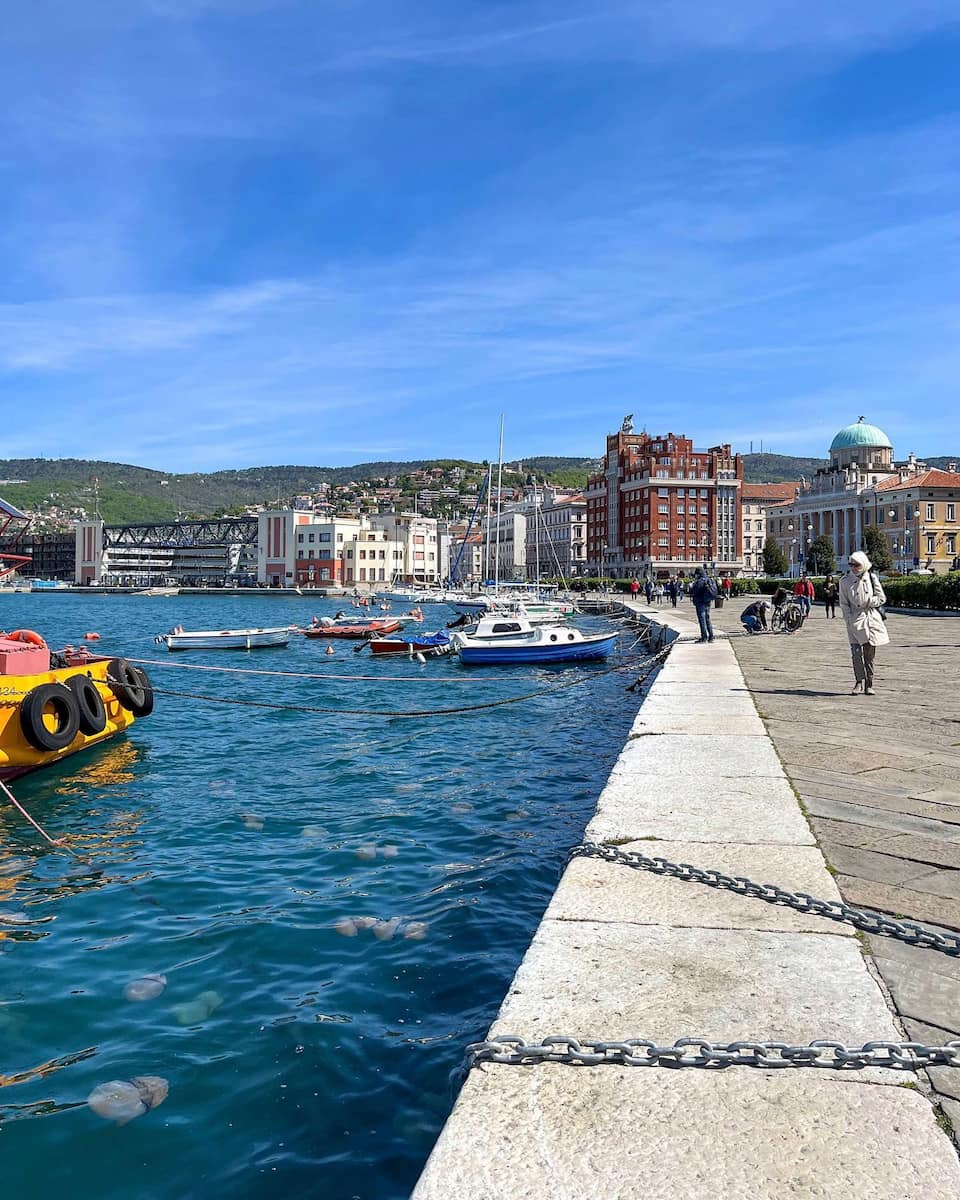
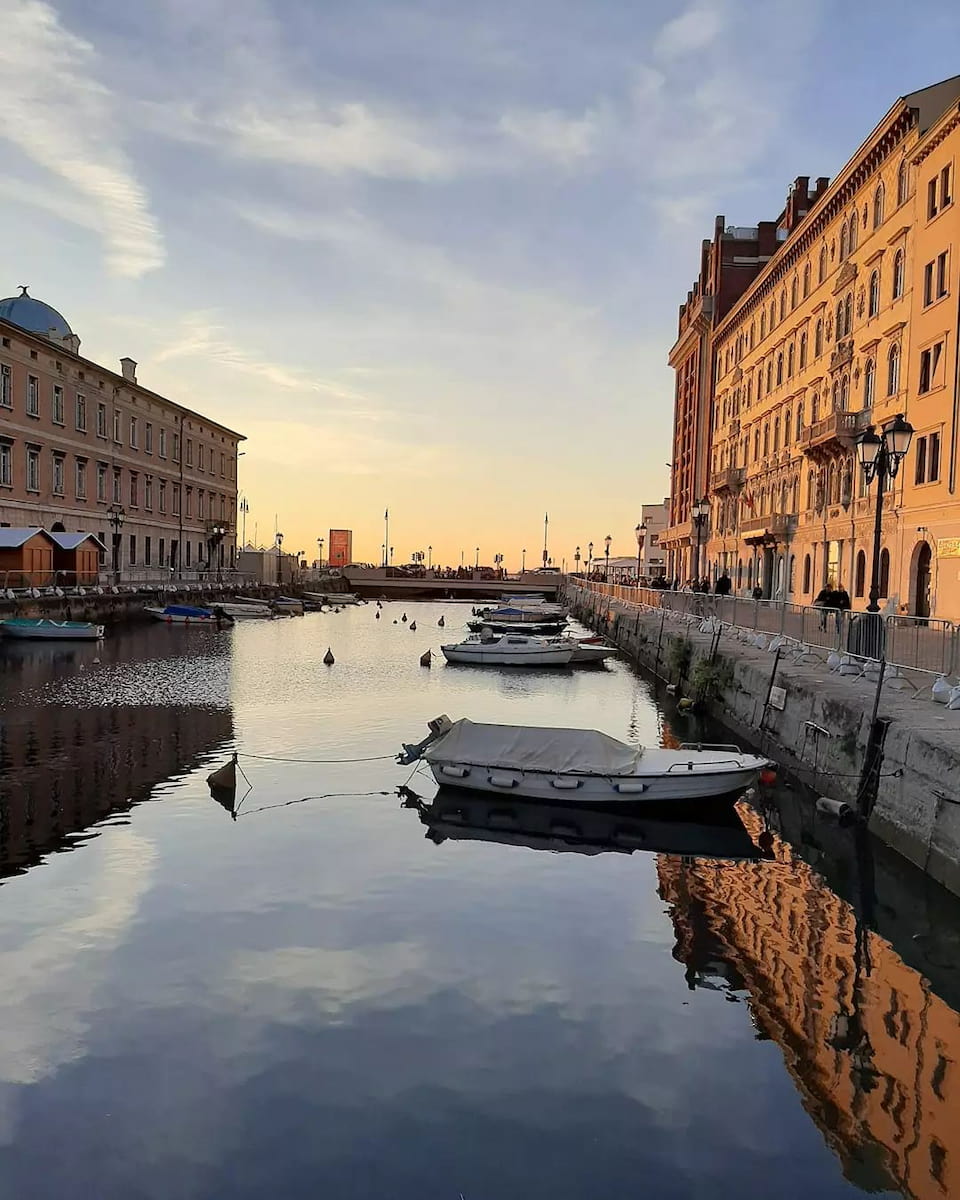
Architectural Symphony: The canal district showcases an impressive collection of 18th and 19th-century buildings, including former warehouses converted into elegant residences. The beloved Giovannin Ponterosso statue, installed in 1927, stands as a symbol of Trieste’s maritime soul, with locals often dressing it up for special occasions.
Local Experience: Visit during the Barcolana regatta in October when the canal area hosts vibrant maritime celebrations; morning light offers the best photography conditions for capturing reflections on the water.
2. 📚 James Joyce Literary Trail
Literary Legacy: Beyond the famous bronze statue, Joyce’s Trieste connection spans multiple locations where he lived and wrote between 1904 and 1920. The writer completed significant portions of “Dubliners,” worked on “A Portrait of the Artist as a Young Man,” and began “Ulysses” while teaching English at the Berlitz School.
Cultural Footprint: The trail includes the historic Caffè San Marco, where Joyce regularly wrote, his various apartments across the city, and the former Berlitz School building. Each location features informative plaques detailing the writer’s connection to the site.
Literary Explorer Tip: Start at the Joyce Museum in Palazzo Sartorio, which houses original documents and personal items; visit the historic cafes during off-peak hours for a more authentic experience.
3. 🚶♂️ Riva Ottaviano Augusto Waterfront
Maritime Promenade: This 4-kilometer waterfront stretch represents one of Trieste’s most beloved free attractions, connecting the city center to Barcola. The promenade features distinct architectural periods, from Austrian-era buildings to striking Fascist-era structures, while offering unobstructed views of the Gulf of Trieste.
Cultural Landscape: Along the walk, discover the iconic Audace Pier, extending 246 meters into the sea, and the famous Molo Sartorio with its historic tide gauge station dating from 1785. The route passes by numerous Liberty-style buildings and historic bathing establishments that have hosted visitors since the 19th century.
Walking Guide: Start at sunset for the best photography opportunities; look for the traditional ‘porporela’ breakwater structures unique to Trieste’s waterfront.
4. 🌿 Giardino Pubblico Muzio de Tommasini
Botanical Heritage: Established in 1854, this 54,000-square-meter public garden showcases over 200 rare plant species and century-old trees. The park features authentic Victorian-era design elements, including the original cast-iron greenhouse and ornamental fountains.
Historical Elements: The garden houses significant monuments, including the 1927 Trieste War Memorial and busts of famous botanists. Its design reflects the influence of both English landscape gardens and formal Italian layouts.
Nature Tip: Visit during April-May for magnificent magnolia and wisteria blooms; check the schedule for free guided botanical tours.
5. 🏛️ University District and Historical Cafes
Coffee Culture: Explore Trieste’s historic café culture without spending a cent by admiring the magnificent exteriors of Caffè degli Specchi (1839), Caffè Tommaseo (1830), and Caffè San Marco (1914). These establishments played crucial roles in the city’s intellectual and political history.

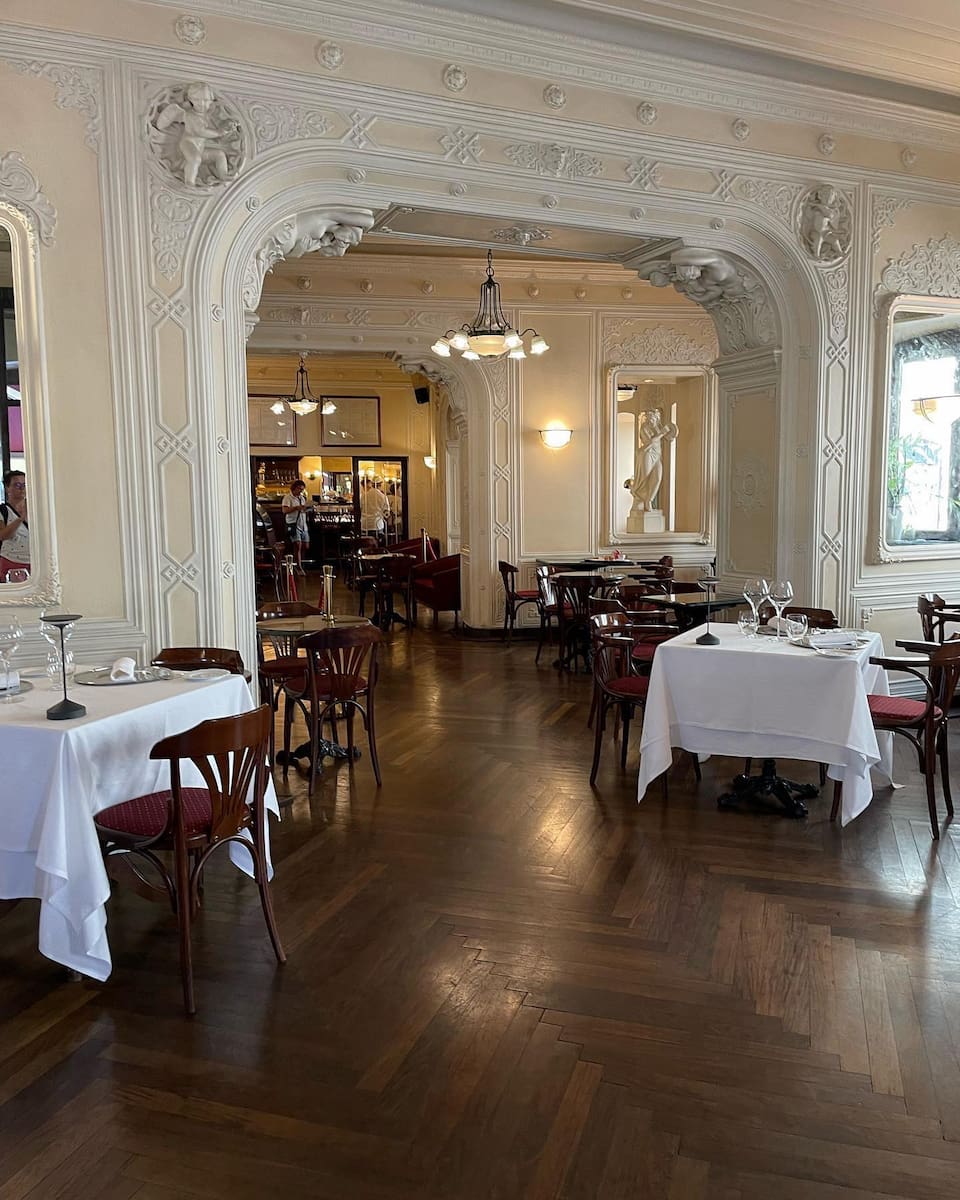
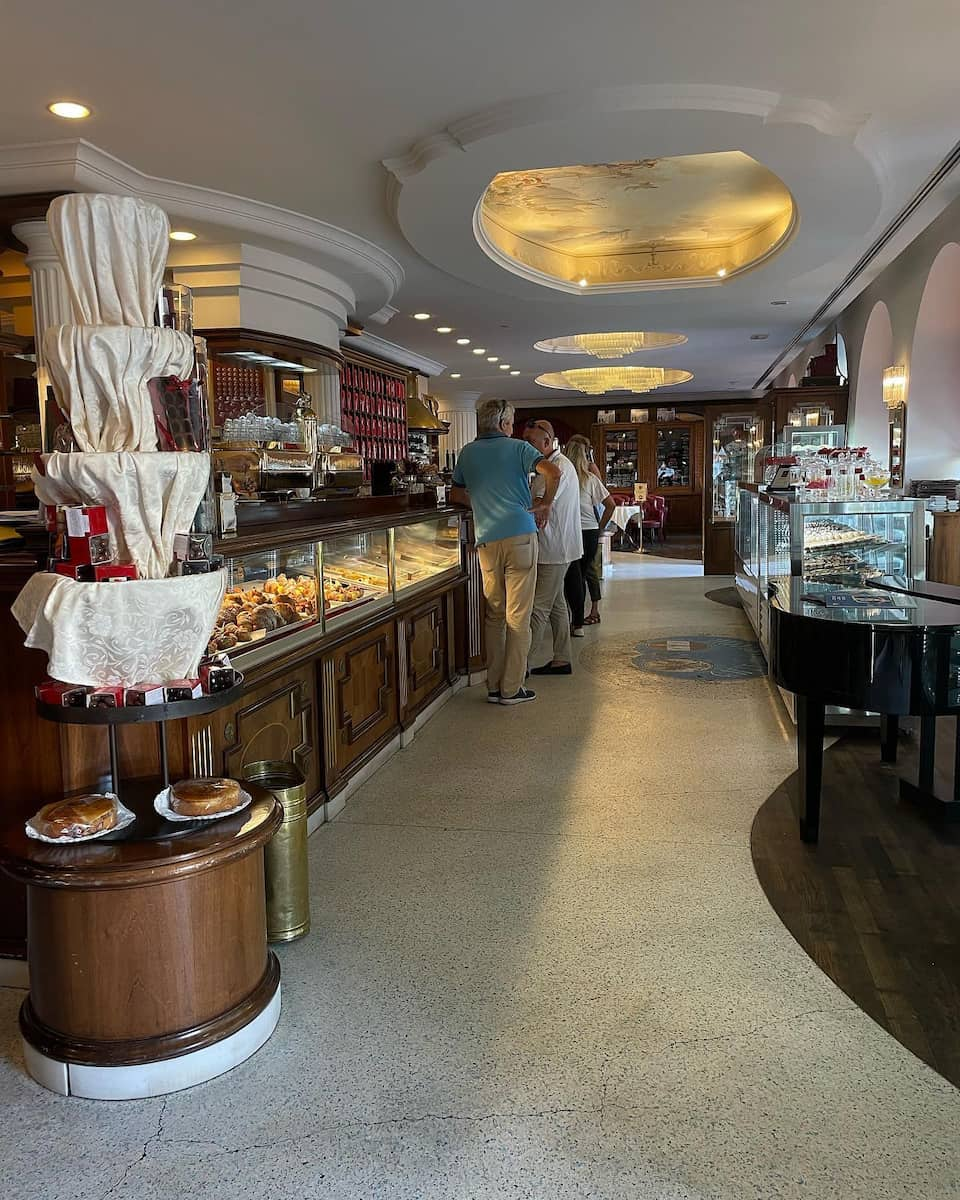
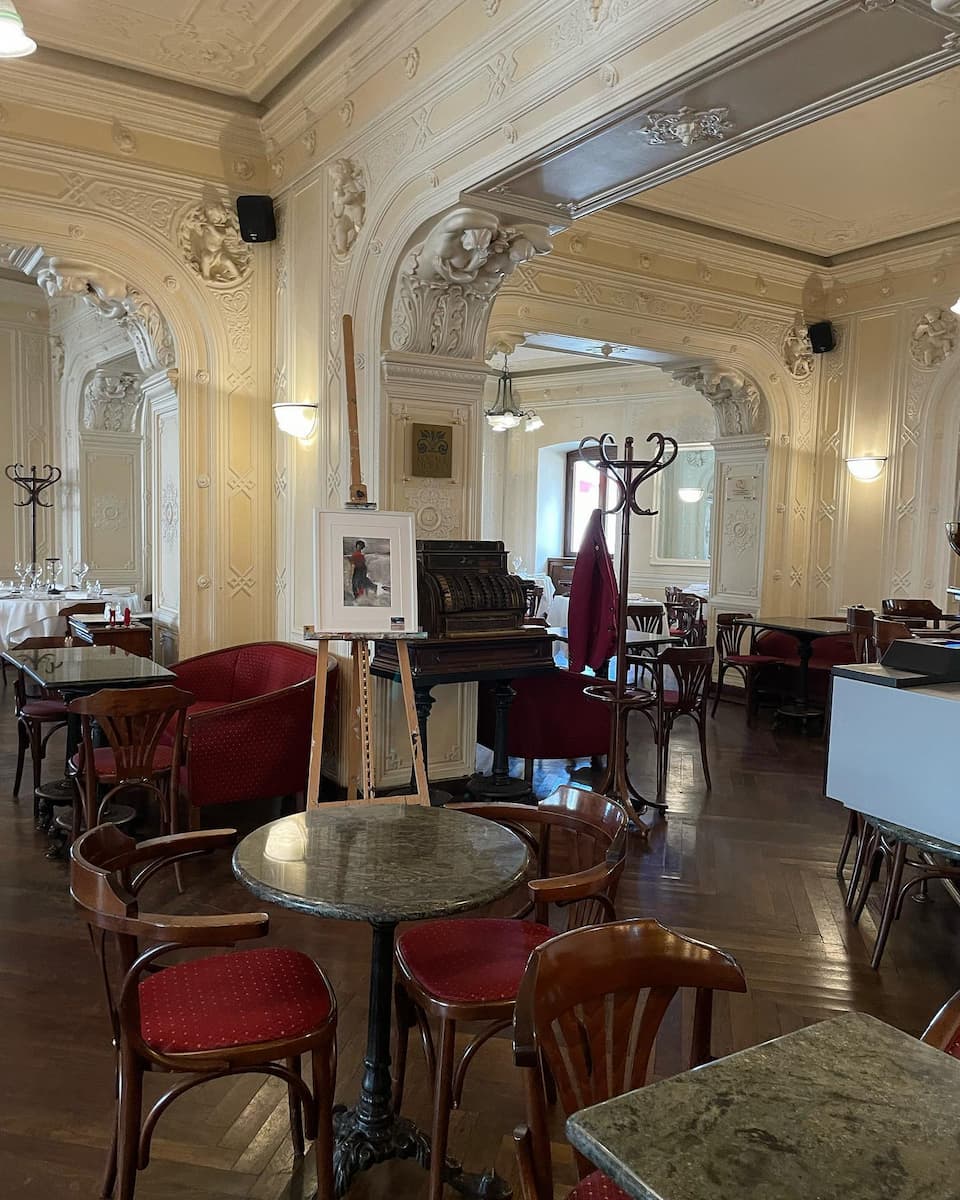
Architectural Trail: The district features outstanding examples of Art Nouveau architecture, including the former Stock Exchange building and numerous palatial residences built by successful coffee merchants.
Urban Explorer Tip: Download the free Trieste Coffee Trail app for a self-guided tour of historic cafes and merchant palaces.
6. 🌅 Bivio di Miramare Coastal Path
Natural Beauty: This free 2.5-kilometer coastal walk connects Barcola to Miramare Castle, offering stunning Adriatic views and access to hidden pebble beaches. The path features unique limestone formations and Mediterranean vegetation.
Marine Life: The route passes through a protected marine area where lucky visitors might spot dolphins, especially during early morning hours. Information panels along the way detail the local ecosystem and maritime history.
Outdoor Tip: Bring water shoes for impromptu swimming stops; best experienced at sunrise for wildlife spotting and photography.
7. 🏺 Ancient City Walls Trail
Historical Defense: Follow the remnants of Trieste’s medieval and Roman walls, discovering hidden staircases and ancient gates. The trail includes the medieval Riborgo Gate, Cavana Gate, and sections of the 1st-century Roman walls.
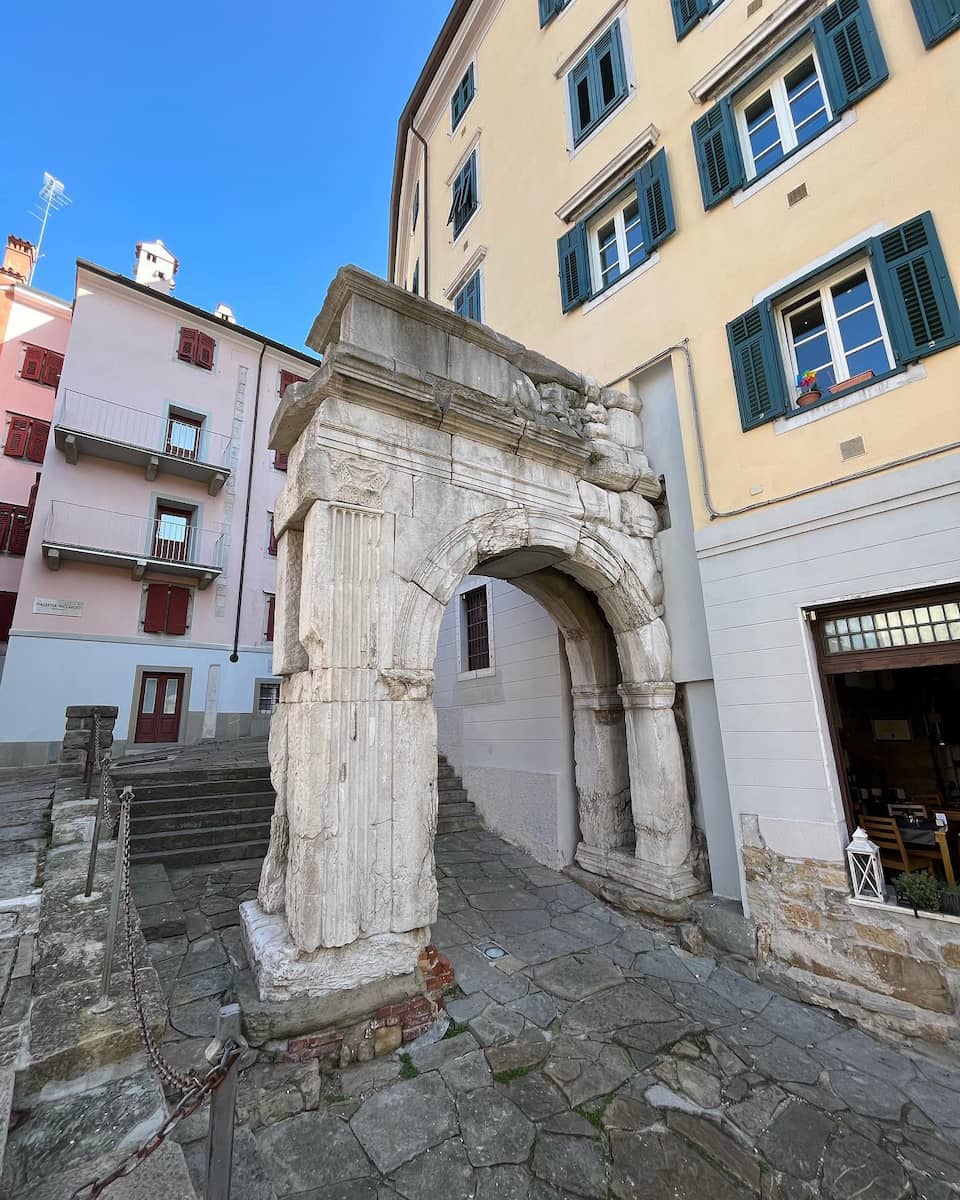
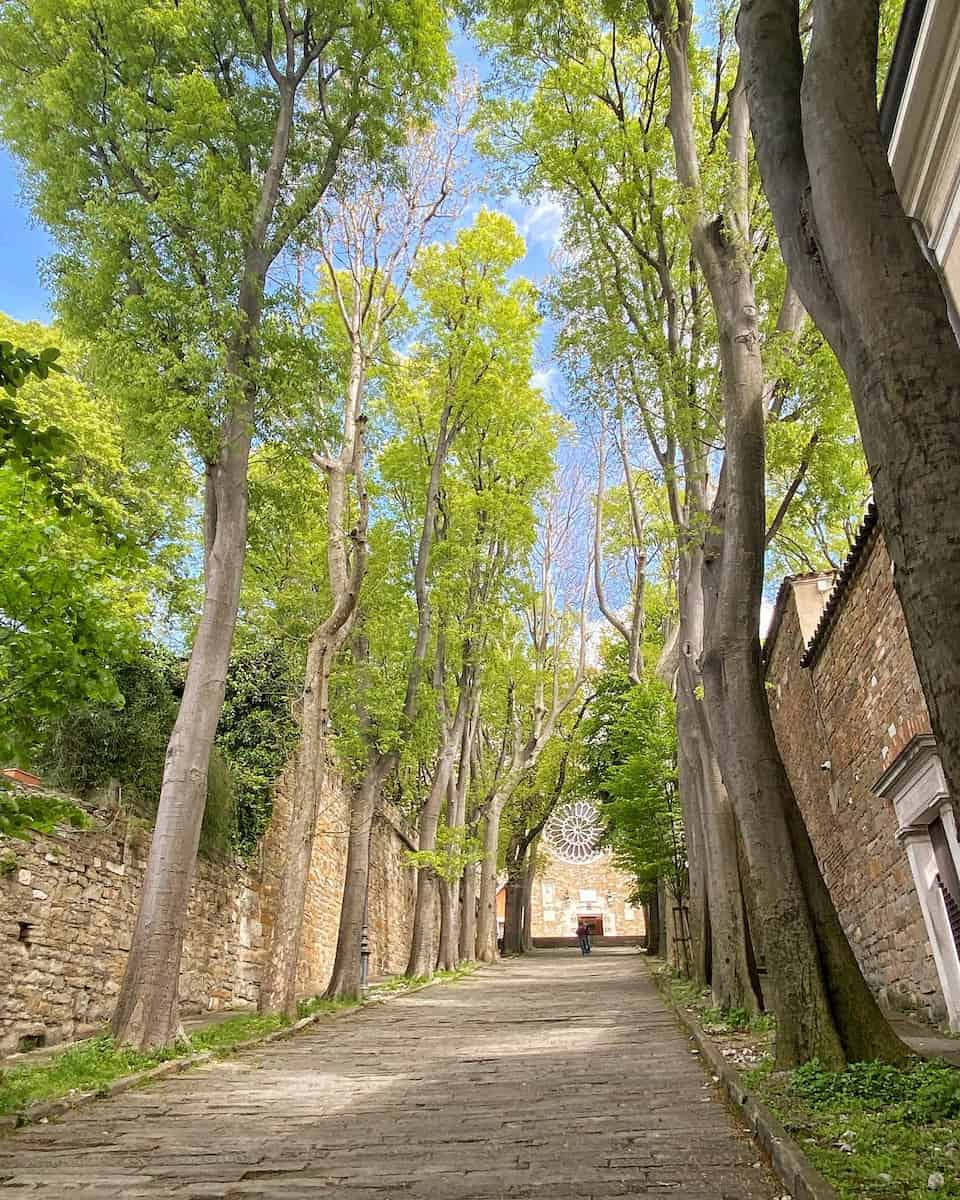
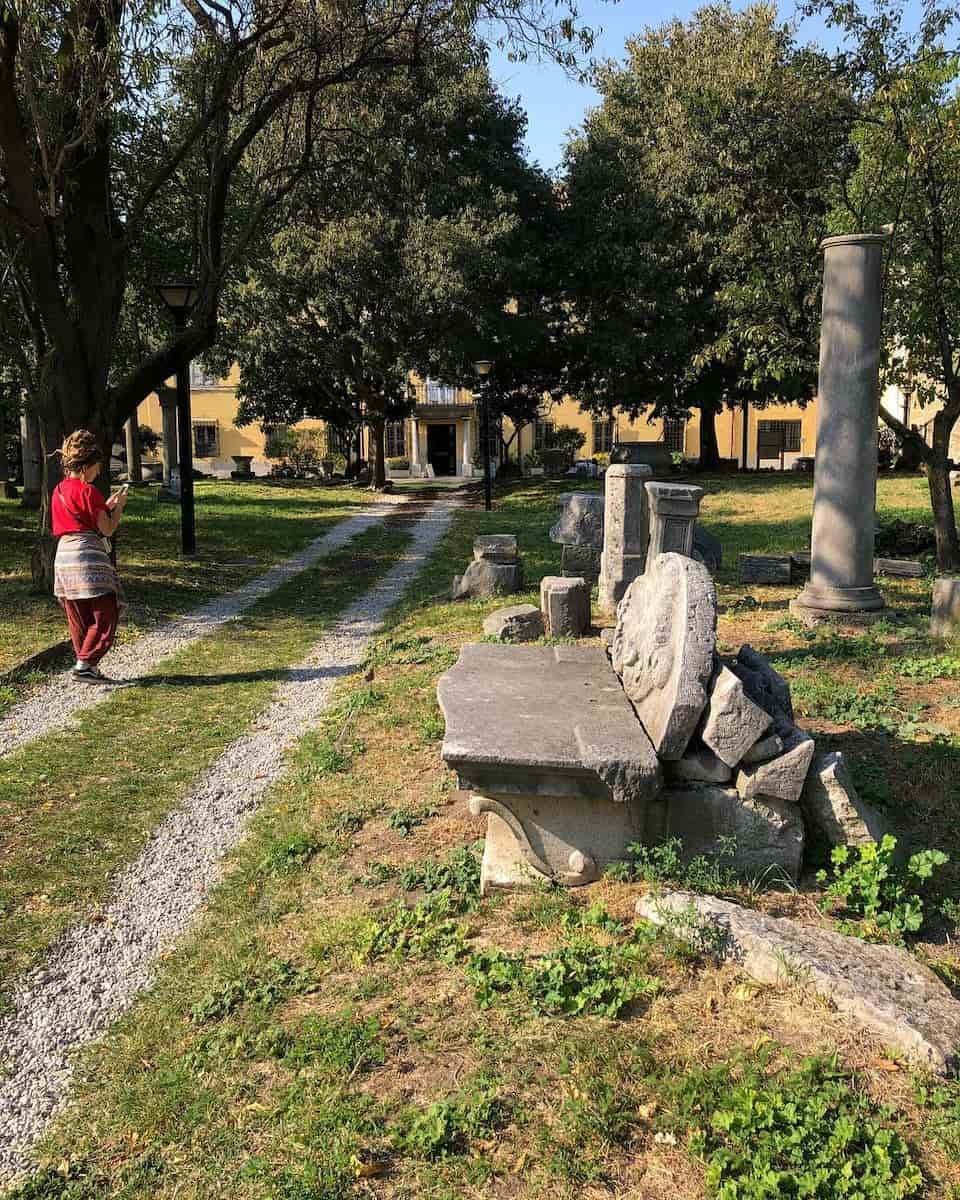
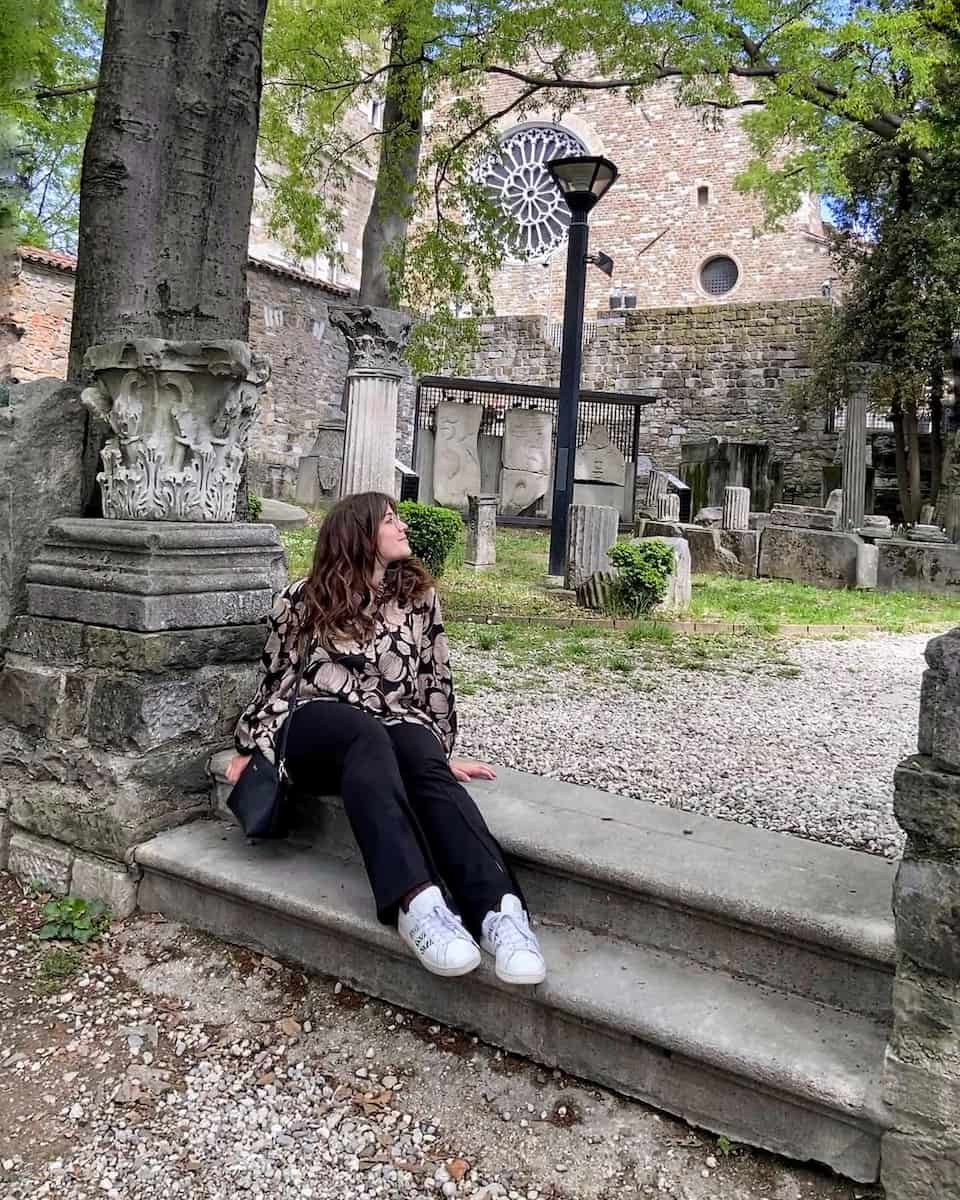
Archaeological Interest: The route reveals layers of city fortifications from different periods, including Austrian military additions and Venetian modifications. Each section tells a different chapter of Trieste’s defensive history.
Discovery Guide: Use the free city archaeology app for detailed historical information; early morning offers the best light for examining architectural details.
8. 🎨 Street Art and Urban Galleries
Contemporary Culture: Discover Trieste’s thriving street art scene in the Cavana and Cittavecchia districts, where historic walls showcase contemporary urban artists. Notable murals include works from international artists during the annual Street Art Festival and pieces reflecting Trieste’s multicultural heritage.
Urban Evolution: The route through these districts reveals how abandoned industrial spaces have been transformed into open-air galleries, with particular focus on the former port warehouse area, now a canvas for large-scale murals.
Art Seeker Tip: Join free monthly street art walks organized by local artists’ collectives; best photographed during late afternoon light.
9. 🌳 Parco della Rimembranza
Memorial Gardens: Located on the slopes of San Giusto hill, this park combines historical significance with panoramic city views. Each tree commemorates a fallen soldier from WWI, with over 800 memorial plaques creating a living monument.
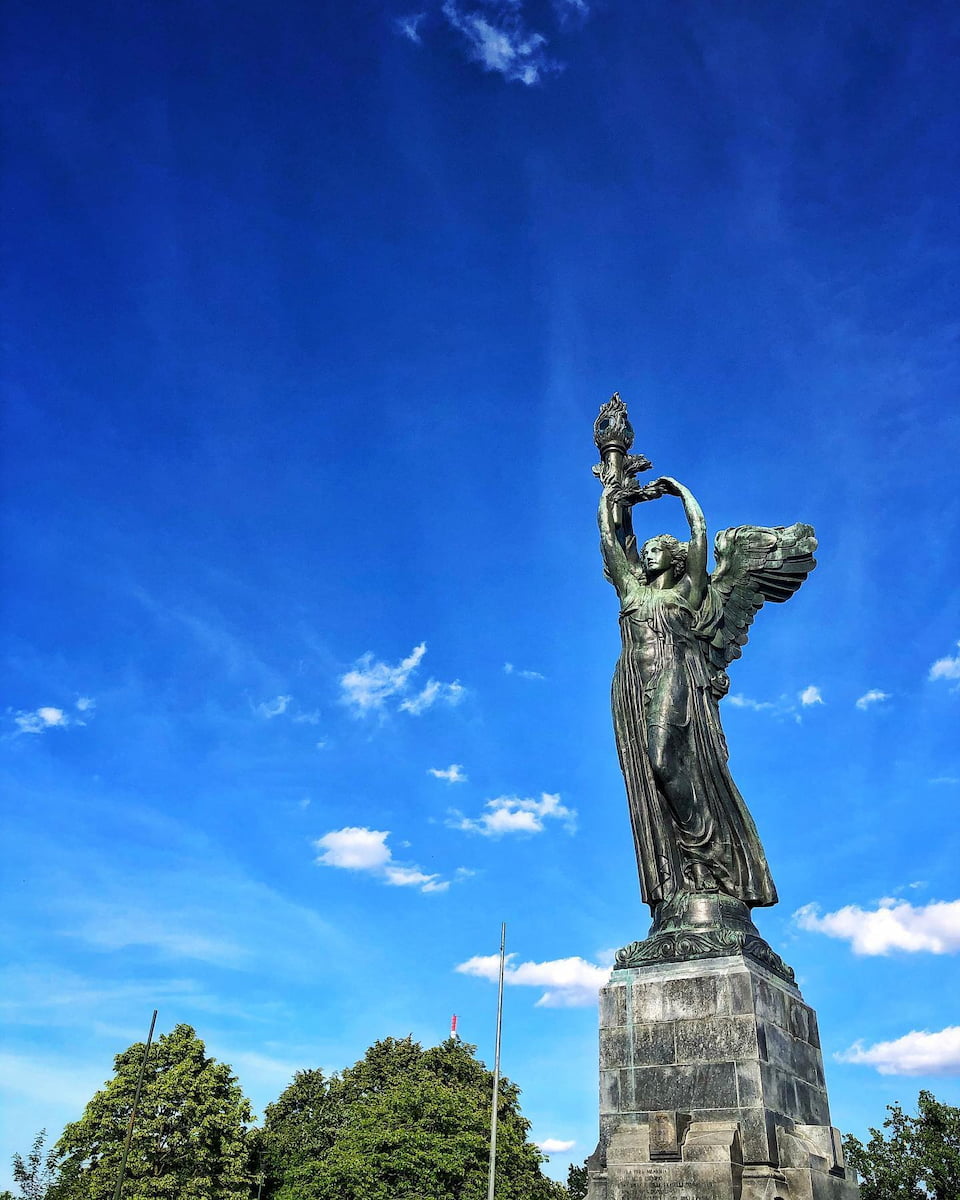
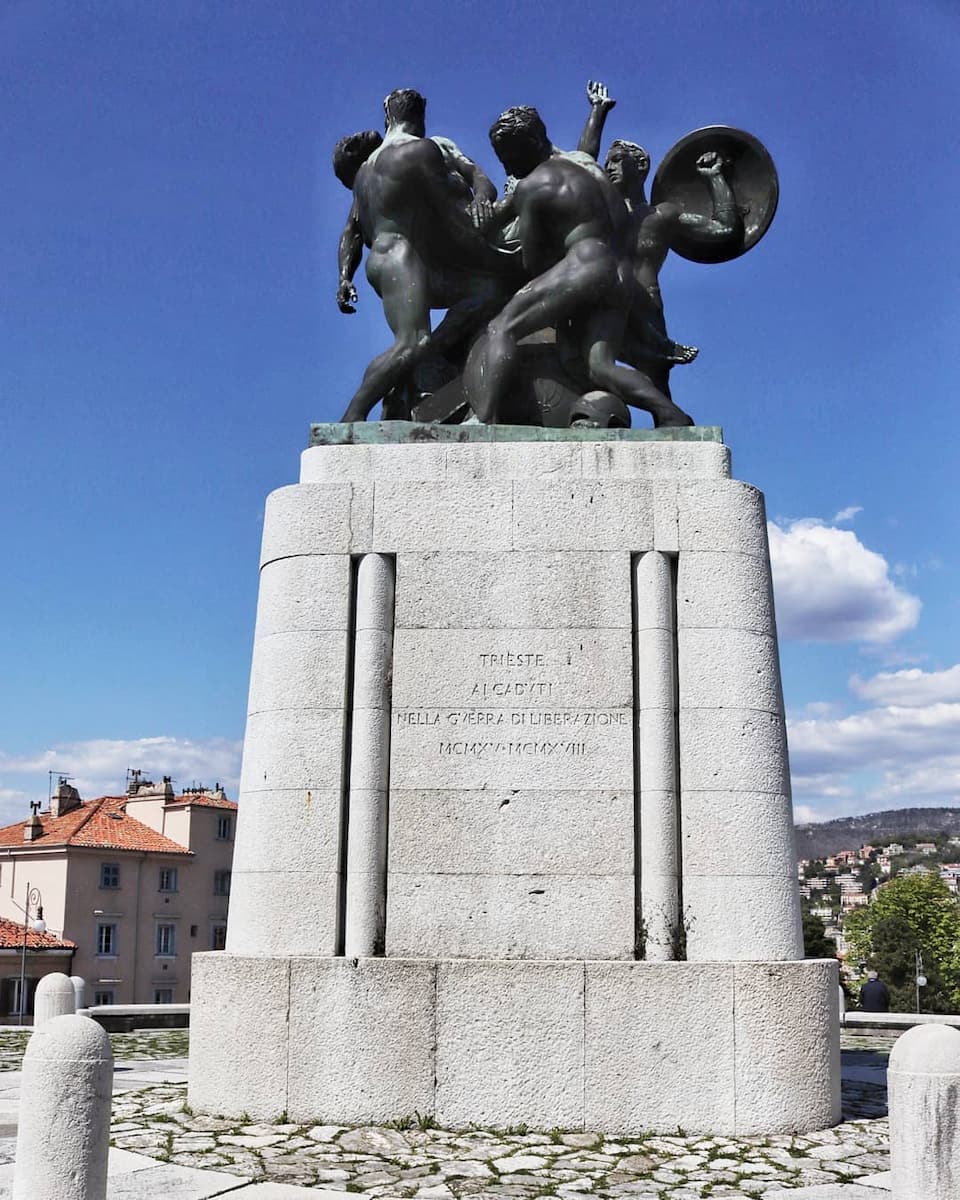
Scenic Viewpoint: The park offers unparalleled views of the Gulf of Trieste, the city’s rooftops, and distant Alpine peaks. Several restored WWI-era benches provide peaceful spots for contemplation.
Visit Guide: Access the park via the historic stairway from Via della Cattedrale; sunset offers the most dramatic city views.
10. ⛪ Cattedrale di San Giusto Martire
Sacred Heritage: Dating back to the 6th century, this Roman Catholic cathedral stands as a testament to Trieste’s religious history. The asymmetrical façade features a stunning Gothic rose window, while the interior showcases 12th-13th century apsidal mosaics depicting Our Lady of the Assumption and Christ between Saints.
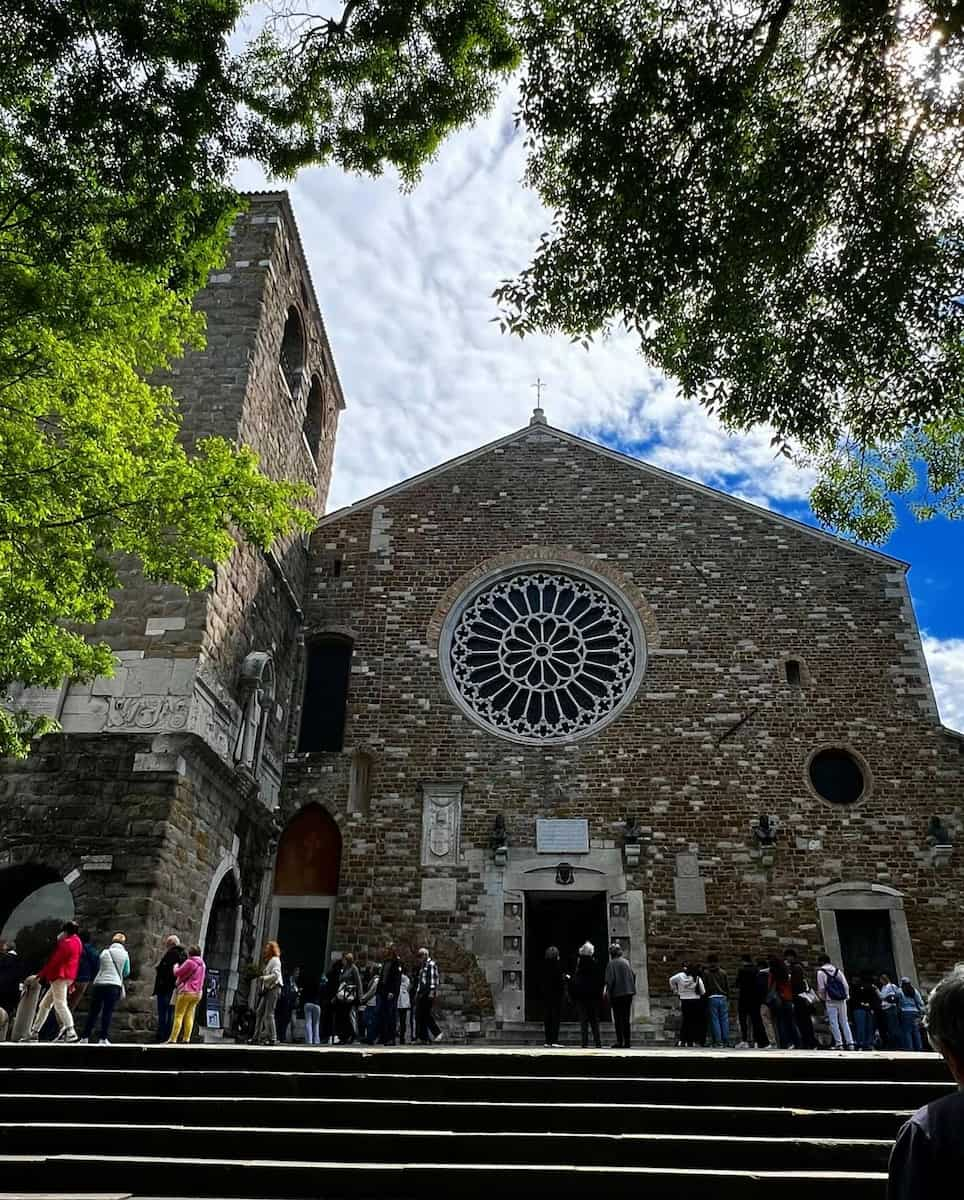
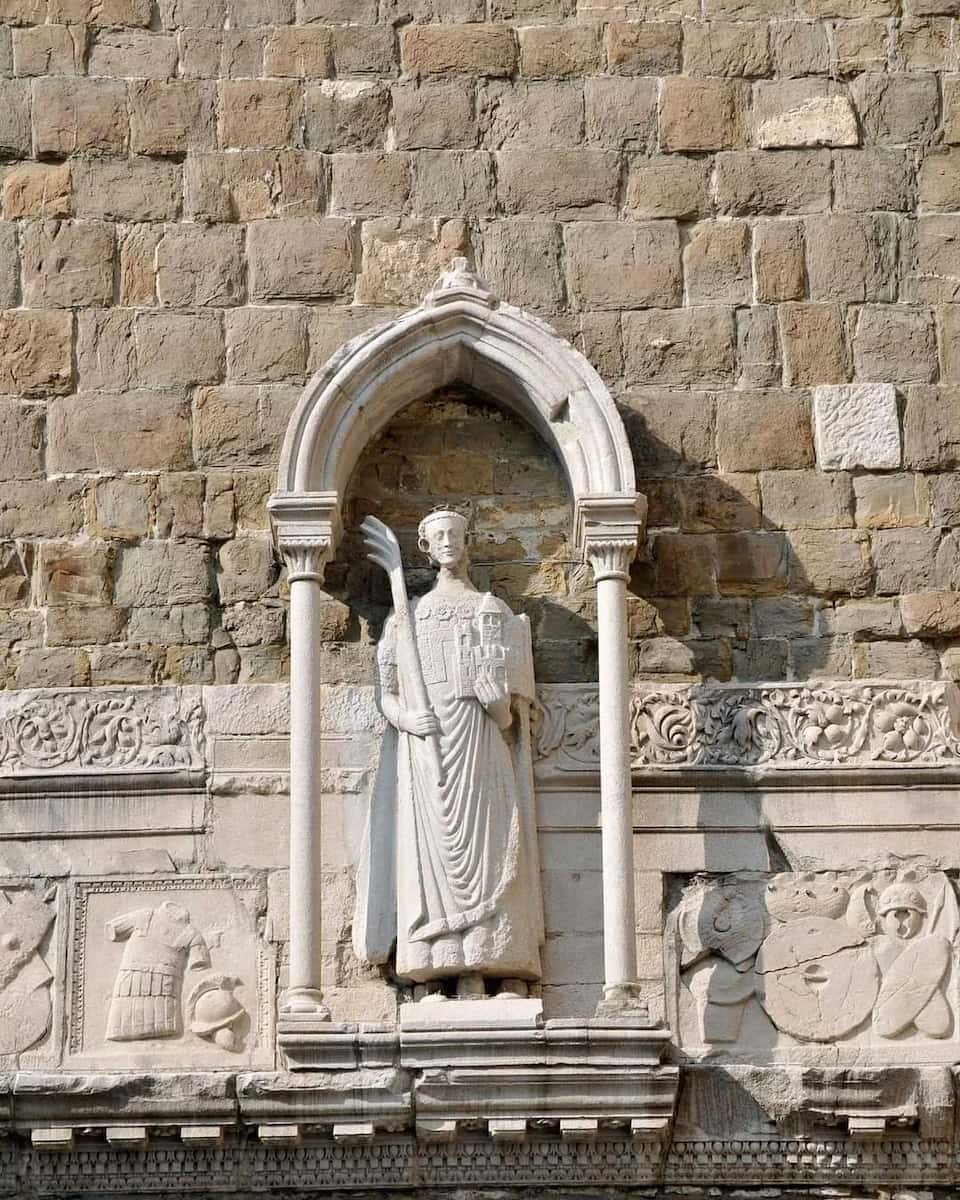
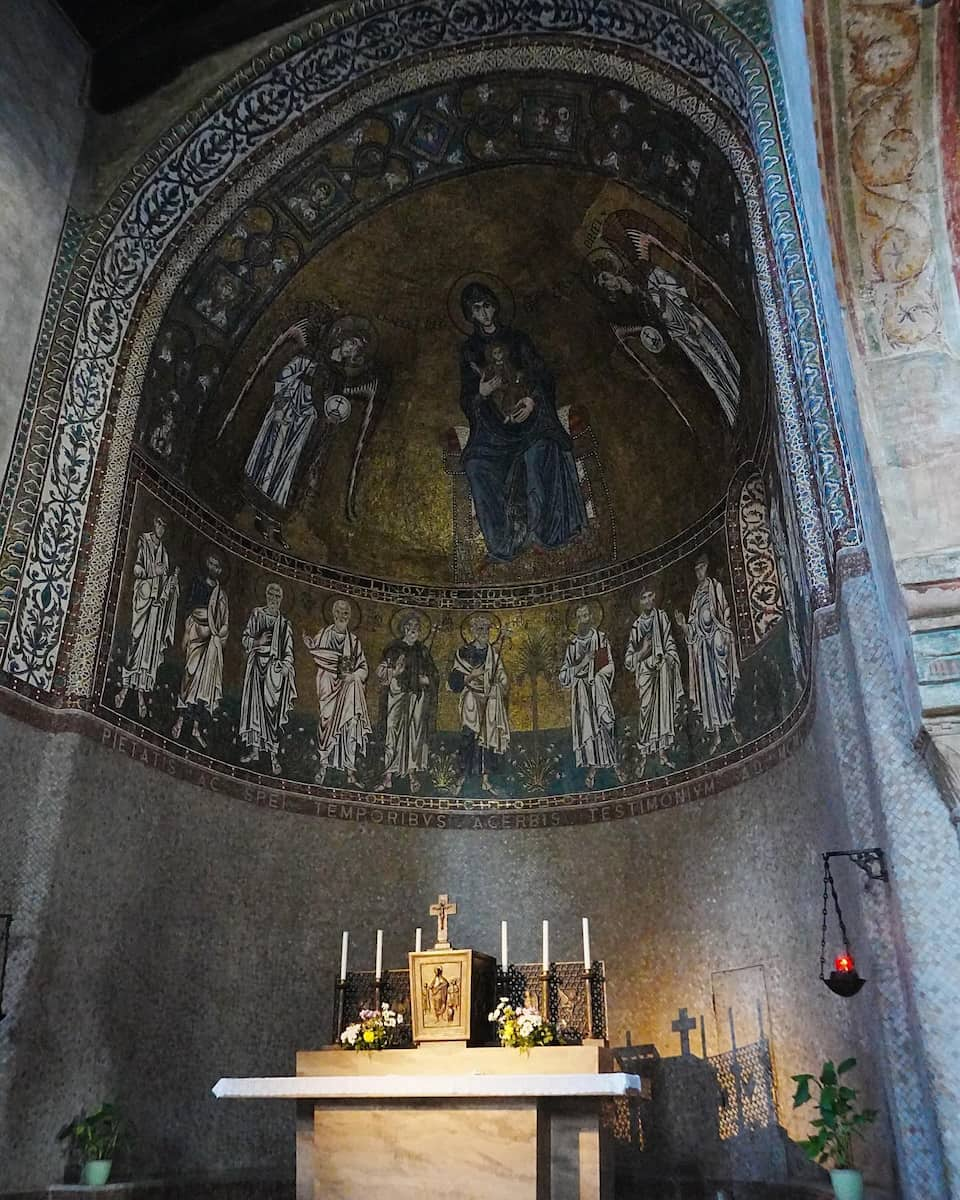
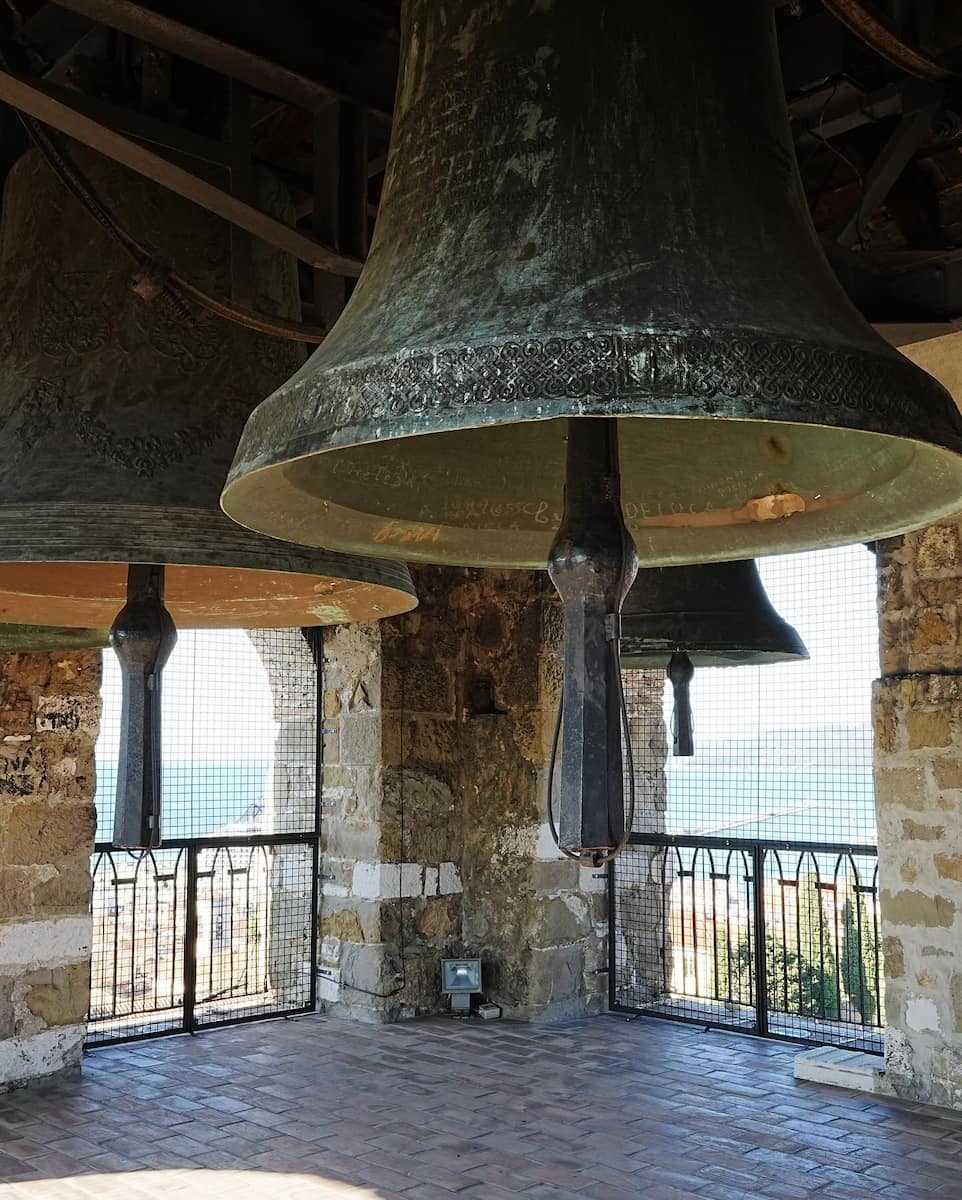
Architectural Marvel: The cathedral complex includes the medieval churchyard, the 14th-century church of San Giovanni, and unique architectural elements constructed from Romanesque debris stones. The building represents a fascinating blend of different historical periods and artistic styles.
Visitor Tip: Visit early morning for the best lighting to photograph the ancient mosaics; check mass schedules to plan your visit around services.
11. 🏖️ Bivio di Miramare Beach
Seaside Escape: Located along the scenic route from Barcola to Miramare Castle, this beach area offers stunning views of the Adriatic Sea. The beach connects to the waterfront promenade, making it easily accessible.
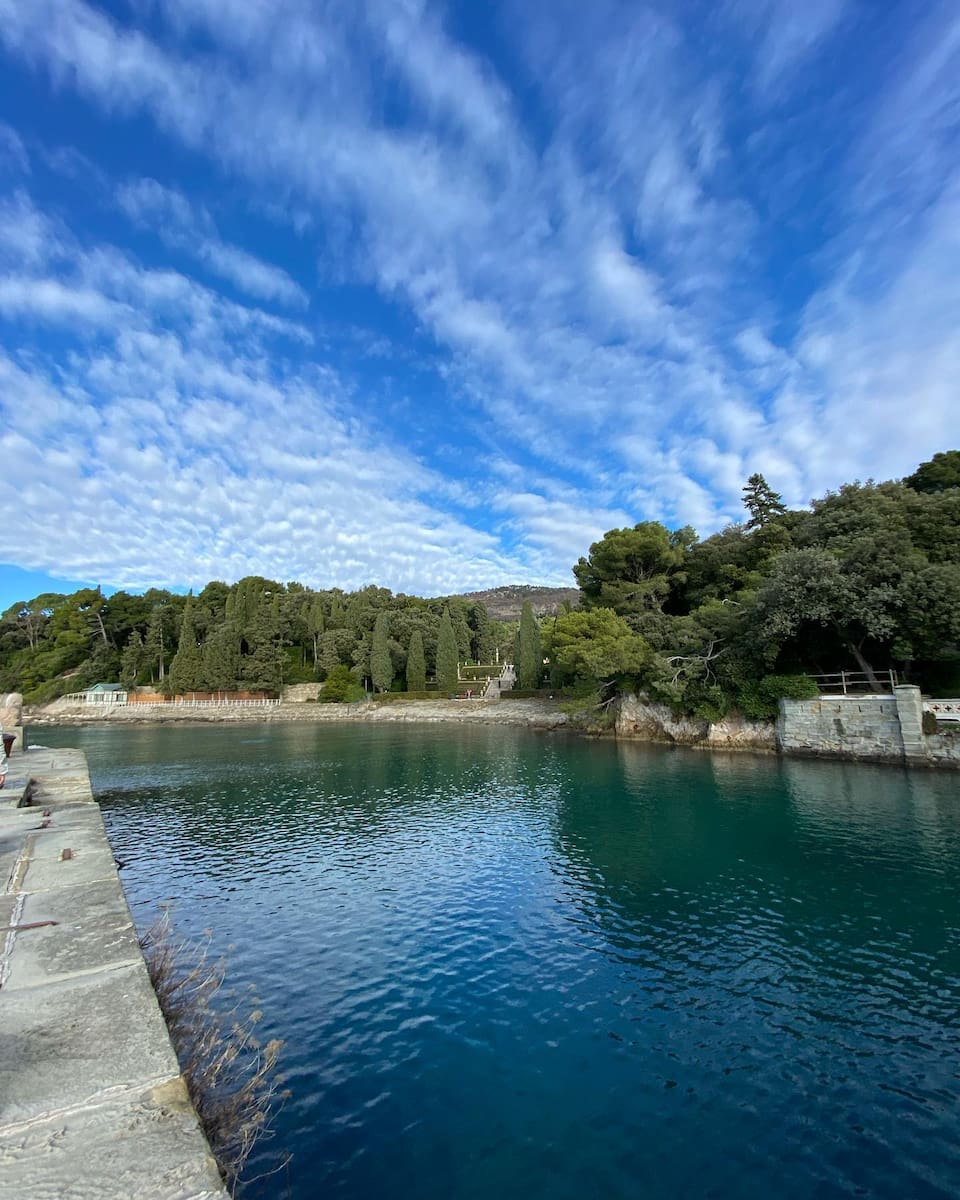
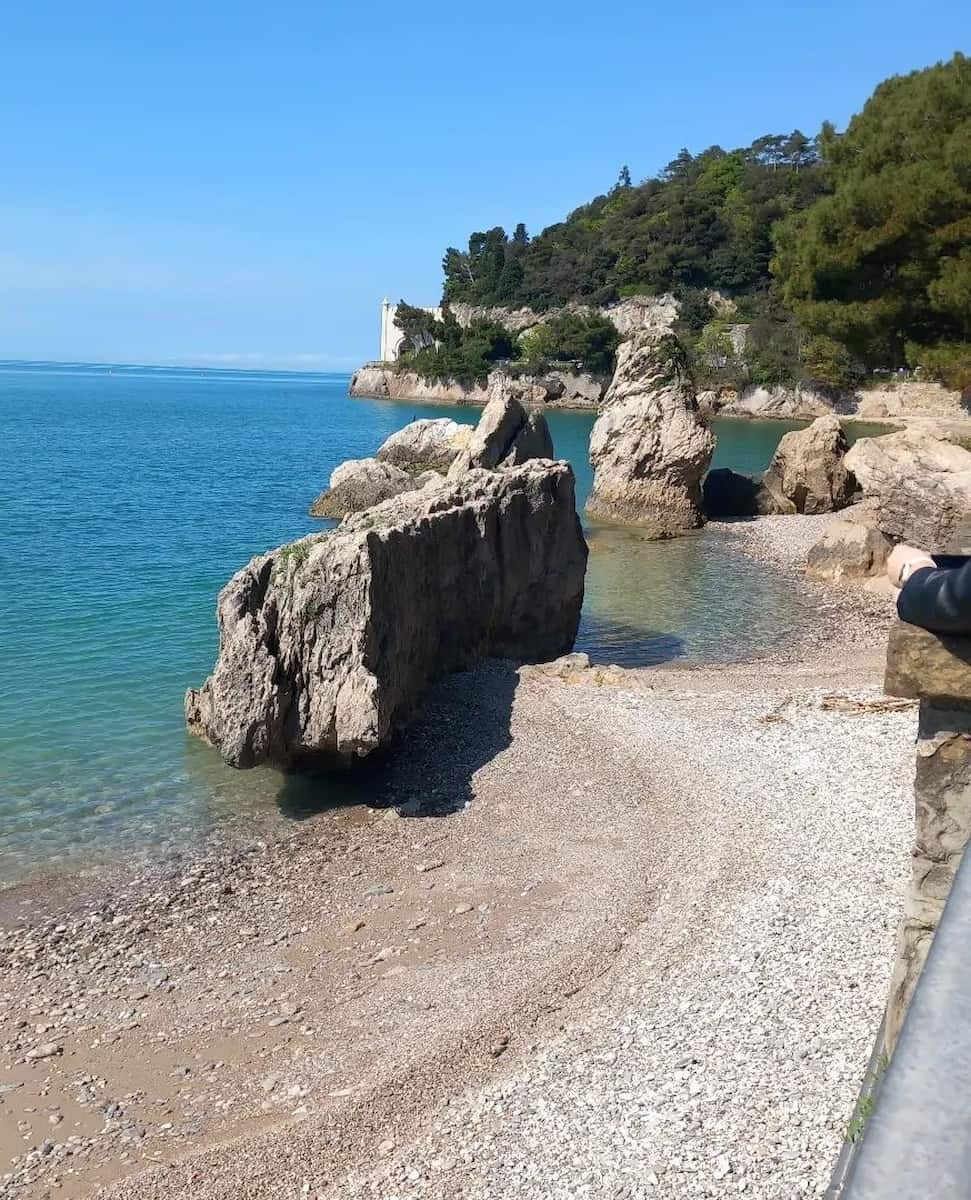
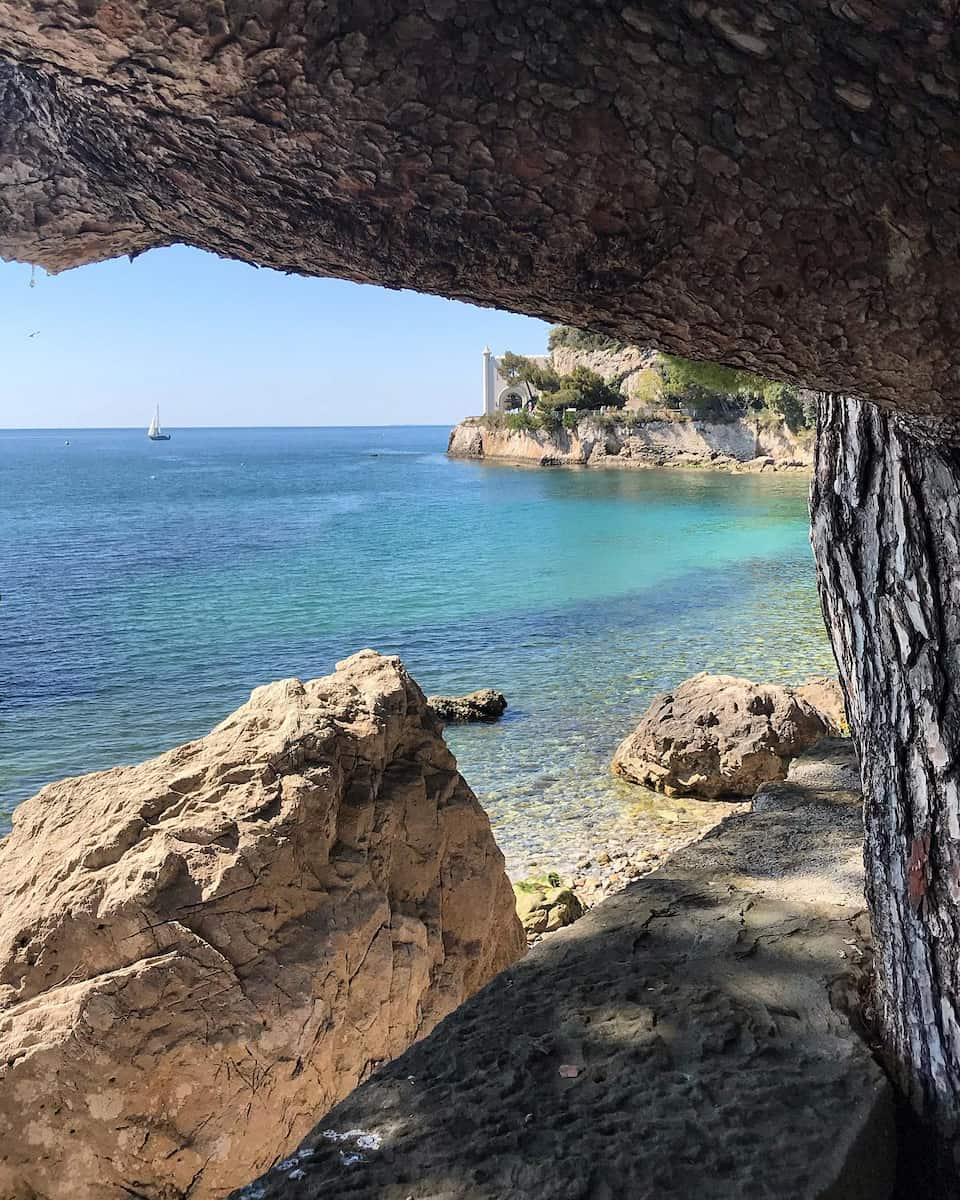
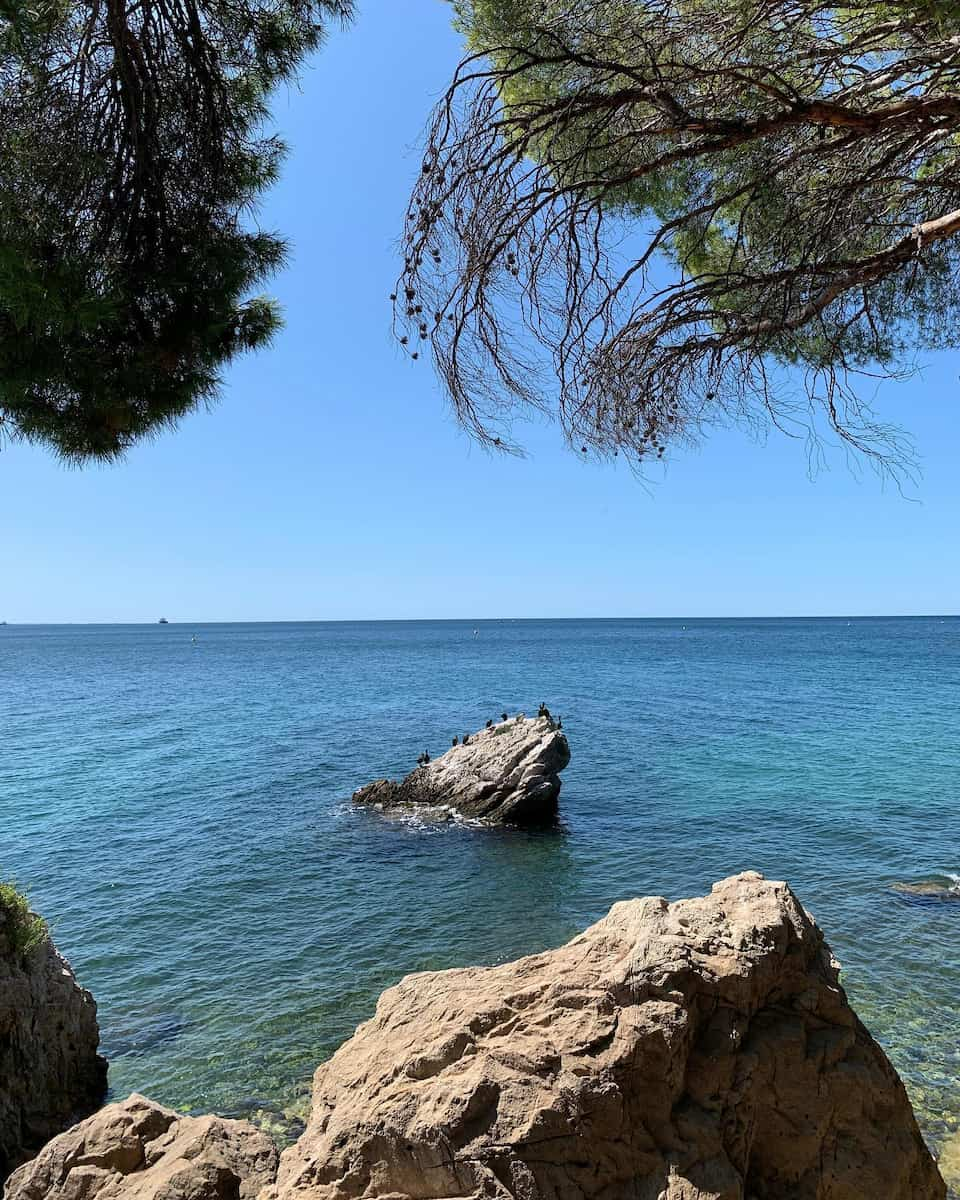
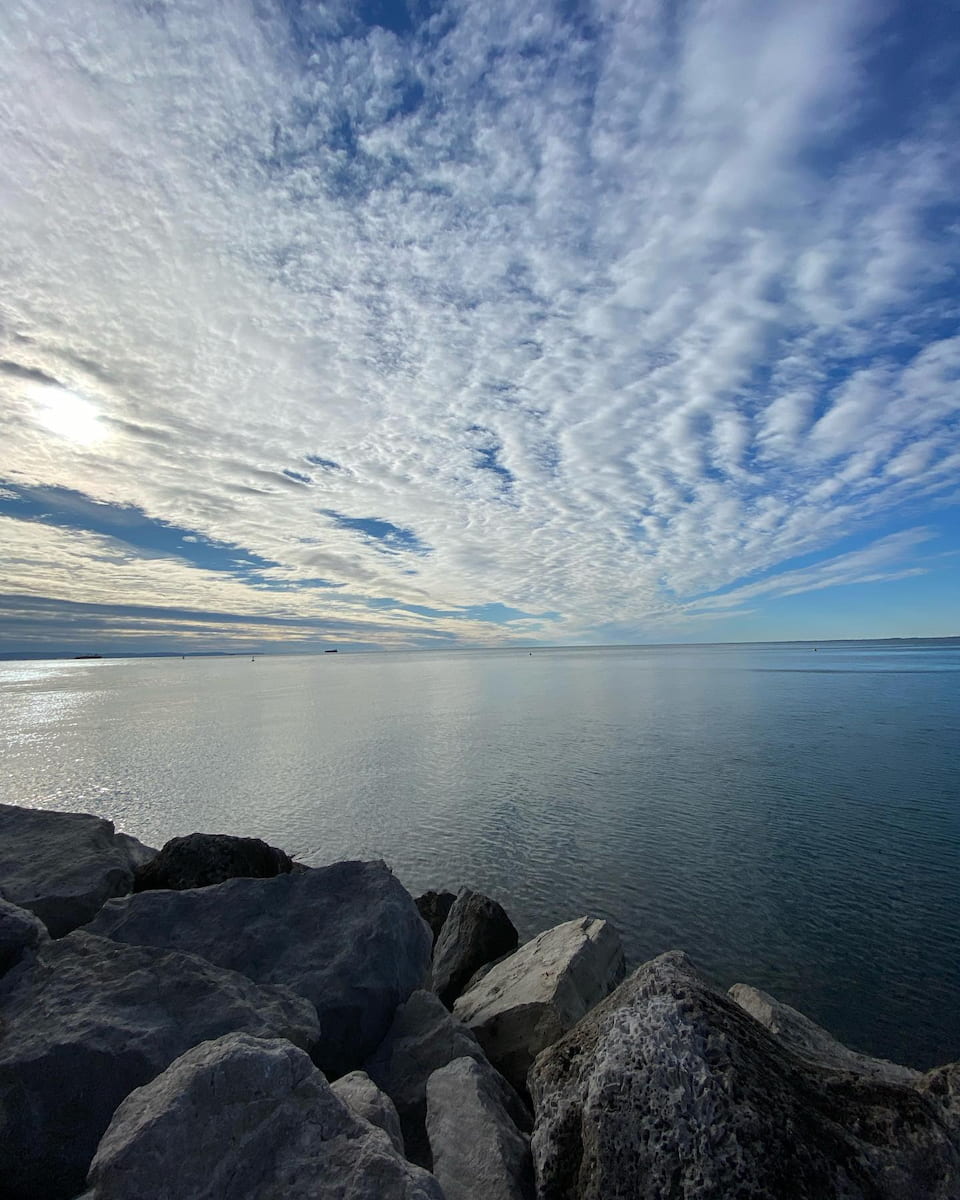
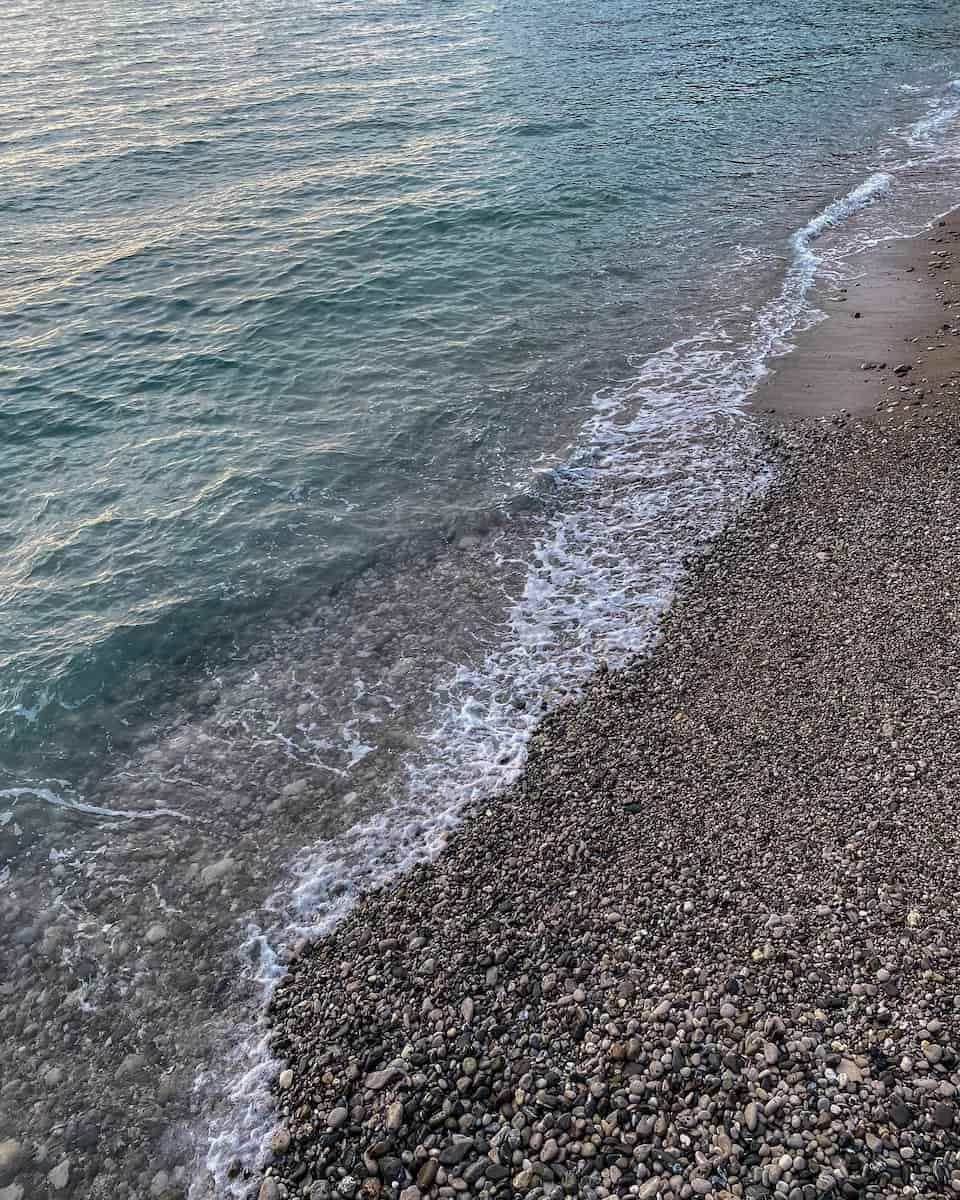
Nature Connection: The area combines maritime atmosphere with historic significance, offering views of both the coastline and nearby Miramare Castle grounds.
Beach Guide: Arrive early to secure the best spots; bring water shoes for the pebble beach areas.
Seasonal Activities in Trieste
🌸 Spring (March – May)
Mediterranean Awakening: Spring transforms Trieste with average temperatures of 15-20°C (59-68°F), perfect for exploring the city’s 40+ historic gardens and parks. The Karst plateau bursts with over 1,400 plant species, including rare orchids and hellebores. Villa Revoltella Park’s 50,000 square meters showcase blooming camellias and azaleas, while the Botanical Garden presents over 2,500 plant species. March brings the annual return of swallows to the city’s historic buildings, a phenomenon celebrated since Habsburg times.


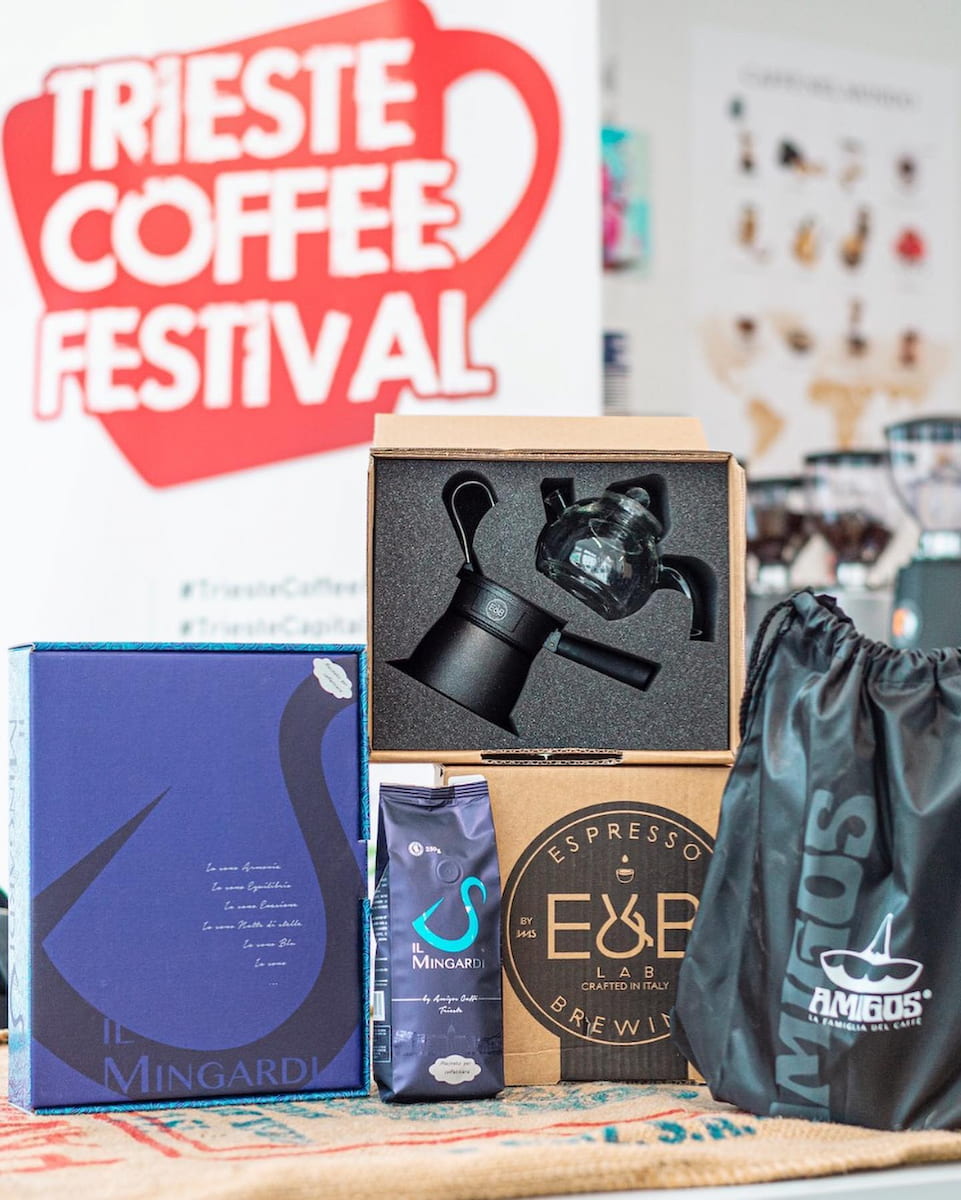

Annual Spring Events:
- Trieste Coffee Festival (March 8-10): Three-day celebration featuring 50+ roasters, barista championships, and historical coffee house tours. Includes access to 10 historic cafes normally closed to the public.
- International Literature Festival (March 15-20): Attracts 200+ authors from 30 countries, hosting 80 events across 15 venues, including readings in historic coffee houses.
- Spring Chamber Music Season (March-May): 25 concerts featuring international musicians performing in 8 historic venues, including the 1801 Teatro Verdi.
- Spring Antiques Fair (April 15-23): Gathering of 150+ dealers from across Europe, specializing in Habsburg-era antiques and maritime collectibles.
☀️ Summer (June – August)
Coastal Living: Summer sees Trieste embrace its maritime character with water temperatures reaching 24°C (75°F). The 4.5-kilometer Barcola waterfront transforms into a vibrant beach scene, attracting 20,000+ daily visitors. The city’s unique microclimate, influenced by the Bora wind, keeps average temperatures at a pleasant 25°C (77°F). Evening sea breezes create perfect conditions for outdoor dining at 200+ restaurants and cafes.
Annual Summer Events:
- Trieste Estate Festival (June 21-August 31): 70+ open-air performances across 30 venues, featuring music, theater, and dance from 500+ international artists.
- Mare Nord Est (July 15-23): Maritime festival showcasing 100+ boats, featuring traditional boat-building demonstrations and seafood from 40+ local restaurants.
- Summer Science Festival (August 15-30): 200+ interactive exhibitions and workshops across 15 venues, focusing on marine biology and astronomy.
- Barcolana Regatta (Second Sunday of October): World’s largest sailing race with 2,000+ vessels, attracting 300,000+ spectators and featuring a week of maritime events.
🍁 Autumn (September – November)
Cultural Heritage: Autumn brings mild temperatures (15-20°C/59-68°F) and crystal-clear visibility, perfect for photography and outdoor exploration. The season sees the harvest of regional specialties including Prosecco grapes and white truffles. The Karst plateau transforms with fall colors, while the Bora wind creates spectacular wave displays along the 7-kilometer coastline.
Annual Autumn Events:
- Trieste Photo Days (October 24-November 3): International photography festival featuring 300+ photographers, 50 exhibitions across 25 venues, and workshops.
- Triestespresso Expo (October 24-26): World’s largest specialty coffee event with 200+ exhibitors from 80 countries, showcasing Trieste’s role as Europe’s coffee capital.
- Science+Fiction Festival (October 29-November 3): Europe’s oldest science fiction film festival, screening 100+ films across 5 venues.
- Flavours of the Karst (October-November): Six-week gastronomy festival featuring 50+ restaurants serving traditional dishes and local wines.
❄️ Winter (December – February)
Habsburg Winter: Winter in Trieste maintains relatively mild temperatures (5-10°C/41-50°F), though the famous Bora wind can reach speeds of 100+ km/h. The season showcases the city’s Central European character with Christmas markets modeled after Vienna’s traditions. Indoor cultural venues, including 40+ museums and galleries, offer heated refuge and extended winter hours.
Annual Winter Events:
- Christmas Market at Canal Grande (December 1-24): 100 traditional wooden stalls selling artisanal products and regional specialties, modeled after Austrian Christmas markets.
- New Year’s Concert at Teatro Verdi (December 31): Prestigious classical performance in the 1,300-seat historic theater, followed by fireworks over the Gulf of Trieste.
- Carnival of Trieste (February): Three-week celebration featuring historic masked parades, 19th-century costume balls, and traditional Habsburg-era ceremonies.
- Winter Concert Series at Revoltella Museum (January-February): 20 chamber music performances in the museum’s historic halls, featuring international classical artists.
Day Trips from Trieste
1. 🏰 Piran & Panoramic Slovenian Coast
Medieval Charm: Just 45 minutes from Trieste, Piran enchants visitors with its Venetian Gothic architecture and stunning position on a peninsula. The town’s impressive Tartini Square, surrounded by historic buildings, serves as the heart of this medieval gem, while the St. George’s Parish Church offers panoramic views of three countries from its bell tower.
Coastal Heritage: The city walls, dating from the 7th century, provide spectacular views over terracotta roofs to the Adriatic Sea. The First of May Square features a unique 15th-century stone rainwater reservoir system, while narrow cobblestone streets hide artisan workshops and traditional seafood restaurants.
Time Saver: Visit early morning to avoid crowds and catch the best light for photography of Tartini Square; combine with a visit to the Sečovlje Salt Pans.
⭐ Best tour
- Piran Walking Tour and Panoramic Slovenian Coast – This full-day tour combines the medieval charm of Piran with the stunning beauty of the Slovenian coast, just a short journey from Trieste. Visitors explore Piran’s Venetian Gothic architecture, including Tartini Square and the Church of St. George, while enjoying panoramic views of three countries from the city walls.
2. 💎 Lake Bled
Alpine Wonder: Located 90 minutes from Trieste, Lake Bled presents a fairy-tale setting with its emerald-green glacial lake, island church, and clifftop castle. The medieval Bled Castle, Slovenia’s oldest fortress, stands guard over the lake from its 130-meter perch, offering wine tasting in its historic cellar.
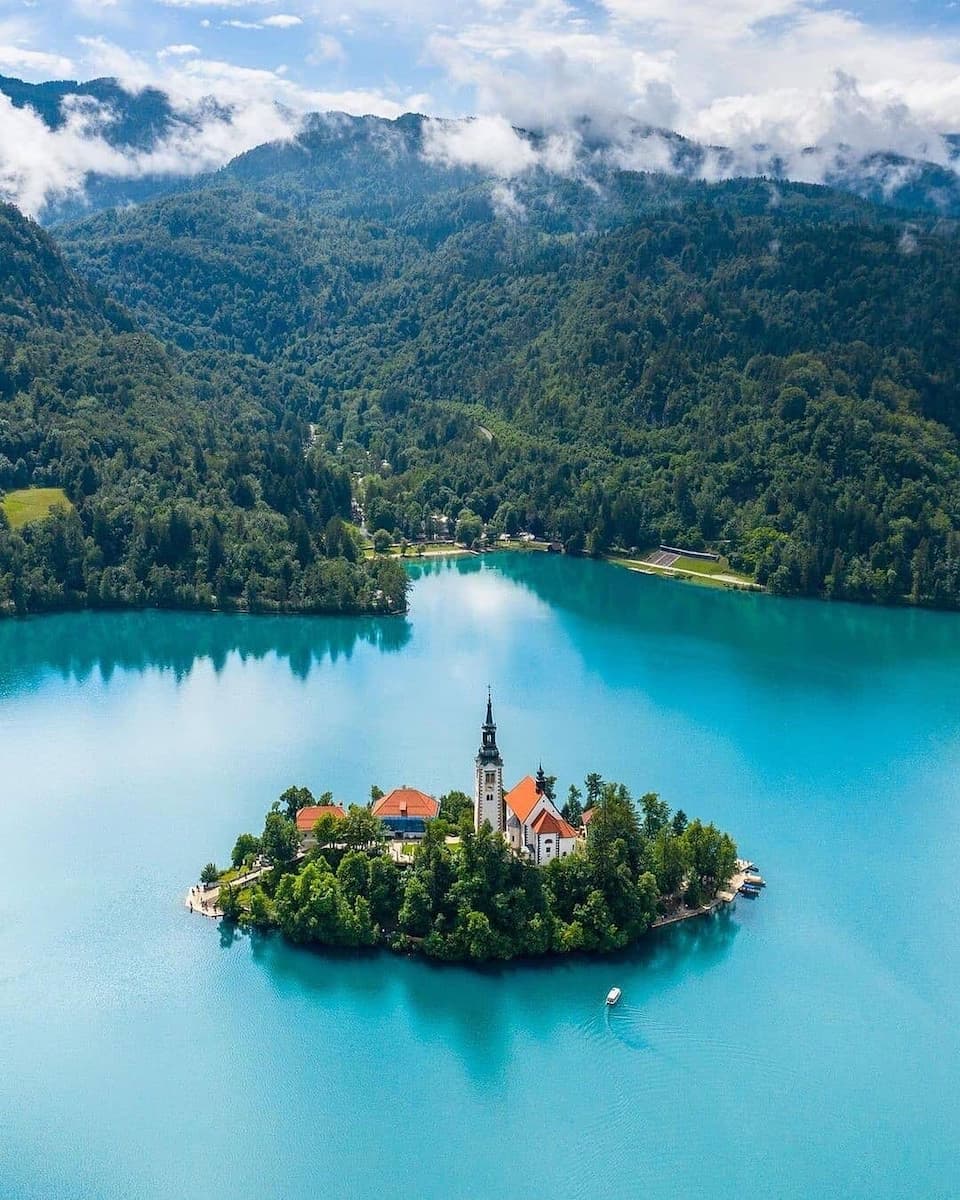
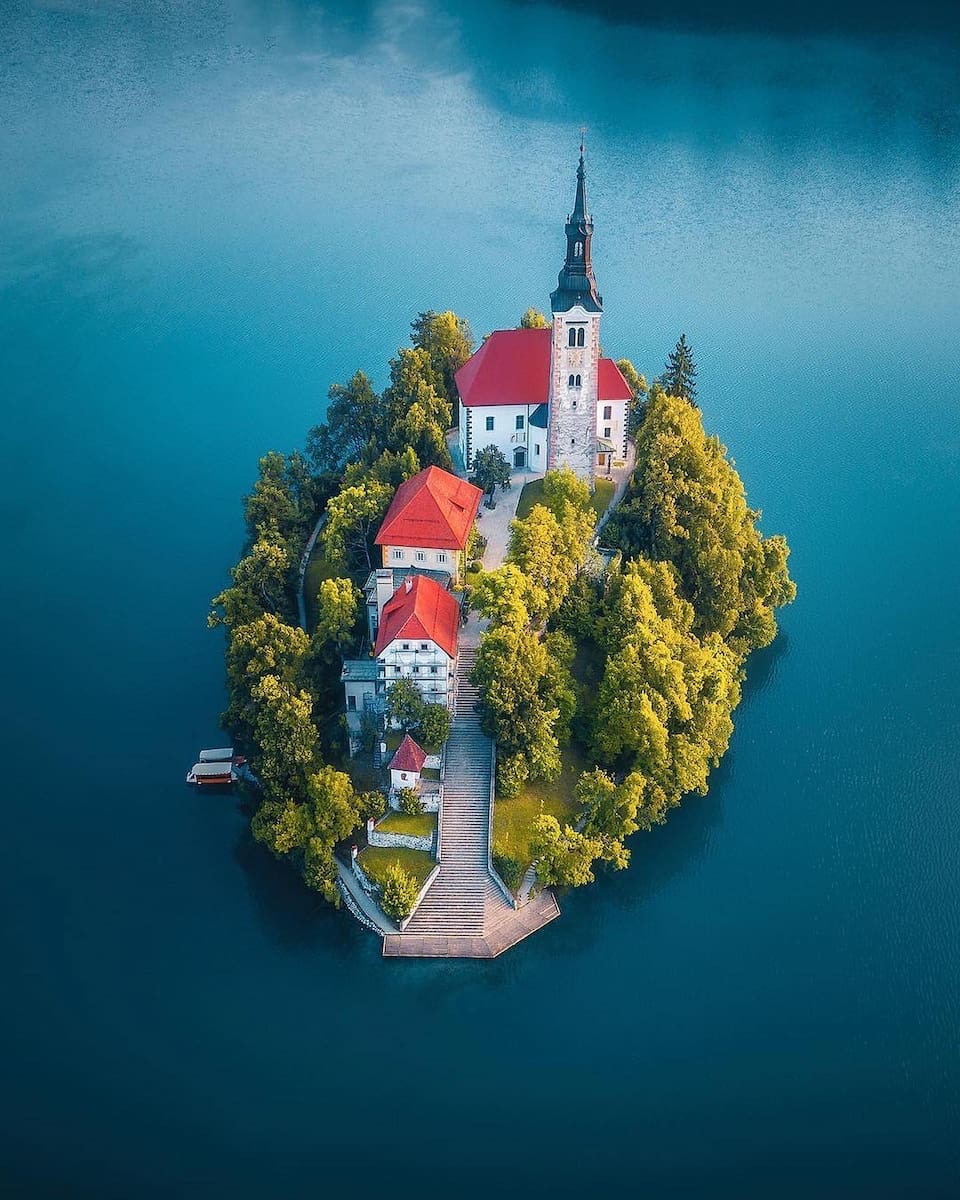
Island Experience: The iconic Bled Island hosts the 17th-century Church of the Assumption, reached by traditional wooden Pletna boats. Visitors can ring the church’s wishing bell, dating from 1534, and explore the 99-step stone staircase leading to the church.
Visitor Tip: Book a morning tour to enjoy the lake before crowds arrive; combine with a visit to nearby Vintgar Gorge for spectacular waterfall views.
⭐ Best activities
- Tour: Lake Bled and Ljubljana Tour from Trieste – This full-day tour combines two of Slovenia’s most enchanting destinations, offering a perfect blend of natural beauty and cultural heritage just a short journey from Trieste. Visitors explore Lake Bled’s fairy-tale setting, including its medieval castle perched 130 meters above the emerald lake, and take a traditional Pletna boat ride to the iconic island church.
- Ticket online: Lake Bled, Postojna Cave & Predjama Castle: Ticket – Visit three unique Slovenian attractions on this roundtrip from the capital.
3. 🌋 Postojna Cave
Underground Marvel: Located just 60 minutes from Trieste, Postojna Cave stands as Europe’s largest show cave system, stretching over 24 kilometers of fascinating underground passages. The cave features a unique electric train system that has transported visitors through its chambers since 1872, making it one of Slovenia’s most visited attractions.
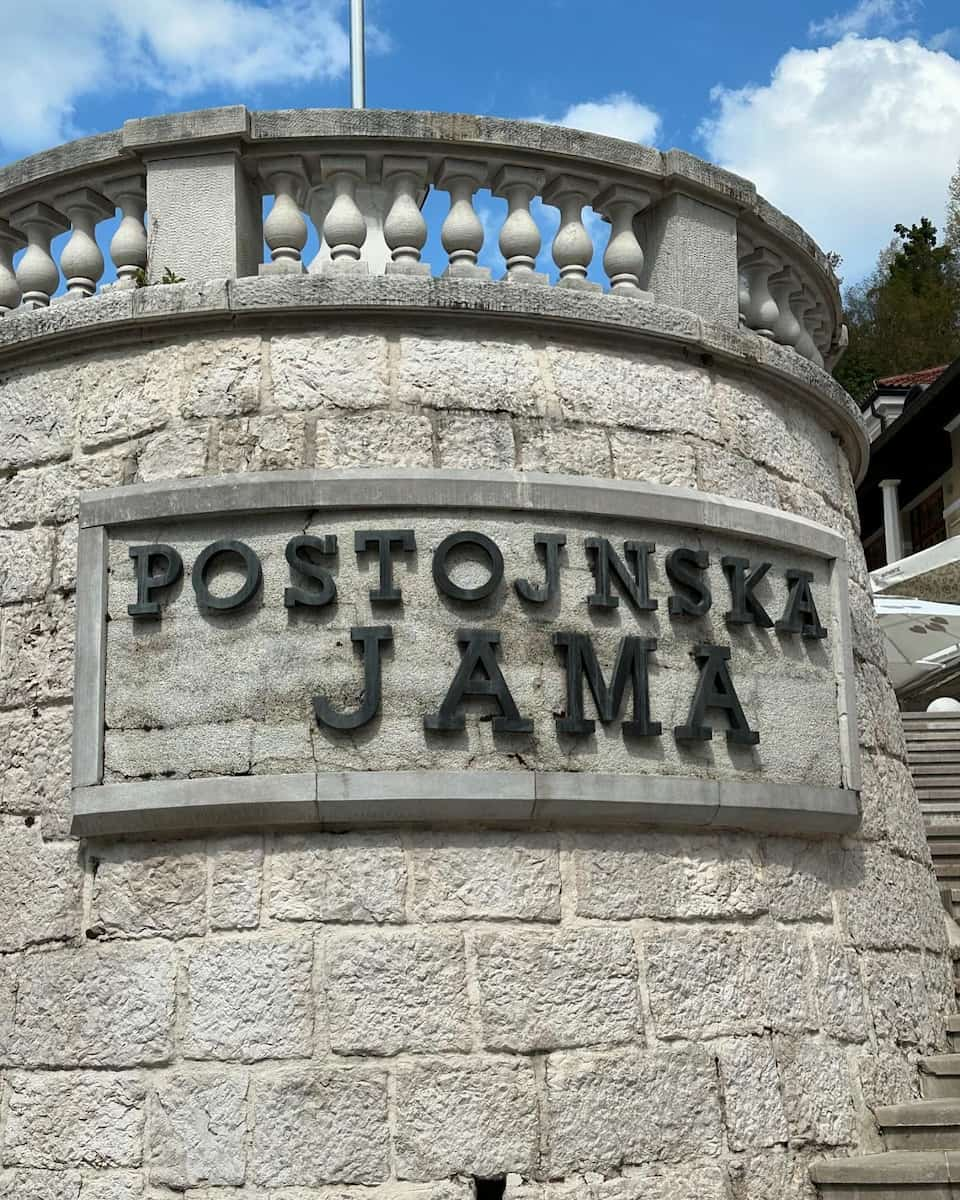
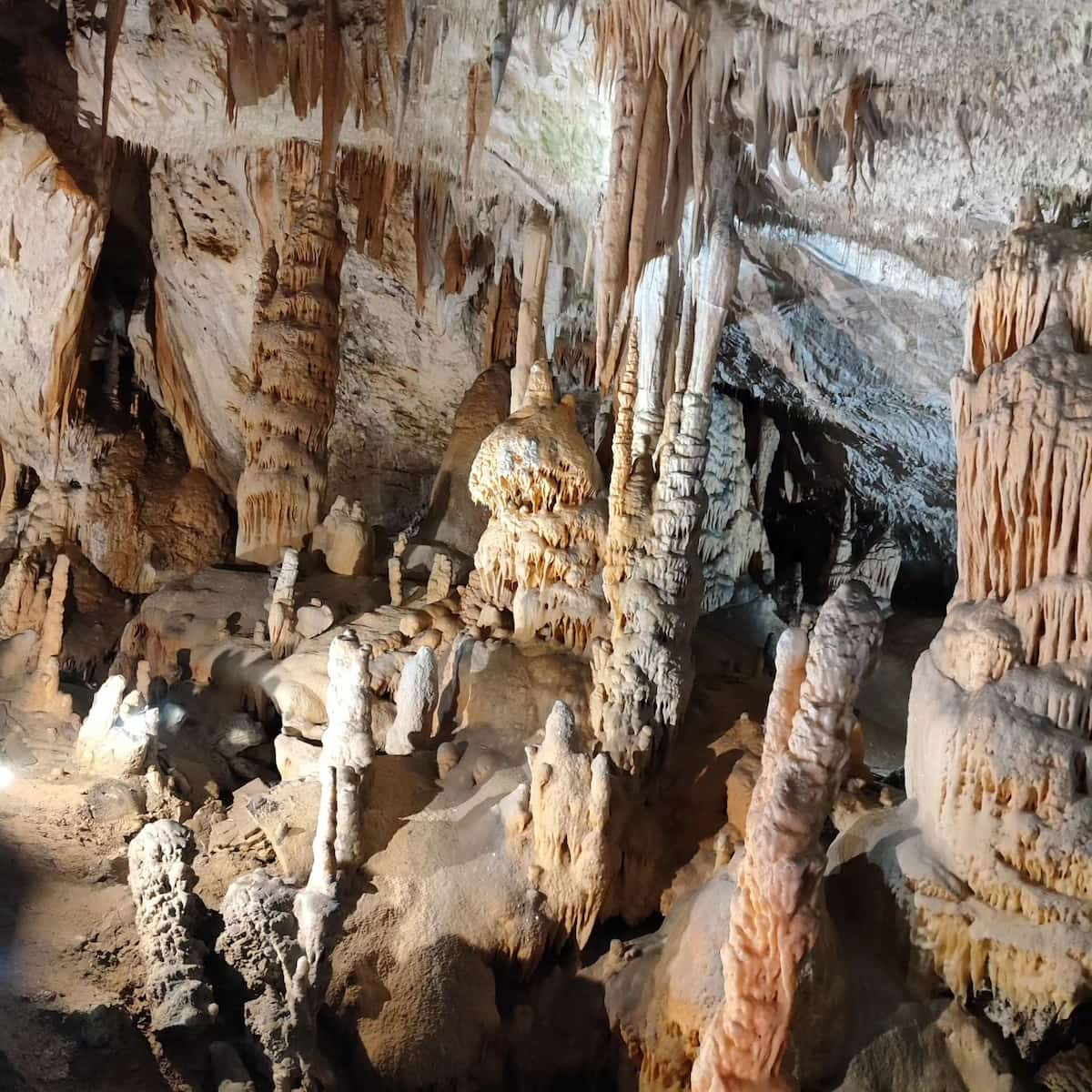
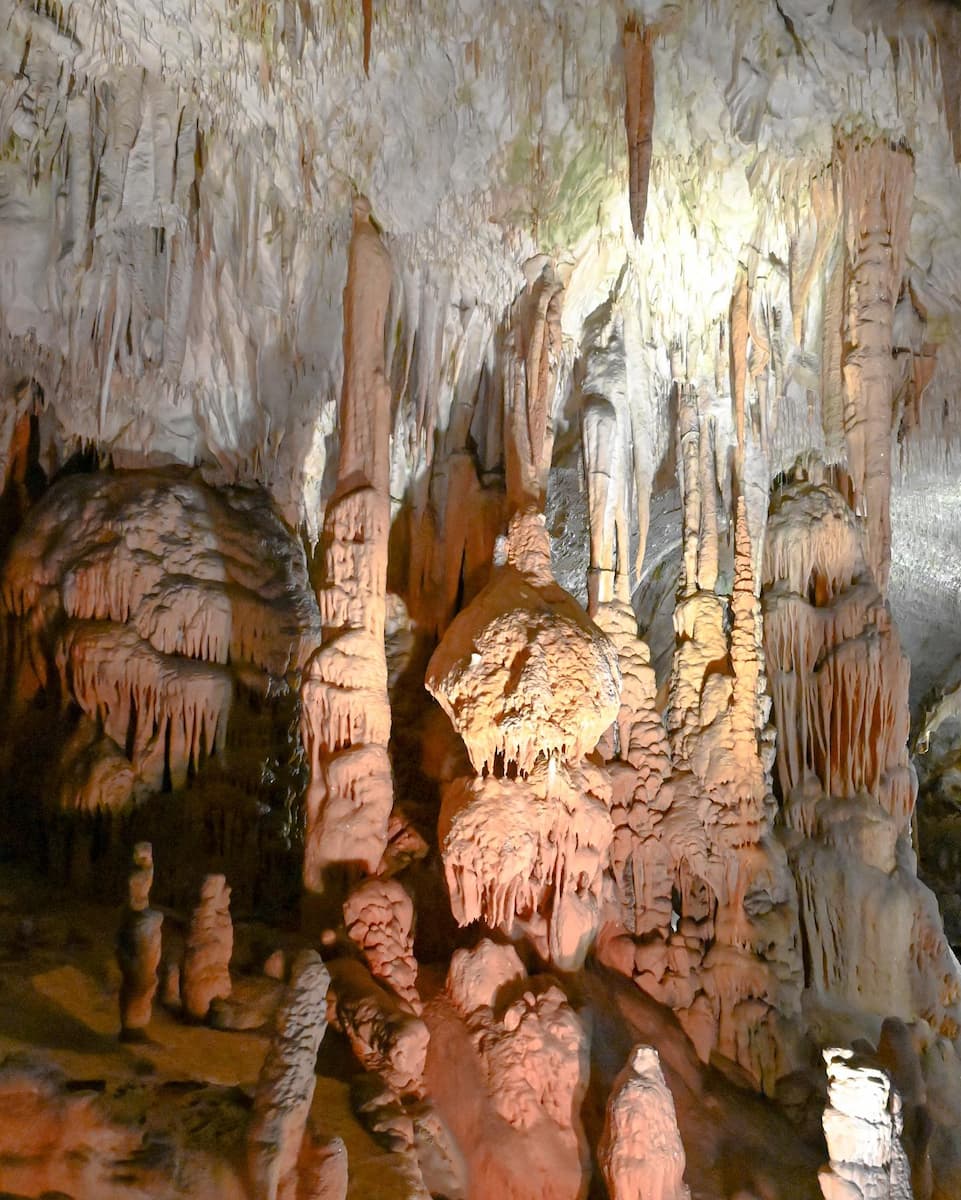

Natural Wonders: The cave’s impressive formations include massive stalactites and stalagmites, along with the famous Brilliant passage and the Gothic Hall. Home to the unique olm (proteus) or “human fish,” an endemic amphibian species that has evolved to live in complete darkness, the cave maintains a constant temperature of 10°C (50°F) year-round.
Time Saver: Book combined tickets for Postojna Cave and Predjama Castle for the best value; visit during off-peak hours (early morning or late afternoon) to avoid tour bus crowds.
⭐ Best activities
- Tour: Postojna Cave and Predjama Castle Tour from Trieste – This fascinating 5-hour tour takes visitors from Trieste to Slovenia’s most remarkable natural and historical attractions. The journey begins at Postojna Cave, one of the world’s largest karst monuments, where guests ride an electric train through a spectacular network of tunnels and galleries, encountering unique cave-dwelling creatures like the famous proteus (olm).
- Ticket online: Postojna Cave & Predjama Castle: Ticket – Leave the city and visit two of Slovenia’s most interesting attractions.
❓ FAQ
What are the must-see attractions in Piazza Unità d’Italia?
Piazza Unità d’Italia, the largest sea-facing square in Europe, showcases magnificent Habsburg architecture including the Palazzo del Lloyd Triestino and Palazzo del Governo. Located just 200 meters from the city center, this historic plaza features the famous Town Hall and offers spectacular views of the Adriatic Sea. The square serves as the perfect starting point for walking tours of Trieste’s medieval architecture.
How can I experience Trieste’s famous coffee culture?
Trieste’s coffee culture is best experienced at the historic Caffè San Marco, a literary café where James Joyce once wrote. The city, formerly the main seaport for the Austro-Hungarian Empire, maintains its reputation as a coffee capital. Traditional cafes around Piazza della Borsa offer authentic cups of coffee served in the distinct Triestine style.
What are the top historical sites in Trieste?
The Cattedrale di San Giusto Martire, dating back to the 6th century, stands as the city’s primary religious site. The Roman Theater, built in the 14th century, provides insights into ancient history. The Faro della Vittoria lighthouse and various structures showcase Trieste’s importance as a port city and its role as a seaport for the Austro-Hungarian Empire.
What guided tours are recommended in Trieste?
Popular guided tours include walking tours through the historic center, visits to the Serbian Orthodox Church, and excursions to nearby attractions like the Škocjan Caves and Predjama Castle. Tours from Trieste often include the Val Rosandra nature reserve and Grotta Hill, perfect for mountain biking enthusiasts.
Is Trieste suitable for English-speaking tourists?
Yes, Trieste is very accessible for English-speaking visitors. Many guided tours are available in English, and the city’s international history as a port town means English is widely understood, especially in tourist areas and major attractions.
How can I best explore the city?
While rental cars are available, walking tours offer the best way to explore Trieste’s compact historic center. The city’s main attractions, from Piazza Grande to the medieval architecture, are within comfortable walking distance. For destinations north of Trieste, guided tours provide convenient transportation options.
